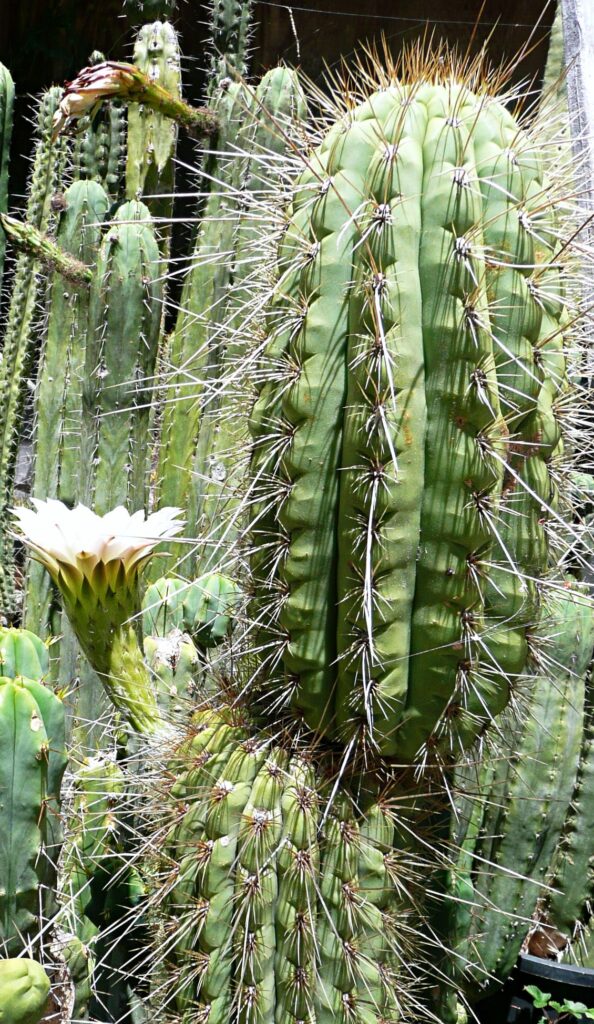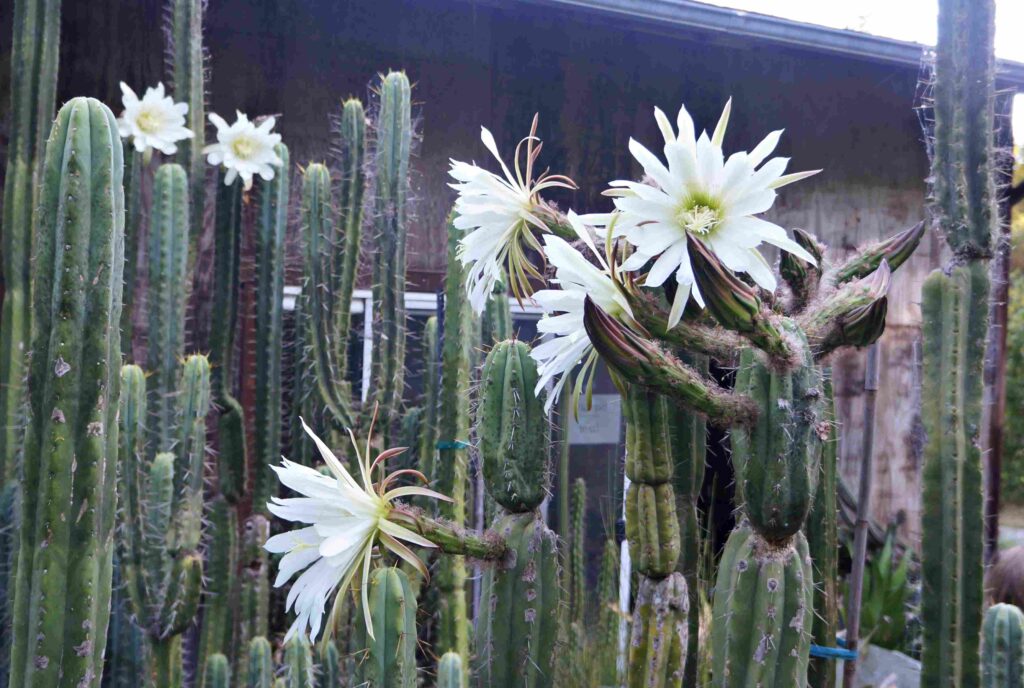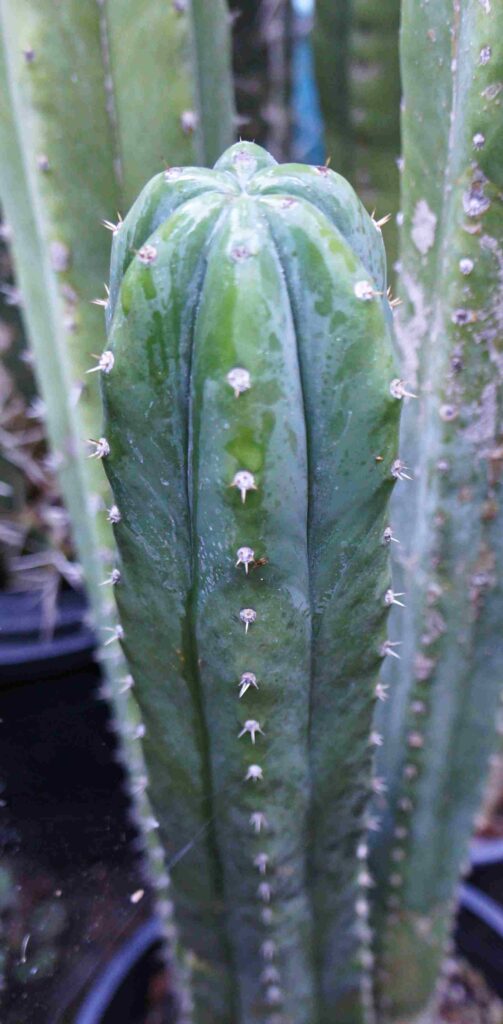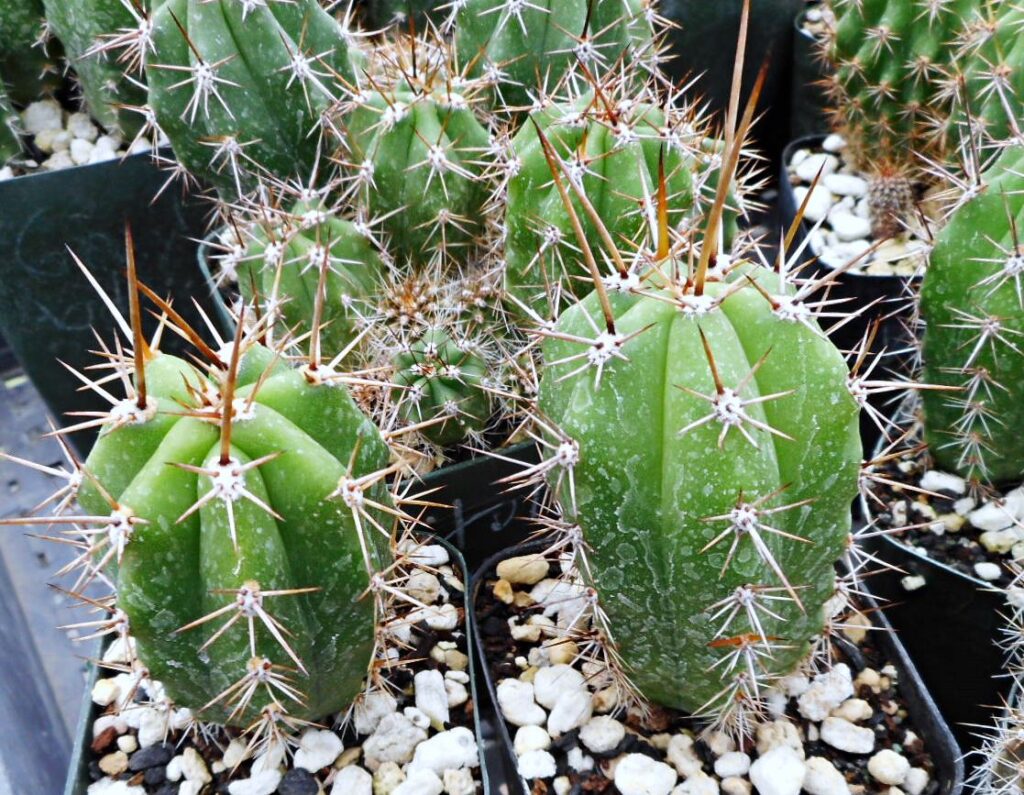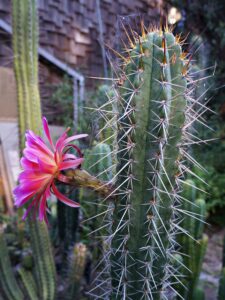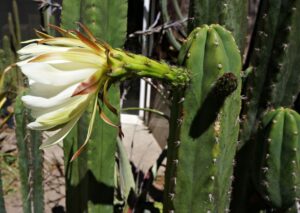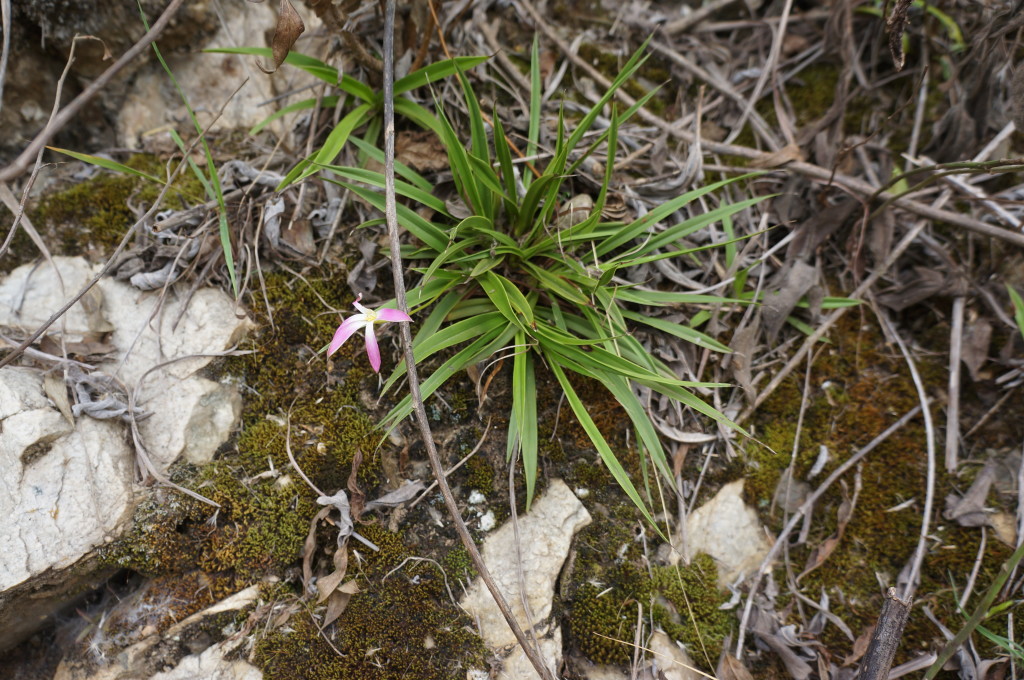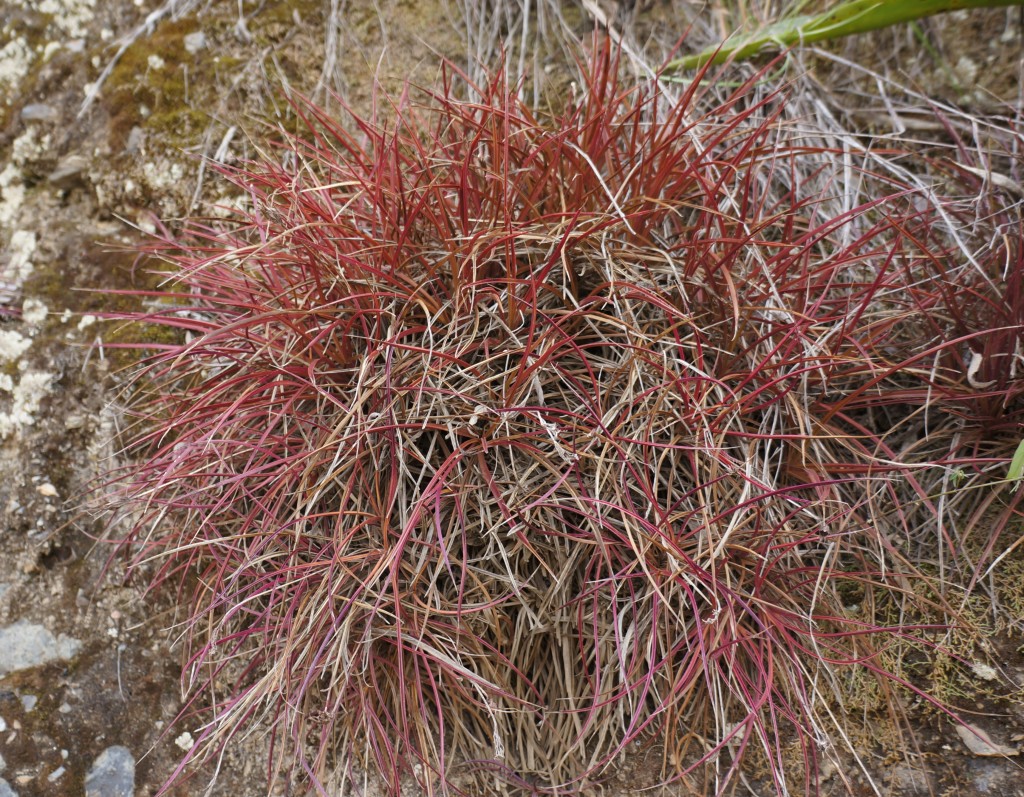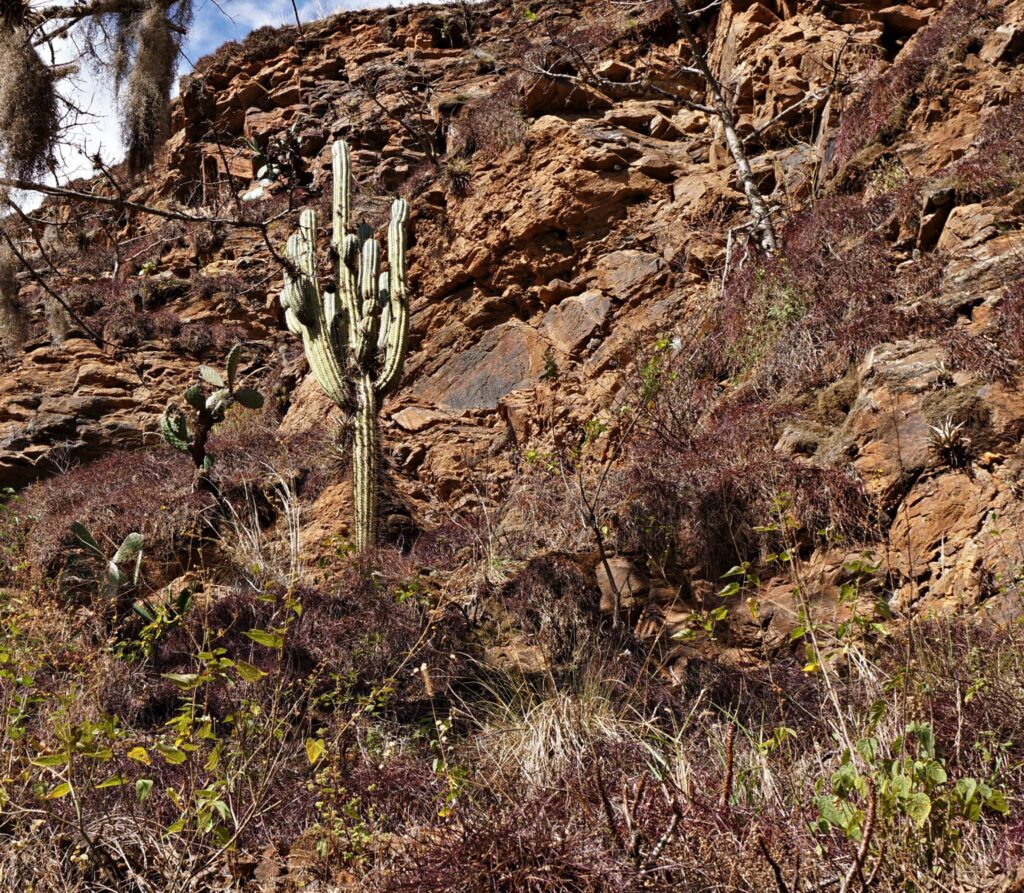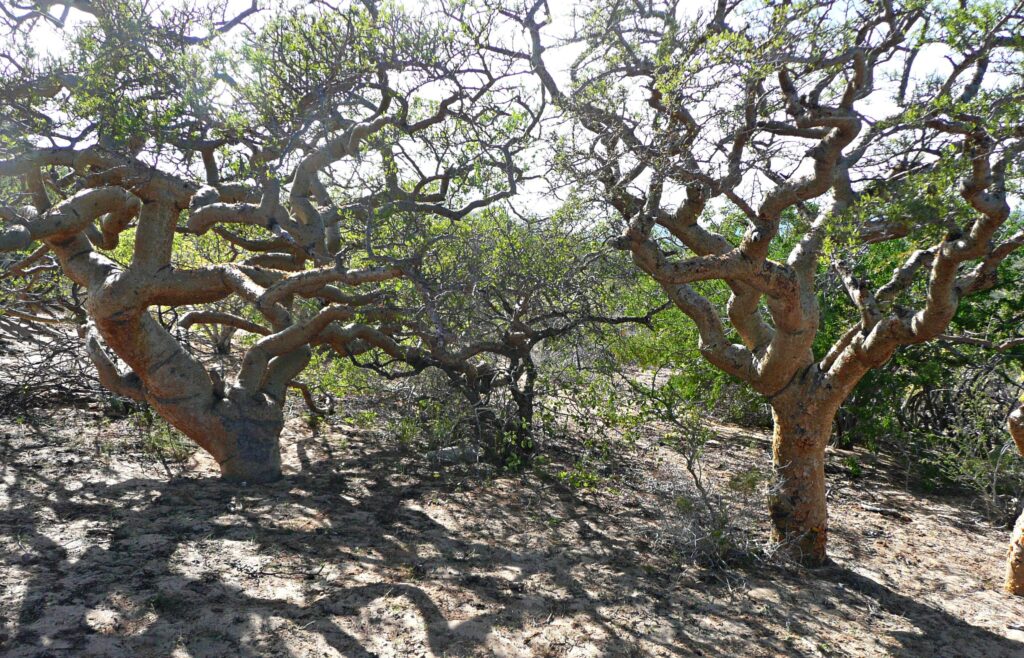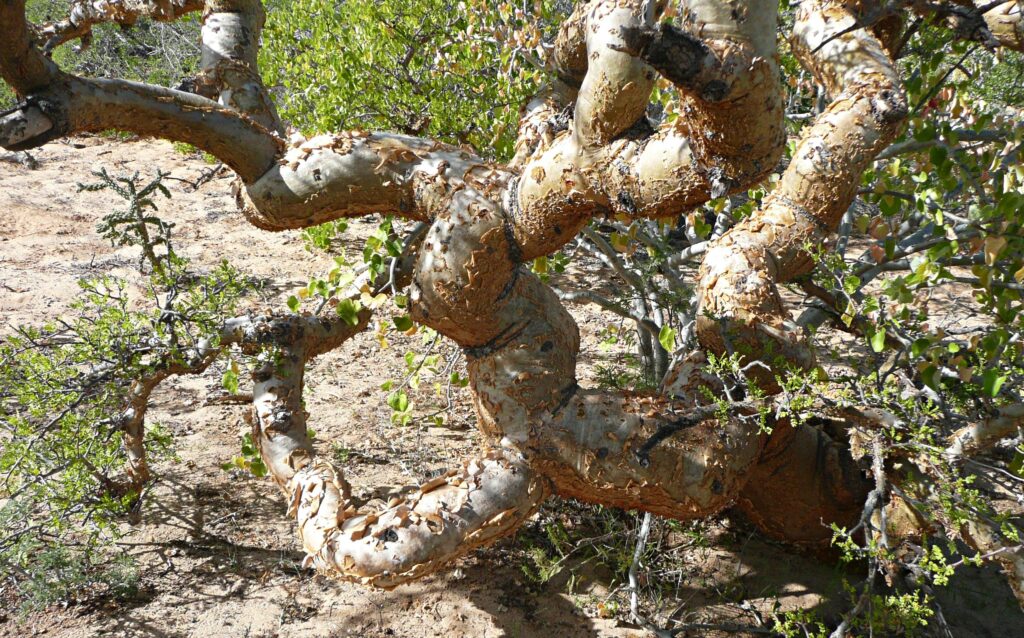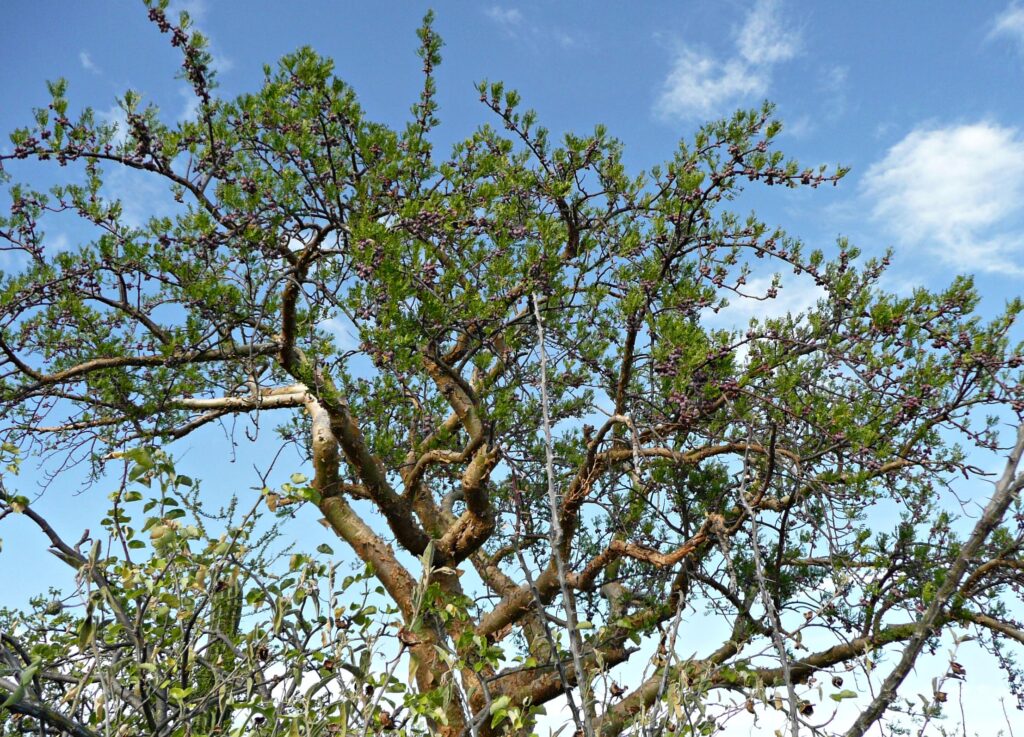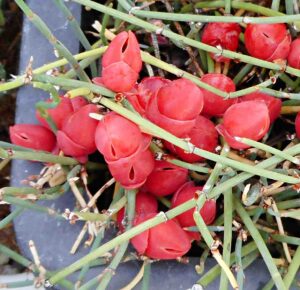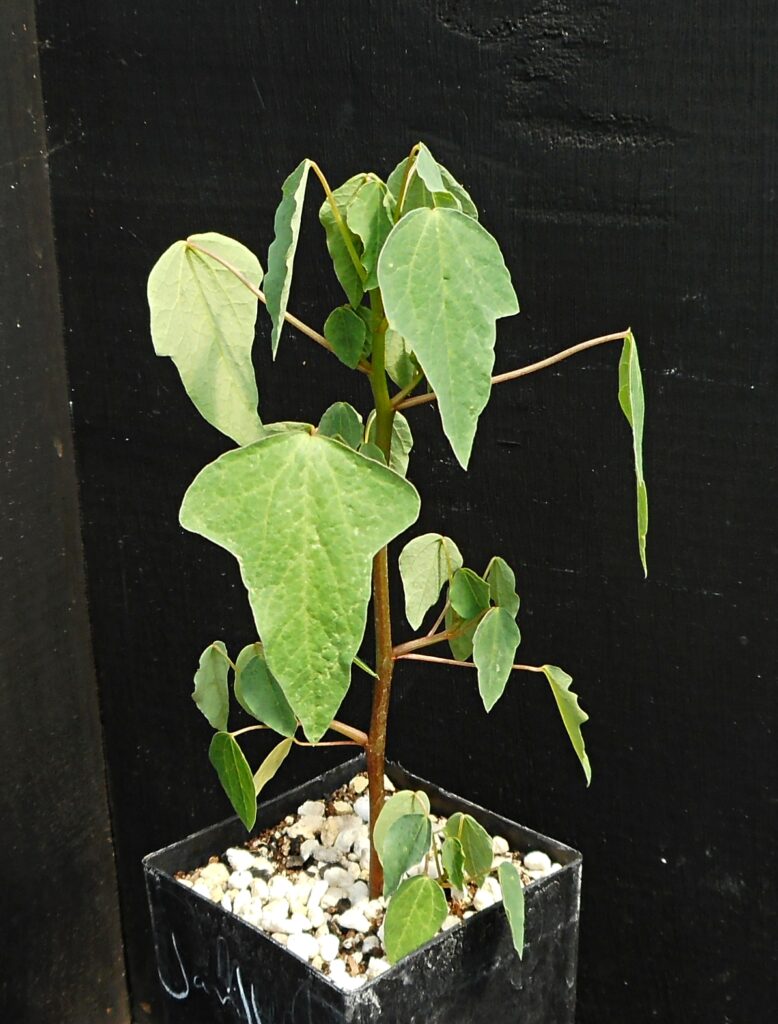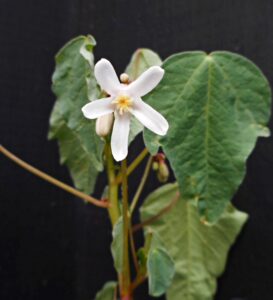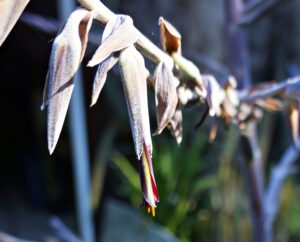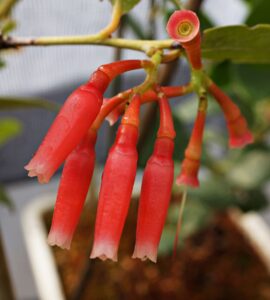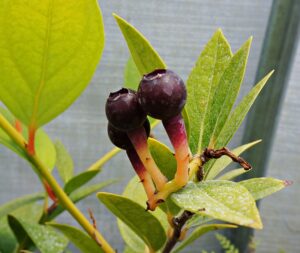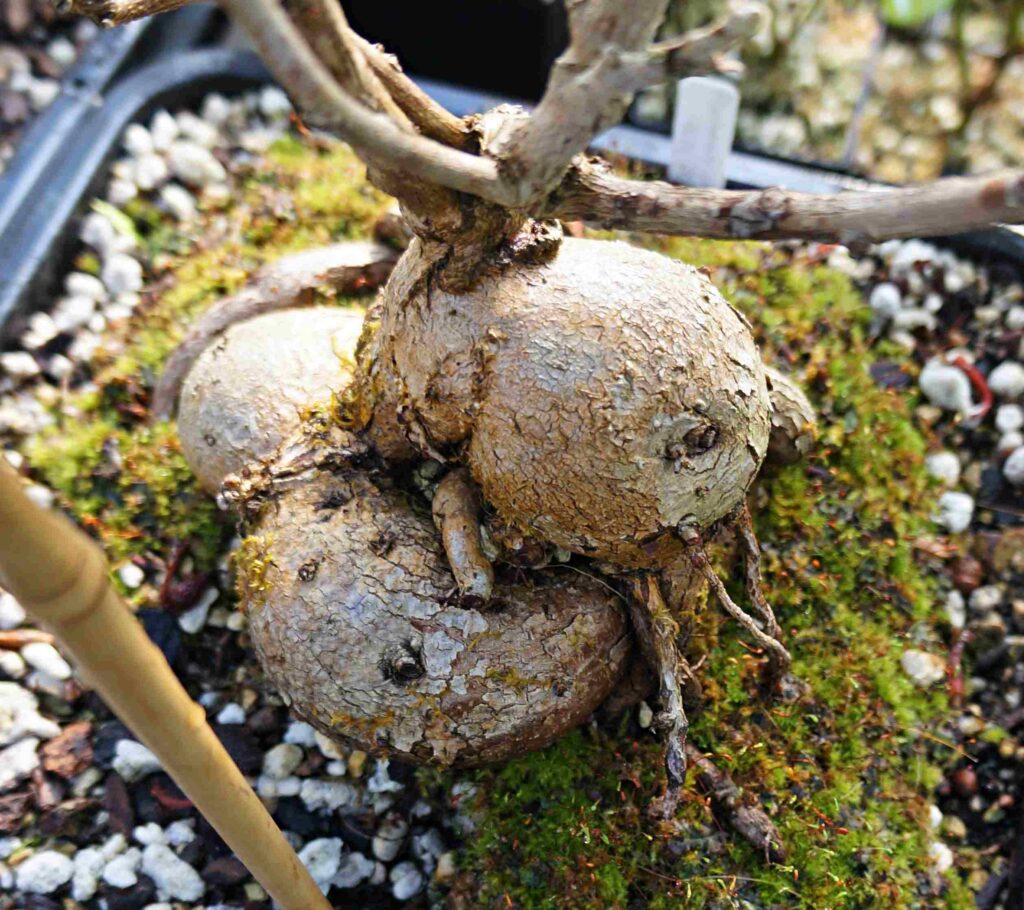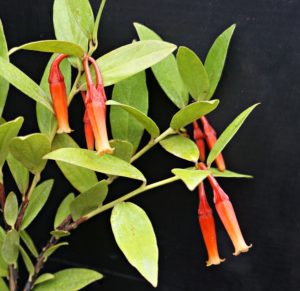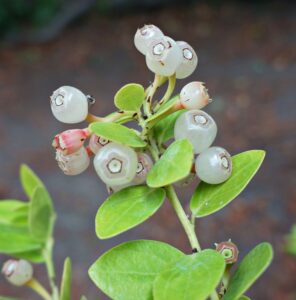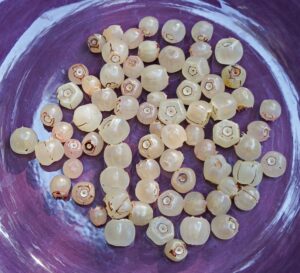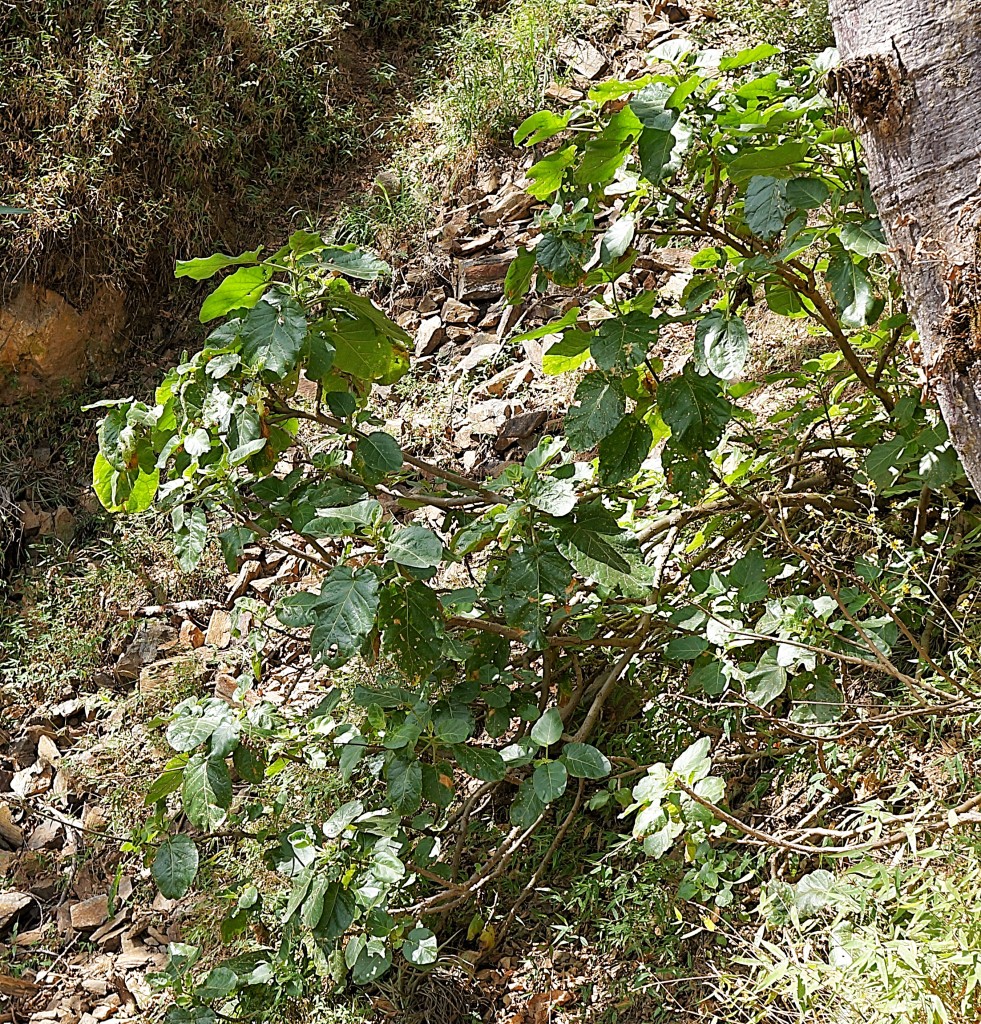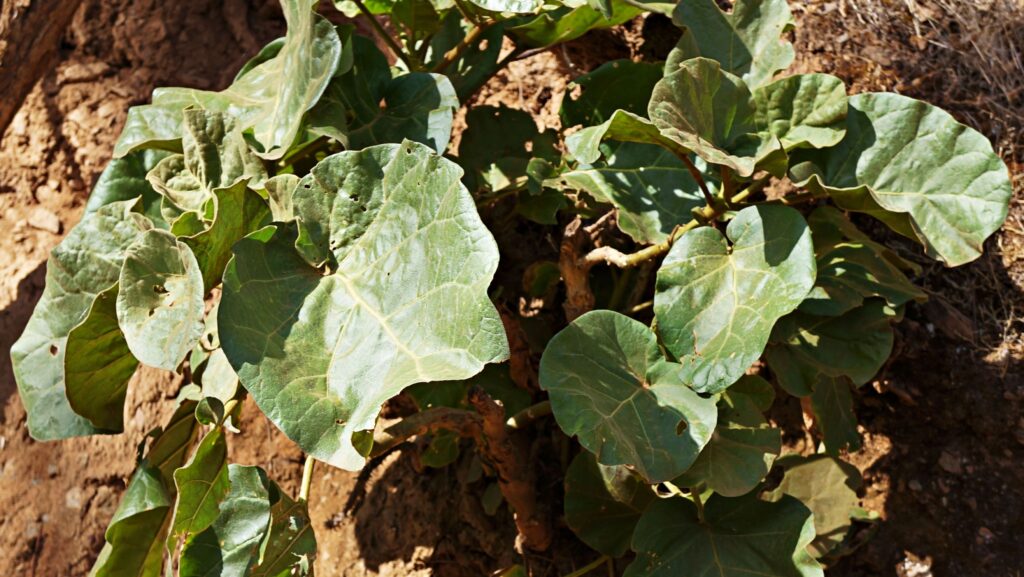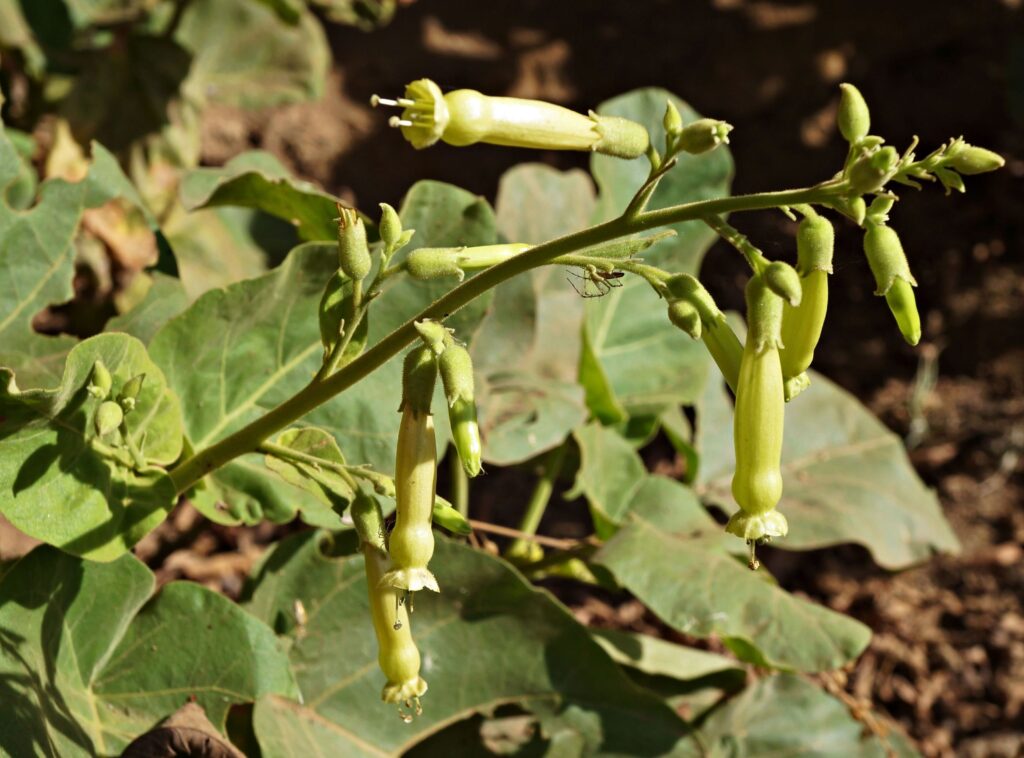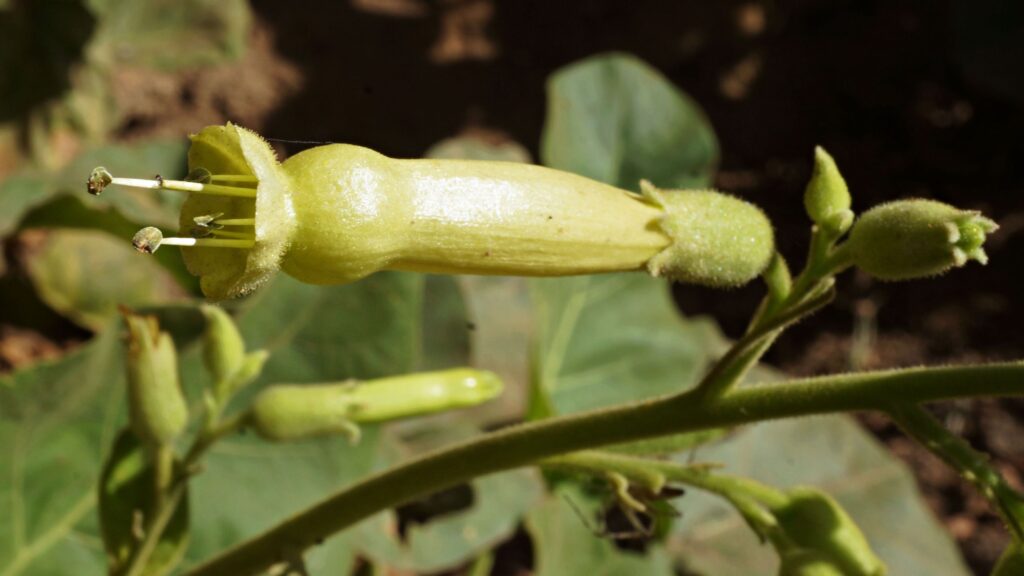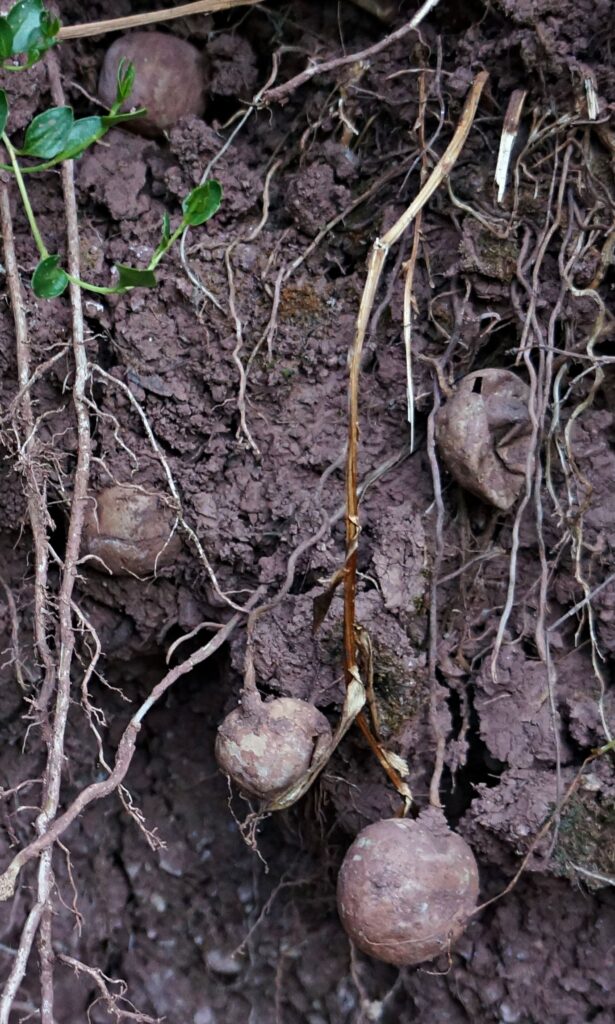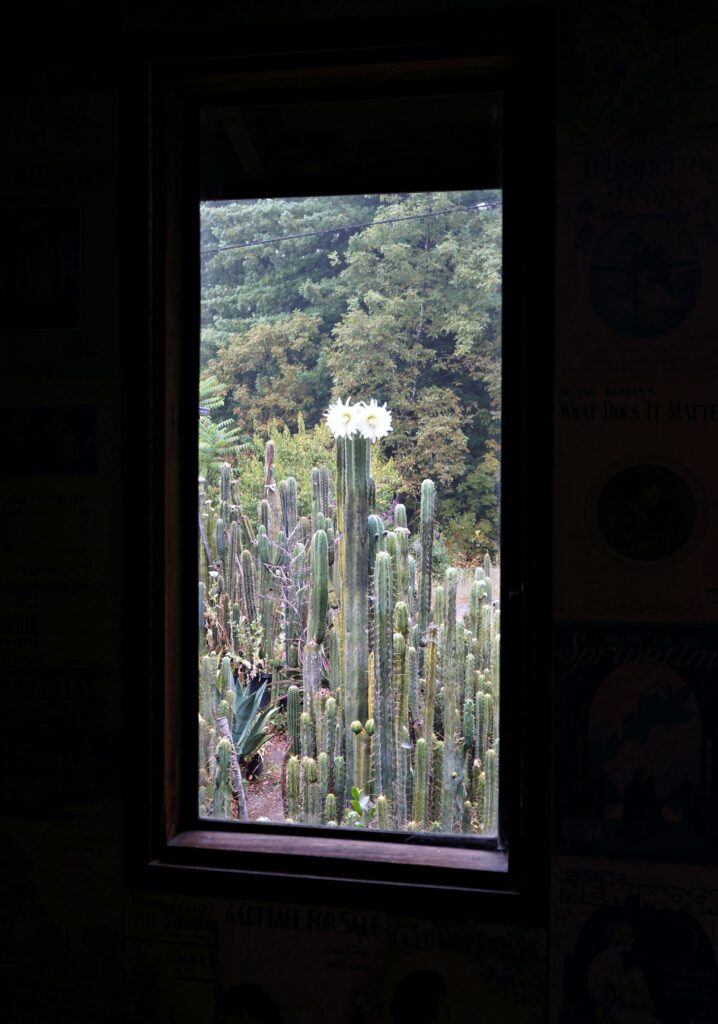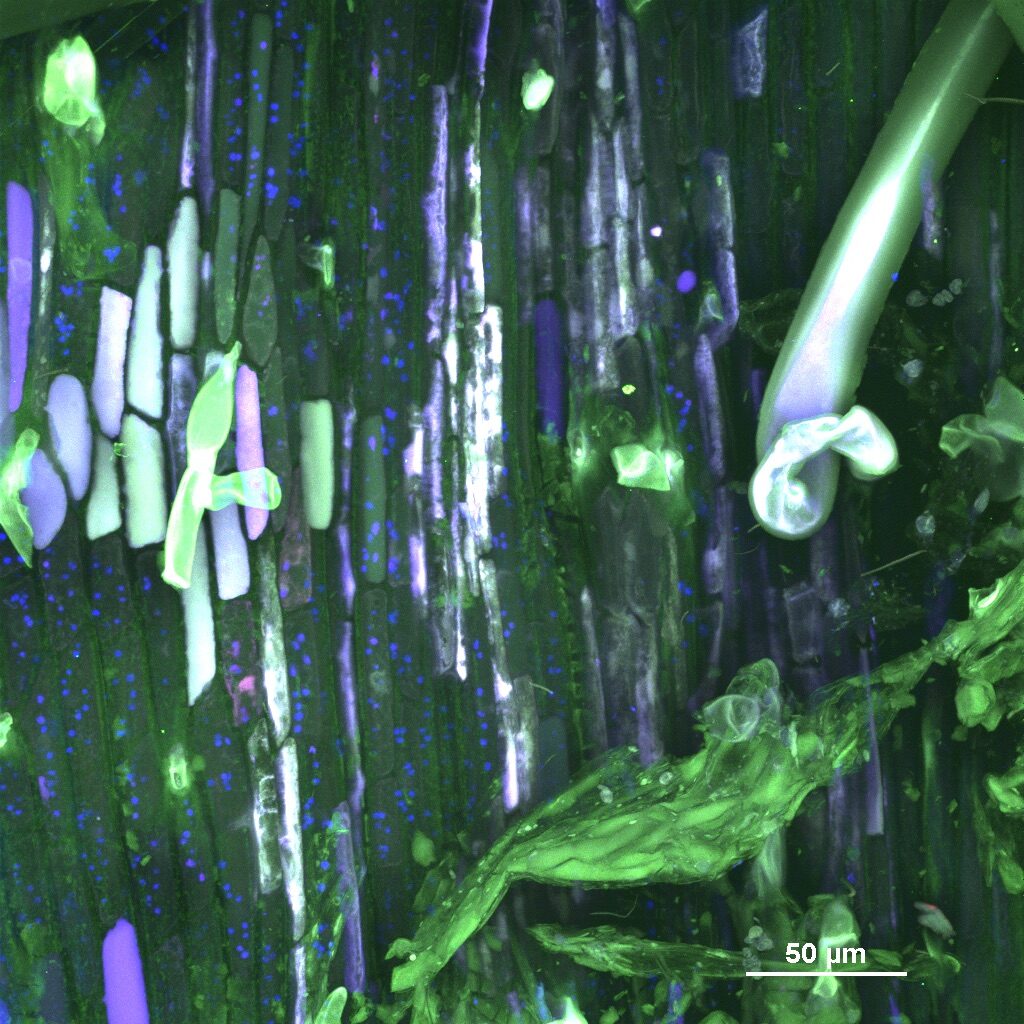 Polylepis incarum scanned at St. Lawrence University’s Microscopy & Imagery Center, from Microcosms: A Homage to Sacred Plants of the Americas (https://www.microcosmssacredplants.org/), used with the permission of Jill Pflugheber & Steven F. White, © 2023.
Polylepis incarum scanned at St. Lawrence University’s Microscopy & Imagery Center, from Microcosms: A Homage to Sacred Plants of the Americas (https://www.microcosmssacredplants.org/), used with the permission of Jill Pflugheber & Steven F. White, © 2023.
Conservation of Resilient Biodiversity
through Propagation, Dissemination and Education
Website updated 3/17/24
The past 6 weeks have been arduous.
February was more chaotic than I can convey — a lost month.
Storms downed dozens of trees, causing repeated power outages (up to a week long), some flooding, closed roads, damage to the nursery, plant losses, etc.
The last few weeks have added family illness and a medley of computer issues.
All this comes on top of the difficulties of 2023, plenty still unresolved…
Once again this puts us in a difficult position, unsure of the most viable route forward for SS…
I must beg your patience once more as we work to assess the extent of the plant losses, stabilize damage, and figure out what this means for our offerings this year.
Due to repeated power outages and tech problems, we suspect we lost a bunch of emails in February.
I’ve been unable to keep up with the incoming email we have received. I endeavor to get to this as soon as I can, just please remain patient.
Currently the most direct email is benkamm@monitor.net
We are working to ship outstanding orders this week.
We also hope to update the Specimen List and at least resume taking orders from that list.
Check back for further updates.
___
The SPECIMEN PLANT LIST updates coming soon… See down further down this page ↓
___
~ New BOOKS + Rare & Used Editions near the bottom of this page ~
___
♣ Last chance at rare BOTANICAL PRODUCTS (resins, roots, oil) listed below Books ♣
_________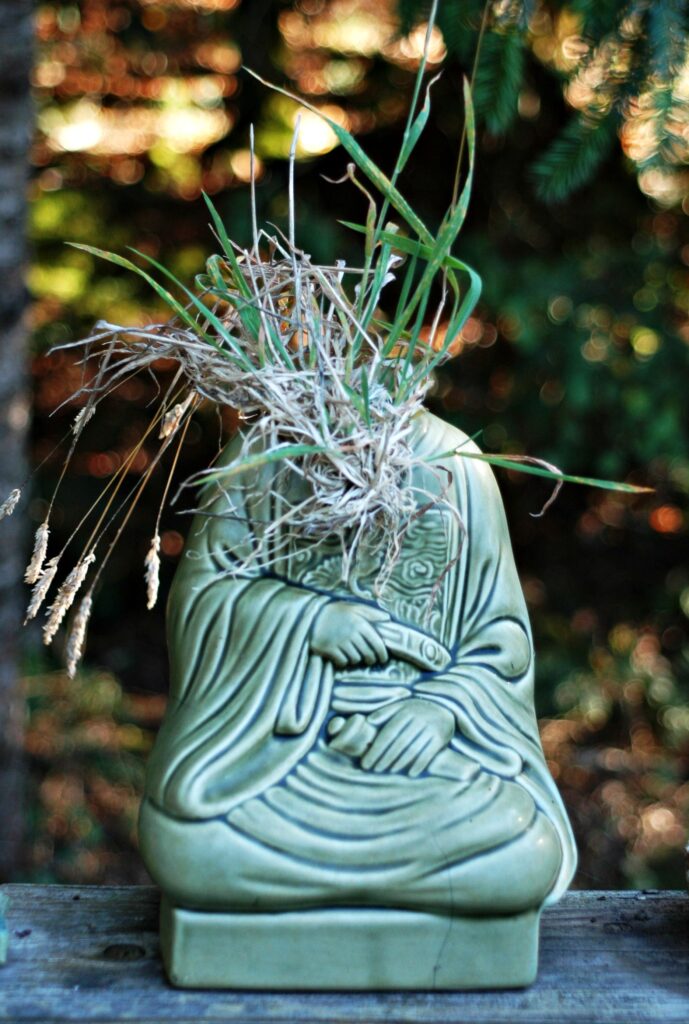
PDF downloads for each section of our Retail Catalog:
( Updated 3/27/23 – these replace any previous version and web listings.)
Note: due to the intractable events of recent years, and the losses and extensive damage to many plants these past seasons, these lists are primarily for reference right now. We’re only shipping a limited number of plants from these retail lists; currently, we are not shipping any seed. For now, we are mainly taking orders from our Specimen Plant List [updated monthly]. This will continue until our retail stock has sufficiently recovered and our lists have been adequately revised — we hope to update the retail PDFs and resume shipping seed sometime in 2024.
Many plants on the PDFs are not available as listed; please email to confirm availability –
sacredsucculents@hushmail.com or benkamm@monitor.net
Cactaceae
Trichocereus List
Other Succulents & Xerophytes
Andean Ethnobotanical Offerings
Andean Tubers
Medicinals, Edibles, CA Natives
Books & Products
Order Form
2024 Shipping Schedule* for Retail Catalog Orders
Winter/Spring: We are not taking seed orders until a later date. Email all retail plant order inquiries for availability, price and shipping.
*The exception to the limited shipping schedule is:
Books & Products, Specimen List Plants, & Auction Plants—these orders ship year round.
We encourage that all orders be emailed as inquiries before payment is sent—
sacredsucculents@hushmail.com or benkamm@monitor.net
I can then confirm stock, price and give the estimated ship time for your order.
Due to large volumes of email and nursery demands — it often takes me a few days to respond.
Picking up an order from our physical location in Occidental can be arranged, but we have not yet resumed any nursery visits or tours.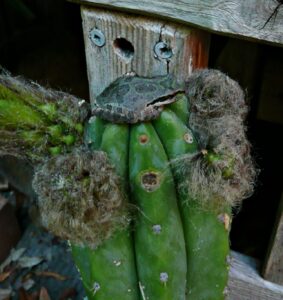
NEWS:
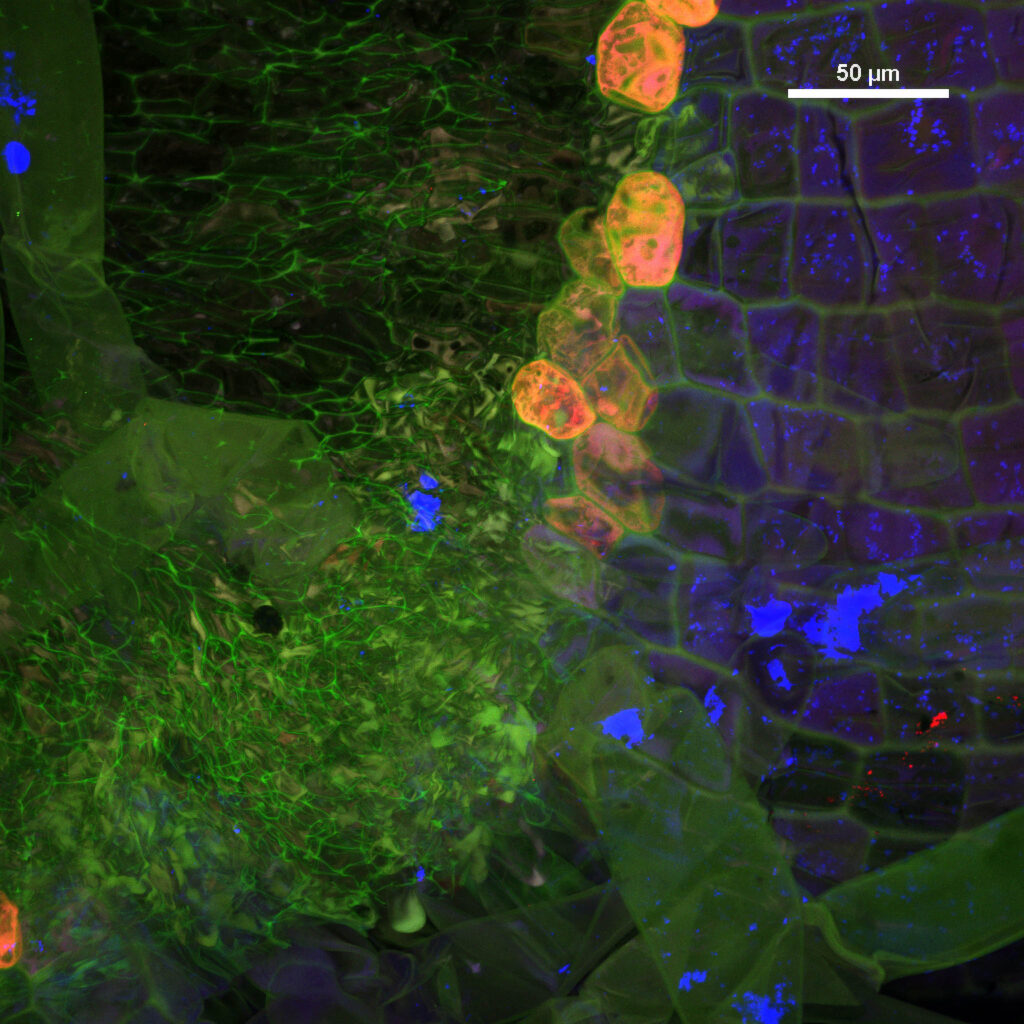 Trichocereus pachanoi scanned at St. Lawrence University’s Microscopy & Imagery Center, from Microcosms: A Homage to Sacred Plants of the Americas (https://www.microcosmssacredplants.org/), used with permission of Jill Pflugheber & Steven F. White, © 2023.
Trichocereus pachanoi scanned at St. Lawrence University’s Microscopy & Imagery Center, from Microcosms: A Homage to Sacred Plants of the Americas (https://www.microcosmssacredplants.org/), used with permission of Jill Pflugheber & Steven F. White, © 2023.
For several years I’ve been contributing plants to Steve White and Jill Pflugheber’s fascinating scientific art project, Microcosms — wondrous images of American sacred plants produced through confocal microscopy. The site was just updated — a few sections now feature my Andean photos, with more to come.
You can read my commentary on the project: https://www.microcosmssacredplants.org/commentary/ben-kamm/
I’ve also contributed an article on the Andean keystone tree Polylepis (A larger article is in the works, but the hectic summer and my daughters bringing covid home from camp interrupted, so they’ve posted this smaller [quite literally fever written!] piece as a ‘placeholder’) – https://www.microcosmssacredplants.org/plant/polylepis-spp/
Peruse the comments of other colleagues such as Neil Logan, Manolo Torres, Dennis McKenna, Luis Eduardo Luna, etc.: https://www.microcosmssacredplants.org/commentaries/
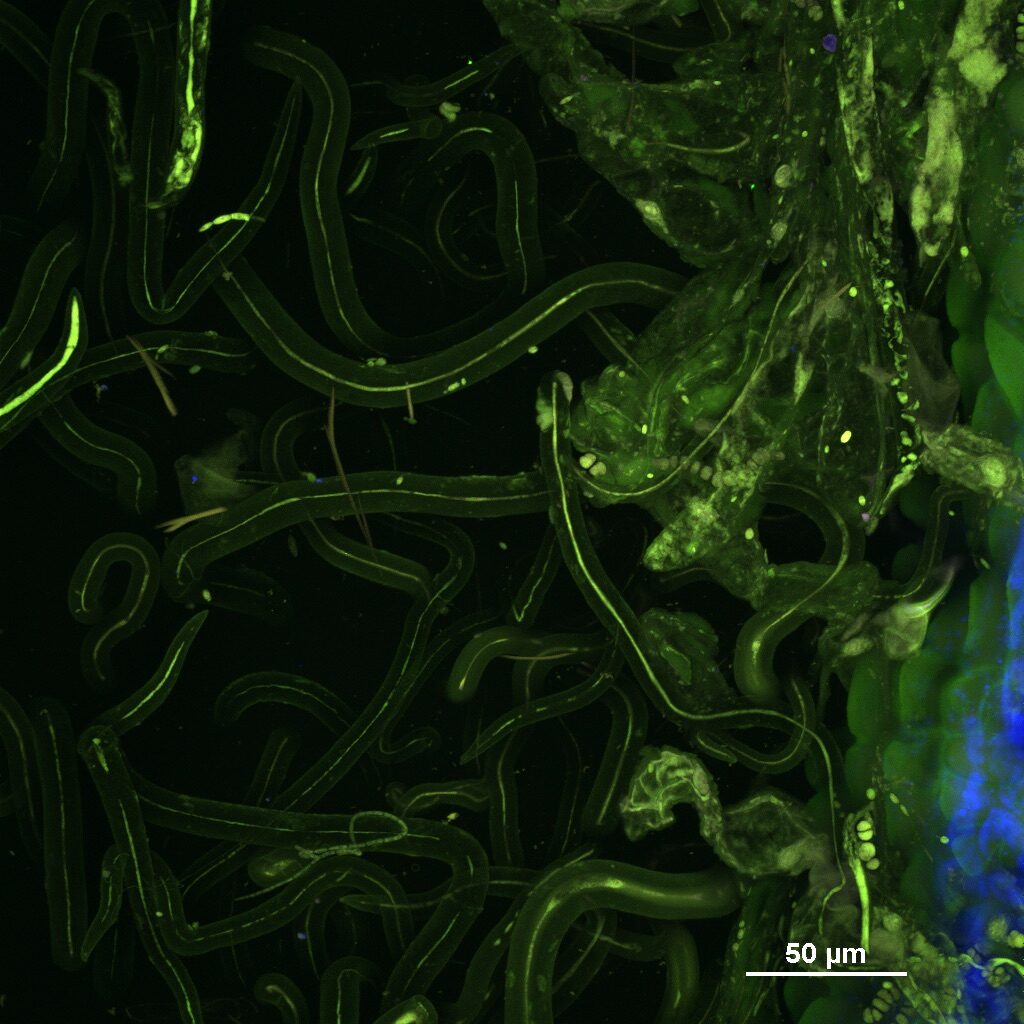 Polylepis incarum scanned at St. Lawrence University’s Microscopy & Imagery Center, from Microcosms: A Homage to Sacred Plants of the Americas (https://www.microcosmssacredplants.org/), used with the permission of Jill Pflugheber & Steven F. White, © 2023.
Polylepis incarum scanned at St. Lawrence University’s Microscopy & Imagery Center, from Microcosms: A Homage to Sacred Plants of the Americas (https://www.microcosmssacredplants.org/), used with the permission of Jill Pflugheber & Steven F. White, © 2023.
~~~~~~~~
Herpetological Kin: in addition to the diversity of rare and endangered plants here, the nursery and gardens also provide habitat for a medley of ‘wildlife’. We rejoice that the herpetological denizens are really thriving in recent years—our native treefrog (Pseudoacris sierra) is the most abundant resident of the nursery along with blue-belly lizards (Sceloporus occidentalis); we also have the more solitary alligator lizards (Elgaria multicarinata) and the secretive blue-tailed skinks (Plestiodon skiltonianus)—all of the lizards have taken to breeding and overwintering in the big greenhouse. We see a medley of small snakes here: striped racers (Coluber spp.), ring-necked (Diadophis punctatus amabilis), gartersnakes (Thamnophis spp.), sharp-tailed (Contia spp.), the occasional gophersnake (Pituophis catenifer), and my daughters’ favorite—the shy and gentle rubber boa (Charina bottae). The nursery and environs also provide habitat for worm-like slender salamanders (Batrachoseps attenuatus), friendly faced Ensatinas (Ensatina eschscholtzii), rough-skinned newts (Taricha granulosa) with their affable demeanor, orange bellies and highly toxic skin, the occasional arboreal salamander (Aneides lugubris), and the intimidating giant Pacific salamander (Dicamptodon ensatus). A large Sequoia tree that toppled in our stretch of creek last year is now the preferred basking spot for our local Western ‘pond’ turtles (Actinemys marmorata)—we’ve observed up to 6 at a time sunning themselves, from 1.5″ juveniles to 9″ seniors!
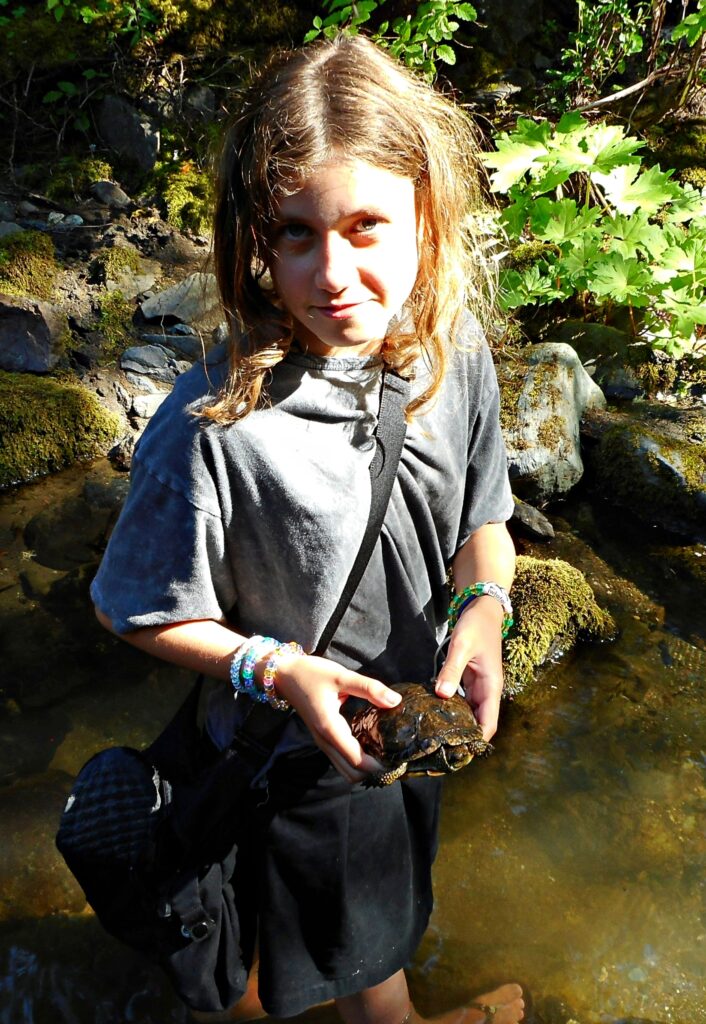 Ember with turtle
Ember with turtle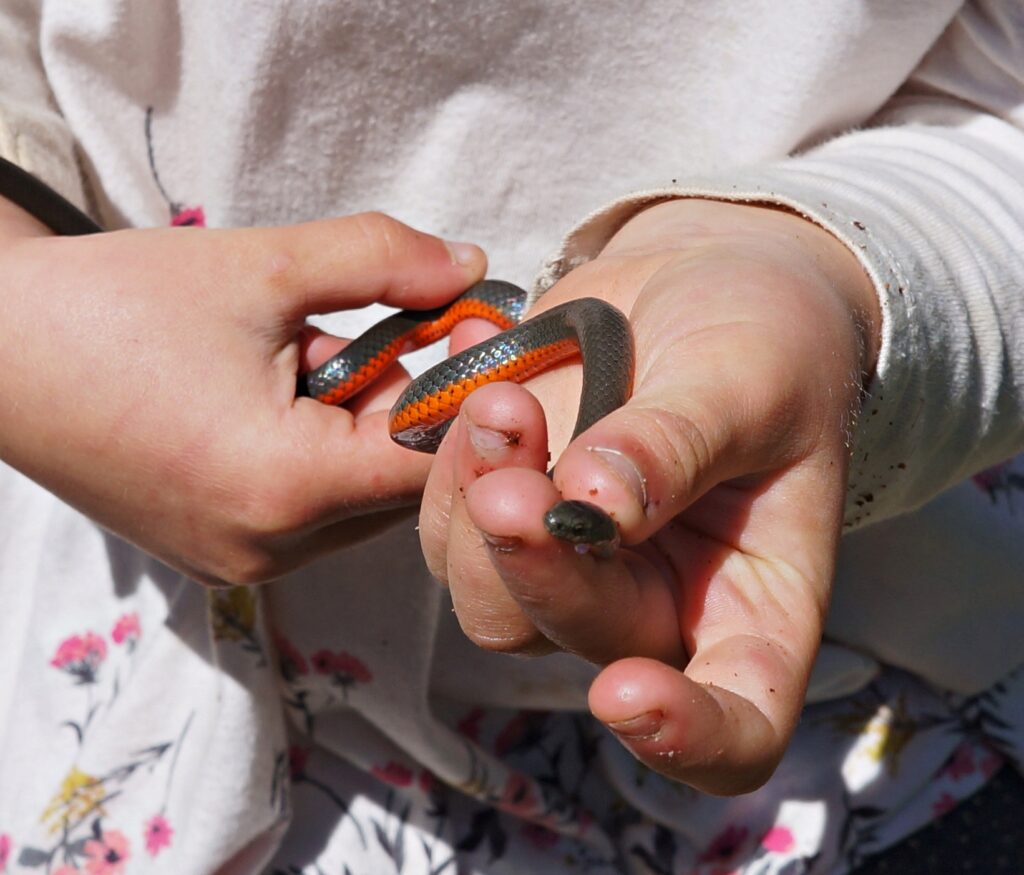 Diadophis punctatus amabilis
Diadophis punctatus amabilis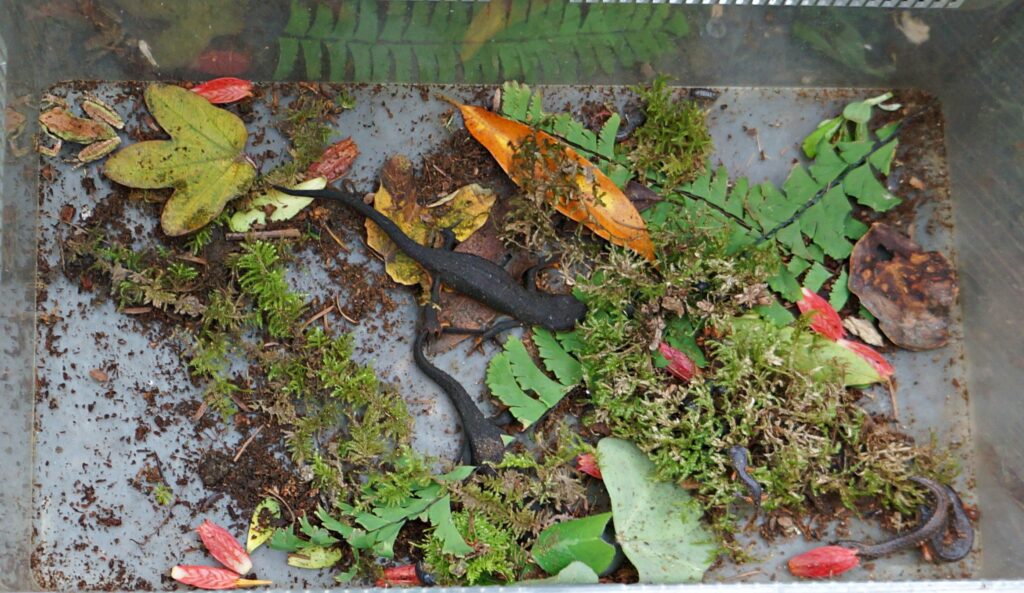 A child’s box of delights: rough-skinned newts, Ensatinas, slender salamanders and tree frog!
A child’s box of delights: rough-skinned newts, Ensatinas, slender salamanders and tree frog!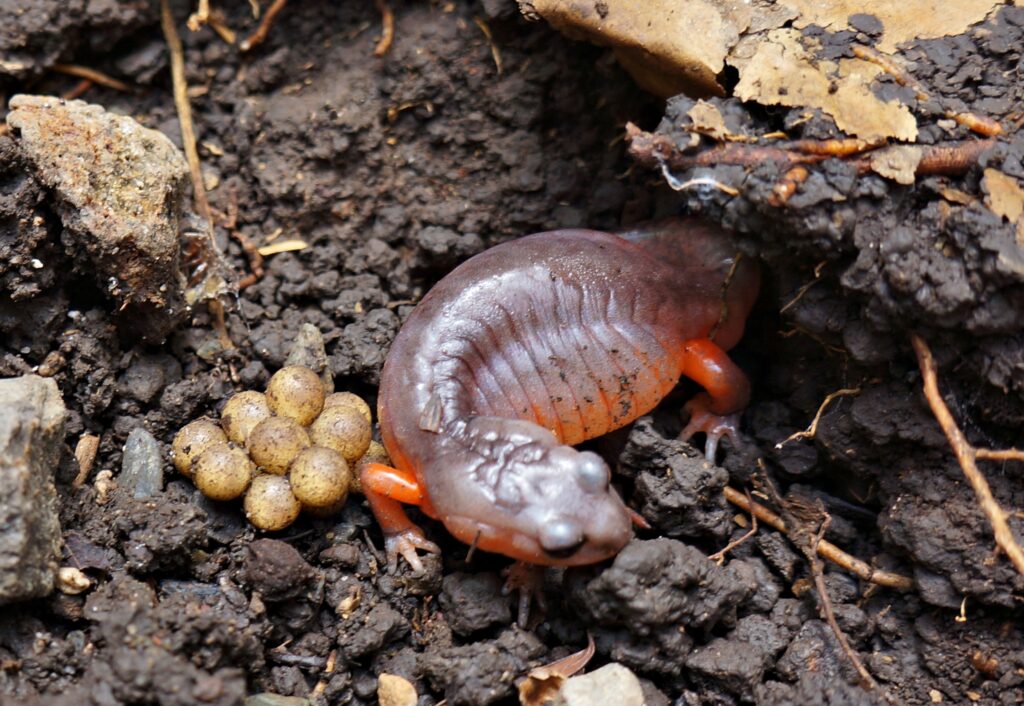 Ensatina with eggs
Ensatina with eggs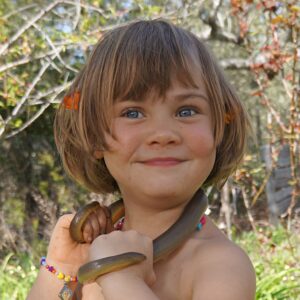
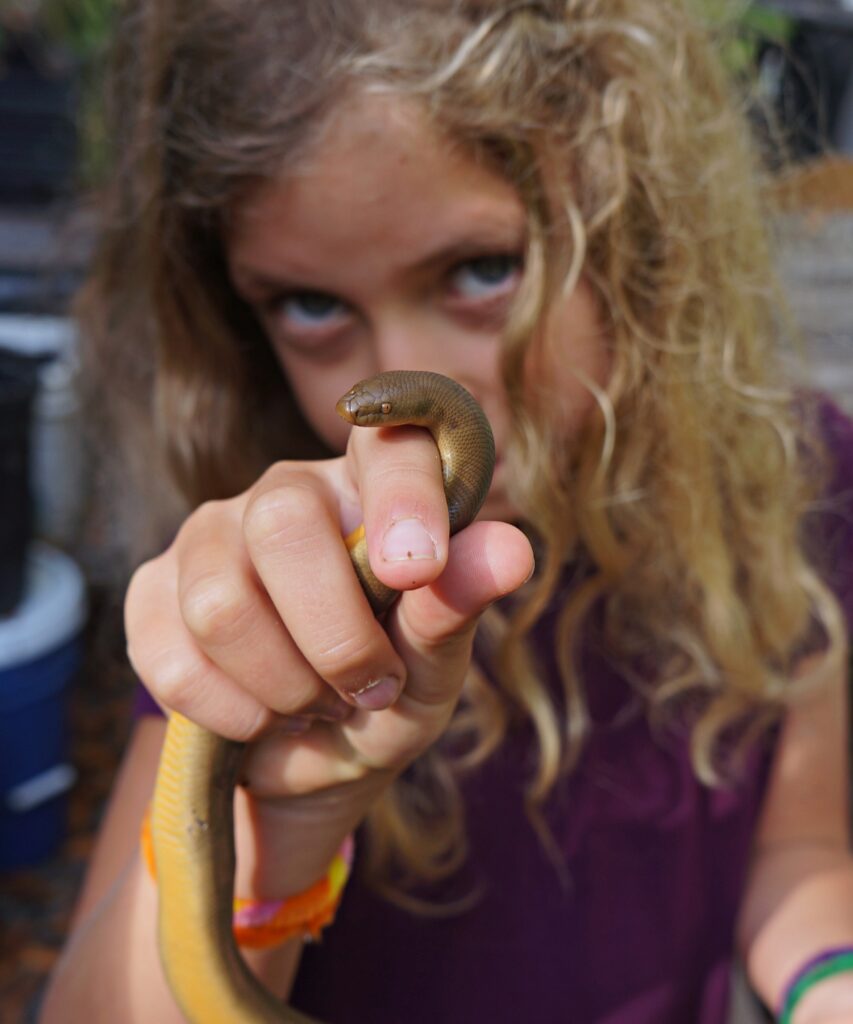 Kiera & Ember with Charina bottae
Kiera & Ember with Charina bottae
LITTLE, BIG
The past 3 years I’ve been volunteering my help to a very special book project — an archival, art book edition of our friend John Crowley’s beloved novel Little, Big illustrated by Peter Milton, see our webpage. Winner of the World Fantasy Award when it was first published in 1981, the novel is esteemed by a broad diversity of fans — from Yale literary critic Harold Bloom to ethnobotanist Kat Harrison, from musician Maynard James Keenan to acclaimed storyteller Ursula K. LeGuin and psychedelic philosopher Terence McKenna. For many readers Little, Big is more than a novel, it is an an enchantment, an alchemical engine of the imagination. Publishing this unique new edition has been a 20 year saga, stalled by sundry issues. Recently I’ve had the pleasure of corresponding with celebrated fantasist Neil Gaiman, who has become a major supporter of the project, along with my friend and counterculture historian Erik Davis. Their generosity has helped revivify the project and allowed printing to finally begin in 2022. The project’s architect and publisher, Ron Drummond, had a stroke June 2022 and since then book designer John D. Berry and myself have been tasked with overseeing the last stage of production and making sure all is in order to distribute books. Just updating the 18 years of customer records proved a considerable task; my volunteer work since summer 2022 has almost become a 2nd full time job. We are excited to report that the project is nearly complete; the hardcover edition is now shipping, but selling fast — order a copy while you can!
The book can be ordered through: https://store.deepvellum.org/products/little-big
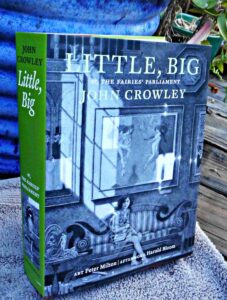 ~~~~~~
~~~~~~
NURSERY NEWS:
12/8/23 It has been an unusual and erratic autumn — we’ve had early rains, early heavy frosts and late heat spells… all of which have continued to create new challenges in the nursery. After minimal trouble since last winter, this week a pair of our native Dusky-footed woodrats mowed a tray of Passiflora, half our Lapageria stock; they snipped a batch of Ilex vomitoria & Philesia seedlings and several rare Vaccinium, Gaultheria, and Pernettya. Sigh. We recovered some of the cut stems and will attempt to root, but this is another setback to future offerings.
The SPECIMEN PLANT LIST is updated for December, see partway down this page. The final and largest update of the year, we’ve added many new cacti & succulents, unique medicinals, Andean species (including a medley of rare Ericaceae) and our current stock of Andean Tubers. This is where we’ve listed a selection of the currently available retail plants. We’ve also posted the last of some Botanical Products — balsam resins, Goldroot, Muña oil, and a selection of New, Rare, and Used BOOKS near the bottom of this page. Several books are currently on sale, including Jonathan Ott’s essential titles. Some of the singular rarities we’ve listed come from the library of our late friend, the celebrated ethnobotanist Richard Felger.
10/30/23 We’re navigating the increasingly manic weather that seems to have become the norm — just over a week ago it was suddenly hot again, in the high 90s F, then 24 hours later it was raining and the temperature dropped nearly 40 degrees! Since then it has gotten colder; the last few mornings we were hit by rather significant frost — about 3 weeks earlier than we usually see this frozen. This damaged a bunch of leafy plants and has me scrambling to get the tender species moved into the greenhouses, the greenhouses damaged by last winter’s storms reskinned, and the nursery ready for what is predicted to be another wet winter.
10/6/23 This has proven to be a most calamitous year.
We lost most of the last 2 months and S.S. has been virtually ‘shut down’ during this time. Our eldest daughter brought COVID home from camp at the beginning of August; the girls recovered quickly, but I was hit pretty hard — it took me nearly 6 weeks to get my energy back and 8+ weeks on now I’m still experiencing some exasperating cognitive impairment. There was a period of extreme, flash heat while we were incapacitated with COVID — this caused a fair amount of damage within the nursery, even to some of the Trichocereus, which had barely recovered from winter injuries. The irrigation system recently installed in some sections of the nursery prevented all out catastrophe. We can say, unequivocally, that we’ve lost more plants in 2023 than any other year in Sacred Succulents 25 year history. We’ve also accomplished less propagation this summer than any I recall. We’re uncertain to what extent this will impact our offerings in future seasons, but right now it means our retail lists are in need of significant revision — a task which I’m unlikely to accomplish until this winter. In the interim, we’re not handling seed orders until sometime in 2024 and availability should be confirmed via email for all retail plant orders.
7/27/23 Months later and we are still seeing new evidence of damage from last winter’s extreme weather. Until recently, this had been the foggiest and coolest summer we’ve had in over a decade. This has made recovery and cleaning up the winter damaged Trichocereus problematic and new growth slower than any year I can recall! We’ve also been peppered with sporadic sudden heat spikes—these extreme temperature swings have been hard on many plants. We’re discovering more plants failing to wake from dormancy and damage among some of the species in the greenhouses, greater than anything we’ve seen before. In the last several months we’ve lost about 70% of our Andean Echeveria, over a dozen of our large Burseraceae mother plants (Copal, Frankincense, Myrrh), and a fair number of globular cacti — Ariocarpus, Turbinicarpus, Mammillaria, etc. This is humbling and perplexing, to say the least. I can’t piece together all of the causes of the damage and loss… some of it makes no sense I can track; it seems to be a complex accumulation of factors. Propagation this year has primarily been limited to our efforts to salvage damaged plants, and looks to remain so for the season. All this will have a notable impact on our future offerings. Under these current circumstance, new orders should be restricted to items on the Specimen Plant List [halfway down this page]—we have to discourage new orders from our retail PDF lists until we can entirely update them; you’re welcome to make inquiries, just know that there’s a fair number of plants/seeds that won’t be available until next year…if again at all. Once more, I apologize for the inconvenience.
Not all is woe, we continue to at least inch forward with essential nursery renovations. Some of the plants we’ve lost we have backed up at various botanical gardens, and, of course, in the gardens of some of you fine phytophiles. Many of our Asian and Andean shrubs and trees have thrived in the cooler weather, plus we finally seem to have entered a stretch of sunny summer days. We have managed to plant some seed, including fresh batches of Boswellia and Bursera; we also have seedlings of exciting new Trichocereus hybrids coming along which we hope to offer this winter or next season.
3/29/23 This winter has been hard on the nursery & gardens. Since the new year, we’ve been repeatedly battered by large storms — high winds, torrential rain, sleet & hail, even freak snow, along with numerous power outages lasting from 1 to 5 days. The storms damaged several nursery structures, the deluge repeatedly washed out segments of our driveway and parts of the nursery. For a couple days in mid-March, half of our lower garden and the adjacent portion of the nursery had a few inches of water flowing through. In-between the storms we’ve had unseasonal warm & sunny days, with a temperatures in the 60s & 70s (° F), and frequent freezing nights as cold as 18° F. Such capricious weather has caused a great deal of damage to our plants — the high humidity in the greenhouses resulted in mold & rot issues with some succulents, while we lost assorted leafy plants due to the drying heat of unseasonable sun unexpectedly warming the greenhouses to over 80° F! Outside, the Trichocereus cacti have taken an irregular amount of damage from the erratic climatic extremes. Inexplicably, species which have historically been the hardiest for us (T. terscheckii, pasacana, & the clumping species and hybrids) have been among the hardest hit. Injuries are still showing up on plants and we likely won’t know the full extent of the damage until late spring. In addition to all this, it has been the worst cold & flu season we have ever experienced — since autumn, my daughters have brought some malady home from school to share with the family at least once or twice a month.
The absurd vicissitudes these past months have frustrated my attempts to update the website & catalog and have severely interrupted my usual winter propagation work, seed cleaning and sowing. Efforts to finally complete the nursery renovations have also been greatly effected — in fact the storms have necessitated additional renovations. With the heroic help of my colleague, Matt Magee, we were able to accomplish some work: constructing a 25′ shade structure to replace one blown down in January, removing 30′ of decrepit wooden benches and rebuilding a metal bench in their place, complete with 8′ propagation chamber on one end.
All of these intractable events have had a real impact on our plans for the year and the availability of many plants. We had planned to fully resume retail operations this spring… but alas, circumstances demand that we once again limit retail plant & seed sales and shipping.
1/9/23 A large storm came through and we lost power, internet and phone last Wednesday, January 4, and only just got these back last night. There’s been flooding and an inordinate number of fallen trees throughout the county. An old 8′ by 25′ long redwood and shadecloth structure broke in the high winds and was blown against one of our smaller greenhouses–damaging the skin but not the frame of that structure. This apparently excited a pair of amorous woodrats who were moved by the destruction to focus their passions on snipping several trays of plants — our stock of Desfontainia, Amomyrtus, and Ilex vomitoria are nearly decimated, along with some rare Vaccinium and Gaultheria. The rain deluge eroded part of our driveway and some areas around the nursery, but no flooding — in fact the positive side of all this is that our creek is finally back to a healthy level and the aquifers are being replenished, for which we are deeply grateful. The dismal anthropogenic interaction with the northern California ecosystems here the last 160+ years means that many of our watersheds and forests are a disaster with these heavy rains–especially after the drought and fires the last few years.
11/23/22 We just discovered that our friend Ken Symington passed away in September at the age of 90. Ken was a Cuban born chemical engineer and one of the unsung heroes of the entheobotany renaissance of the 1990s. With Rob Montgomery, Terence McKenna, and Jonathan Ott, Ken organized progressive educational conferences around the world including the famous annual gatherings in Palenque, Chiapas, Mexico — where we first met many fine folks in 1994. We all have Ken to thank for the beautiful English translation of one of the most poetic books on Amazonian mythology, plant lore and wizardry: Cesar Calvo’s classic The Three Halves of Ino Moxo. Ken was a kind and radiant soul who encouraged us to follow a green and flower strewn life path. We were blessed to have known him.
10/12/22 We are mourning our colleague Christian Rätsch, who died last month. Christian was pioneer scholar of psychoactive ethnobotany and the reclamation of Euro-pagan traditions and plant preparations. His research, joyous curiosity and beautiful books have inspired us for the last three decades. Christian was a monument to himself — an utterly unique man that greatly enriched the lives of many folks through sharing his love and fascination with the remote and forgotten facets of our world. Some of his 40+ books have been translated from his native German to English, such as The Encyclopedia of Psychoactive Plants, The Encyclopedia of Aphrodisiacs, Shamanism and Tantra in the Himalayas, Witchcraft Medicine, Pagan Christmas, etc. Photographs of plants we grew grace the pages of several of these titles. May we all strive to leave the world a richer, better place as Christian has.
You can read about a few of our memories of Christian.
3/24/22 Many nurseries operate seasonally and it now makes sense for us to adopt something similar. As mostly a one man show it is simply no longer viable for us to maintain shipping 5 days week year round as we have for the past 24+ years. We are currently limiting the extent and frequency of shipping orders.
After years of perpetually diversifying and expanding our catalog offerings we have come to a point where we have to consider some downsizing to return Sacred Succulents to a more manageable state of operation for us. To this end and to safeguard our decades of conservation work we have in recent years donated or distributed hundreds of rare and endangered plants to the UC Berkeley Botanical Gardens, the California Academy of Sciences, the Huntington Botanical Gardens, the Ventura Botanical Gardens, the Seattle Spheres, the UC Fullerton Greenhouses— to name a few organizations we have received very positive recognition from for our work & contributions. Thus, there are some of our catalog listings that will not be available again after this year.
We are enacting and exploring these and other changes to protect the long term viability of Sacred Succulents. This means that we will only be shipping retail orders intermittently as we continue to take time out to complete essential renovations, reconfigure aspects of our operation (to protect the long term viability of Sacred Succulents in light of our erratically changing climate), and ultimately return to the level of customer service that we have historically offered.
10/27/21 We got word that our friend Gabriel Howearth was swept away in a flood last August. Gabriel was a lauded conservationist and co-founder of Seeds of Change. He’s been an inspiration and unwavering champion of our own work for the past two decades.
One of the great seedsman of our age, gone…
You can read more about him: https://bioneers.org/a-tribute-to-gabriel-howearth-champion-of-biodiversity-zmbz2109/
11/26/20 Sacred Succulents has always been a small family run business, for all practical purposes most of it has really been a one man show. Yet it is also a complex ever growing entity. For over 23 years now a few thousand of you fine folks around the world have contributed to our existence and ongoing endeavors. There are no words we know that can fully express our deep and sincere gratitude for your support and enthusiasm over the years. We would not exist without you. Collectively we have introduced hundreds of new plants into cultivation, hopefully safeguarding some from extinction and cultural loss. And of course at the heart of our gratitude is the plants themselves – we are all truly blessed to be born of such a fecund world with an astounding diversity of vegetal wonders to nourish and flourish us.
11/3/20 Our friend Richard Felger died on October 31. He was a giant in the world of ethnobotany and conservation, a poet and man of great heart. He left the world greatly enriched by his work and books, yet we can’t help feel the world is still a bit poorer without his presence… For more on Richard’s amazing work see – https://www.desertfoodplants.org/
8/15/20 We are all feeling the strain of the pandemic as we watch the tide of human desire and will break upon the rocky shore of bio-physical reality. As we recalibrate aspects of the nursery and shipping schedules we hope to give our self more time for writing and research. We just added a few pieces to the Botanical Reflections page of the website; the first time we’ve updated this page in 9 years. Here you can find a smattering of our writing; childhood botanical musings, our floral assessment of a remote Incan site, bizarre genealogy, and pondering the fictions of taxonomy. We will post more eventually.
A bit about Sacred Succulents:
Greetings!
A small family run business, Sacred Succulents was founded in 1997, borne from our love of plants and a calling to the sacred duty of their conservation through propagation, dissemination and education. While our initial focus was succulents and xerophytes, our travels and the necessity of species conservation has us propagating a diverse cornucopia of unusual and wonderful beneficial plants from remote and immediate regions of our fecund planet. We strive toward maximizing biodiversity in our gardens and offerings. Widespread dispersal of plants along with propagation on an individual level is one of the most viable means of helping protect wild populations while assuring the evolutionary expansion of these botanical wonders.
We all have the strange grace to live in this time of climatic change and massive biological extinction recognized to be greater than anything the biosphere has experienced in 65 million years. Plant extinctions have been estimated at a loss of nearly 2 species a day. Along with this extinction is the loss of our collective human heritage, as the cultures, languages, dreams and songs that were intimately woven to those species disappear with them. Amongst thousands of known food plants, the world’s food supply relies on a scant dozen. We must do much more than save heirloom varieties and landraces of the major crops. We encourage you to relearn the forgotten indigenous foods and medicines of your region and of your lineage. Where habitat still exists, these are often disappearing from the fields and forests for lack of tending. Each and every one of us are co-creators of our ecosystems. Experiment with strange and rare edible plants, expand your palate. These are the seeds of true health and food security.
Whether you have a bright window in a city apartment, a suburban house with a yard, or access to acres of land, you can take part in the nurturing of endangered plants, propagate them and pass along the seeds, starts, attendant aspirations and ethnobotanical knowledge to friends. Realize the power we each have to assist our vanishing flora, acting as conservationists through a simple and joyful role as gardeners, horticulturalists, admirers of plants. These small endeavors help to put us in resonance with the viridian heartbeat of the biosphere, a reminder of earthly things like soil, weather and mooncycles in a world increasingly adrift in the navel gaze of cyberspace. Attention to seasonal gifts such as Spring flowers can refresh our wonder in the delicate fortitude of life in all its myriad forms. There is so much life and potential to celebrate all around us!
Our coveted paper catalog is beautifully illustrated and full of ethnobotanical and horticultural information including detailed seed germination and propagation techniques. Some of what we offer:
- Cacti– endangered Ariocarpus, Aztekium, Pelecyphora, Turbinicarpus species… we have one of the most diverse selections of Trichocereus species including new hybrids and mutant San Pedros. We are involved with ongoing studies of this genus in South America: mapping distribution, ecology, ethnobotany and taxonomy through genetic analysis to aid preservation.
- Other Succulents & Xerophytes– Aloe, rare and hardy Agave & Yucca, Baobabs & caudiciforms, aromatic Bursera (Copal, Palo Santo), Commiphora (Myrrh, Guggul) & Boswellia species (Frankincense), rare Echeveria, a large selection of Ephedra species, Hoodia gordonii, medicinal Peperomia, uncommon Puya, obscure Rhodiola & Sedum species, Sceletium tortuosum…
- Unusual & Rare Perennial Edible Plants– Gaultheria, Vaccinium, Amelanchier, Lycium, Elaeagnus, Rubus, Ribes, Ugni, Agapetes … Chufa, Capers, Ramps & rare Alliums, Rampion, Breadroot, Vigna subterranea & edible bulbs, tubers, vines, fruit trees and more for adventurous gardeners, permaculturalists, and food forest fanatics.
- Obscure Medicinals– Codonopsis species, Gold Root, Green tea, Honeybush & Rooibos, Maralroot, Mandrake, Sea Buckthorn, heirloom Tobacco, Yaupon, Yerba Mate, Dioscorea, Dan Shen & other Salvia species, Shatavari, Umckaloaba, Silene capensis…
- Rare & Endangered Chilean Endemics– Latua pubiflora, Gomortega keule, Desfontainia spinosa, Ugni, Coriaria, Chilean Macnut, Fabiana, Macqui Berry, Bell Flower, Nothofagus…and from the Juan Fernandez Archipelago- Dendroseris, Ochagavia elegans, Chenopodium sanctae-clarae, Nicotiana cordifolia, and more…
- Andean Ethnobotanicals– From our annual expeditions. Ancient medicinals and species from one of the most imperiled forest ecosystems on the planet- Polylepis, Buddleja, Hesperomeles, Alnus, Escallonia, Erythrina, Anadenanthera, Puya raimondii, Calceolaria, Macleania, Cavendishia, Pernettya, Bomarea, Cypella, Phaedranassa, Stenomesson, etc. Traditional Andean food plants- Caigua, Kaniwa & Quinoa, Tarwi, Aguaymanto, Naranjilla, Tamarillo, Sauco Berries, Ulupica Pepper, Lacayote squash, Congona, Jaltomata, wild Tomatoes, Passiflora and a large selection of heirloom tubers- Ajipa, Oca, Ulluco, Achira, Mashua, Mauka, Arracacha, Yacon, Maca.
- Plants of California – a focus on forgotten feral foods like Brodiaea, Calochortus, Triteleia, Lilium, Yampah, Chia, plus medicinals and endemic rarities.
- A diversity of wild crafted seed from South Africa, China, Himalayas & other remote regions… rock garden & alpine miniatures…and much more!
- Books– Hard to find titles on ecological horticulture and ethnobotany.
We are not currently taking payment for our excessively lengthy & highly informative catalog.We are in the slow laborious process of updating it and do not currently have a functional hardcopy to mail. Our apologies to those who have sent payment in the past–we will eventually get you a copy! For the time being you download the full PDFs of the various catalog sections at the top of this webpage, the Specimen Plant List [below↓] is updated monthly.
Seed deliveries world-wide.
Sacred Succulents, PO Box 781, Sebastopol, CA 95473 USA
Email: sacredsucculents@hushmail.com or benkamm@monitor.net
Please note: We do not have a mobile device and
often only check our emails in the morning Monday to Friday,
so if you don’t get an immediate response from us–do not fret! We will get back to you.
To Place an Order:
Yes, we are terribly old fashioned and do not take online payment.
We know it may be a stretch for some of you in this age of one click shopping,
but to place an order you must do the following:
Print and fill out an order form, clearly listing botanical name and variety
and mail with full payment (check, money order or cash, no credit cards) to:
Sacred Succulents, P.O. Box 781, Sebastopol, CA 95473 USA
We do not have a retail store set up for on site shopping, but you can arrange to pick up an order from our physical location in Occidental, CA
Email us your order and we can arrange a time for you to pick up (usually at least 1-2 weeks ahead) sacredsucculents@hushmail.com or benkamm@monitor.net
To receive our periodic (usually every 4-8 weeks) emails listing new plants & seeds, specials, news from our gardens, greenhouses & travels sign up at –
http://lists.sonic.net/mailman/listinfo/sacredsucculents
GIFT CERTIFICATES are available for any amount, please inquire
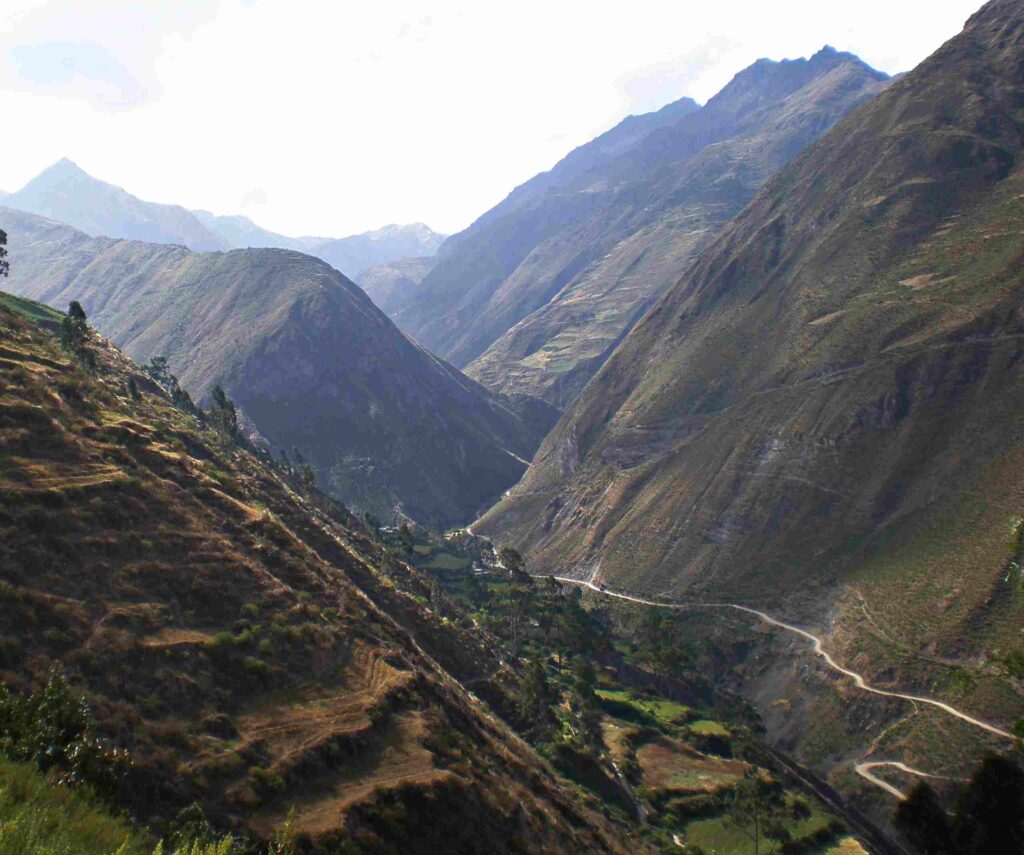 Above Matucana, Huarochirí Prov., Lima Dept, Peru
Above Matucana, Huarochirí Prov., Lima Dept, Peru
Public Domain Pledge
An important terms of business note to all our customers:
In order to be in line with our mission to support the preservation of botanical biodiversity, following the lead of J.L. Hudson Seeds and in recognition that the biodiversity of the Earth is the common heritage of all life, all of our seed and plant offerings are now Public Domain. This means that all plants and seeds are supplied solely under the following conditions: We expressly prohibit the use of any seeds or plants supplied by us, or their progeny, in any form of genetic engineering, breeding, or research which will result in any form of life patent, variety protection, trademarks, breeder’s rights or any form of intellectual property applied to living things which would compromise the Public Domain status of the seeds, plants, their progeny and any genetic material therein. We expressly prohibit the transfer to any third party of any seeds, plants, their progeny or any portion of their genetic material without these prohibitions in place. Commercial propagation is encouraged, but in the unlikely event that large-scale commercial distribution is achieved, benefit-sharing along the path towards the source, in accordance with the spirit of the International Convention on Biological Diversity, will be undertaken. Thank you for your understanding and support!
We acknowledge that the world’s biological diversity is a common inheritance shared by all;
the right to having a personal individual relationship with the myriad life forms of the planet is intrinsic to this. These are the very fibers that weave us.
((((((((( Plant seeds. Plant lots of seeds. Plant them without fear. Plant them with love. )))))))))
“We must look for help not so much to the stamen counters as to the plants themselves.” – Luther Burbank
“The greatest service which can be rendered any country is to add a useful plant to its culture“
– Thomas Jefferson
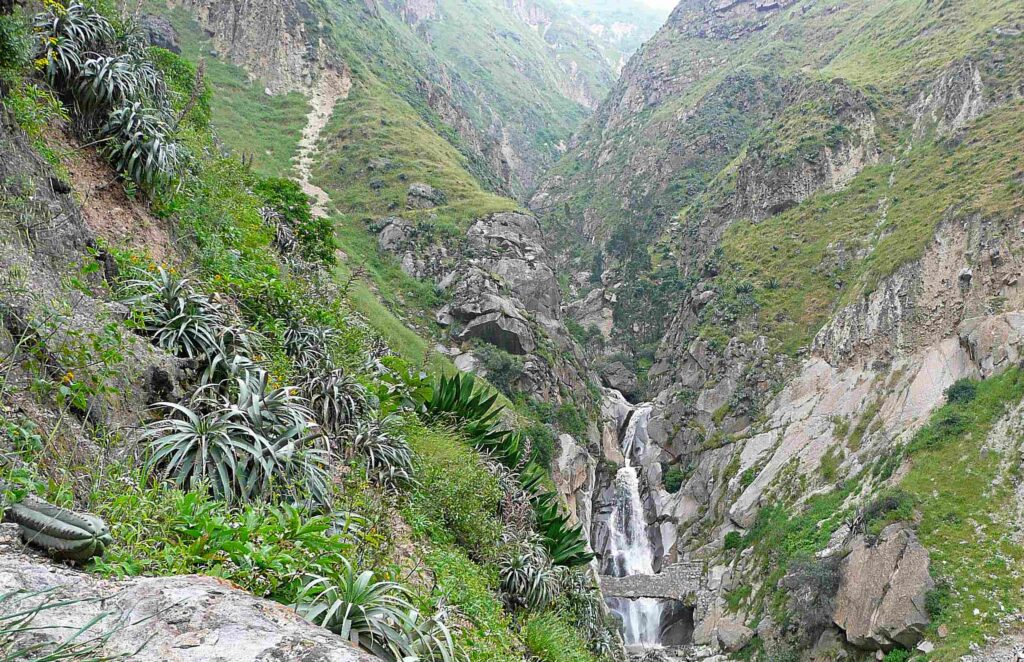 Just south of Huariquiña, Huarochirí Prov., Lima Dept., Peru
Just south of Huariquiña, Huarochirí Prov., Lima Dept., Peru
Plant Mini-Auction Fundraiser
The final 2023 auction fundraiser is now closed!
Winnings bids are posted!
The auction closed Monday, December 18, at 6:00pm PST
(Plants are available to US bidders only, Seed & Books are open to international bidders!)
This is a unique chance to obtain new introductions, rarities, specimens and mother plants. Due to the past year’s adversities, a fair number of species will only be available via auction for the next year or more. This is a one time offer for most of these plants – they will not be available again!
Know that auction purchases will directly fund much needed winter preparation and nursery repairs; fixing 2 greenhouses damaged in last winter’s storms, constructing new nursery benches, installing irrigation, etc., along with ongoing tech upgrades as well as our continual research and conservation work.
Bidding process is the same as last auction & simplified from early auctions.
With this auction what you bid is exactly what you will pay if you have the winning high bid when the auction ends. This differs from our early auctions where the high bid was hidden and determined to be just $1 over the previous bidders high bid.
An example for the current auction: If the current bid on a plant is $35 and you bid $50 the high bid price is then moved to $50 (NOT $36 like our earliest auctions) and the next bidder has to bid over that ($51 or more) — if you have the highest bid when the auction closes then you win that plant and your high bid is exactly what you pay (plus shipping).
To place a bid- ( please read fully before bidding! )
Email us ( benkamm@monitor.net ) with “SS auction” in the subject header.
In the body of the email list –
1) The name of each plant you are bidding on with the amount you are bidding next to the name (must be equal to or greater than the “minimum starting bid” or current “high bid”).
2) Your full name and complete shipping address.
Placing a bid is binding, so please do not bid unless you are committed to buying! Again please do not bid if you are not 100% committed and do not bid beyond your means.
We honor the email bids as first come first serve, so if we don’t respond right away—do not worry, we will honor your bid in the order it was received! The auction will be updated at least once a day by 6 pm, more often the final day. Towards the end of the auction can get hectic and we may not be able to notify you in a timely manner if you’ve been outbid during this last phase – we recommend checking the website periodically to see the updated current high bids and respond accordingly.
The auction closes at 6:00 pm PST, Monday, December 18. You will be contacted by email that evening or the following morning for the auction plants you have won. Our regular shipping costs apply. Placing a bid is binding, so please do not bid unless you are committed to buying! We request payment (cash, check, or money order) be mailed promptly on Tuesday, December 19 (for international seed wins only, online payment can be arranged). Your plants will be shipped after payment is received.
Shipping and Handling for Auction Plants
First Class Priority Mail = $10.00 for the first plant $2 each additional plant.
Express mail = Inquire for current costs
*Plants marked with a single asterisk* are large, heavy & have special shipping charges =
$18.00 for the first plant, $2 each additional plant.
**Plants marked with double asterisk** are extra large and/or heavy. We charge you the USPS postage cost plus a $6 handling fee on the total order. Please note: Shipping costs for these will be significant for folks in eastern states (for example a 36″ Trichocereus sent to the East Coast would be around $45-70+ shipping but less than half that for the West Coast). You may inquire the approximate shipping cost by emailing us your zipcode.
Shipping and Handling for Auction Seed
First Class Mail USA: $5.00 (seeds ride free when ordered with plants)
International: First class $20, or Priority Mail $44 (quickest, most secure, recommended!)
Shipping and Handling for Auction Books
To determine shipping costs, add up the number of lbs in parentheses ( ) that is listed after the price.
Priority Mail– add $10 for up to the first lb, $2 for each additional lb.
When shipped together with plants – just add $2 for each lb
Books only sent Media Mail – add $5 for up to the first lb, $1 for each additional lb
Please email us for international book shipping costs.
California residents add 7.25% sales tax. Sonoma county residents 8%.
Sacred Succulents, P.O. Box 781, Sebastopol, CA 95473 USA
Auction Seeds
(The seed part of the auction is open to both US and international bidders!)
The final 2023 auction fundraiser is now closed!
Winnings bids are now posted!
Boswellia sacra “Frankincense”
Burseraceae. Small caudiciform tree to 25′ with drought deciduous, pinnately compound leaves and racemes of small white pink flowers. Usually found growing in extremely rocky areas where it sometimes develops a bizarre disc like swelling at the base of the trunk. Native to north eastern Africa and the Arabian peninsula. Dried sap from the tree is an ancient incense widely revered since the dawn of civilization, often in combination with myrrh. At one time worth more than its weight in gold! It has a powerfully rich balsam fragrance. Used medicinally as a cure all, it has very strong anti-inflammatory, antiseptic, antibacterial and antifungal properties. Very rare in cultivation, but fairly easy to grow with a little care and a dry winter rest. It prefers a deep pot and soil with at least 50% pumice or perlite for its thickened edible roots. Grow like Bursera. The seed naturally has low viability, often below 10%, but this batch of seed has tested as high as 50–60%+! Needs consistent warmth, 80–95° F, to germinate in 2–4 weeks. Z10a/b
Packet of 30 seed – 9 bids $100
Trichocereus sp. nova? BK151013.5
Cactaceae. Upright dark green stems to 7’+ tall and 3–4.5″+ diameter. 9–11 ribs, white felty areoles and 1/4 to 1/3″ spines, yellowish aging white. Large, sweetly scented, funnelform white flowers, edible fruit. Looks similar to some of the Trichocereus – Echinopsis hybrids in cultivation. A unique plant that we discovered in 2015 growing on exposed, steep rocky embankments in Yungas cloudforest, Calilegua, Jujuy, Argentina, near 4500′. Growing with bromeliads, Peperomia aff. galioides and a Begonia species. Does not fit any description we could find and is likely a new species. Here is our first offering of seed! Z9b?
Packet of 40 seed – 5 bids $27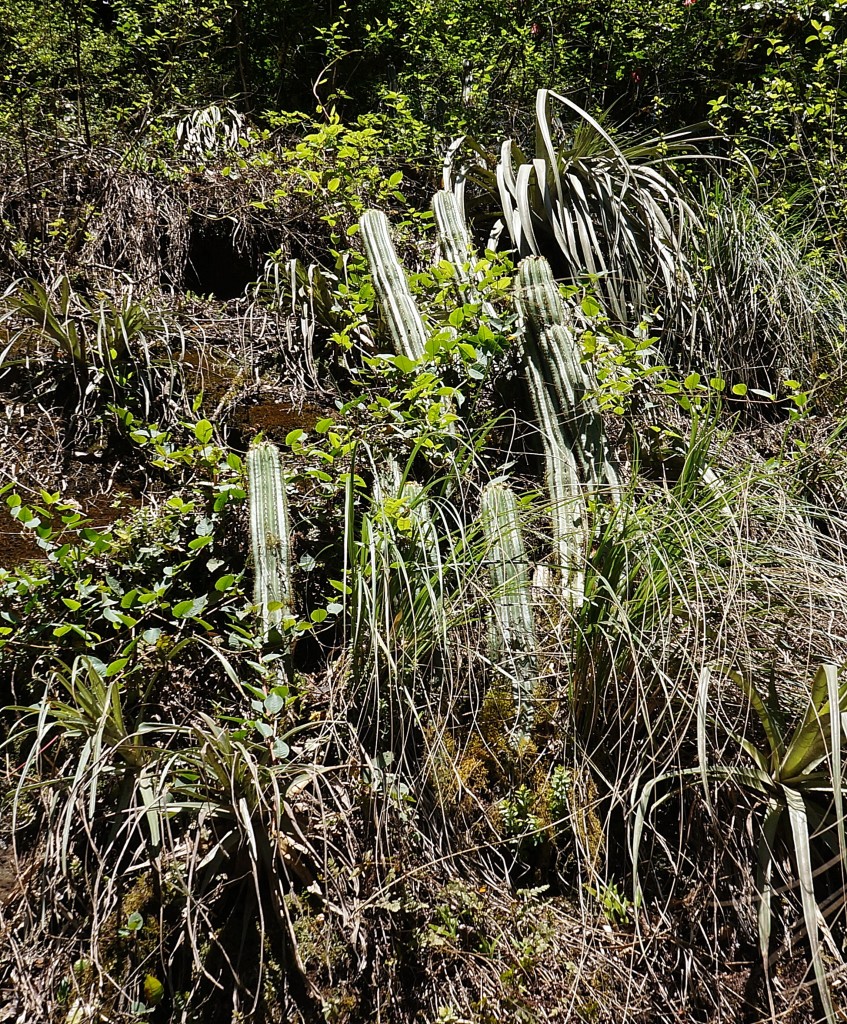
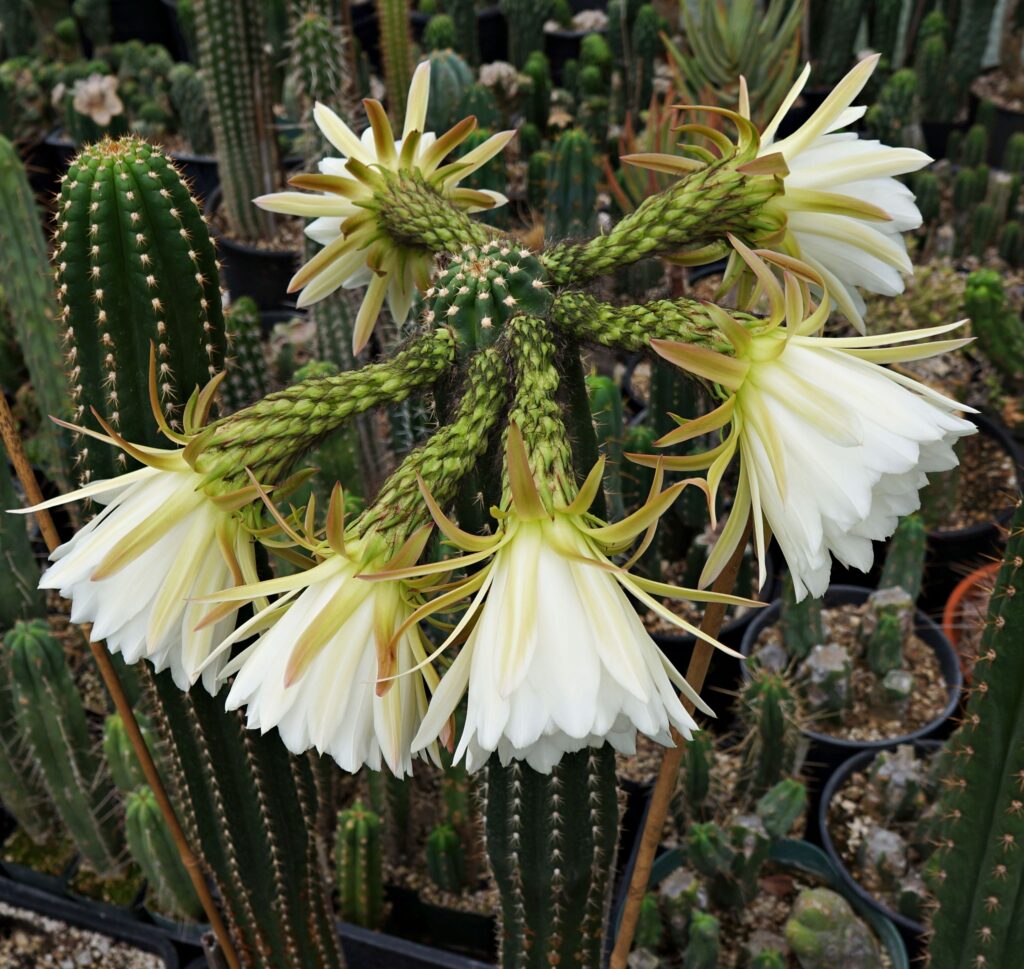
Trichocereus scopulicola X Trichocereus terscheckii/’huarazensis’ #2
A totally cool new hybrid! The coveted and nearly spineless T. scopulicola crossed with a hybrid of a terscheckii (on the spiny pasacana end) and the pachanoi clone T. ‘huarazensis’—thick stems to 8″ diameter, numerous long yellow spines, fuzzy areoles and funnel-shaped cream colored blossoms. The resultant offspring are sure to be exceptional! The first ever offering. Z8b/9a?
Packet of 15 seed – 5 bids $24
Trichocereus tulhuayacensis KK337 X Trichocereus scopulicola/grandiflorus
Another fabulous first time hybrid introduction! The gorgeous spined, magenta flowered tulhuayacensis mated with an orange flowered T. scopulicola X T. grandiflorus hybrid with attractive dwarf stems. We expect exquisitely unique, floriferous progeny. Be the first to grow this! Z8b/9a?
Packet of 12 seed – 6 bids $51
Auction Plants
(US bidders only!)
Cactaceae
Browningia candelaris
Unusual tree like cactus up to 20′ tall. The brown columnar stems have as many as 50 ribs and are as thick as 20″. The trunk is initially unbranched and covered in large spines up to 6″ long. Once it reaches about 10′ tall it begins to branch and new growth is nearly spineless. Tubular white flowers and oblong edible fruits. Native to southern Peru and northern Chile. It has been suggested that one of the enigmatic Nazca lines, huge earth drawings made by the Nazca culture between 300–800 A.D., known as “El Candelabro” may be a depiction of B. candelaris. This drawing occurs at Paracas Bay in southern Peru where B. candelaris grows. It has been speculated that the cactus may have consciousness altering properties that inspired the monumental artwork. This unique plant is very rarely seen in cultivation. Regular cactus care and frost protection is needed. Wild populations are in jeopardy due to livestock grazing destroying seedlings, seriously endangering the future of this mysterious plant. A rare chance at a seedling. Z9b
5″ plant 4 years old – 8 bids $133
Trichocereus bridgesii f. cristata/monstrosus
Years ago an unusual growth of crested tissue appeared on a specimen of our T. bridgesii f. monstrosus clone B and we began propagating this special sport. One of the oddest crests; mostly spineless blue-green tissue in thin or rounded ridges, sometimes resembling a cresting wave. Demand has always been high and supplies short—damage to our stock last year has further limited our offering this special plant. Slow growing, each plant is a unique living sculpture. This is the largest crest we’ve offered in some years—an odd semi-revert to the clumping monstrose form with several jointed, ‘egg-like’ stems emerging from the top of the plant alongside fans of cristate growth. A bit of natural corking on the sides of the old crest. Will continue to develop as a marvelous specimen! Z9a
11″ wide by 10″ tall plant – 6 bids $193*
Trichocereus pachanoi ‘Churchill’ X Trichocereus pachanoi ‘Guru’ “San Pedro”
A cross of what we are told are 2 coveted, highly valued and distinct New Zealand pachanoi cultivar selections. Attractive rounded stems, short spines, deep green epidermis. Our first time offering this one. Cutting from a choice seed grown plant. Z9a
8″ cutting – 4 bids $52
Trichocereus huanucoensis X Trichocereus sp. ‘Juul’s Giant’– f. monstrosus
A magnificent and marvelous new mutant! We had long dreamed of hybridizing these 2 rotund ribbed, robust Trichocereus but never anticipated such a delightful mutation to arise from the pairing. The year after we’d first sprouted this promising cross in 2016, we lost nearly 90% of the seedlings to a voracious vole. Among the scant survivors, we noticed that one plant remained rounder and stockier than its brethren. When the stem continued to balloon, rather than grow vertically, and then pup from the tip, we thought the rodent must have damaged the apical meristem…but the new pup ballooned and then many months later 2 pups emerged from its top…and so it has slowly continued ever since! 4–6 rounded, chunky ribs, dark green to bluish-green, with 1/8–1/3″+ spines. Amazingly, the young new stems often resemble Lophophora! The spherical to disc-globoid stems grow for about 0.5–2″, then new stems emerge from the tips and the old stem joints slowly swell, eventually ballooning to 3″+ diameter. Somewhat reminiscent of the stacked ‘egg-like’ growth habit of T. brigesii f. monstrosus clone B or a Tephrocactus ‘soccer-ball stack’. This is a languid and leisurely grower, even with repotting and regular feedings it has only slowly produced no more than a couple new stem joints a year. The very first ever introduction of this wonderful oddity! Can be rooted and grown on its own, or, if impatience is your virtue, grafted to see if the growth rate can be increased. Z9a
2″ cutting – 25 bids $800
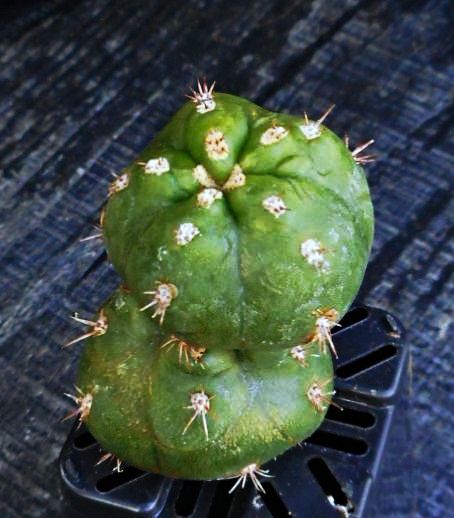 Auction cutting (close up) ⇑
Auction cutting (close up) ⇑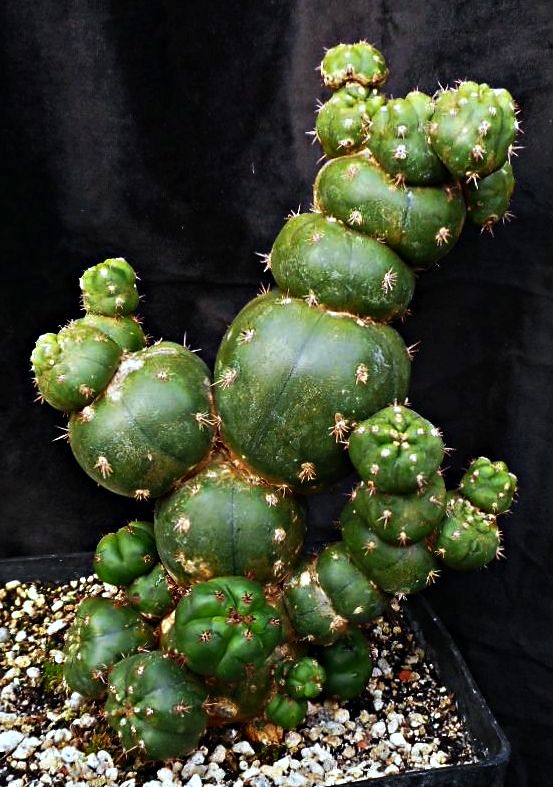
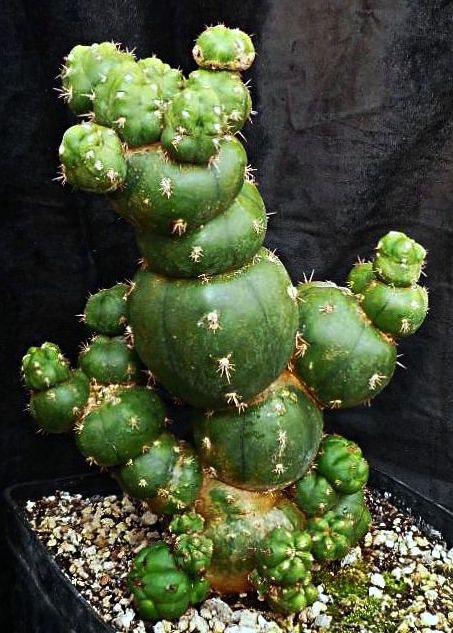
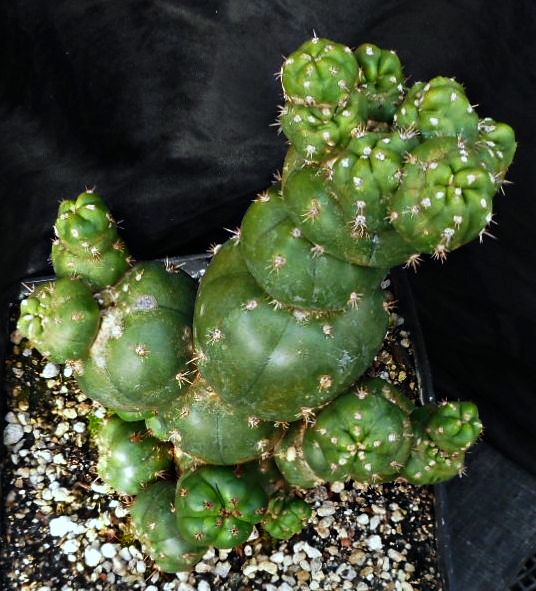
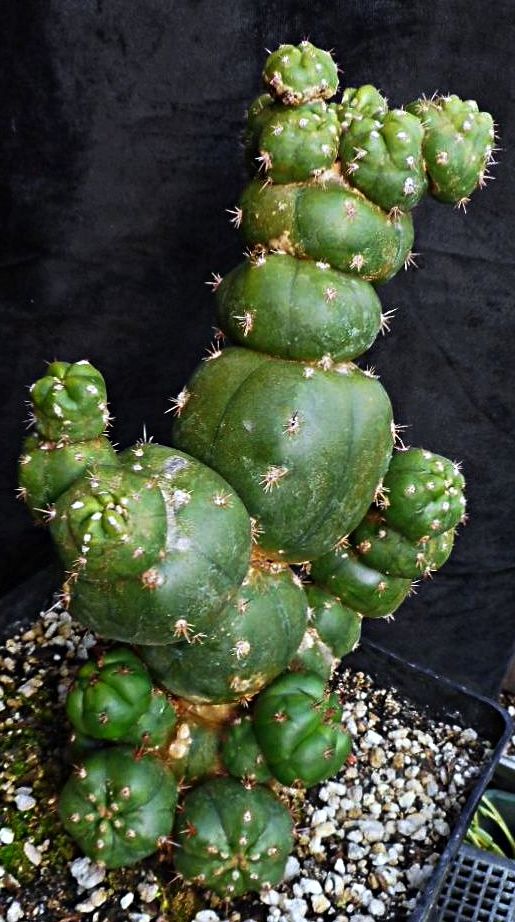 The marvelous mother mutant
The marvelous mother mutant
Trichocereus aff. ‘huanucoensis‘ HBG80361 (= Trichocereus pachanoi?) “San Pedro”
Looks like Peruvian T. pachanoi such as Ogunbodode, Lima or Juul’s Giant—blue-green rounded ribs, short spines, white flowers and sweet fruit. A beauty from the Huntington Botanical Garden. Curator John Trager says this was one of several seed grown T. huanucoensis from plantsman Harry Johnson. Definitely looks more like an Andean T. pachanoi than a short spined T. huanucoensis, but we’ll let you form you own lurid conspiratorial theories! Whatever the truth and providence, we’ve mostly kept this desirable clone to ourselves and only offered it a few times over the past 20+ years. Here’s your chance at a cutting! Z9a
14″+ cutting – 4 bids $60*
Trichocereus pachanoi Hutchison 6604 “San Pedro” “Huachuma”
An old Paul Hutchison accession from Ecuador that has never been distributed beyond botanical gardens. Upright stems with rounded ribs, green to glaucus-blue skin and short spines. Large white flowers, edible fruit. We only recently began offering (via auction) this very attractive and desirable clone. Z9a
6″ cutting – 22 bids $226
Trichocereus pachanoi f. monstrosus BK14518.5 cl. M “Mutant San Pedro”
The parent had dark green short columnar stems of molten-wax appearance and fans of cristate growth. Parque de las Leyendas, Lima, Peru. Grown from open pollinated seed. The progeny had a high incidence of crests and mutant growth—but we sold out of these several years ago. A cutting from one such awesome monstrose plant that we liked enough to keep, clone M. Z9a
12″ cutting – 4 bids $69*
Trichocereus peruvianus ‘Lurin’ “San Pedro Macho” “Pichu”
Nice form of this mid-elevation species of the Western Andean slopes. Sprawling, robust stems with blue-green skin, long spines, white flowers and round edible fruit. Seed from Lurin River Valley populations, Cieneguilla District. Lima Dept., Peru. For those looking for additional peruvianus genetic diversity, this population occurs in the next major river valley over from the well known Huarochirí (Matucana) one, and is poorly represented in cultivation. We distributed only a handful of seedlings years back and this is the first time in 5+ years we’ve offered a plant from this region. Z9a
6″ plant 3–4 years old – 5 bids $49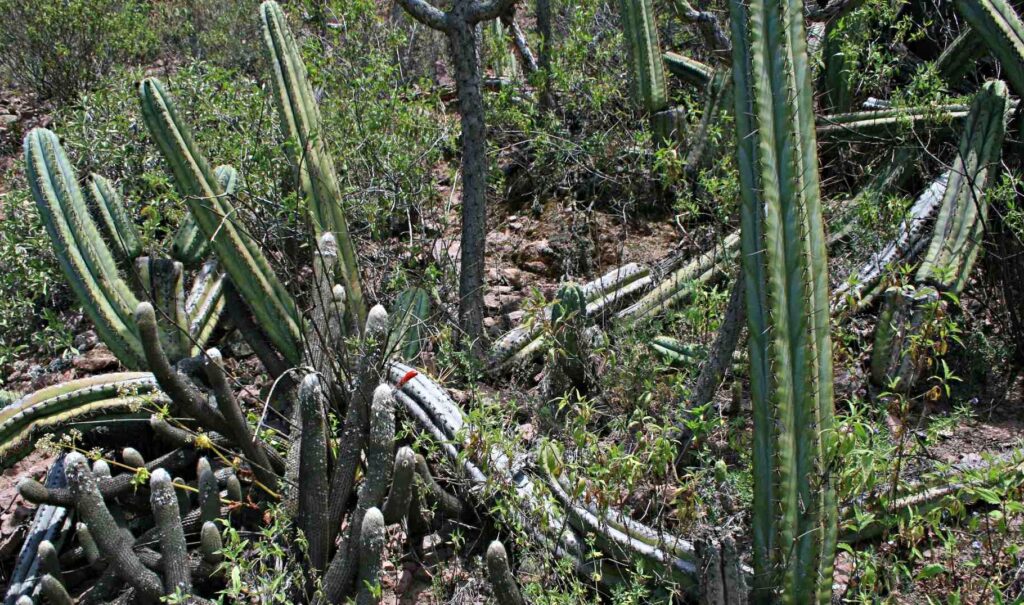
Trichocereus scopulicola
Much sought after rare pachanoid. Upright stands to 15′ tall. Chunky, dark green stems with 5–8 ribs and tiny spines. White night blooming flowers, edible fruit. A rare species endemic to the rocky dry forests of Tarija, Bolivia. One of our favorites. Our stock was badly damaged a few winters in a row, so offerings of this exceptional species have been sparse. The only seedling offered this year. Z9a
5″ plant 3–4 years old – 3 bids $55
Trichocereus sp. BK09509.2 “San Pedro de Chavin”
A rare favorite from the 3000 year old temple site of Chavín de Huantar. Candelabra stems to 10′. Stems to 4″ diameter, dark green epidermis, new growth blushed blue. 5–7 radial spines, the downward facing ones up to 1.5″ long. 1 central spine to 2.5″. New spines yellow to red-brown in color. Looks intermediate to T. pachanoi/santaensis and cuzcoensis. Growing on rocky cliffs, western slopes above the north end of the modern town and ancient ruins of Chavín de Huantar, 10,600′, Ancash Dept., Peru. Cutting from one of our seed grown plants with gorgeous spination, the only 2023 offering of this beloved accession. Z9a
6″ cutting – 6 bids $125
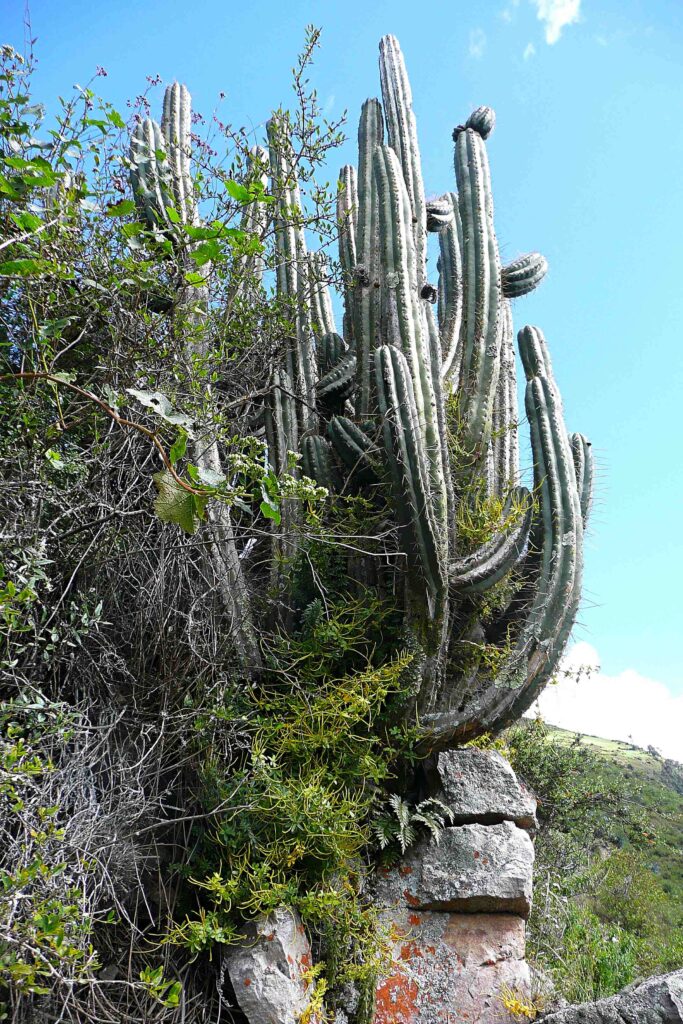
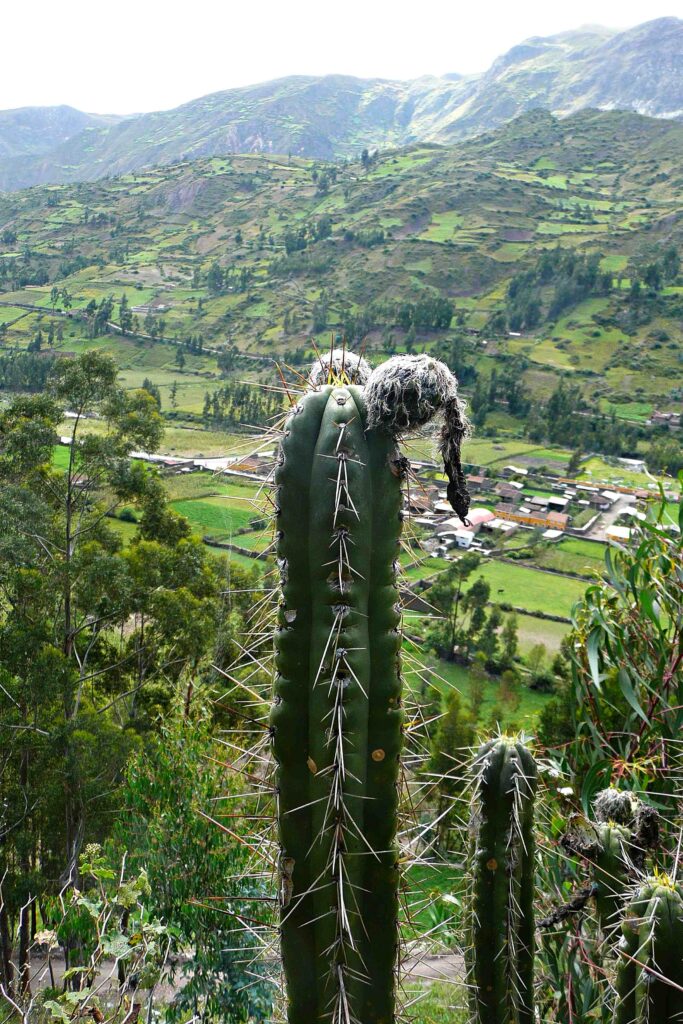
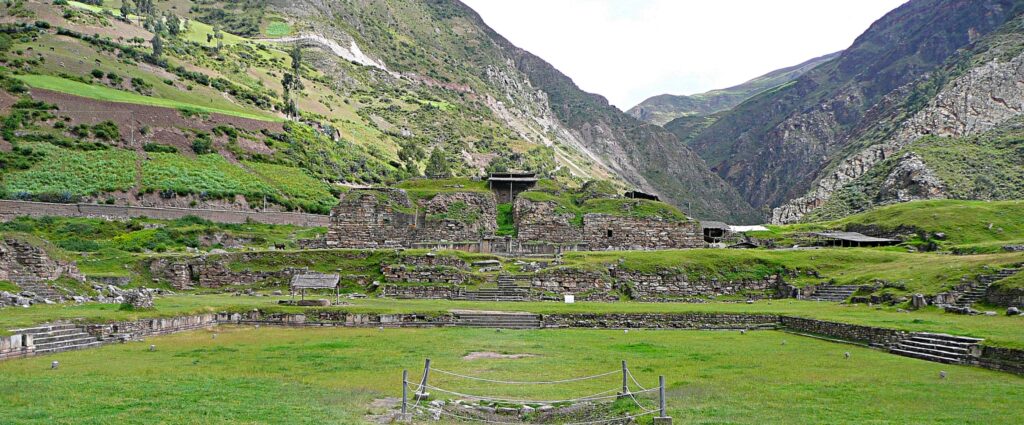 Chavín de Huantar, Ancash, Peru
Chavín de Huantar, Ancash, Peru
Other Succulents & Xerophytes
Boswellia nana “Dwarf Frankincense”
Burseraceae. Prostrate caudiciform shrub 1–2′ tall. Simple dark green leaves with wavy margins, densely arranged along the stems. New growth is red to bronze. Small pink flowers. Endemic to limestone cliffs, Socotra. Rich in aromatic balsamy oils. This amazing little species is the ultimate bonsai and a joy to behold. Needs bright light, well draining soil, heat and some humidity to thrive. Plant going winter dormant, shipped potted. Z10a/b
2.5″ treelet 1 year old – 9 bids $150
Peperomia aff. naviculaefolia BK09508.5
Piperaceae. Small succulent plant to 2–5″. Rosettes of chubby, ‘toad-skin’ leaves, green to pastel pink or pale orange, clear green windows on the upper surface. Strong balsamy scent. Growing with Sedum, Peperomia galioides, and Matucana sp., above the ancient site of Chavin de Huantar, Ancash, Peru, 11,000′. G. Pino thinks this may be an unusual form of P. naviculaefolia, never reported from Ancash before, or possibly a totally new species. The perfect companion to Borzicactus fieldianus, Trichocereus sp. BK09508.2 & BK09509.2—which grew in the vicinity. We haven’t offered this rarity in some years. Z9b?
3″ diameter plant with 9+ heads – 8 bids $81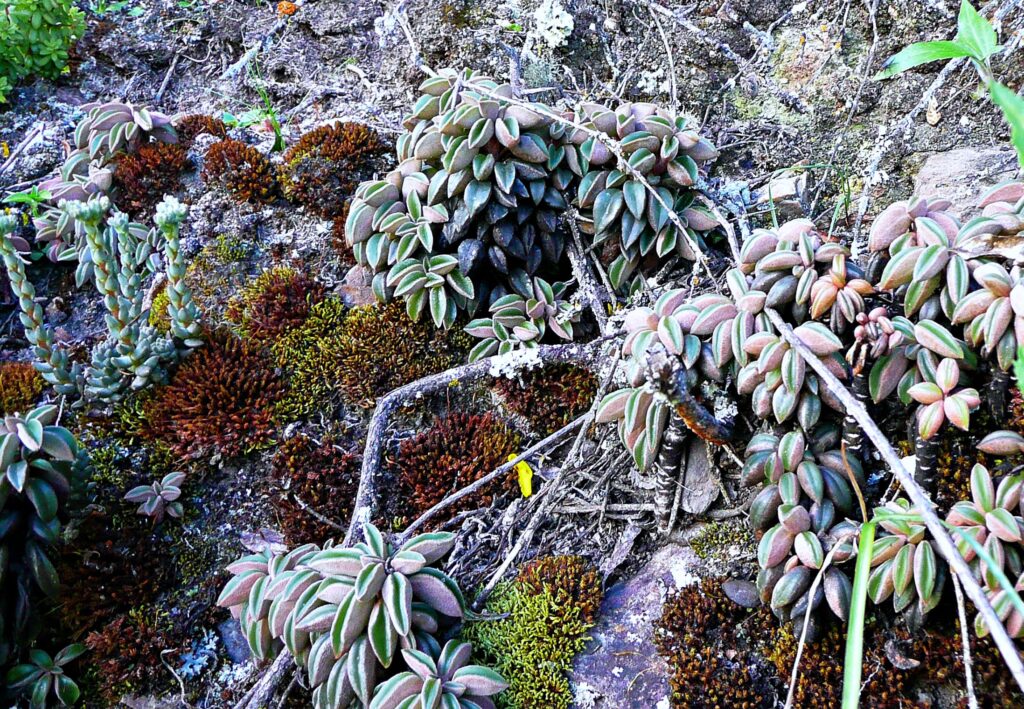
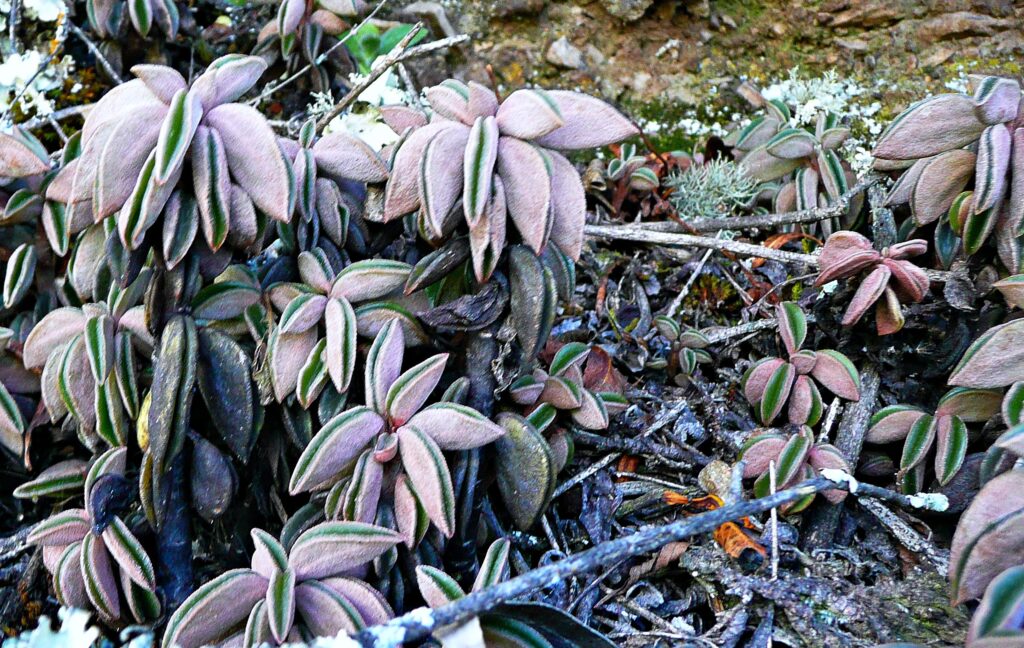
Peperomia sp. HBG133484
An exceptional succulent with upright columnar stems to 12″+, clothed with spirally arranged small succulent leaves. May be an entirely new species or a hybrid with the rare, endangered Peperomia cereoides as a parent and possibly P. columella. Whatever it is, it is totally unique and an instant personal favorite! Only the 2nd time we’ve offered this singular beauty. Z10a?
11″ branched plant – 5 bids $60
Andean Ethnobotanicals
Blechnum sp. BK10512.10
Blechnaceae. Unusual and beautifully distinct fern with a rosette of thick compound leaves on a small trunk to about 12″ tall, like a miniature cycad. The fresh new growth is a magenta to pink-bronze color. Our accession from the understory and edges of remnant ‘climax’ Polylepis lanata and Hesperomeles ferruginea forest, an area with extremely high diversity of plant, bird and insect life, above Rio Lope Mendoza, Cochabamba Dept., Bolivia, 11,200′. Here we had a glimpse of the primal forest that must have once blanketed much of the region. Other understory species included Pernettya, Gaultheria, Baccharis, Berberis, Lycopodium, Gunnera, etc.; growing on rocks next to forest were Puya species and Lobivia (Rebutia?) cactus. This lovely fern has been slow growing from spores and we’ve only offered it occasionally over the years, it is one of our personal favorite plants and was our first real success with growing from spores we collected in the Andes. A fabulous older specimen that is unusual with several basal pups. Z8a/b?
8″+ plant 9+ years old – 8 bids $126*
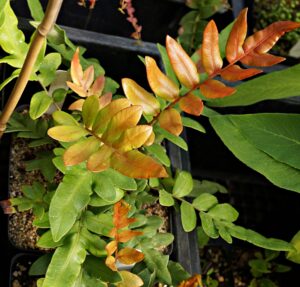 New growth
New growth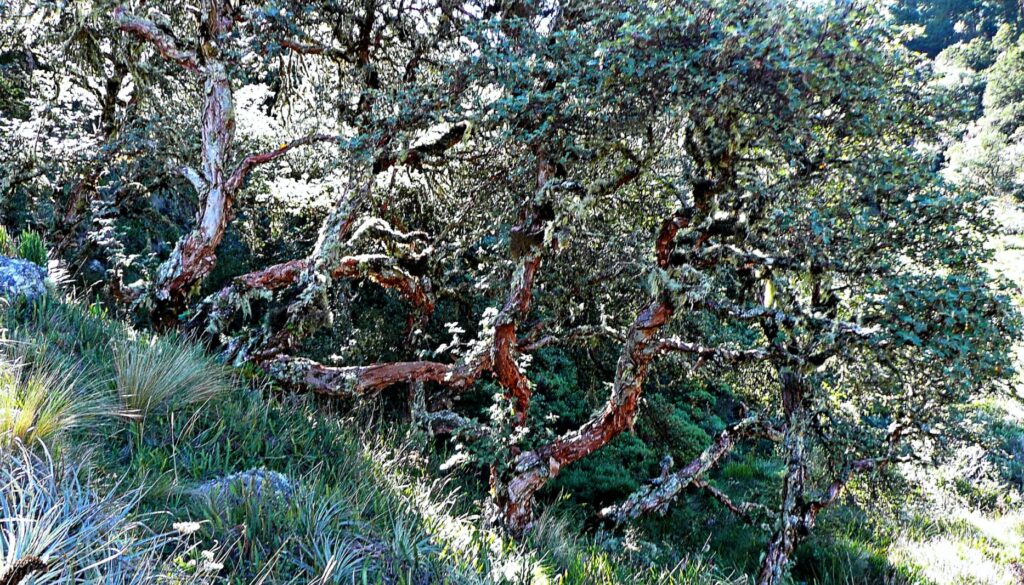 Blechnum sp. habitat: Polylepis lanata and Hesperomeles forest, Cochabamba Dept., Bolivia
Blechnum sp. habitat: Polylepis lanata and Hesperomeles forest, Cochabamba Dept., Bolivia
Ceratostema cf. silvicola HBG94813 “Sagalita”
Ericaceae. A caudex forming semi-epiphyte with arching branches to 5’+. Dark green, heart-shaped cordate leaves. New growth rusty-bronze. Clusters of urn-shaped brick-red flowers with reflexed petals of dark red-black. Antioxidant rich edible berries. An Ecuador endemic known from only a few locales, tropical/cloudforest below 3000′. A fantastic caudiciform rarity that is one of the more heat tolerant neotropical blueberry species. Rooted cutting. Z10a/b
4″+ plant – 4 bids $85
Books
(The book part of the auction is open to both US and international bidders!)
See:
Rare & Used Editions
Auction closed at 6:00pm PST, Monday, December 18
~ end of auction list ~
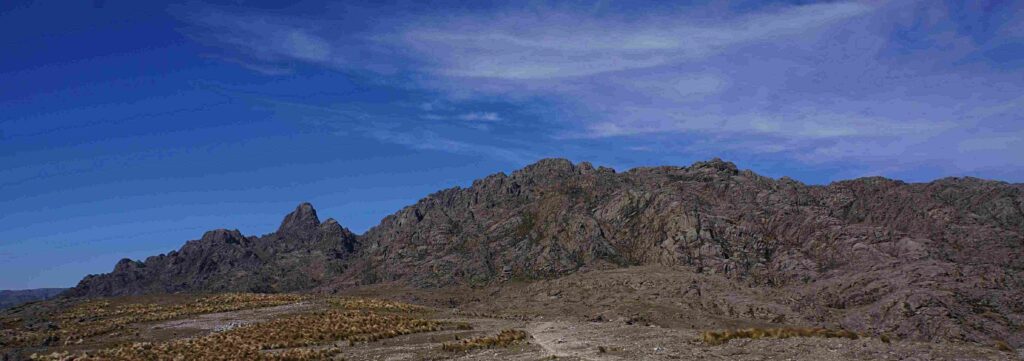 ⇑ Los Gigantes, Sierras Grandes, Cordoba, Argentina
⇑ Los Gigantes, Sierras Grandes, Cordoba, Argentina
The Specimen Plant List
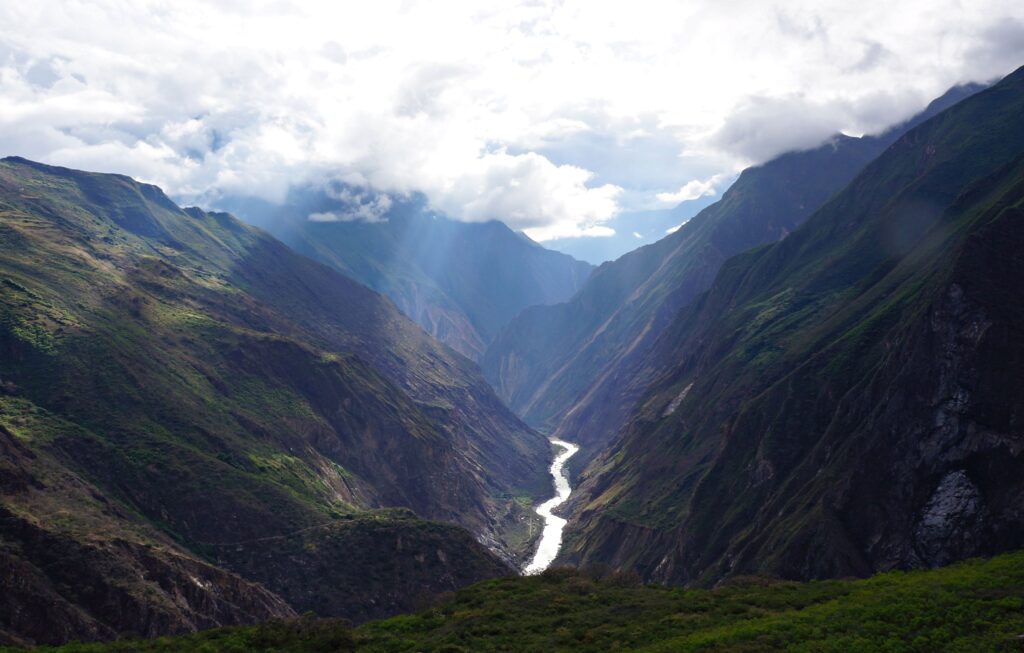 Above the Apurimac, looking south, Cusco Dept., Peru
Above the Apurimac, looking south, Cusco Dept., Peru
January 2024 Specimen Plant Offerings
We are in the process of updating the list for January, should be completed in 2-3 days!
Specimen List Plants are not subject to this year’s limited shipping schedule—
we ship Specimen Plant orders throughout the year.
We do our best to update this section monthly – by the second week of each month. So check back!
List updated 1/6/24
____
~ New BOOKS + Rare & Used Editions near the bottom of this page ~
____
♣ Last chance at rare BOTANICAL PRODUCTS (resins, roots, oil) listed below Books ♣
____
GIFT CERTIFICATES are excellent gifts: available for any amount, please inquire
___
(Specimen orders can be combined with other items and plants)
USA customers only (except Seed Packets). Some of these plants are one-of-a-kind and have been in our collection for many years. This is a one time offer for many of these plants – they will not be available again! If you are interested in purchasing a plant please email first to confirm availability – sacredsucculents@hushmail.com or benkamm@monitor.net
– please provide your full shipping address in the email.
Shipping and Handling for Specimen Plants (US only)
First Class Priority Mail = $10.00 for the first plant, $2 each additional plant.
Express mail = Inquire for current costs
*Plants marked with a single asterisk* are large, heavy & have special shipping charges =
$18.00 for the first plant, $2 each additional plant.
**Plants marked with double asterisk** are extra large and/or heavy. We charge you the USPS postage cost plus a $6 handling fee on the total order. Please note: Shipping costs for these will be significant for folks in eastern states (for example a 36″ Trichocereus sent to the East Coast would be around $45-70+ shipping but less than half that for the West Coast). You may inquire the approximate shipping cost by emailing us your zipcode.
***Plants are too large to ship – available for pick up, by appointment, at our home in Occidental.
Email to reserve plants and arrange pick up. For those further away, we will consider shipping, but the plants will need to be cut into smaller sizes – email for shipping quotes.
Shipping and Handling for Specimen Seed Packets
First Class Mail USA: $5.00 (seeds ride free when ordered with plants)
International: First Class $20, or Priority Mail $44 (quickest, most secure, recommended!)
California residents add 7.25% sales tax. Sonoma county residents 8%.
Download Order Form
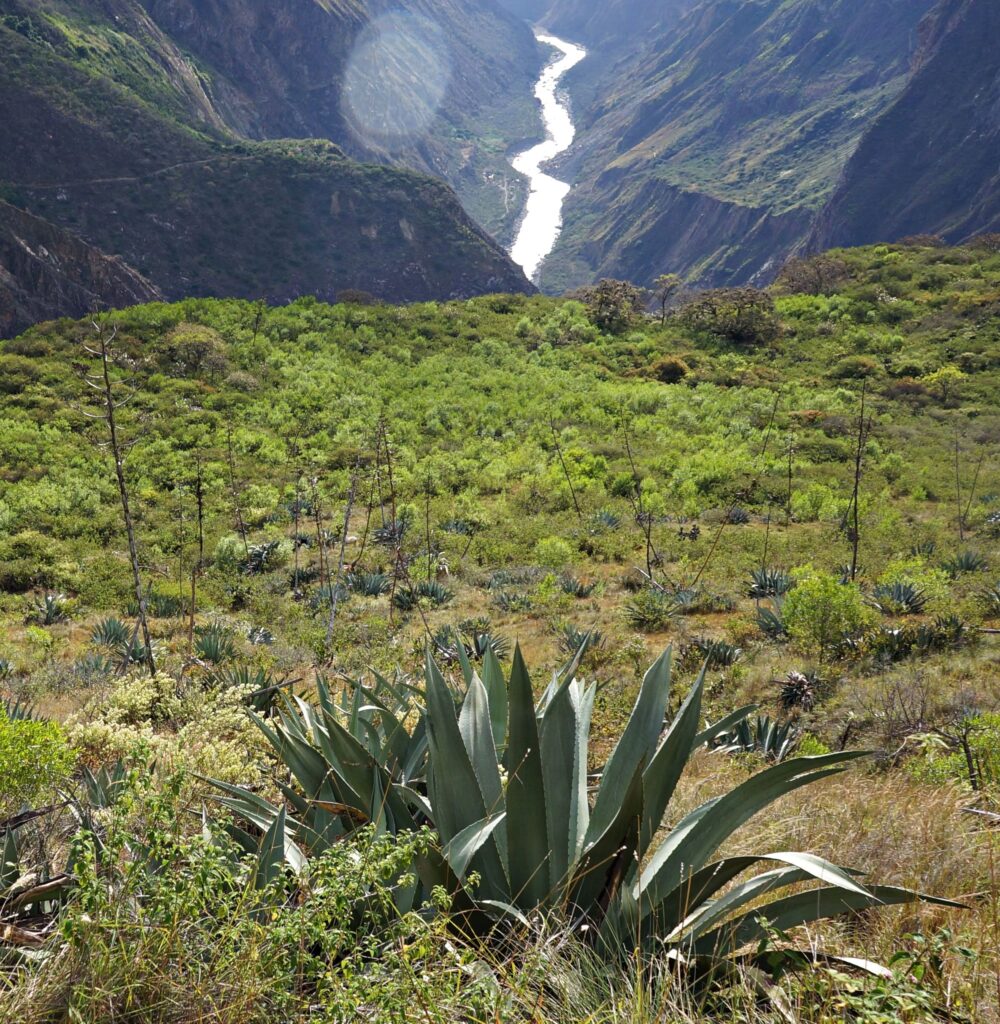 Agave cordillerensis, Apurimac, Cusco Dept., Peru
Agave cordillerensis, Apurimac, Cusco Dept., Peru
Key to Specimen Plant Listings:
Genus, species, Accession# or ‘Clone name’, (=synonym), “common” or “local names”
Plant family. Plant description. Z# = USDA hardiness zones
[ # quantity originally listed] → # still available ~ approximate plant size, age (if seed grown), $price
* or ** after the price denotes a heavy or oversize plant, see the shipping info above.
____
Cactaceae
1/6/24 We are in the process of updating the list for January, should be completed in 2-3 days!
Azureocereus viridis BK14513.1 (=Browningia viridis)
Large columnar cactus to 15’+ tall. Candelabra stems to 10″+ diameter with a beautiful glaucus blue skin. V-notched, grey felted areoles with 1–2+ central spines 1–2.5″ long and 6–8+ radial spines 1/4–1″+ long. New spines are yellow turning gray with age. Tubular flowers to 3″ with dark brown-black bud scales, white petals. The dominant cactus of the dry forest along the Apurimac, 5000′, Cusco, Peru. A truly exceptionally gorgeous species, more so than A. hertlingianus; some clones were very sparsely spined while others were more heavily armored. Very rare in cultivation. Prefers bright light and warmth — dislikes cold. Z10a
[ 4 ] → 1 ~ 2–3″+ plant 2-3 years old $26.50 SOLD
Borzicactus ventimigliae NL042108a (previously offered as B. leonensis)
Shrubby columnar cactus with deep green stems to 5’+. Nicely sculptured tuberculate ribs and red-black spines turn gray with age. Red tubular flowers, edible fruit. Seed collected by ethnobotanist N. Logan near Cuenca, Ecuador. A really beautiful species rarely seen in captivity. Previously mis-identified and offered as B. leonensis. Thanks to Tristan Davis for identification on this. Z9
[ 3 $16.50 SOLD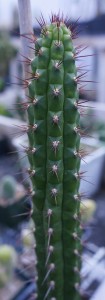
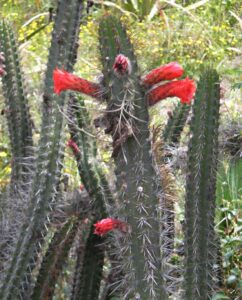
Cleistocactus buchtienii BK10506.1 “Kitisira”
Slender cylindrical stems to 6′. Orange-brown to whitish spines, fine and needle-like. Pale red tubular flowers. Small edible fruit. Our collection from the base of Cerro San Pedro, Cochabamba, Bolivia, near 8,500′. Growing with Trichocereus aff. pachanoi BK10508.1, Puya mirabilis, and Carica quercifolia. Around Cochabamba stems of this cactus are the preferred source for making “llujta” a regional kind of llipta for chewing with coca leaves. Naturally dead and dried stems are collected, ones with white rather than orangish spines are said to be superior. These are then burned and the resulting ash mixed with a little cooked potato starch and formed into cylinders to dry. A small amount of this is chewed with coca leaves to facilitate their beneficial stimulating properties. Easily grown species. Z9a?
[ 5 ] → 1 ~ 7-9″+ plant 3 years old $15.50
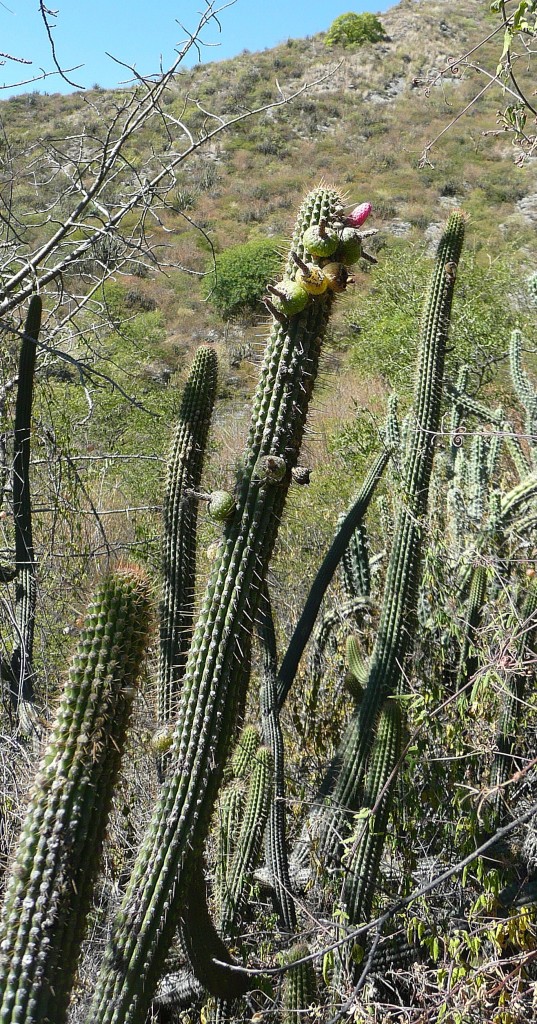
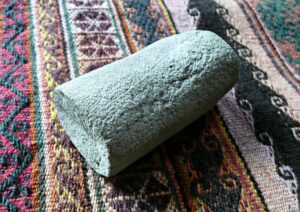 Traditional llujta made from C. buchtienii stems
Traditional llujta made from C. buchtienii stems
Corryocactus brevistylus BK09424.1 “Sanky”
Attractive Trichocereus peruvianus-like columnar cactus from southern Peru. Stems 10–20′ tall, spines up to 9″ long! Yellow tubular flowers and softball size fruit. Fruit purchased at one of the large traditional markets in Lima city, Peru. The flesh of the huge fruit is amazingly sour, as acidic as a lemon. Considered a liver and kidney tonic. We blended the pulp with a little honey-water to make a delicious and refreshing sanky-ade. More tolerant of cold and aridity than any lemon tree, could substitute in areas where lemons can’t grow. Protect small plants from hard frost. Z9a
[ 8 ] → 3 ~ 3–5″+ plants 3 years old $16.50 each or 2 for $29.50 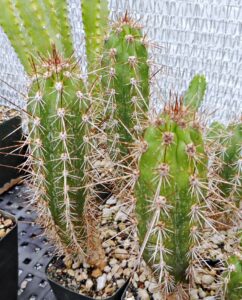
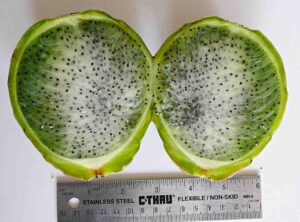
Corryocactus sp. BK14516.19
Thin bright green cylindrical stems 12 to 24″+. Small white-gray spines clothe the 7+ ribs. Orange flowers, 1/2″+ green fruit with a white kiwi-flavored pulp. Growing on the cliff edge overlooking the Apurimac, Capuliyoc Pass, Cusco Dept., Peru, 9800′. May be a distinct form of C. erectus. Last chance at these! Z9a/b
[ 3 ] → 1 ~ 7-8″+ plant 3+ years old $17.50 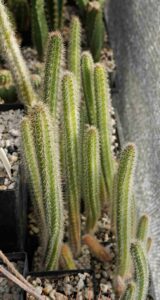
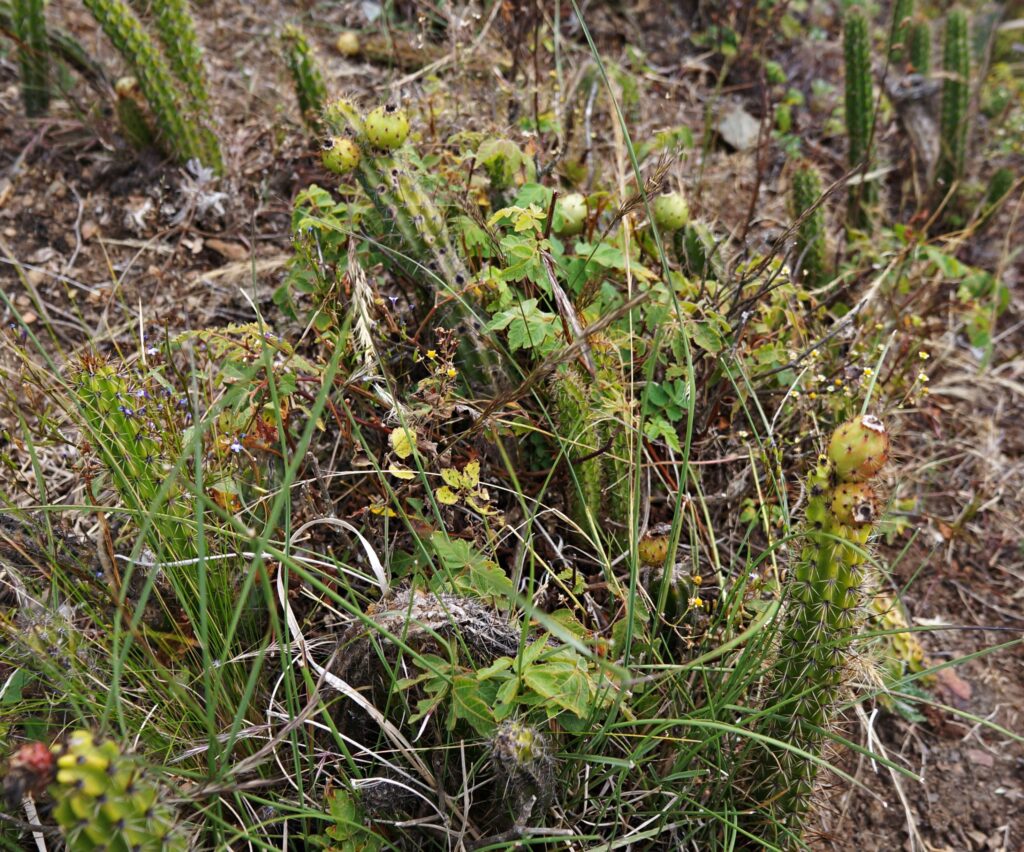
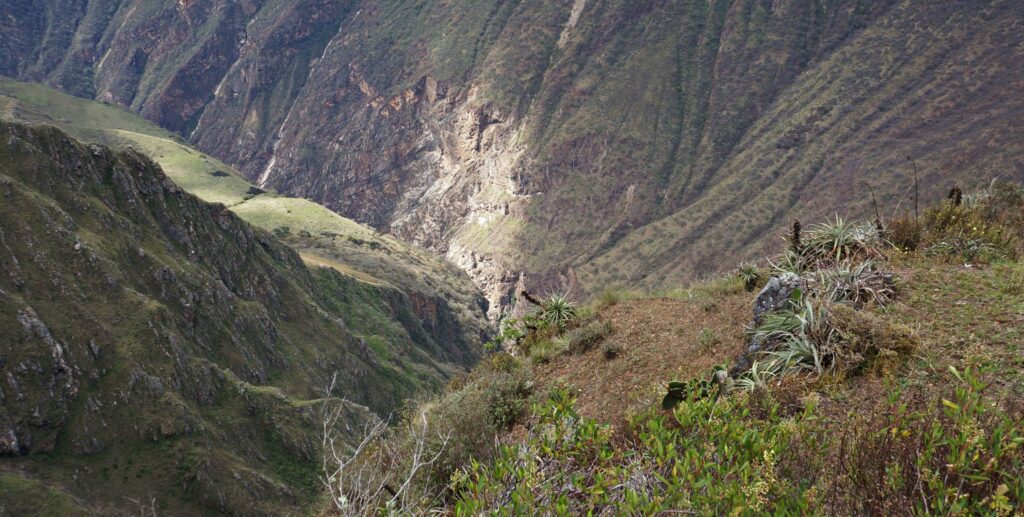 Corryocactus site, overlooking the Apurimac
Corryocactus site, overlooking the Apurimac
Ferocactus glaucescens “Visnaga”
Barrell cactus with green to blue stems to 24″. Yellow spines and metallic-yellow flowers. Hidalgo, Mexico. The seed is from our spineless mother plants (f. inermis), the seedlings are spiny so far but may lose their spines as they mature. Easy to grow. Z10a
[ 6 ] → 2 ~ 2-3″+ plants 3 years old $9.50 each or 2 for $15.50
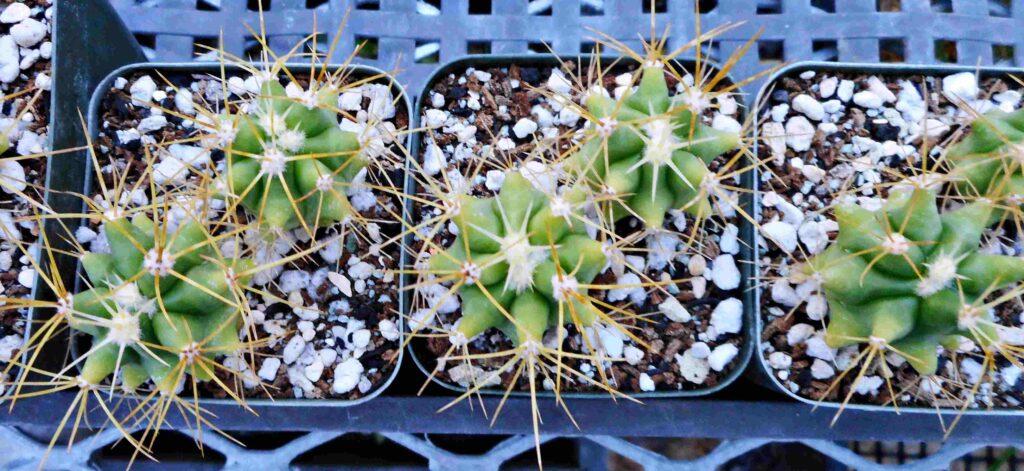
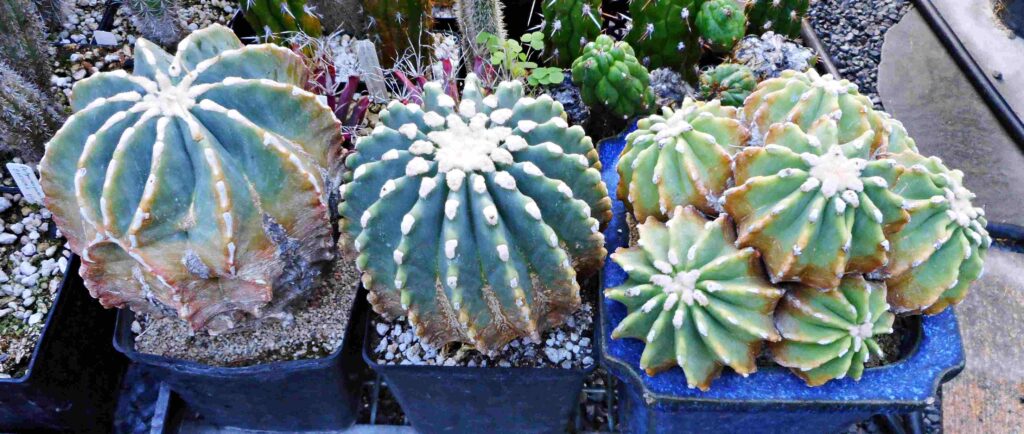 Ferocactus glaucescens f. inermis 3 mothers
Ferocactus glaucescens f. inermis 3 mothers
Pachycereus pringlei “Cardon” “Sahueso”
Gigantic columnar cactus that forms huge candelabra like stands to 60′ tall. Individual stems can grow as wide as 1 meter and have 10–16 gray-green ribs covered in 1″+ stout white spines. Oddly, the upper growth of tall stems is often completely spineless. 3–4″ white nocturnal flowers that are pollinated by bats. Golf ball size spiny yellow fruits. A Mexican species that grows throughout Baja and from Sonora to Nayarit near the coast. Natives consider this cactus a sacred living spirit and utilize it for many purposes. Fruits and seeds were once an important food source. Fruit pulp was eaten fresh, cooked or made into preserves and the nutritious seeds were toasted and made into a pinole called “haixa” by the Seri. The inner wood of the Cardon was also used extensively for constructing homes, fences, spears, canes and other tools. The Seri were known to bury the placenta of a newborn at the base of these giants. Fruit preserves were used for dysentery and slabs of Cardon flesh for treating aches and wounds. The flesh is also rumored to have inebriating properties. Study of cave paintings in Baja suggest the plant was used shamanically by extinct tribes. An coveted cactus that is easily grown, can be kept dwarfed in a container or makes a bold landscape specimen. Bright strong light and regular succulent culture is needed. Protect from frost when young. We have found plants over a foot tall to tolerate some frost. This is the last large seed grown plant we have to offer. A robust plant ready for potting up or planting out; a little superficial scarring on the side of the stem (from frost exposure a couple years ago). Z9b
1 ~ 20″+ plant 9 years old $65**
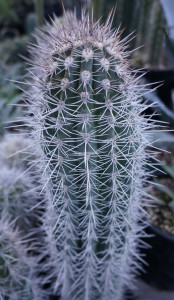
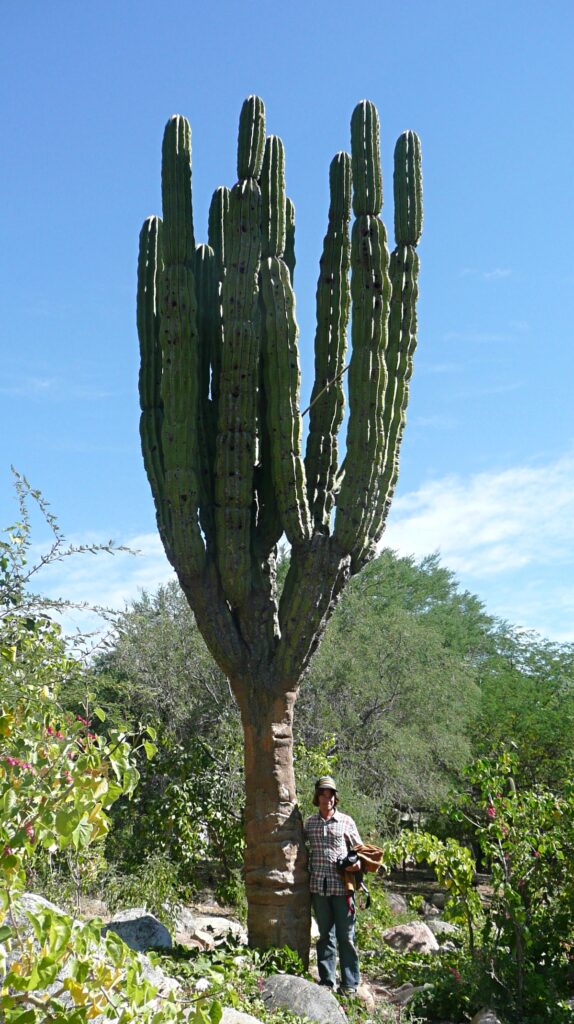
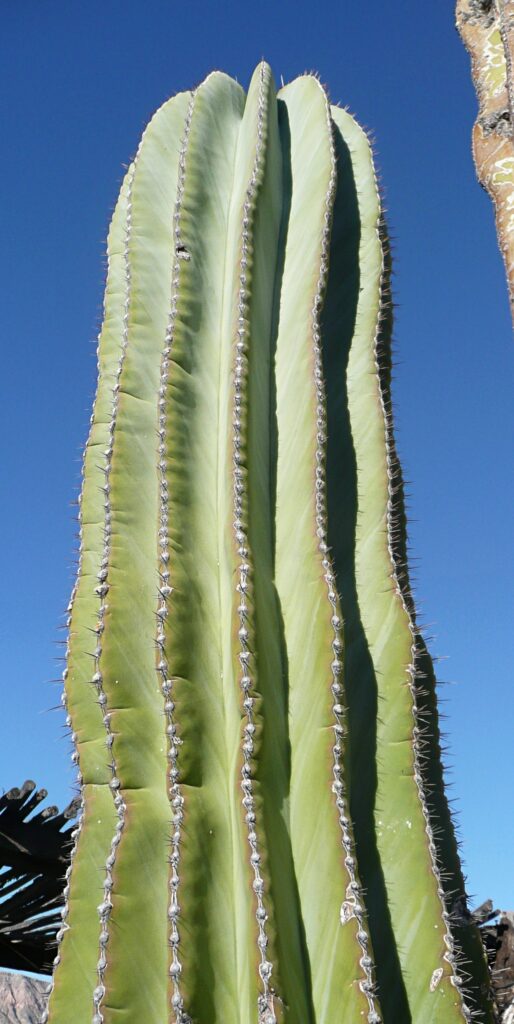
 Pachycereus pringlei, Baja Sur
Pachycereus pringlei, Baja Sur
Pereskiopsis porteri BK10117.5
Shrubby cactus thin cylindrical stems to 6′ and succulent true leaves that are edible. A primitive Opuntia relative with 1″+ spines and glochids. Rose-like yellow flowers. Orange fruit with a sweet-tart edible pulp. Our seed collection from the dry-forests of south Baja. Good seedling grafting stock. Very rarely offered seed grown plants! Z10a
[ 5 ] → 2 ~ 3–5″+ plants 2 years old $12.50 each 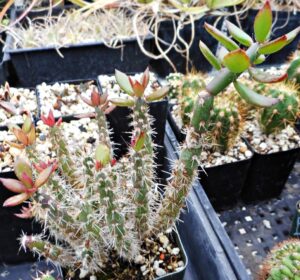
About the genus Trichocereus
Large genus of some 50–80+ species native to the Andes of Ecuador, Peru, Bolivia, Argentina and Chile. Several decades ago merged with the closely related genus Echinopsis, then recently segregated again to Trichocereus but with questionable changes, leading to great confusion. In many ways this genus is a perfect case study in the absurd modern trends in armchair taxonomy. Here we recognize Trichocereus as a distinct genus, variable in size and form; sometimes low growing multi-branching colonies, others large candelabra-like stands to imposing tree-like giants. All produce large funnel shaped flowers that are often sweetly scented. These magnificent flowers are either white and nocturnal or multi-colored and diurnal. The fruits are edible and quite delicious. Often mistakenly thought of as sun-baked desert plants, many of these species are in fact integral members of forest ecosystems –– from Prosopis and Anadenanthera dry forests to Polylepis cloudforests. The oldest depiction of a succulent plant (and possibly of its propagation) is an anthropomorphic being carrying what is assumed to be a rooted Trichocereus cutting at the 3000 year old temple of Chavín de Huantar in the central Peruvian Andes. Today cuttings are often planted as living fences throughout South America. Flower petals and the inner flesh of most species are excellent external remedies for wounds and burns much like Aloe vera. Cut stems of some species are traditionally used to “purify” water and in some regions made into an esteemed shampoo. All are relatively fast growing, easy from seed, and fairly cold & wet tolerant. Increasingly popular as drought hardy landscape specimens. Trichocereus provide some of the best long lived grafting stocks. For optimal growth provide a rich well-drained soil, plenty of horizontal root room, bright light and regular water and nutrients during Spring and Summer. In habitat, Trichocereus occur with a diverse array of companion plants and we encourage you to try growing them with some of these commonly associated Andean species: cacti such as Borzicactus spp, Cleistocactus spp., Corryocactus spp., Armatocereus spp., Lobivia spp., etc.; other succulents — Peperomia galioides & other Peperomia spp., Agave cordillerensis & Furcraea spp., Echeveria & Sedum spp., Pilea spp., Puya & other bromeliads (Abromeitiella, Deuterocohnia, etc.), Ephedra americana, Carica spp., etc.; dry ferns like Cheilanthes & Pellaea spp.; shrubs such as Siphocampylus tupaeformis, Nicotiana spp., Baccharis spp., Calceolaria spp., Lycium spp., Salvia spp., Pernettya & Vaccinium spp.; trees like Anadenanthera colubrina, Polylepis & Escallonia spp., Alnus & Podocarpus spp., Geoffroa & Zizyphus; climbers such as Bomarea spp., Ipomoea & Dioscorea spp., Passiflora spp., Mutisia acuminata; bulbs like Cypella, Eustephia, Stenomesson, etc., etc. (check the Succulent and the Andean sections of the Specimen List for such plants). For two decades we have been involved in a long term interdisciplinary field study of the ethnobotany, ecology, distribution and taxonomy of these cacti.
All BK numbers are from our wild seed accessions.
Purchase of plants helps to fund ongoing research and conservation.
Trichocereus sp. BK08601.1 “Hawakolla”
Gorgeous arborescent species to to 15’+ tall. Regular branching up high on the thick dark green stems, 6″+ diameter. Strongly notched areoles. Numerous golden to grey spines, up to 2″. White flowers. From a huge patch, occurring almost down to the water, north side Isla del Sol, Lake Titicaca, Bolivia,12,500’+; growing alongside Polylepis incarum trees near the most important pukyo in Andean cosmology: the sacred progenitor spring from which the first ancestors emerged… Looks to be planted, we also saw specimens at the square in Copacabana. Signs of regular harvesting. The Aymara curandero, Lucio Ticona, says it can be used “like achuma”, but is “different” in effect. Locals report a slice of stem is placed on the outside of the cheek for toothache. Possibly a new species or subspecies. The plants definitely show some affinity with T. cuzcoensis, yet the spination, ribs, girth and overall habit is very distinct. The plant also looks similar to the cultivated ‘Kimura’s Spiny Giant’ in the US. Coveted by collectors since we first introduced it to the US in 2008, we only offer this mysterious beauty occasionally. Z8b?
[ 3 ] → 1 ~ 13-15″ cutting $95* SOLD
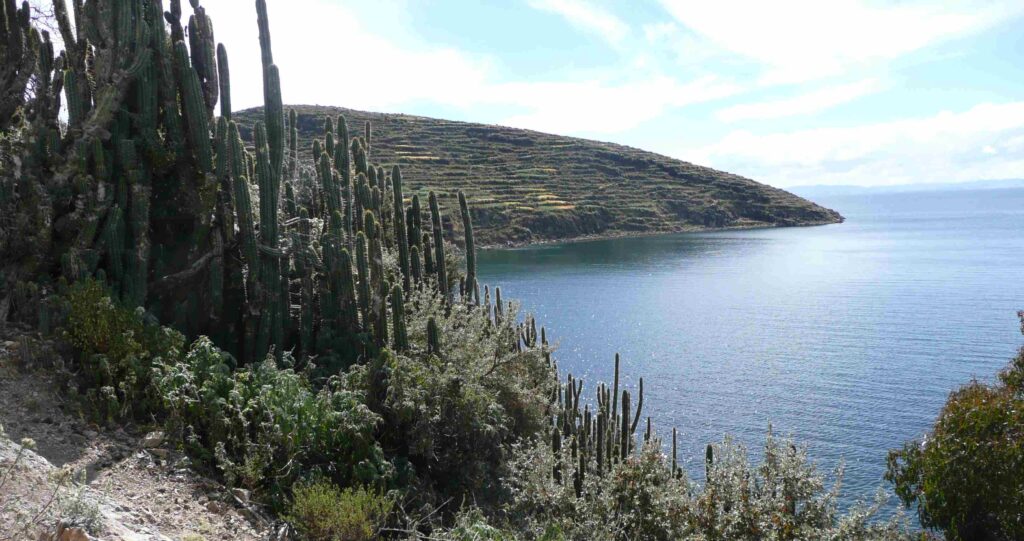 Trichocereus sp. BK08601.1 growing with Polylepis incarum, Isla del Sol, Lake Titicaca, Bolivia
Trichocereus sp. BK08601.1 growing with Polylepis incarum, Isla del Sol, Lake Titicaca, Bolivia
Trichocereus bridgesii f. monstrosus cl. A “Mutant Achuma”
Virtually spineless. Smooth blue-green stems with 2–4 indistinct ribs. Occasionally produces yellow spines up to 3″ long. Plants eventually form heavily branching candelabra like stands. Individual stems can grow to be remarkably phallic. Larger cuttings of the venerable and perennially popular penis cactus! These are rooted multistemmed clusters of weathered & calloused, hard grown plants — ugly now but will grow into lovely specimens with a little care! Z9a
[ 3 ] → 1 ~ 6-8″ tall plant with 3-4 stem joints $25.50 SOLD
Unrooted ‘Ugly’ Cuttings:
[ 3 ] → 1 ~ 10-11″+ cutting with 3-4 stem joints $32.50* SOLD
Trichocereus bridgesii ‘Lotusland’ “Melted Wax Cactus”
Green to blue-blushed stems often grow monstrose with a melted wax look. A classic heirloom clone from Lotusland Garden in Santa Barbara, CA. Our friend Erik Davis writes: “Lotusland is a gorgeous, diverse, and sometimes fanciful garden, which you still can (and should) visit today. It was crafted by another colorful mystic personality: Madame Ganna Walska, a mediocre Polish opera singer and high-society dame who was married to the hatha yoga pioneer Theos Bernard when she first developed the property, initially intended as a retreat for Tibetan monks.” Z9a
1 ~ 7″ rooted cut $26.50 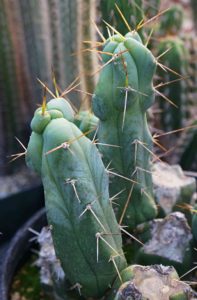
Trichocereus bridgesii X Trichocereus ‘huarazensis’/scopulicola
A beautiful new hybrid of desirable species. So far the seedlings look like short to medium spined bridgesii with interesting scopulicola skin and rib form. Get one while they’re still available! Z9a
[ 4 ] → 1 ~ 4-5″ plant 3+ years old $28.50 SOLD
[ 2 ] → 1 ~ 3″ plant 3+ years old $24.50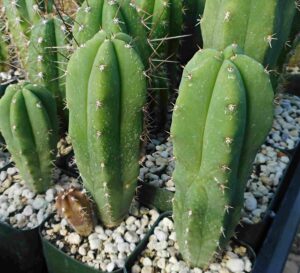
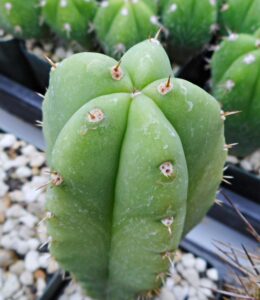
Trichocereus bridgesii SS02 X Trichocereus santaensis BK09511.7 *seed packet*
First offering of this long awaited, stupendous hybrid of our two favorite clones! SS02 crossed with our santaensis accession from the lower Rio Santa Valley. Be among the first to sprout these seeds! (Seed packets are okay to be shipped internationally.)
[ 6 ] → 1 ~ Packet of 10 seed $24
Trichocereus crassiarboreus X Trichocereus pachanoi OST90641
Our T. crassiarboreus mothers were grown from European seed stock– an obscure plant, supposedly a synonym for Weberbauerocereus cuzcoensis, but our plants look intermediate to T. pachanoi and cuzcoensis. Crossed with Ostaloza’s robust wild pachanoi. A unique new hybrid of promise.
[ 4 ] → 2 ~ 3–5″ plants 3 years old $16.50 each or 2 for $29.50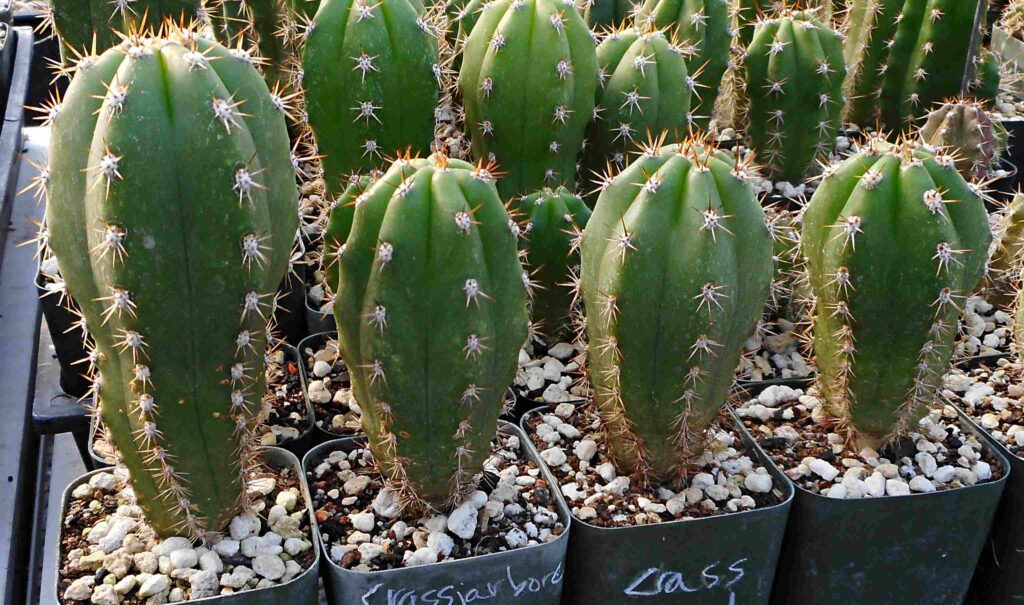
Trichocereus aff. herzogianus X Trichocereus pachanoi BBG?
A totally cool new hybrid. An unconfirmed T. herzogianus we’ve had for years—colossal pale green stems to 10″+ thick and 6’+ tall with almost tuberculate ribs, needle-spines up to 3″ and cream colored, funnel-form diurnal flowers: the back of the outer petals have a pink midstripe, pink to red-brown/green sepals—crossed with the large flowered pachanoi clone from BBG. Very robust handsome seedlings. First offer. Z8?
[ 6 ] → 1 ~ 2-4″+ plant 3 years old $18.50 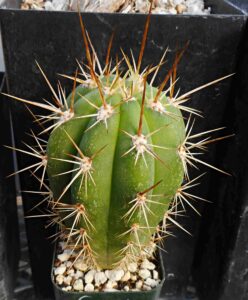
Trichocereus sp. ‘Juul’s Giant’ X Trichocereus huanucoensis
A very appealing new hybrid of these coveted, robust species. 4-6+ chunky, rotund ribs and short to sparse spines, 1/8-1″ long so far. Promises to mature magnificently into upright, gorgeous, fat plants with 4-8″+ diameter stems, white flowers. We’ve only offered a couple highly valued plants of the reverse cross through auction. This is the first offering of this exceptional chunky hybrid. Z9a
[ 6 ] → 2 ~ 3.5-5″+ plants 3+ years old $36.50 each or 2 for $66.50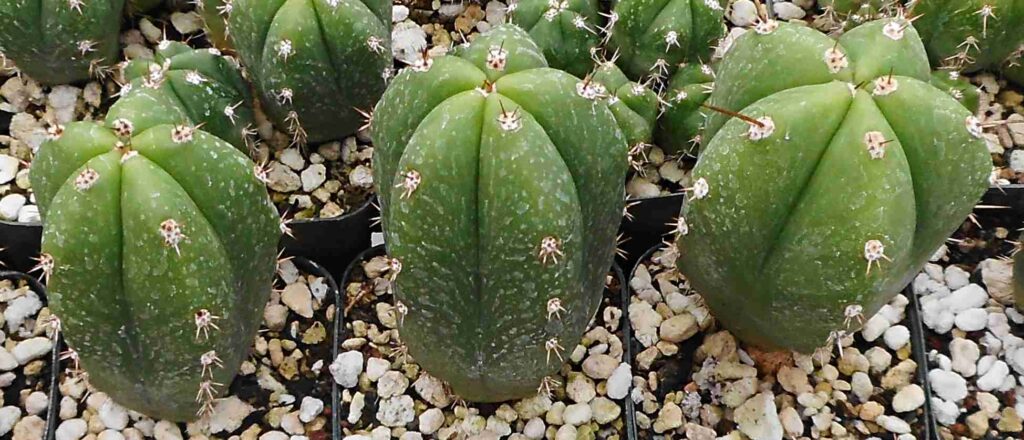
Trichocereus sp. ‘Juul’s Giant’ X Trichocereus sp. ‘Kimura’s Giant’
New, much anticipated hybrid of these thick heirloom pachanoids. Should produce shortish spines, rotund stems, and hybrid vigor. We quickly sold out of the reverse cross recently, this is the first chance at these chunky babies. Z9a
[ 5 ] → 1 ~ 3-4″ plant 3 years old $28.50 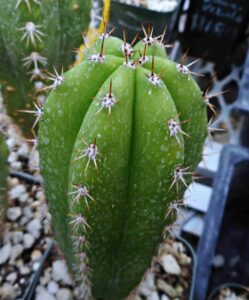
Trichocereus pachanoi ‘Blosser’ cl. A “San Pedro” “Huachuma”
Upright, rounded, glaucus blue/green stems with rounded ribs and small spines. Lovely clone collected by ethnobotanist Bret Blosser and the late Rob Montgomery from the outskirts of Quito city, Ecuador in the 90s. Shows affinity with Peruvian clones like ‘Ogunbodode’ but is distinct with rounder ribs, larger areoles and darker new spines. Like the ‘Lima’ clone, plants grown in full sun tend to have no to very small spines, while plants grown in greenhouse conditions have consistently larger ones. Highly esteemed and valued, only offered a few times via auction where cuttings have gone for upwards of $800! We have a few extra cuts this summer to offer here. Last chance outside of auctions. Z9a
[ 3 ] → 1 ~ 5-6″ cutting $125 SOLD
Trichocereus pachanoi ‘Huancabamba’ “Huachuma” “San Pedro”
Typical “wild” T. pachanoi, upright rounded green stems, smallish spines, white flowers. Seed from Huancabamba, northern Peru, a region long famous for its huachumeros (shamans). Widely cultivated in the area and likely represents part of the natural distribution of the species. A classic clone we’ve grown for over 2 decades. Z9a
[ 5 ] → 1 ~ 8–11″+ cutting $34.50*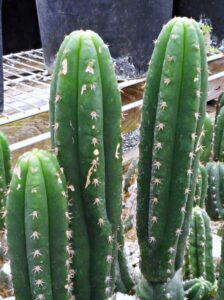
Trichocereus pachanoi Kimnach et al. 2876D “San Pedro” “Huachuma”
Wild San Pedro, fat rounded ribs and 1/4–1″+ spines, white flowers. Collected along the Cajamarca to Namora road, Cajamarca Dept., north Peru. A few nice cuts from Myron Kimnach and friend’s accession. Another classic heirloom San Pedro clone. Z9a
[ 5 ] → 1 ~ 8–11″ cutting $32.50* 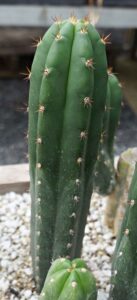
Trichocereus pachanoi ‘Lima’ “San Pedro” “Huachuma”
Upright blue-green stems to 15’+. Rounded smooth ribs. Plants grown in full sun have relatively small spines, interestingly the plants we grow in the filtered light of our greenhouse have larger spines: 1/4–1/2″. White flowers. This is one of the clones planted as an ornamental throughout the sprawling metropolis of Lima, Peru. Similar to ‘Ogunbodode’s Matucana’ for us when grown in sun, when grown in light shade the plant consistently produces slightly larger spines—the exact opposite of many other clones. Surely one of the more attractive San Pedros. In high demand and now mostly limited to our plant auctions, we currently have some extra cuts, get one while you can. Z9a
[ 4 ] → 1 ~ 12-14″+ cutting $76* 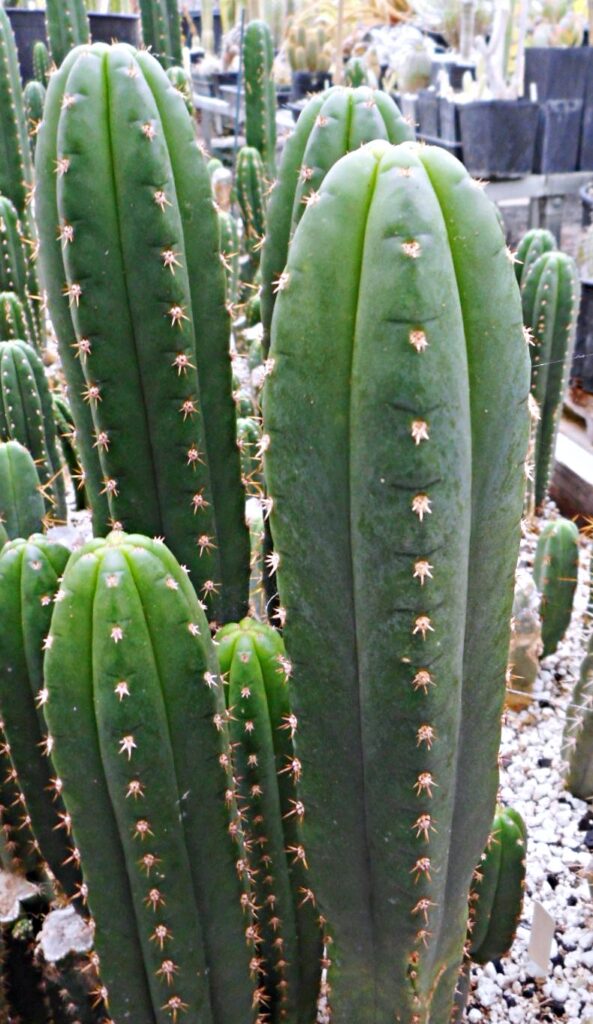
Trichocereus pachanoi ‘Ogunbodede’s Matucana’ “San Pedro” “Huachuma”
Possibly the most coveted Sand Pedro. Upright rounded stems with small spines. Originally imported by K. Trout, reportedly from Matucana, Lima, Peru where we have observed a few T. pachanoi planted around the town. This is the clone that stood out in Ogunbodede’s study. Only available in very limited quantity each year. The demand has been absurd and we’ve only had enough to offer through our email auctions the past couple years. We currently have a few cuttings available. Get one while you can!
[ 4 ] → 1 ~ 5-6″ cutting $120 SOLD
[ 3 ] → 1 ~ 9-10″+ cutting $195*
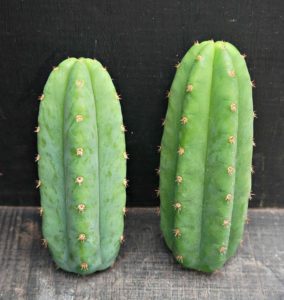
Trichocereus aff. pachanoi BK10508.1 “San Pedro”
A lovely and highly desirable clone with upright columns to 10’+, small spines, large white flowers, edible fruit. Common clone around Cochabamba City, central Bolivia. Looks distinct from the T. pachanoi of Peru/Ecuador, though local botanists refer to it as T. pachanoi. Possibly brought to the region during the Incan colonization of the area in the 1400s. Our collection from the base of Cerro San Pedro, about 1 mile from the Martin Cardenas Botanical Garden, near 8,500′. Growing with Puya mirabilis, Cleistocacus buchtienii, and Carica quercifolia. Also shows affinity with some riomizquensis clones. With the small spines and green to blue-gray-green stems it’s a “must have” for San Pedro collectors; it is among the very nicest pachanoids we’ve grown. Rare in captivity, we usually only have a handful of small cuts to offer each year — get a larger cutting while you can! Z9a
1 ~ 24″ cutting $90** SOLD
[ 4 ] → 1 ~ 14-16″ cutting $66.50*
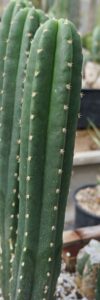
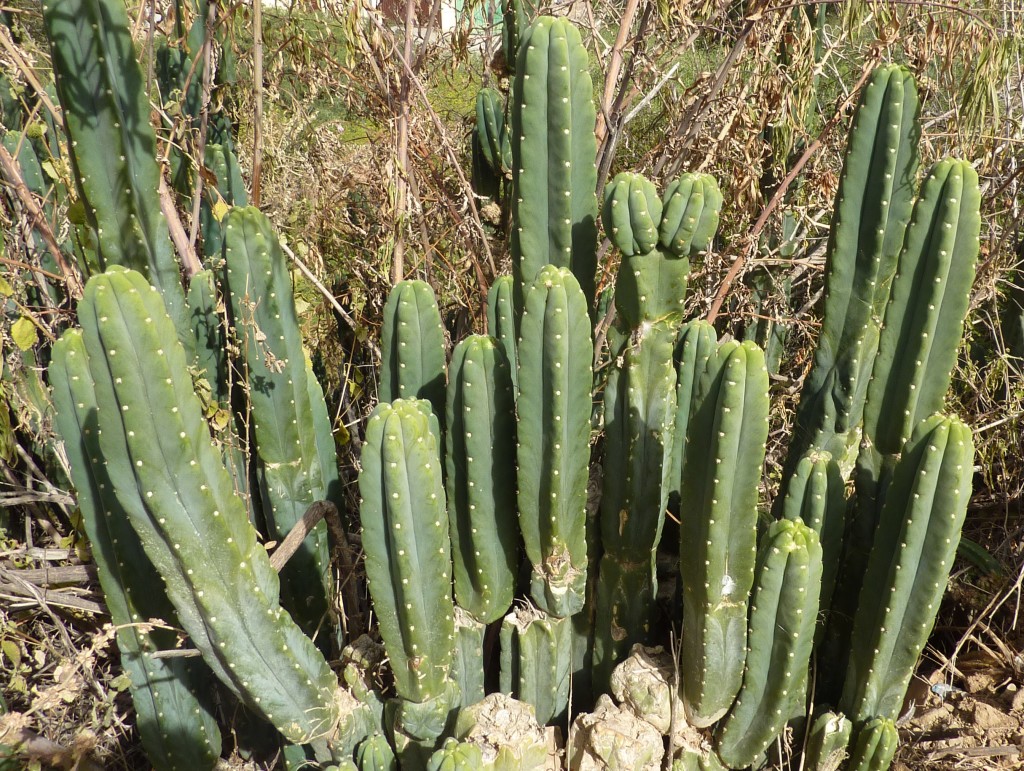 Plant in habitat, Cochabamba, Bolivia
Plant in habitat, Cochabamba, Bolivia
Trichocereus aff. pachanoi BK10512.11 “K’ulala” “San Pedro”
One of our favorite plants. Upright columns to 10′, dark green glossy stems 4–6″ diameter. Distinctive large white areoles, small spines to 1/4″. T. pachanoi like, but distinct from other clones we’ve seen. Planted at a home near Cuchucunata, Cochabamba, Bolivia, 8,250′. The owners called it “k’ulala”. We only offer a handful of cuts each year. Z9a
[ 3 ] → 1 ~ 5–6″ cutting $28.50
[ 2 ] → 1 ~ 8–9″+ cutting $38.50* 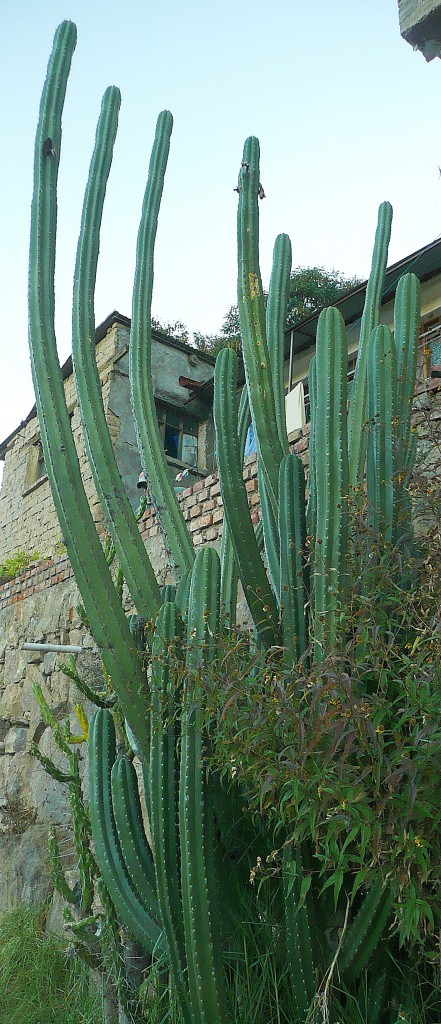
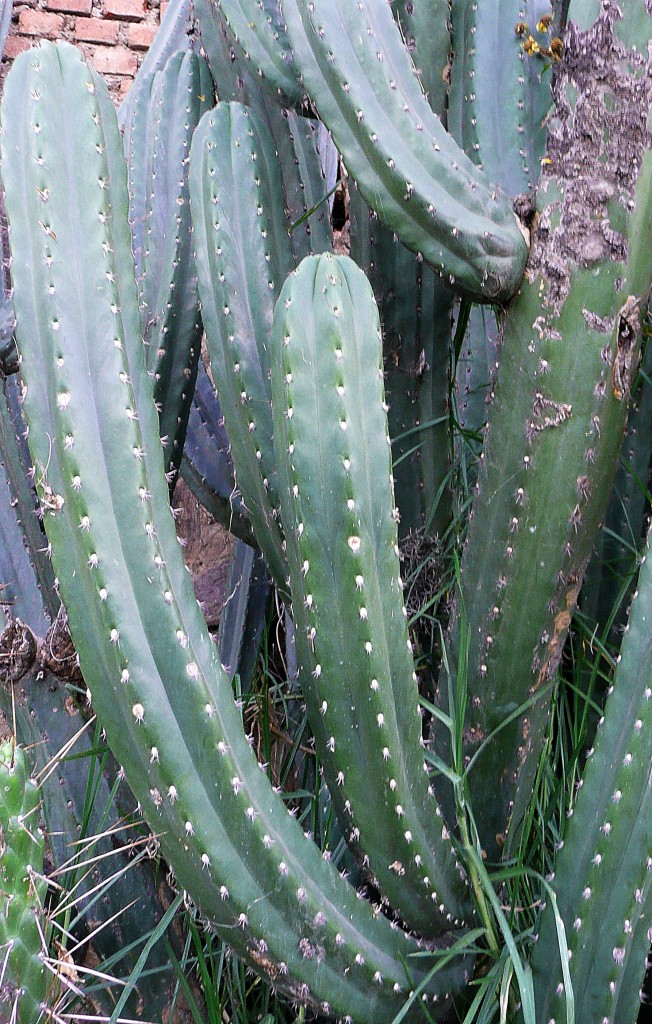
Trichocereus aff. pachanoi Hutchison et al 6212 “San Pedro” “Huachuma”
Upright stems to 8’+ tall and 6″ in diameter. 5–9 fat, rounded ribs and miniature spines. Sweet night blooming white flowers. A really gorgeous San Pedro that is most likely simply a distinct clone of wild T. pachanoi or santaensis. Originally collected above 8,000′ by P. Hutchison and J.K. Wright & R.M. Straw in the Canyon Rio Maranon above Chagual, just below Aricapampa, Huamachuco Prov., La Libertad Dept., Peru. One of our favorites! Z9a
[ 6 ] → 1 ~ 7–9″+ cutting $28.50 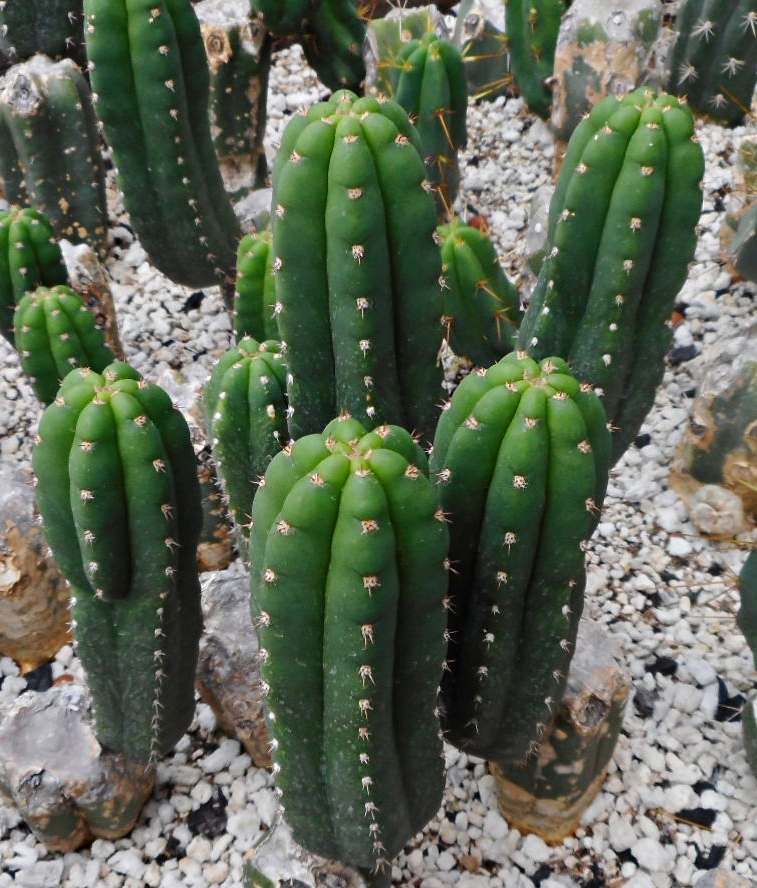
Trichocereus pachanoi Kimnach et al. 2876D X Trichocereus chiloensis
First offering of this admirable new hybrid. Crosses with the aesthetically handsome T. chiloensis are revealing themselves to be some of our favorite hybrids. Chunky seedlings. Z9a
[ 4 ] → 1 ~ 3″+ plant 3 years old $16.50 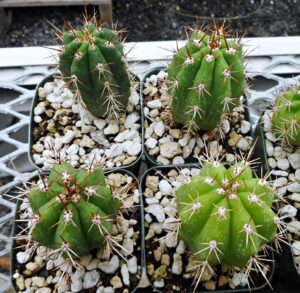
Trichocereus pachanoi X Trichocereus pasacana ‘Dawsons’
Very cool new hybrid of San Pedro with the giant T. pasacana— so far the seedlings show a wonderful diversity of unique spination and form. Truly, a “must have” hybrid for any devoted collector. Z8/9?
[ 10 ] → 2 ~ 2-3″ plants 3 years old $16.50 each or 2 for $29 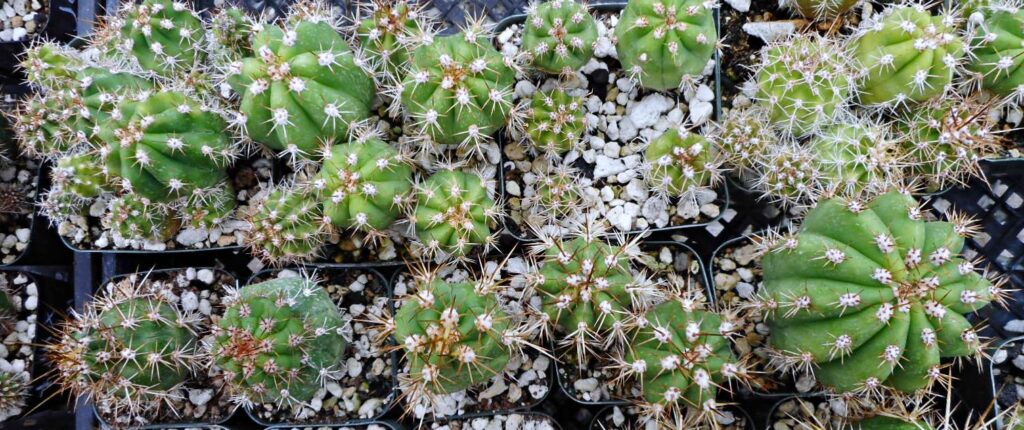
Trichocereus pachanoi f. monstrosus X Trichocereus bridgesii
A solid hybrid of these two beloved species. A nice intermediate of both, medium to long spines, about 5% show mutant growth so far and more are sure to do so as they age. Z9a
[ 6 ] → 1 ~ 2–4″ plant 3 years old $16.50
1 ~ 6″+ plant with long spines 3 years old $22.50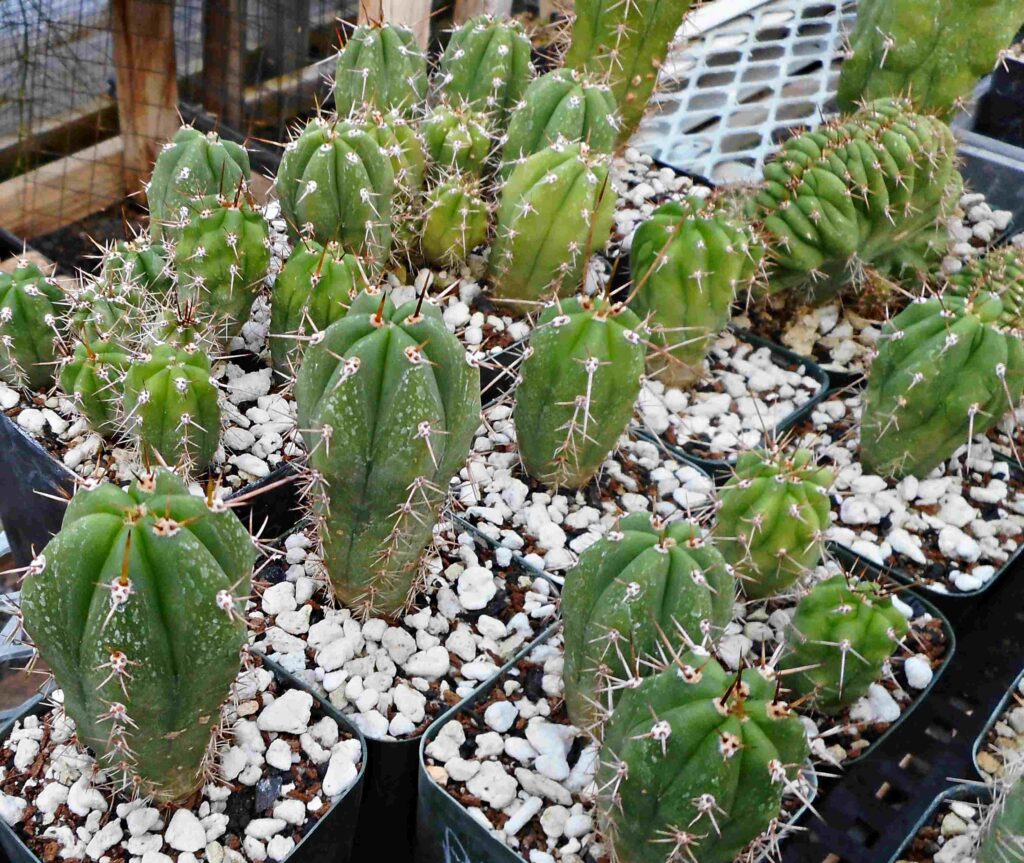
Trichocereus pachanoi/’Juul’s Giant’ X Trichocereus sp. ‘Kimura’s Giant
One of our short spined pachanoi/Juul’s hybrids crossed with the robust ‘Kimura’s Giant’ [the fattest pachanoid plant we grow: 8″+ diameter green stems, short spines to 1/2″]. We sold out of this attractive hybrid years back, but kept a couple plants; we offer the last of them here. Alluring rounded stems, small spines. It has been grown hard outside in partial shade, so the stem remains relatively slender—we expect it to bulk up with greater light exposure. Final chance at this handsome hybrid. Z9a
1 ~ 25″ plant 10 years old $120** SOLD
Trichocereus pasacana BK151014.9 “Pasacana” “Cardon Santos”
Fat specimens to 20′ bristling with long stout spines, large white day blooming flowers, followed by edible fruits known as “pasacana.” Our accession of this magnificent giant from near the Incan outpost of Tilcara, Jujuy, Argentina, 8000′. Considered a “holy” cactus. Ashes of the fruits, seeds and flowers are known to be used in special “llipta” mixtures, lime preparations that are chewed with coca (Erythroxylum species) leaves. A diverse and adaptable cold hardy species. Get seedlings while you can. Z8a
[ 10 ] → 1 ~ 1–2″+ diameter plant 3+ years old $16.50 SOLD
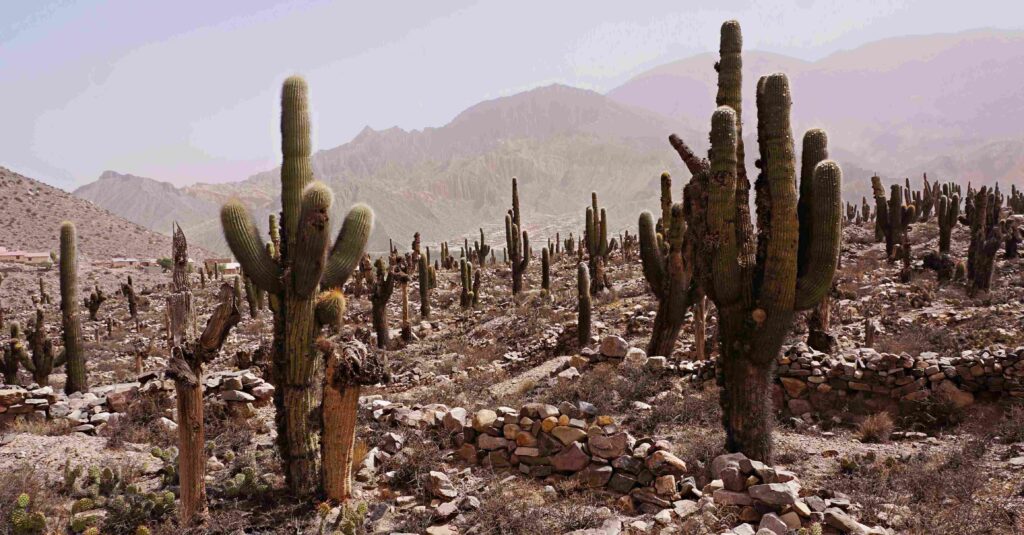
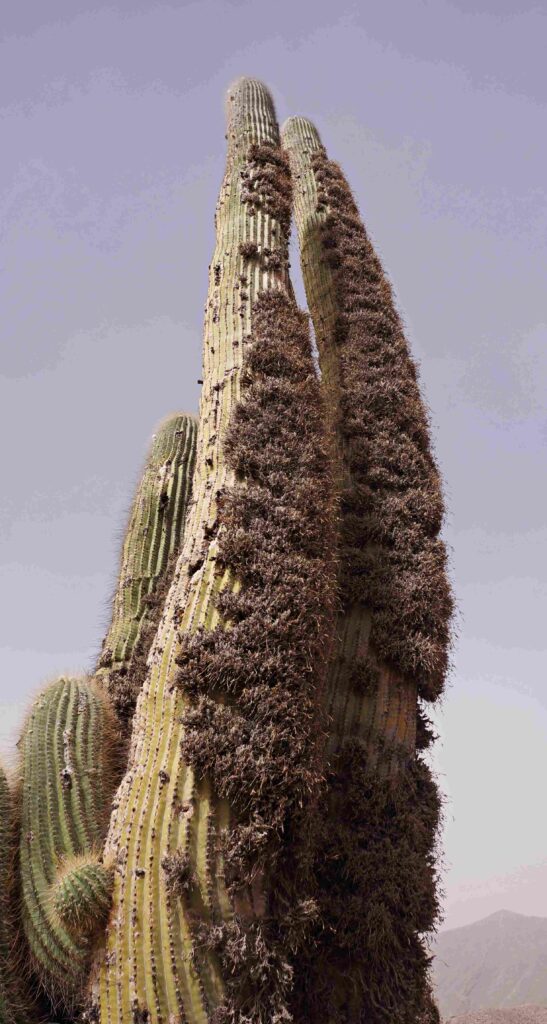 Plants in habitat, Tilcara, Jujuy, Argentina
Plants in habitat, Tilcara, Jujuy, Argentina
Trichocereus peruvianus X Trichocereus sp. ‘Juul’s Giant’ hybrid f. monstrosus
In 1996 we sowed 1000+ seed of this great hybrid. One seedling grew to be a real jewel, with fat blue-green mutant stems with 8–16 ribs and occasionally thick fans of cristate growth. The blossoms on this clone are extra large and also mutant, with many extra sepals and petals!
1 ~ 6″+ cutting $32.50* SOLD
[ 2 ] → 1 ~ 3–4″ cutting $22.50 SOLD
Trichocereus peruvianus X Trichocereus sp. ‘Juul’s Giant’ hybrid f. cristata
Same clone as above, these are cuts of beautiful thick fans of blue-green cristate growth with 1/2″ spines.
1 ~ 6″+ rooted cutting $42.50* SOLD
Trichocereus peruvianus ‘Osmo’ X Trichocereus bridgesii ‘Reynolds’
Gorgeous new hybrid with blue stems and long reddish to blackish spines. The spination on many of these really stands out! Z9a
[ 4 ] → 1 ~ 2.5–4″+ plant 3 years old $18.50 SOLD
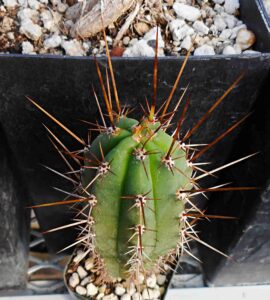 An example of a spiny seedling
An example of a spiny seedling
Trichocereus riomizquensis FR856 “Achuma”
Upright glossy green stems with 5–9 ribs and short spines. White nocturnal flowers. A very rare pachanoid similar to T. bridgesii and T. scopulicola. Seed originally collected by Friedrich Ritter in the late 1950s from plants growing on steep rocky walls; Chujllas, Campero, Cochabamba, Bolivia. From our research in this region in 2010, this population appears to now be extinct. Z9a
[ 4 ] → 1 ~ 7-8″+ cutting $20.50 SOLD
[ 4 ] → 2 ~ 5-6″+ cuttings $18.50 each SOLD
Trichocereus shaferi X Echinopsis subdenudata
New hybrid, should produce interesting tiny spined, clustering plants. The clumping T. shaferi crossed with the diminutive, spineless E. subdenudata (E. inermis). So far the seedlings look like small Echinopsis with extra furry areoles. First offering. Z8/9?
[ 4 ] → 1 ~ 1-2″+ plant 2-3 years old $14.50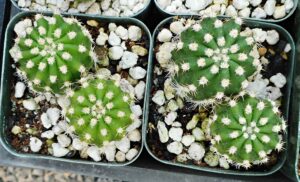
Trichocereus SS01/Juul’s Giant X Trichocereus sp. BK09509.2
SS01 X Juul’s Giant is an old hybrid of ours, in this case an upright, short spined clone which was crossed with our fabled accession BK09509.2 from near the ancient temple of Chavin de Huantar in Peru. First offering of this superb cross! Z9a
[ 4 ] → 1 ~ 2–3″+ plant 3 years old $22.50 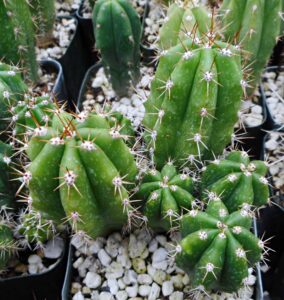
Trichocereus sp. ‘Tammy’
Robust upright blue-green stems to 3–6″ diameter. 1/4–1″+ spines. White flowers. Salvaged from an old stand in Tammy’s yard near Oakland, CA. An attractive plant that looks like an extra fat “wild” T. pachanoi as seen in Ecuador and northern Peru, but without clear providence we’ll leave it as ‘sp’. Two large weathered cuttings with 2 fat pups at the tip. Our stock was damaged last winter, so these are the only large plants we offer this year. Z9a
[ 2 ] → 1 ~ 28″+ long, 4.5″+ diameter cutting $145**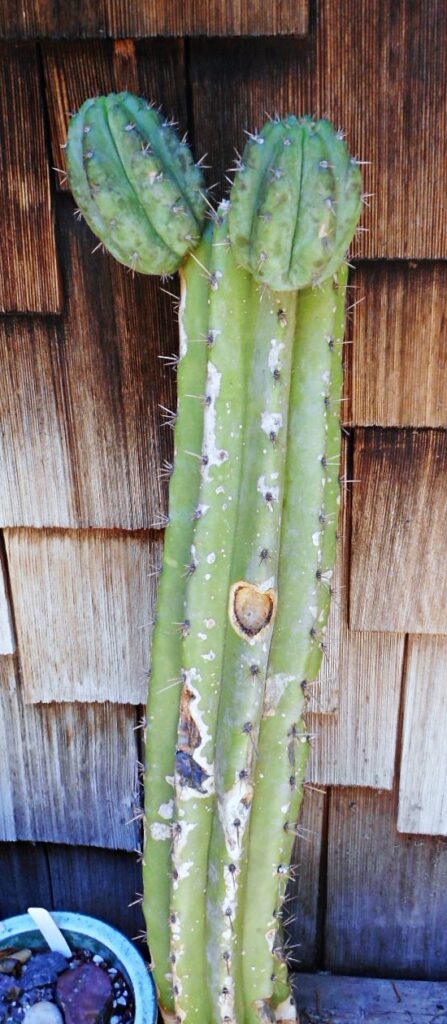
Trichocereus terscheckii BBG X ??
Open pollinated hybrid seed from one of the large T. terscheckii Myron Kimnach planted many decades ago at the Berkeley Botanical Gardens; the father skipped town before paternity could be determined! Dark blue-green stems, large, fuzzy areoles, thick attractive spines. By the look of the spination we suspect T. taquimbalensis or one of it’s close kin is likely the dead-beat-dad. The very last chance to take home one of these beautifully spined mystery plants! Z8a
1 ~ 5″ tall, 4″ diameter plant 10 years old $60* SOLD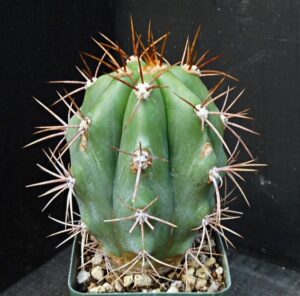
Trichocereus sp. Torres & Torres
Dark green upright stems to 12’+ in height and 6″+ in diameter. Small, stout, amber colored spines. Odd, smallish white flowers. Unusual plant similar to T. pachanoi and some forms of T. macrogonus. Collected and favored by archaeologist Manuel Torres & his wife Donna in the arid northern part of central Chile, near 9400′. We’ve offered this lovely heirloom clone for over 25 years now. Z9a
[ 4 ] → 1 ~ 9–11″+ cutting $30.50*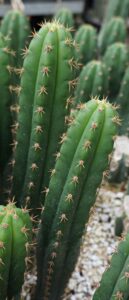
Trichocereus tulhuayacensis KK337 X T. peruvianus/ ‘Juul’s Giant’ hybrid f. monstrosus
A thrilling new hybrid. The spiny magenta flowered tulhuayacensis impregnated by the large blue-green peruvianus/Juul’s mutant. The monstrose/cristate genes, colored flowers and exceptional spines should combine in unexpected and novel ways. First offering of a couple attractive seedlings that show ‘normal’ growth so far, but may mature into mutation. Get one while you can! Z8b/9a?
[ 5 ] → 2 ~ 2.5-3.5″+ plants 3 years old $38.50 each or 2 for $69
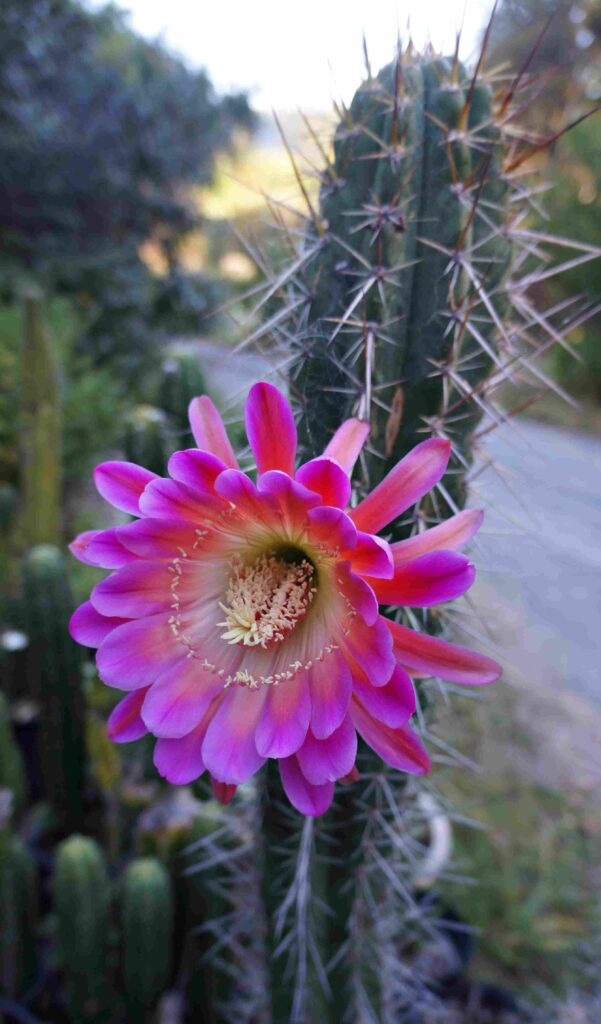
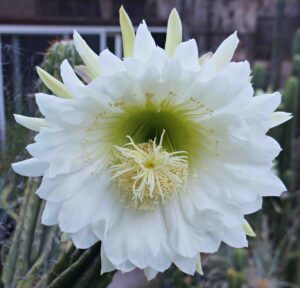 Parent plants in bloom
Parent plants in bloom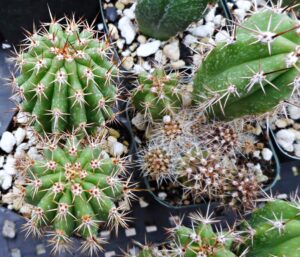 Examples of monstrose seedling diversity
Examples of monstrose seedling diversity
Trichocereus tulhuayacensis KK337 X Trichocereus santaensis BK09511.7 *seed packet*
A fantastic first time seed introduction! The gorgeous spined, magenta flowered tulhuayacensis mated with our most coveted santaensis clone. We expect exquisite, hardy children! Z8b/9a? (Seed packets are okay to be shipped internationally.)
[ 4 ] → 1 ~ Packet of 10 seed $20
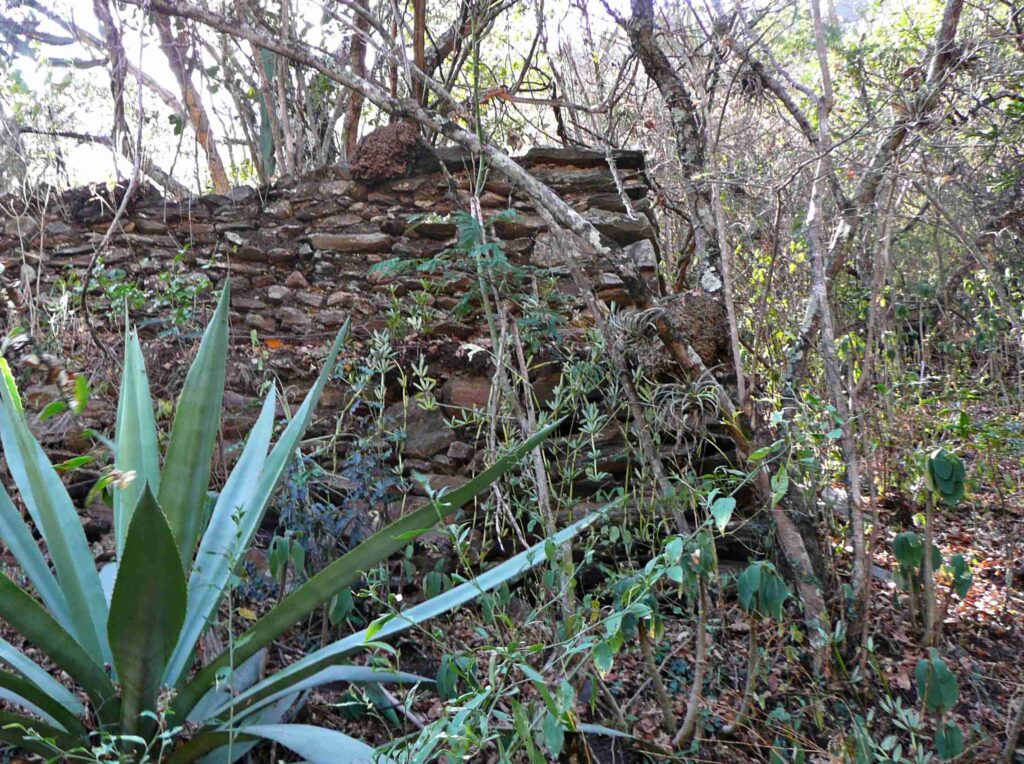 Furcraea and Peperomia spp. growing in Anadenathera understory among ancient ruins,
Furcraea and Peperomia spp. growing in Anadenathera understory among ancient ruins,
Pasto Grande, Yungas, Bolivia
Other Succulents & Xerophytes
Abromeitiella lotteae
Bromeliaceae. Little 1–2″ rosettes of small triangular leaves, green with silver-gray flecking. Will eventually form large dense mounds to several feet across. Small tubular wine-red flowers with green tips. This rare red flowered species from southern Bolivia is exceedingly scarce in cultivation. The recent popular trend in genetic studies is to lump Abromeitiella into the genus Deuterocohnia, but there is plenty of valid reason to keep this unique genus intact. Gorgeous clusters with many heads. Z9b?
[ 5 ] → 1 ~ 4-5″+ clustered plant 5 years old $29.50 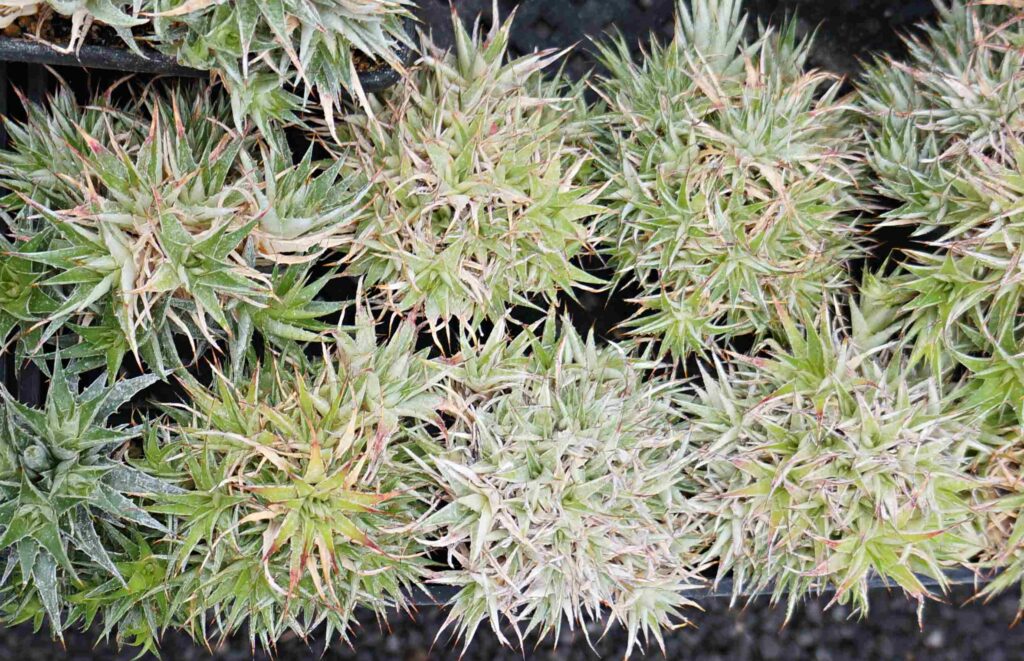
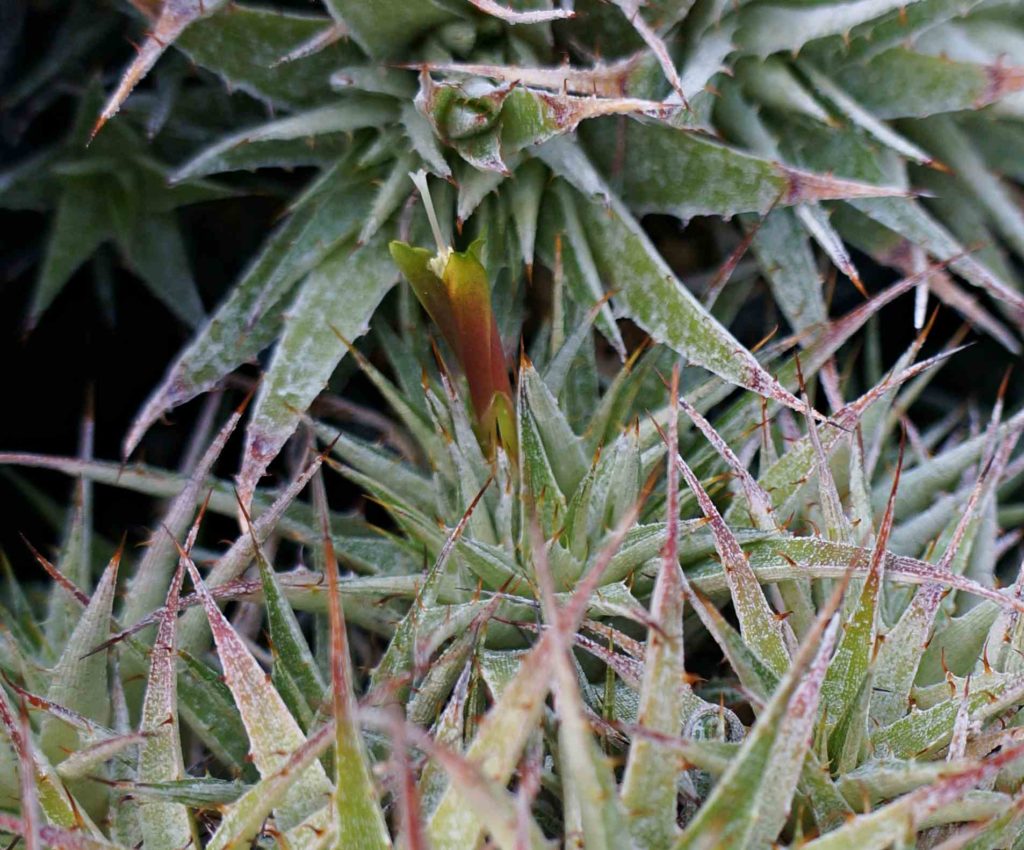
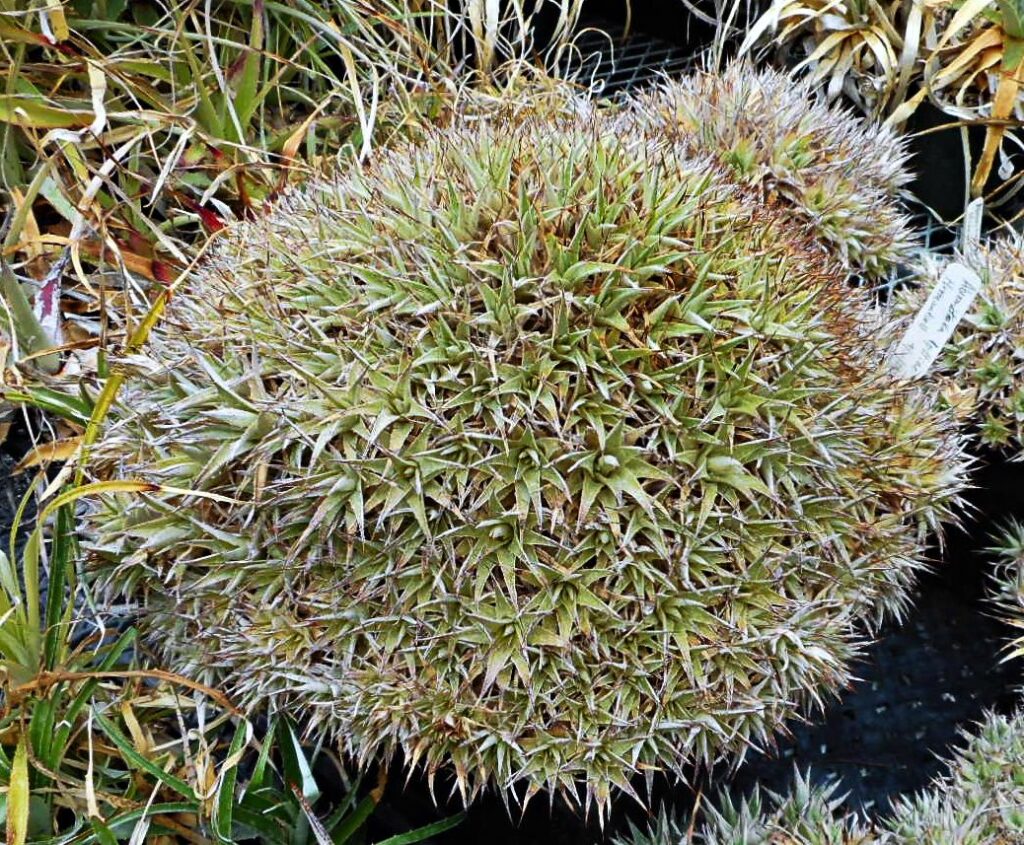 Mother plant
Mother plant
Agave cordillerensis NL52409a “Llacay Blanco”
Agavaceae. Clustering rosettes to 6’+. Leaves gray-blue with darker banding and toothed margins. Flower stalks to 20′ with curved or sometimes looped branches, yellow flowers. For decades botanists dismissed this Andean agave as A. americana — until G. Pino redescribed it as its own distinct species based on its different leaves, stoloniferous propensity, radically different flower stalks and fruit form. A beautiful, hardy and versatile species used for its leaf fibers. Widely planted as impenetrable hedgerows to fence in livestock, demarcate fields and act as firebreak. Unknown in cultivation outside the Andes. N. Logan collection; Luribay, Bolivia, 8,000′. A key Trichocereus companion. Z8b/9a?
[ 6 ] → 4 ~ 3″+ plants 2-3 years old $15.50 each or 2 for $25.50 or 4 for $45
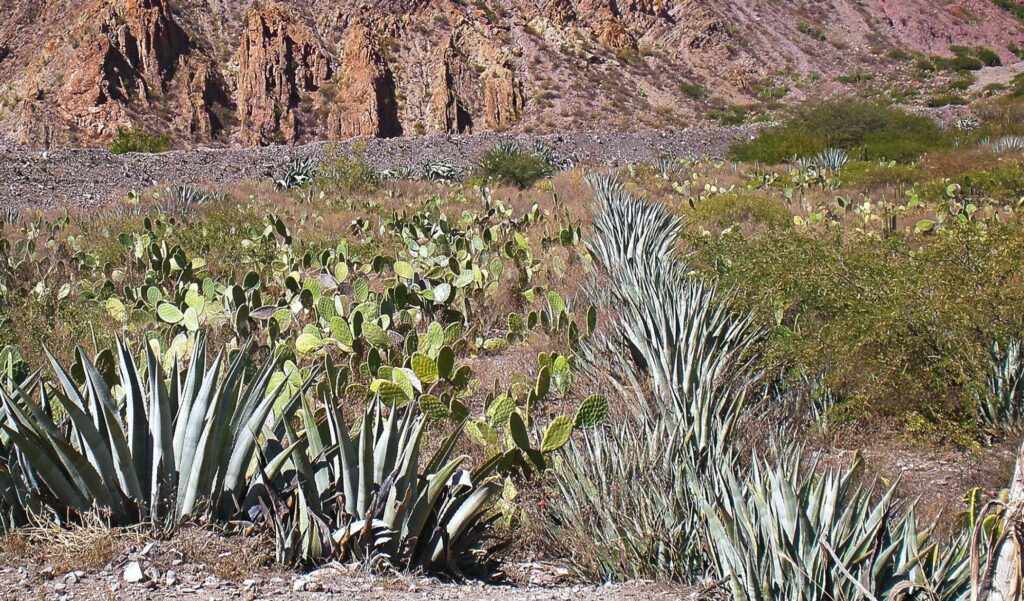 Planted hedgerows, Luribay, Bolivia
Planted hedgerows, Luribay, Bolivia
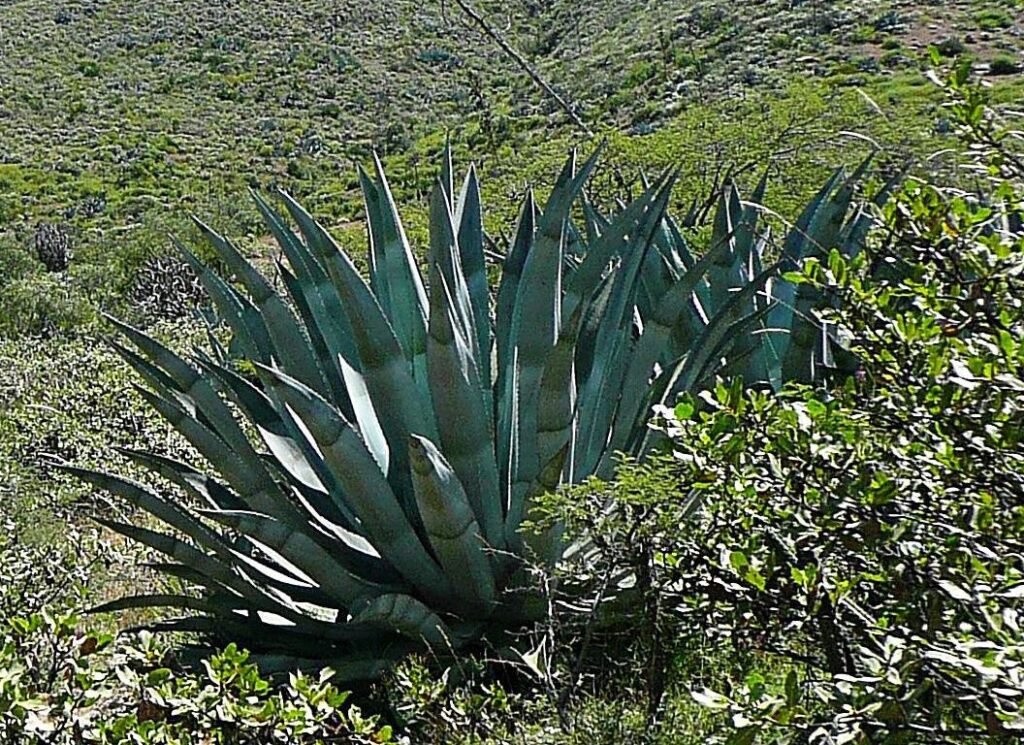 Specimens in Ancash, Peru
Specimens in Ancash, Peru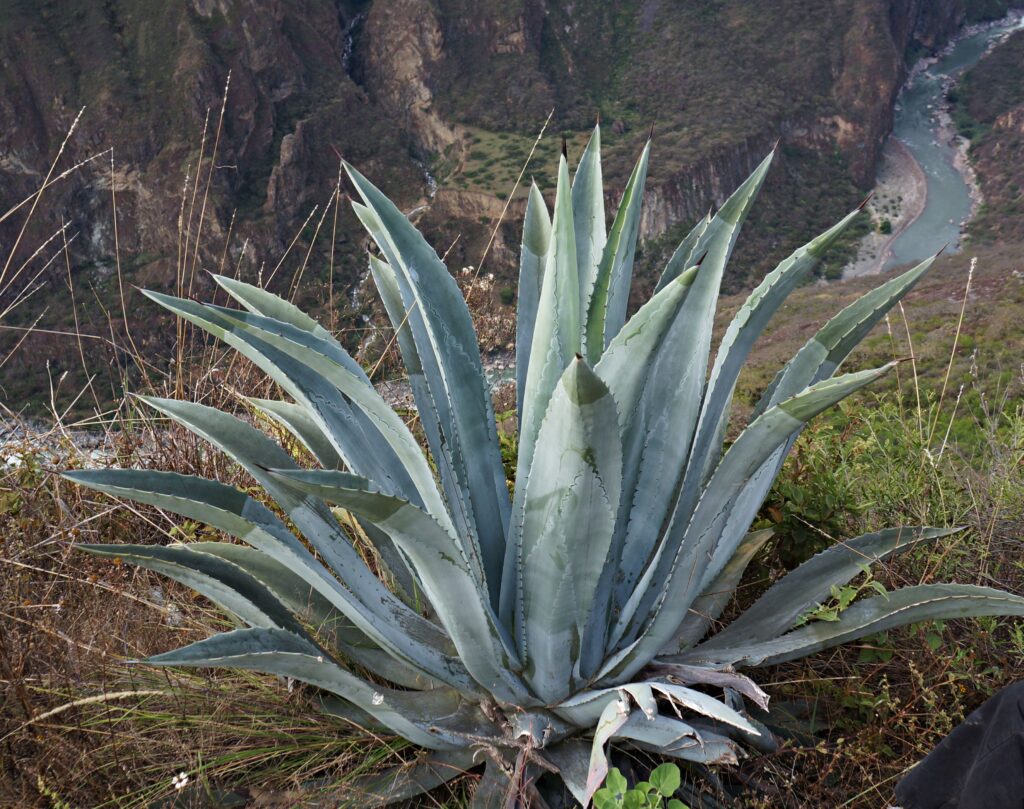 Apurimac, Peru
Apurimac, Peru
Aloe marlothii “Mokgopha”
Liliaceae or Aloaceae. Forms a small tree up to 20′ tall. Rosettes of green to reddish leaves with impressive red thorns and horizontal racemes of showy amber yellow flowers. In addition to this Aloe being a source of Cape aloes and a common medicine for stomach troubles, the dried and powdered leaves are popular among natives as an admixture to psychoactive snuffs. Makes a bold landscape plant or potted specimen. Mature plants tolerates mild frost. Z9a–b
[ 4 ] → 1 ~ 4–8″ plant 3+ years old $12.50 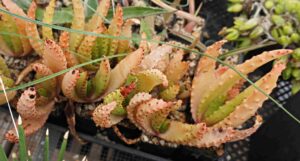
Barbaceniopsis vargasiana BK14513.4
Velloziaceae. Dense clusters of slender, stiff, leaves to 3″, forming mats to several feet across. Leaves are dark green with moisture but turn a dark purple-gray in the dry season. Star-shaped pale pink flowers held on slender stems above the plant. Dry rocky slopes above the Apurimac River, Peru, near 6000′. A very cool mini mounding member of this unique plant family! Should be extremely drought hardy when established. Will do well in any succulent collection. Z9b?
[ 4 ] → 1 ~ 2-3″+ plant 5+ years old $19.50
Beaucarnea sanctomariana “Santa Maria Ponytail Palm”
Agavaceae. Branching caudiciform tree 12–24′ tall. The conical swollen trunk can reach 5′ across and has thick brown-gray bark that matures with a rectangular to polyhedral pattern. The elongated slender branches are crowned with spherical rosettes of recurved, bright green, grass like leaves to 2.5′ long. Branched inflorescence to 3′ with many small cream-yellow flowers. This newly described, endangered species is a microendemic of rocky outcrops in the deciduous dry forest of the Isthmus of Tehuantepec, Oaxaca, Mexico. A rare chance for a superb specimen of the coveted caudiciform. Z10a
[ 2 ] → 1 ~ 14″+ plant with 4″+ caudex 9+ years old $69.50* 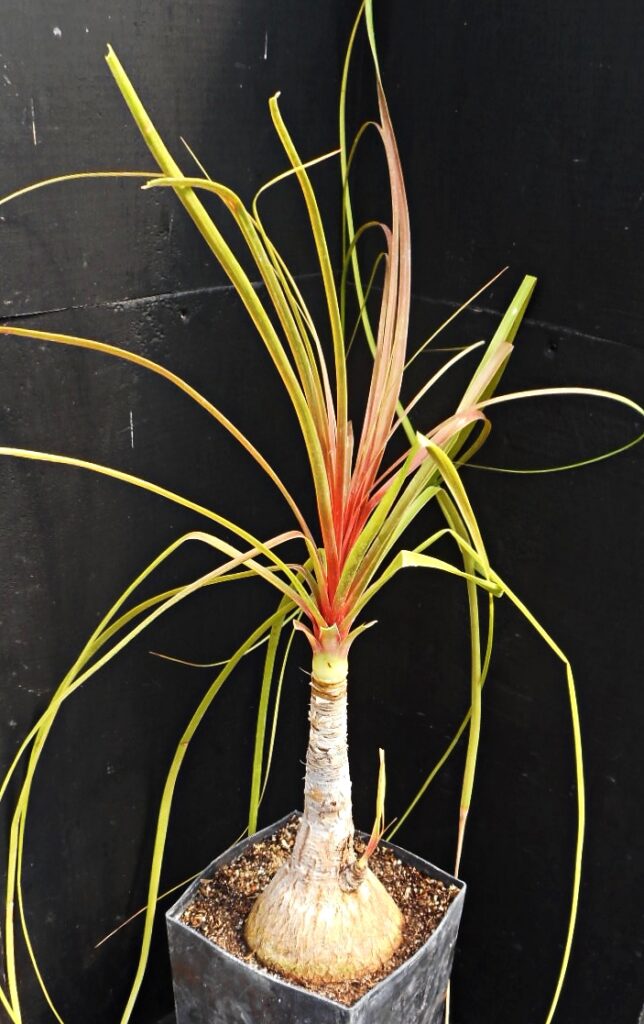
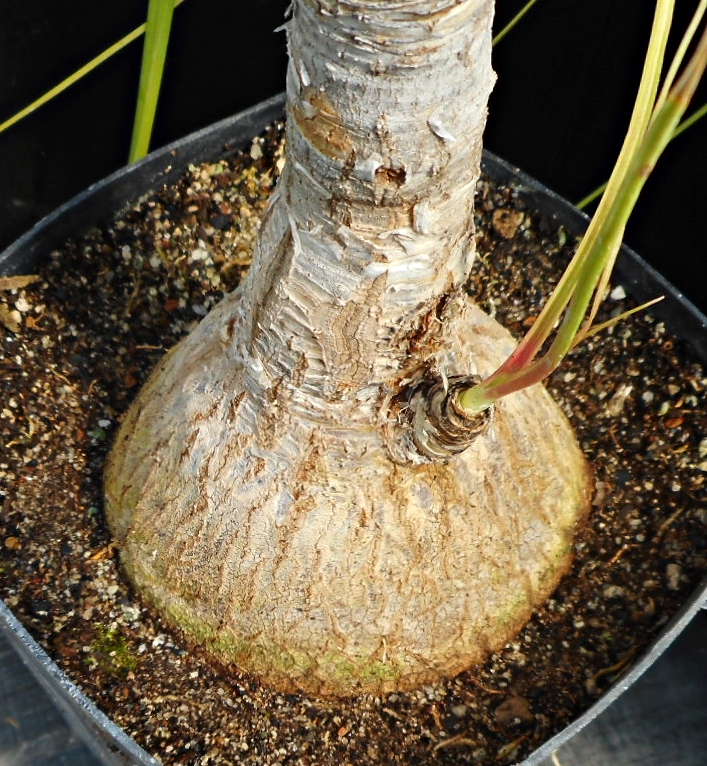
Boophane disticha “Gifbol” “Incwadi” “Leshoma”
Amaryllidaceae. Large bulb usually growing partially above ground. Annually produces a dense umbel of numerous pink-red flowers followed by a fan of blue-green strap-like leaves. Occurs sporadically throughout southern Africa up into central Africa. This bulb has a long and extensive history of ethnobotanical use. Applied externally for skin diseases and wound healing. Weak decoctions are said to be an effective sedative. An arrow poison was made from the bulb mixed with Euphorbia latex. The plant is still sometimes utilized as a hallucinogen for divination, overdose is often fatal. Slow growing, usually flowering after 6–8 years from seed. In the wild plants have been found with bulbs over 12″ in diameter believed to be over a century old! Does best with a well draining soil, at least 50% pumice. They usually stay dormant until mid-summer. Water regularly when in leaf, dry while dormant. Cultivation is said to ward off bad dreams and bring good luck. Z9b
[ 4 ] → 1 ~ Bulb 5+ years old $28.50
Bursera fagaroides “Copal”
Burseraceae. A really wonderful plant. Shrub or small tree to 20′. Thick swollen trunks and limbs with smooth golden bark that exfoliates in thin papery sheets. Pinnate leaves, tiny flowers followed by purple green berries. Widespread throughout the Sonoran and Chihuahuan deserts of Mexico. The sap is the most common source of Copal, highly aromatic with a sweet citrus like scent. Dormant much of the year, leafing out only with the onset of hot weather. They defoliate in autumn with an attractive display as the leaves change to yellow, orange and red. Z10a
[ 3 ] → 1 ~ 18-20″ treelet 3+ years old $25.50*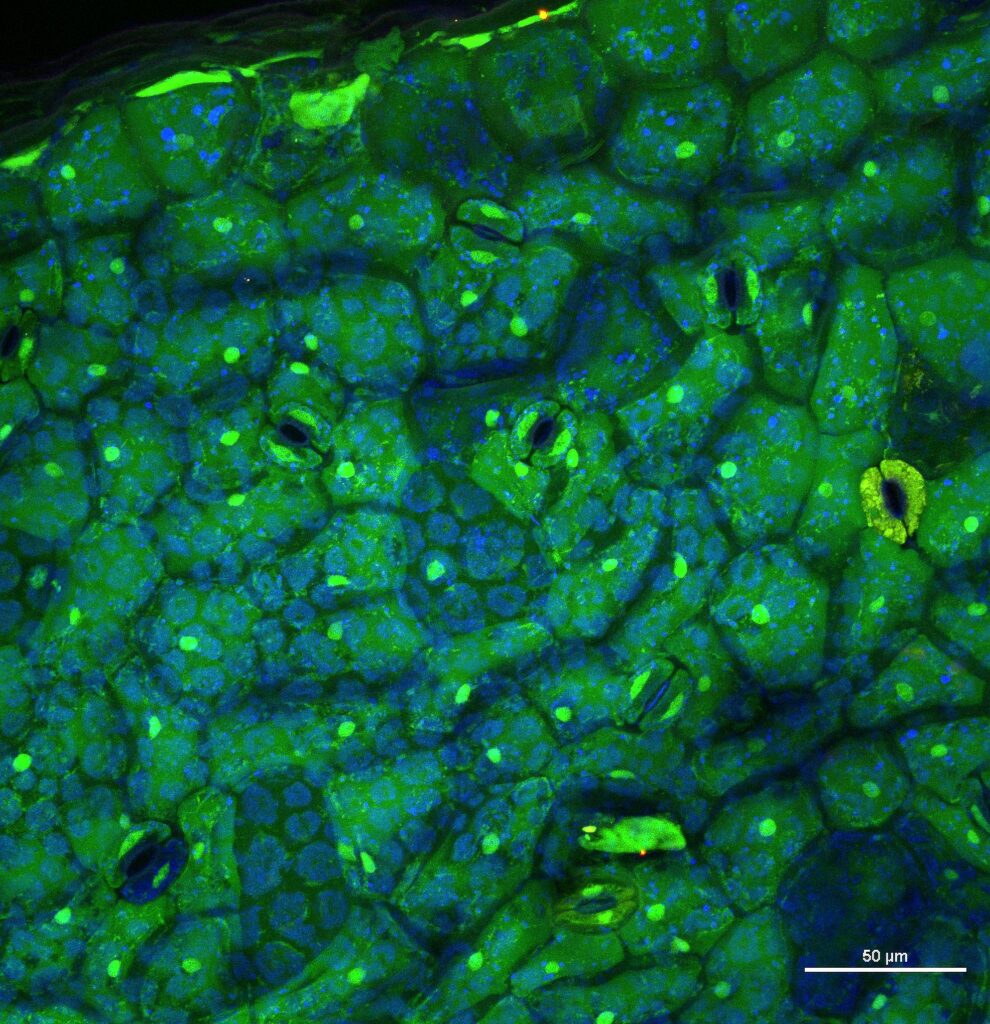
Bursera fagaroides scanned at St. Lawrence University’s Microscopy & Imagery Center, from Microcosms: A Homage to Sacred Plants of the Americas (https://www.microcosmssacredplants.org/), used with the permission of Jill Pflugheber & Steven F. White, © 2023.
Bursera odorata “Torote Blanco” “Copal”
One of the smaller Copal species, usually a dwarf tree under 10′. Swollen caudiciform trunk with golden peeling bark. Pinnate leaves, small yellow flowers. Mountain to coastal dry forest, Baja and mainland Mexico. The sap is very aromatic with a sweet-balsam odor. Easy to grow, cultivate like other species. Currently winter dormant. Z10a
[ 4 ] → 1 ~ 10-12″+ treelet 3+ years old $24.50 SOLD
[ 2 ] → 1 ~ 7-9″+ treelet 3+ years old $22.50 SOLD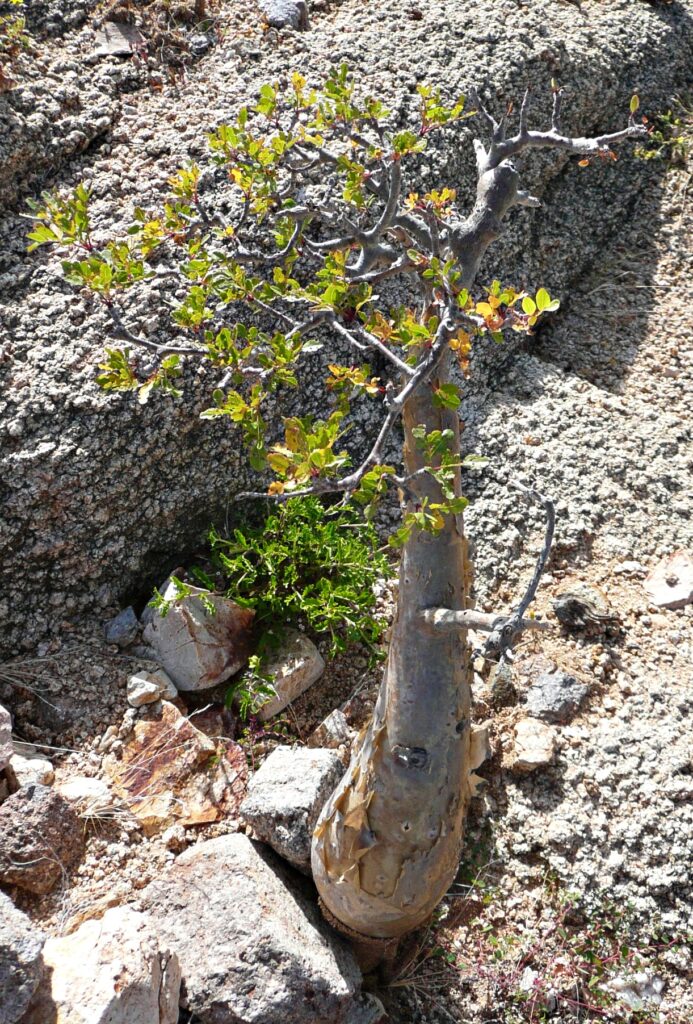
Natural bonsaid Bursera odorata, coastal Baja Sur
Bursera microphylla “Copal Oro” “Torote Blanco” “Xoop”
Shrub or low branched tree with thick contorted trunks. Young branches are red-brown, bark of older limbs turns whitish yellow to bronze gold, peeling in papery flakes. Thin pinnate leaves. Intoxicatingly aromatic sap, known to squirt from the branches when handled during hot weather. Grows in isolated areas of southeast California, southwest Arizona, western Sonora and most of Baja. US populations are considered at risk. The Seri knew the tree to have a powerful spirit, it featured prominently in religious practices. During vision quests they would fast for 4 days often drinking only tea made from the branches. Leaves, twigs and fruits have many medicinal purposes, twig tea being a particularly effective disinfectant. Source of gold Copal incense. The inner bark was made into a face paint, said to bleach a person’s skin white with continued use. A great natural bonsai. Winter dormant. Z9b
[ 4 ] → 1 ~ 6″+ treelet 3-4 years old $28.50 SOLD
Carica pubescens BK08522.5 (=Vasconsellea pubescens) “Andean Papaya” “Chamburo”
Caricaceae. Pachycaul tree 8-16″+. Bottle shaped, caudex-like trunk to 20″+ diameter. Very attractive digitate leaves crown the trunk. Edible and sweet papaya fruit to 6” borne along the upper trunk and turning yellow/orange when ripe. Seed collected from Ollantaytambo, Cusco Dept., Peru, 9300′. The green fruit are cooked as a vegetable. Probably the hardiest of the sweet papayas. One of the parent of the ‘Babaco’ hybrid cultivars grown throughout South America. Fruits surprisingly well here in northern California in areas of mild frost. Folks are always shocked to find you can grow papayas here. Protect plants from freezing when young. Highly drought tolerant, though dislikes prolonged excessive heat. Can be bonsaid and grown like a caudiciform succulent. We have just a couple treelets left! Z9a/b
[ 5 ] → 2 ~ 12″+ treelets 3+ years old $24.50 each SOLD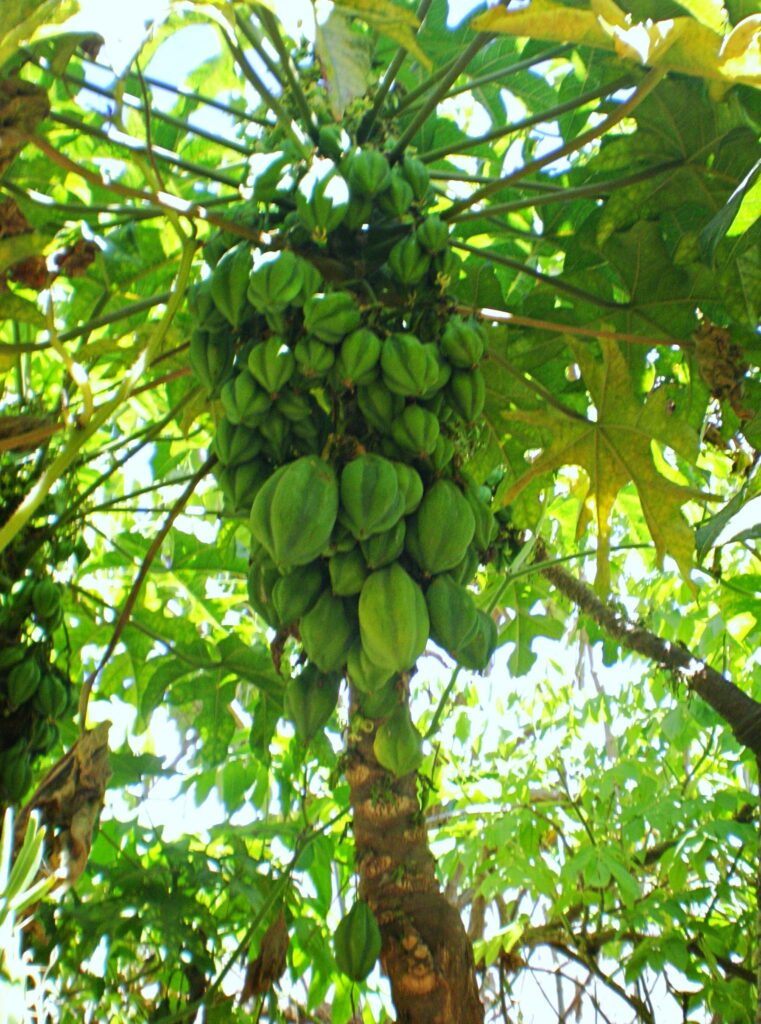
Carica quercifolia (=Vasconsellea quercifolia) “Urqok’aralawa” “Gargatea” “Dry Forest Papaya”
Deciduous pachycaul tree 10-30″+. Thickened caudex like trunk to 24″+ diameter, eventually forming gorgeous golden to bronze/copper peeling/flaking bark. A Bursera look-alike when not in leaf. Large drought deciduous leaves. Fragrant yellow-green flowers, unisexual. Deep orange, 2–4″ miniature papaya fruit, highly edible and borne in mass. An Andean dry forest native, we’ve observed this stunning species in habitat between (6000–9000’+) in central Bolivia growing with T. aff. pachanoi and in northern Argentina where it grew with Anadenanthera colubrina. Very rare in cultivation. Grow like other dry forest or succulent trees. Can be bonsaid. Tolerant of some frost but only when kept relatively dry. Currently winter dormant. Last chance at this beauty! Z9b
[ 4 ] → 1 ~ 6″ plant 2+ years old $28.50 SOLD
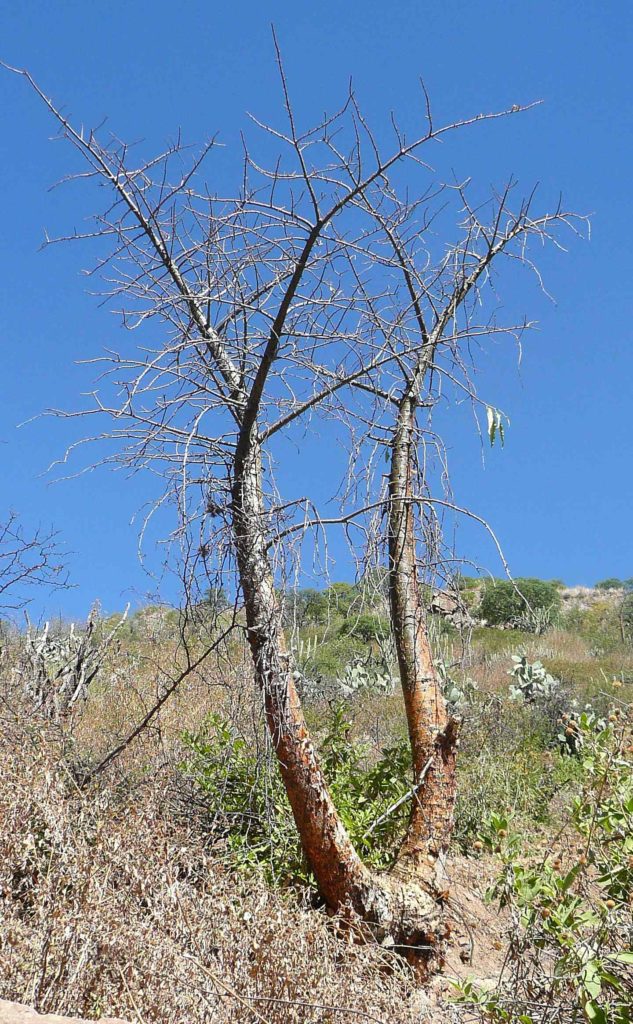 Plants in habitat, Cochabamba, Bolivia
Plants in habitat, Cochabamba, Bolivia
Deuterocohnia longipetala
Bromeliaceae. Puya-like multiheaded mounds to 2–4′ made up of rosettes of recurved, toothed, silver leaves. Erect branched inflorescence with tubular yellow flowers. Seed from the dry valleys of northern Peru where it occurs up to 5000′. A beautiful pineapple relative and good Trichocereus companion. Sun and drought hardy. Z9b
[ 8 ] → 4 ~ 3–4″+ plants 5+ years old $11.50 each or 2 for $17.50 or 4 for $30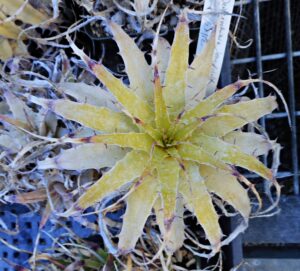
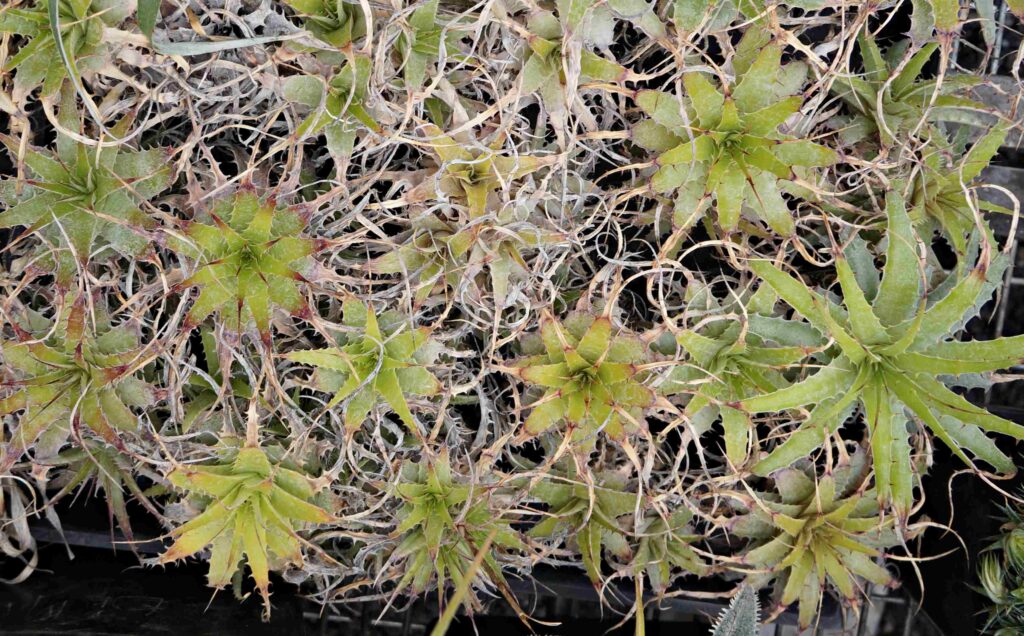
Dioscorea sylvatica
Dioscoreaceae. A South African yam species that forms an attractive smooth woody caudex, sometimes branched or lobed. Annual, thin twining vines and lovely heart shaped leaves. Decoctions of the caudex are used for chest conditions, as a blood purifier and ritual emetic. Used topically for rashes and swelling. A significant source of diosgenin that was once used for synthesizing birth control pills. This plant responds well to cultivation and makes an easy and unusual houseplant. Regular succulent care and dry winter rest. Z9a
[ 3 ] → 2 ~ Plants with 1.5-2″+ caudex, 4 years old $18.50 each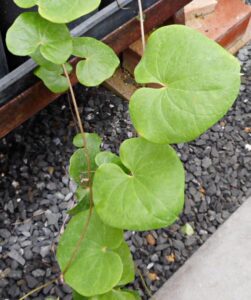
Echeveria ballsii
Crassulaceae. Short stemmed, clustering rosettes of beautiful slender dark green leaves with red-purple margins and speckles. Peach-red flowers with yellow interior. This rare species from the cloudforests of Columbia was thought to be extinct in the wild until recently rediscovered. This clone collected by Robert Wellens, Masquera, Cundimarcana, Columbia. Prefers a bright, cool environment. Z9a?
[ 3 ] → 1 ~ 2″+ plant $14.50
Ephedra minima “Dan Zi Ma Huang”
Ephedraceae. Small mat-forming species 4–10″ tall. Yellow flowers and bright red berries. Native to dry rocky areas of China, Mongolia and Russia to 14,000′. Ephedrine rich, used in Oriental medicine like other species. Makes an unusual and hardy groundcover, to Z4b
[ 6 ] → 1 ~ 2–3″ plant 1–2 years old $16.50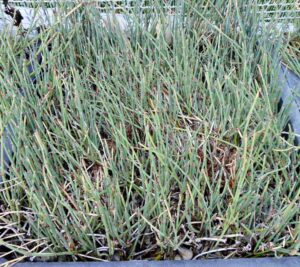
Ephedra regeliana “Xi Zi Ma Huang”
Dwarf mat-forming species with leafless stems to 3″+ high. Red edible berries. Rare endemic of the steppes of the Central Asian high mountains. Used in traditional medicine, rich in ephedrine alkaloids. A great groundcover for the rock garden. Z4–5a
[ 6 ] → 1 ~ 2–3″ plant 1–2 years old $17.50 SOLD
Erythrina flabelliformis ‘Skeleton Canyon’ “Chilicote” Colorin”
Fabaceae. Pachycaul tree 10–30’+. Beautiful, smooth grey bark with striations of white and green. Deciduous trifoliate leaves and spined stems. Many flowered racemes of brilliant bright red flowers in the Spring. Red to orange or yellow seeds. Restricted areas of southern Arizona, new Mexico and remnant dry forest throughout northern Mexico and Baja. Seed from Skeleton Canyon, Hidalgo Co., NM. The seeds are often used in jewelry, though they are quite toxic. Small amounts are used medicinally. There is speculation that the seeds may have once been used as a psychoactive additive to maize beers by the Chiricahua Apache. Z9b/10a
[ 6 ] → 2 ~ 6″ plants 3+ years old $14.50 each or 2 for $25
Erythrina flabelliformis ‘Santa Rita Mountains’
Seed from the biodiverse Santa Rita Mountains, Arizona.
[ 6 ] → 2 ~ 6″ plants 3+ years old $14.50 each or 2 for $25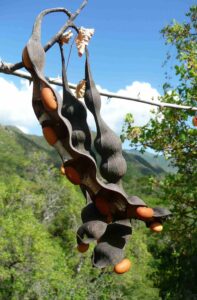
Fockea edulis “Bergkambroo”
Asclepiadaceae. Develops a large warty caudex/tuber up to a foot in diameter and several feet long. A mass of twining stems arise from the top of the caudex. Small unusual star like flowers. This oddity has a long history as an important food and water source for the tribal people of South Africa and has contributed over the ages to human survival in the Kalahari desert. The caudex is eaten fresh, baked like sweet potato and made into a chunky jam. Easily grown and a favorite among caudiciphiles. Tolerant of mild frost if well mulched. Nice specimens that have been underpotted for years, encouraging unique root/caudex form. Z9b
[ 2 ] → 1 ~ Plant with 6″+ tall, 1″+ diameter caudex, 7+ years old $28.50 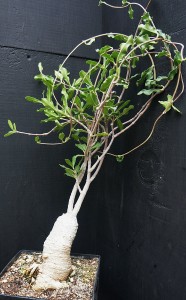
Furcraea longaeva
Agavaceae. Rare Yucca/Agave relative from central Mexico with rosettes of deep green to blue green sword-like leaves. Eventually forms a trunk to 6′ tall. The branched inflorescence can reach over 40′ tall! The largest of the genus, makes a bold and beautiful landscape plant in areas of mild frost. Very seldom offered. We have a final specimen kept manageable in pots for years–will grow quickly when potted up or planted out. Z9b
[ 2 ] → 1 ~ 24″+ tall plant 8+ years old $64.50**
Geissorhiza corrugata
Iridaceae. Dwarf bulb with very cute, blue-green, spirally curled slender leaves to 2″+. Lovely, bright yellow crocus-like flowers. Shale slopes, Roggeveld Center, South Africa. Winter grower, give it gritty soil and dry summer rest. Bright sun for maximum leaf curliness! Z8a
[ 9 ] → 6 ~ Plants/bulbs 4+ years old $12.50 each or 3 for $27.50 or 6 for $46.50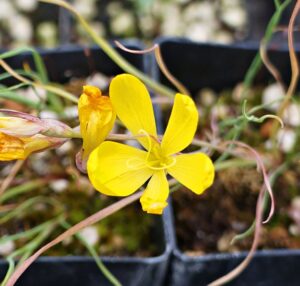
Hechtia sp. ‘Rio Zapotitlan’
Bromeliaceae. Lovely terrestrial pineapple-relative. Rosettes of long, recurved, deep green leaves with silver flecking; takes on red and purple coloration in strong light. Large, curved, reddish marginal spines. Seed from Puebla, Mexico. An attractive unidentified plant–possibly a new species. Z9b/10a?
[ 6 ] → 4 ~ 3–4″+ plants 4+ years old $11.50 each or 2 for $18.50 or 4 for $32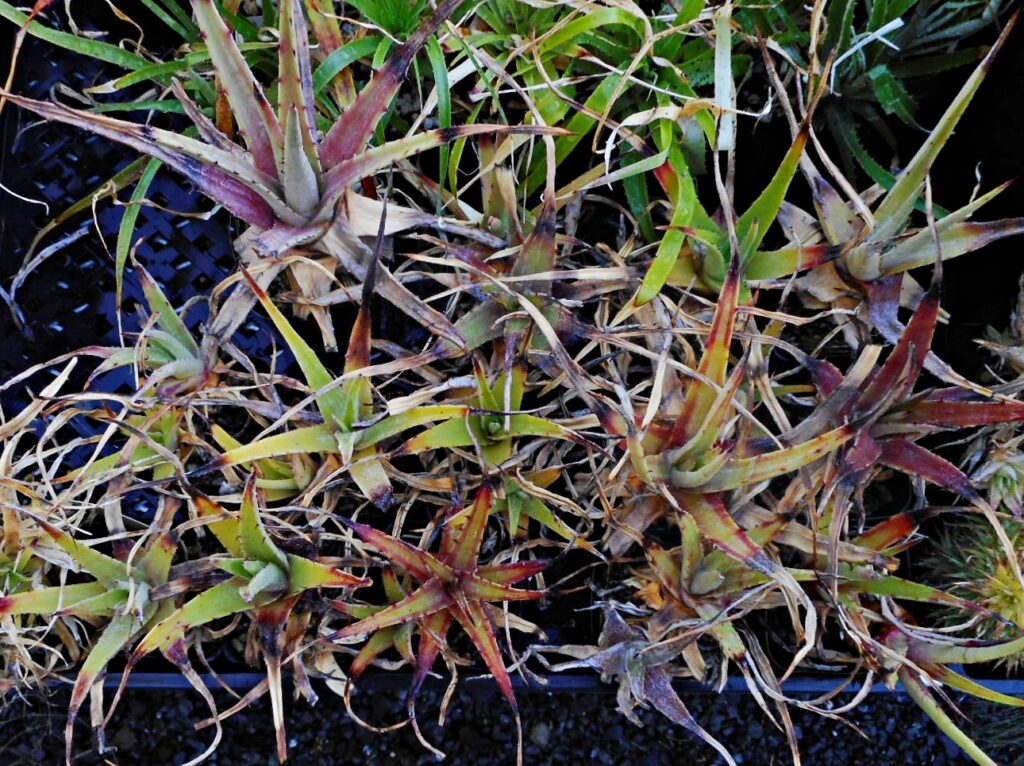
Ipomoea pubescens BK08518.9
Convolvulaceae. Perennial caudiciform roots, annual vine to 6’+. Furry trilobed leaves. Shiny, deep blue morning glory blossoms. Our collection, Pisac, Cusco, Peru, near 10,000′. Sparsely distributed from Mexico to Argentina. This is the first introduction of genetics from the Andes into cultivation. Should be hardy if well mulched. Currently winter dormant. Z9a?
[ 4 ] → 2 ~ Plants with 2″+ caudex, 4+ years old $22.50 each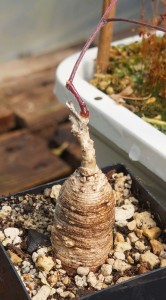
Caudex of mature plant
Jarilla caudata “Jarilla”
Caricaceae. Bizarre, geophytic papaya relative from the dry and deciduous forests of central Mexico and Baja. Forms a large, perennial tuber/caudex from which annual shoots arise bearing lightly lobed leaves, clusters of small, white, dioecious flowers and weird looking, rounded, edible fruit, 4–10″+ long: green, white and rust speckled, ripening yellow, and bearing 5 prominent protrusions at one end that look like horns or tentacles! The tubers and fruit have long been utlized in ethnomedicine and regional cuisine. Grow similar to Bursera—succulent soil and care with a dry winter rest. Occurs up to 6000′, so it should tolerate some cold… A must for caudiciphiles and rare fruit enthusiasts. Unsexed seedlings. First offering. Currently winter dormant. Z9a/b?
[ 4 ] → 2 ~ Plants 2–3 years old $32.50 each or 2 for $60
Lachenalia kliprandensis
Hyacinthaceae. A perennial geophytic bulb which annually produces 2 flattened ovate leaves with brown-purple or dark green pustules on the surface. Flower spikes to 6″ clothed in lovely white and magenta flowers. This South African species is endemic to estern Namaqualand, known from only a few locales where it grows in red sand. Easy and rewarding—succulent care; a winter grower that needs a dry summer rest. Z8a .
[ 8 ] → 2 ~ Bulbs 3–4 years old $14.50 each or 2 for $24 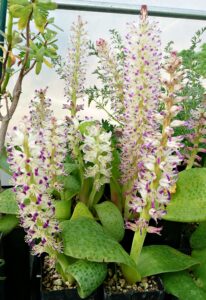
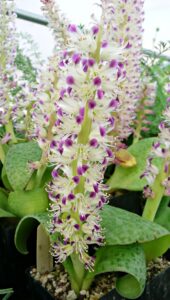
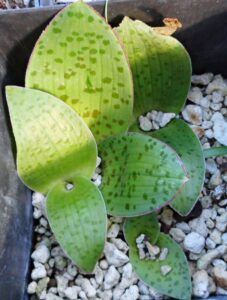
Massonia depressa
Hyacinthaceae. Bulb with pairs of smooth flattened leaves that hug the ground. Unusual shaving-brush flowers in the center of the plant, cream to pale pink colored. Dry sandy areas of South Africa. The bulb is reported to be a bush food, edible and tasty. Winter grower that needs a dry summer rest. Z8a
[ 4 ] → 2 ~ Plants/bulbs 3–4 years old $12.50 each or 2 for $22
Mestokloma tuberosum “Vybossie”
Aizoaceae. Small pachycaul shrub to 3′ whose huge thickened roots have red-gold peeling bark. Densely branched stems clothed in small succulent leaves. Small copper-orange flowers. South Africa. A famine food for livestock. Highly desired by collectors, often bonsaid with the beautiful roots exposed. We offer a couple nice bonsaid plants developing lovely thickened roots and on their way to becoming a gorgeous specimens. Easy and rewarding to grow, tolerant of drought and frost. Z8a/b
[ 3 ] → 1 ~ 9–12″ plant 6+ years old $32.50 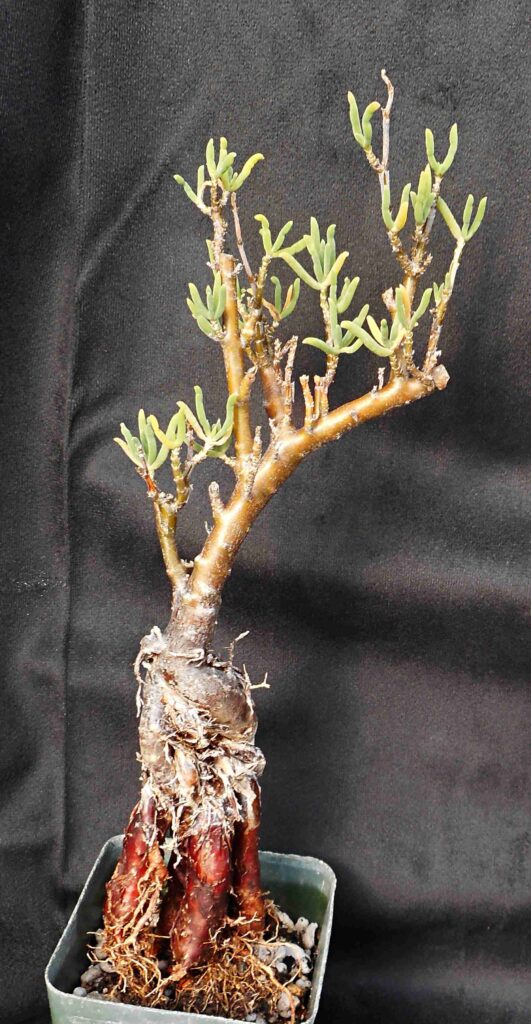
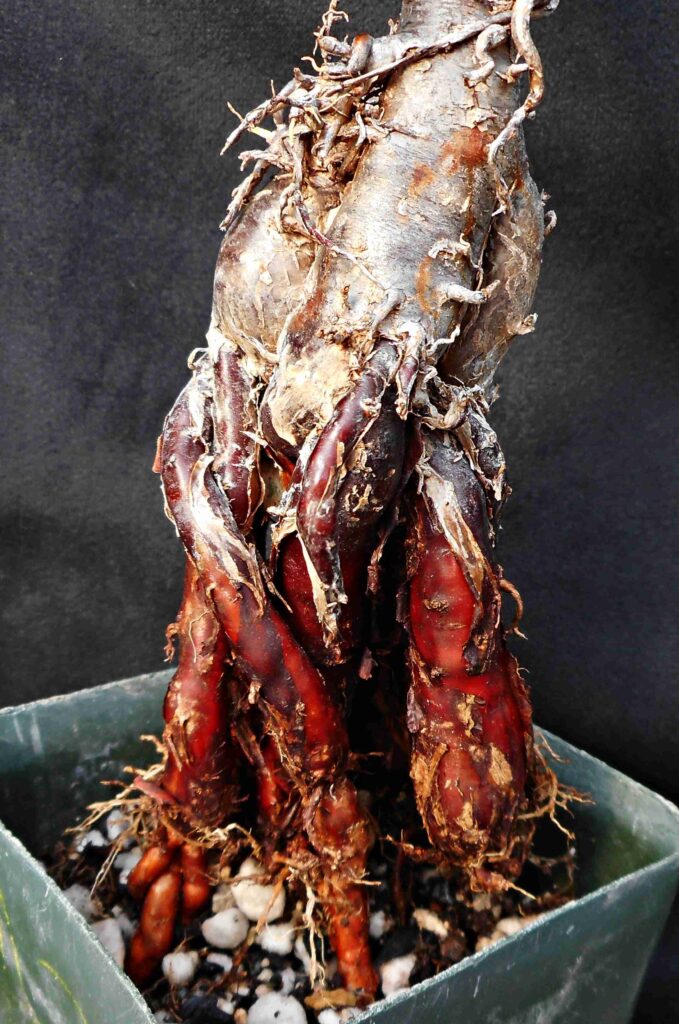
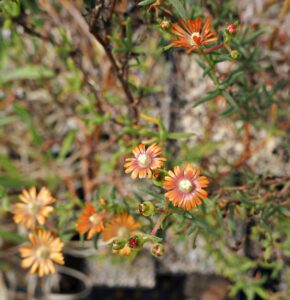
Nolina durangensis “Durango Bear Grass”
Agavaceae. Very rare Yucca relative with a thickened caudex-like base and several trunks topped with long, slender stiff leaves. Inflorescence with cream colored flowers. Upper elevation Sierra Madre, Durango, Mexico. A unique and wonderful species. Drought and cold hardy. Z8a
[ 4 ] → 2 ~ 24″+ plants 10+ years old $38.50** each or 2 for $70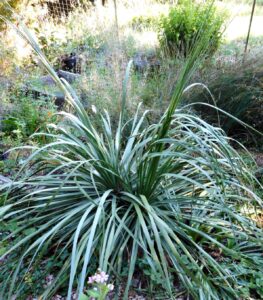
Nolina hibernica “Bear Grass Tree”
Robust arborescent species 6–20′ tall. Rounded terminal rosette of stiff bright green leaves tipped with twisted rugged fibers. Inflorescence 4–8′ high with white flowers. Native to the high mountain pine forests of Nuevo Leon and Tamaulipas, Mexico, 8,000–10,500’+. This fantastic cold hardy plant is rare in captivity and will make and excellent landscape specimen with age. Z8a
[ 8 ] → 4 ~ Plants 7+ years old $14.50 each or 2 for $25 or 4 for $44
Operculicarya decaryi “Madagascar Elephant Tree”
Anacardiaceae. Dioecious pachycaul-caudiciform tree to 20′ with a warty swollen trunk and zig-zag branches. Lovely pinnate leaves with tiny shiny leaflets that turn purple-red in sun or cold. Drought deciduous. Tiny reddish flowers. Toliara, Madagascar. Ideal for bonsai, the roots can be lifted for added aesthetics. Succulent culture, bright light, well draining soil. Mature plants can survive mild frost. Z9b
[ 4 ] → 1 ~ 14-18″ treelet with 3/4-1″+ caudex $26.50 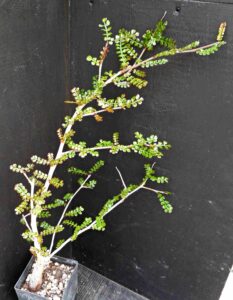
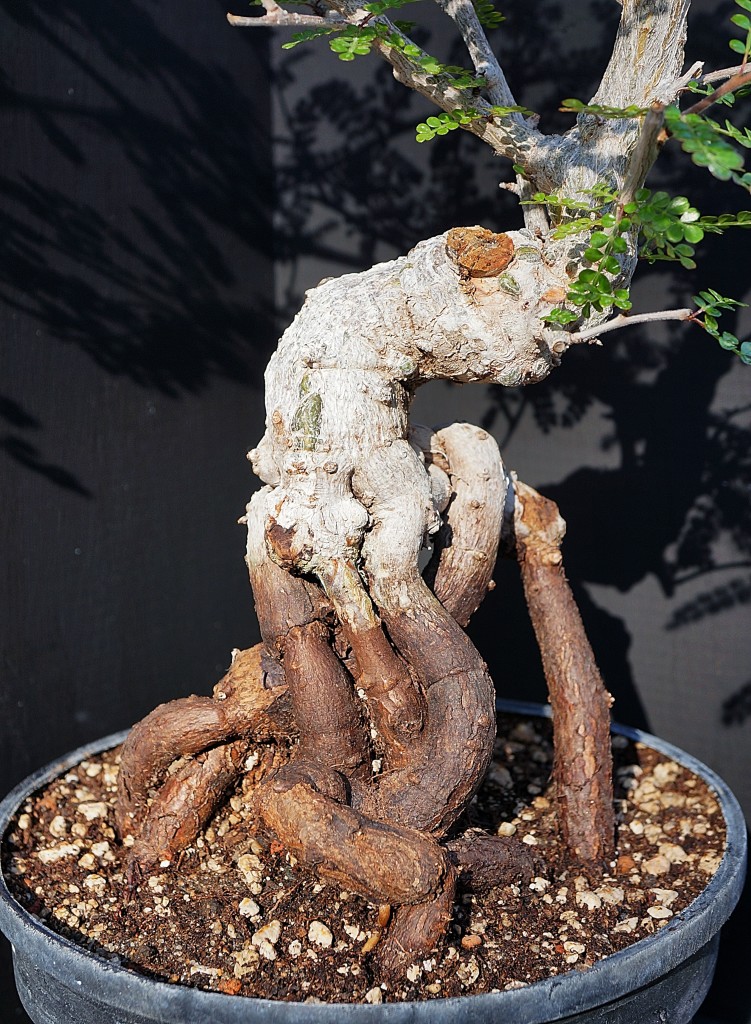 The caudex of one of our mother plants
The caudex of one of our mother plants
About the genus Peperomia
Piperaceae. Huge tropical and subtropical genus of well over 1000 species, most occur in Central and South America. Close kin to such notables as common black-pepper and kava-kava. Typically small plants, many of which are succulent, with a shocking and joyous diversity of morphological expression. With a few exceptions, the resplendent beauty of these plants is in their exceptional gem-like leaf forms rather than their slender flower spikes. Peperomia are vital to Andean ethnomedicine and ceremony. Their wondrous aromas and flavors when crushed or chewed, etherial combinations of balsam, lemon, mint and safrole, are a revelation. Used traditionally for wound healing, digestive health, as painkillers, psychoactive tranquilizers, condiments, to freshen breath, to make chicha and to ceremonially “cleanse and flower subtle energies”. Their complex essential oils and other compounds have passed the approval of those high priests of modern culture: the white lab coated scientist, and shown significant antibiotic, antiparasitic and wound healing actions in controlled laboratory studies. Other than a few Peperomia popular as common houseplants, most species and their beneficial nature are unknown outside their native habitats. Thanks to the encouragement of police colonel/plastic-surgeon/linguist/ethnobotanist and Peperomia expert, Guillermo Pino, we have become inspired by these marvelous plants. We are propagating a diversity of rare species which will be available for distribution in the future. All are very easy and quick to root from cuttings. Peperomia are natural companion plants to Trichocereus cacti.
Peperomia galapagensis “Galapagos Congona”
Bright green succulent 3–6″ tall. Creeping to upright multibranched stems. Whorls of 4+ small oval leaves at each internode. Green flower spikes. In bright light the plant will take on reddish hues. Rare endemic of Darwin’s wonderland, the Galapagos Islands. First fondled by the great man and pressed into herbarium sheets in 1835. Grows on rocks and trees, often in moist shaded areas above 300′. Appears to have evolved from P. inaequalifolia of the Andes and the flesh of the plant has a similar superb balsam-citrus scent/flavor. Medicinal like close kin. Exceedingly rare in captivity. Z9b/10a
[ 2 ] → 1 ~ 3-4″+ cutting $24.50 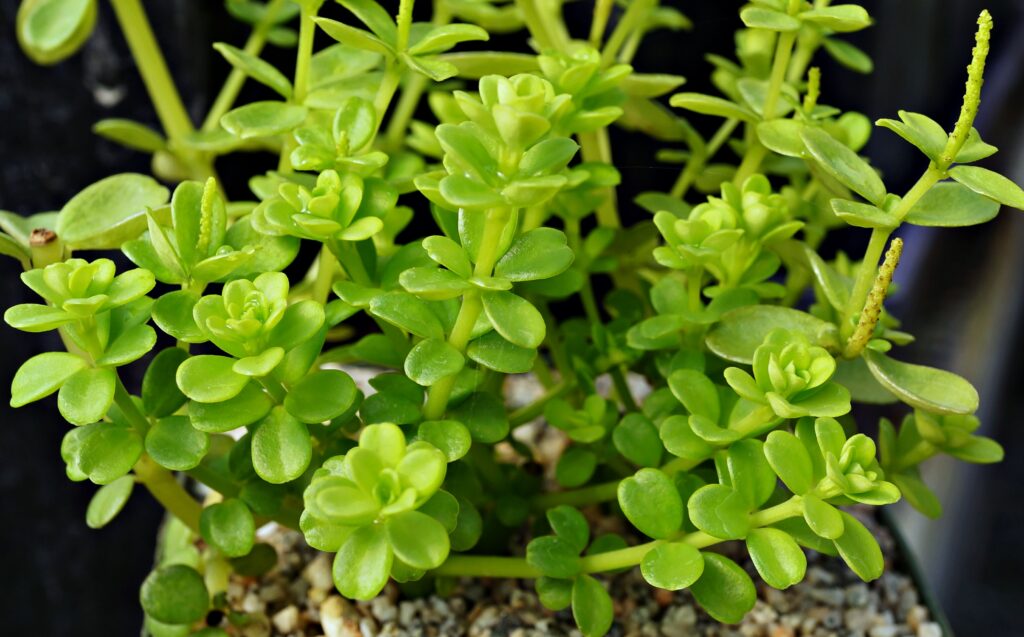
Peperomia galioides BK09423.2 “Congona Macho”
Sprawling clusters of upright green succulent stems 10–15″ tall. Whorls of emerald succulent leaves, yellow flower spikes. Growing on steep slopes with Trichocereus peruvianus, Echeveria chiclensis v. backbergii, Cyclanthera explodens, and Carica candicans, below Huariquina, Lima Dept., Peru, 7,600′. Said to be the most important medicinal Peperomia by Pino, used for “everything”- an effective painkiller, a compress for wound healing, a calming sedative, even for hair loss! The plant contains quinones, sesquiterpenes and over 70 other compounds in the essential oil including limonene, eugenol, safrole, etc. Extracts have shown to be effective against staph infection and the deadly chagas and leishmaniasis parasites. Has a delicious balsam with a hint of lemon aroma when crushed. We love to chew this plant! Easy to grow, the perfect Trichocereus companion plant. Roots easily from cuttings. Z9b
[ 6 ] → 1 ~ 4-6″+ cutting $16.50 SOLD
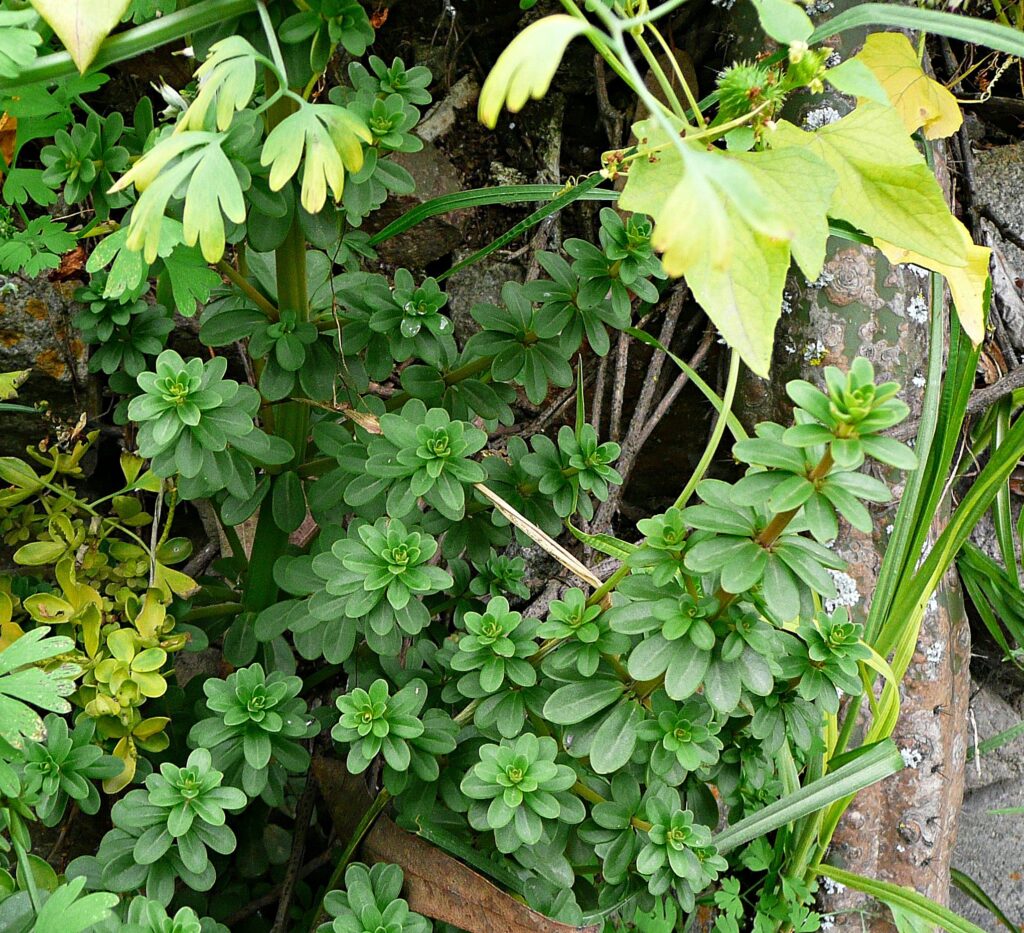 Plant in habitat growing at the base of Trichocereus peruvianus
Plant in habitat growing at the base of Trichocereus peruvianus
Peperomia galioides BK14515.16 “Congona Macho”
A very attractive robust form of this important aromatic medicinal. Fat stemmed plants form clusters of upright, green to reddish succulent stems 6–20″+ tall. Whorls of lime-green succulent leaves with a glossy windowed upper surface; yellow flower spikes. In full sun the plants turn startling shades of orange. Sunchupata, near Choquequirao, 9650’, Cusco Dept., Peru. Growing just below Trichocereus sp. BK14515.17, with Puya sp., Pilea serpyllacea, Lupinus sp., etc. A great companion for your columnar cacti. Has a superb citrus-balsam and light safrole scent/flavor. First time offering cuttings of this lovely accession. Z9a
[ 6 ] → 2 ~ 4-6″+ cuttings $18.50 each or 2 for $30 SOLD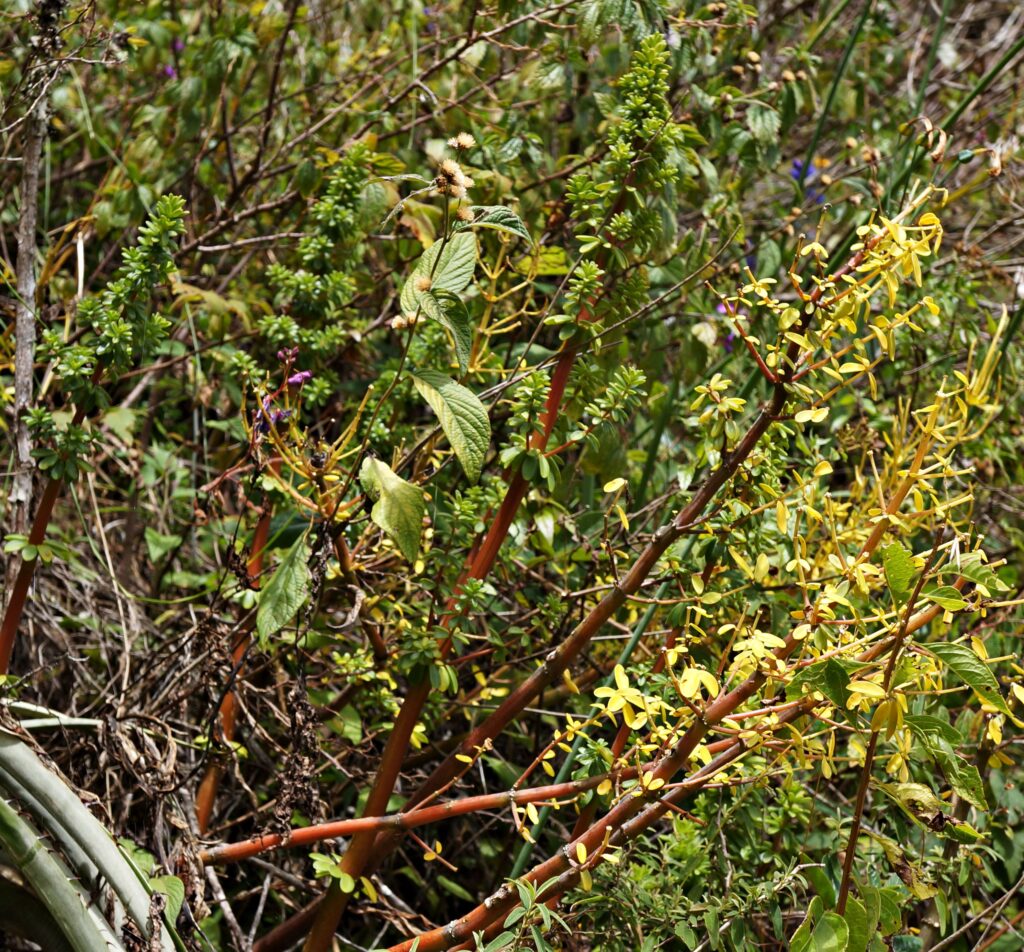
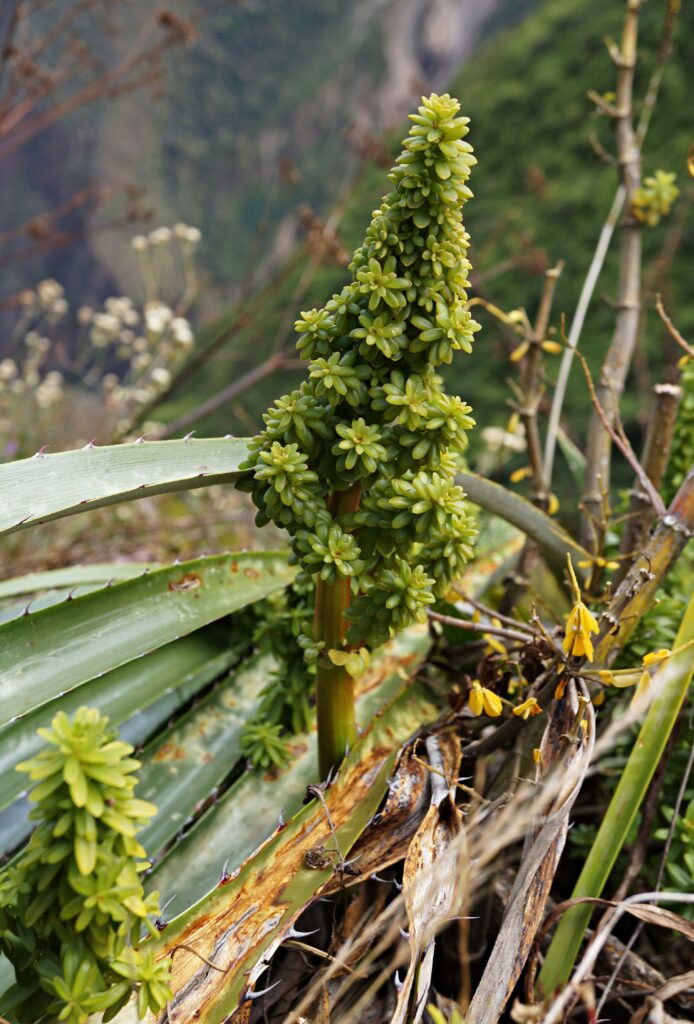
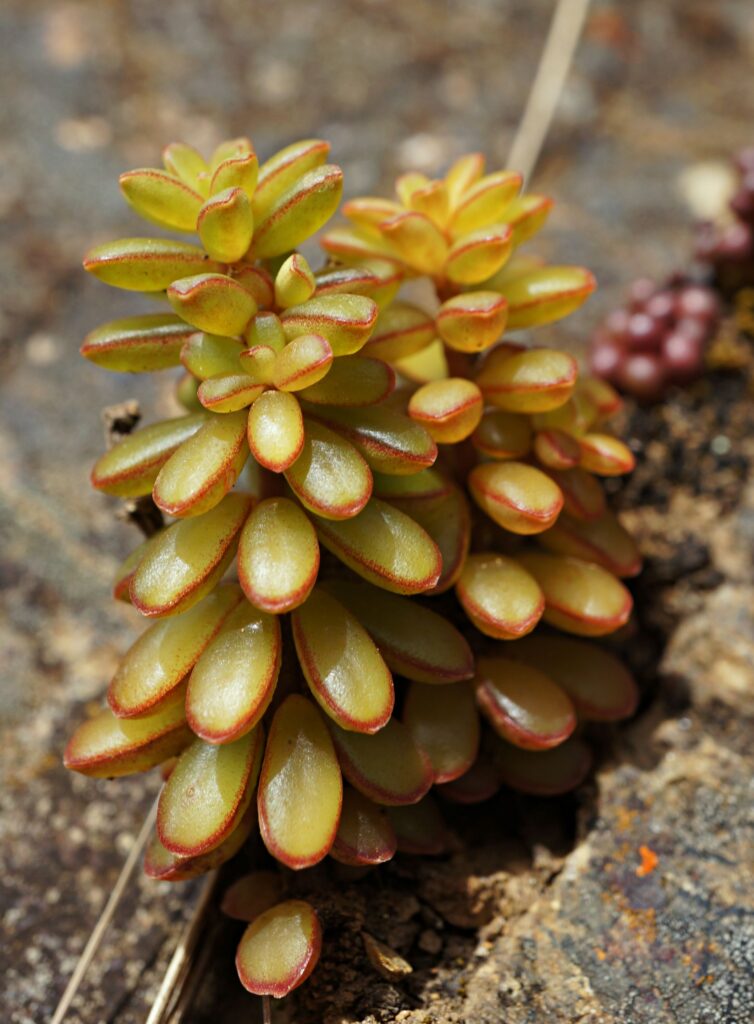
Peperomia hartwegiana BK08521.6 “Jalcacongona”
Jewel like succulent with whorled orbicular leaves with a windowed upper surface. Just 2–6″ tall, grows creeping along rocks and cliffs. This seed is from a very attractive population with red leaves and purple/red flower spikes, near Ollantaytambo, Cusco Dept., Peru, 9300′. Used for eye/ear infections, a tea for lung and kidneys issues. Curanderos of northern Peru consider the plant protective. Reportedly utilized during mesada ceremonies for ‘floricimiento’— “to cleanse and flower the subtle energies of the body and spirit so that the patients’ dormant potentials can blossom like the nocturnal flowers of the San Pedro cactus”. The largest cuttings we’ve ever offered. Easy to root, another superb Trichocereus companion. Z9b?
4 ~ 12-16″ long, branched, unrooted cuttings $36.50 each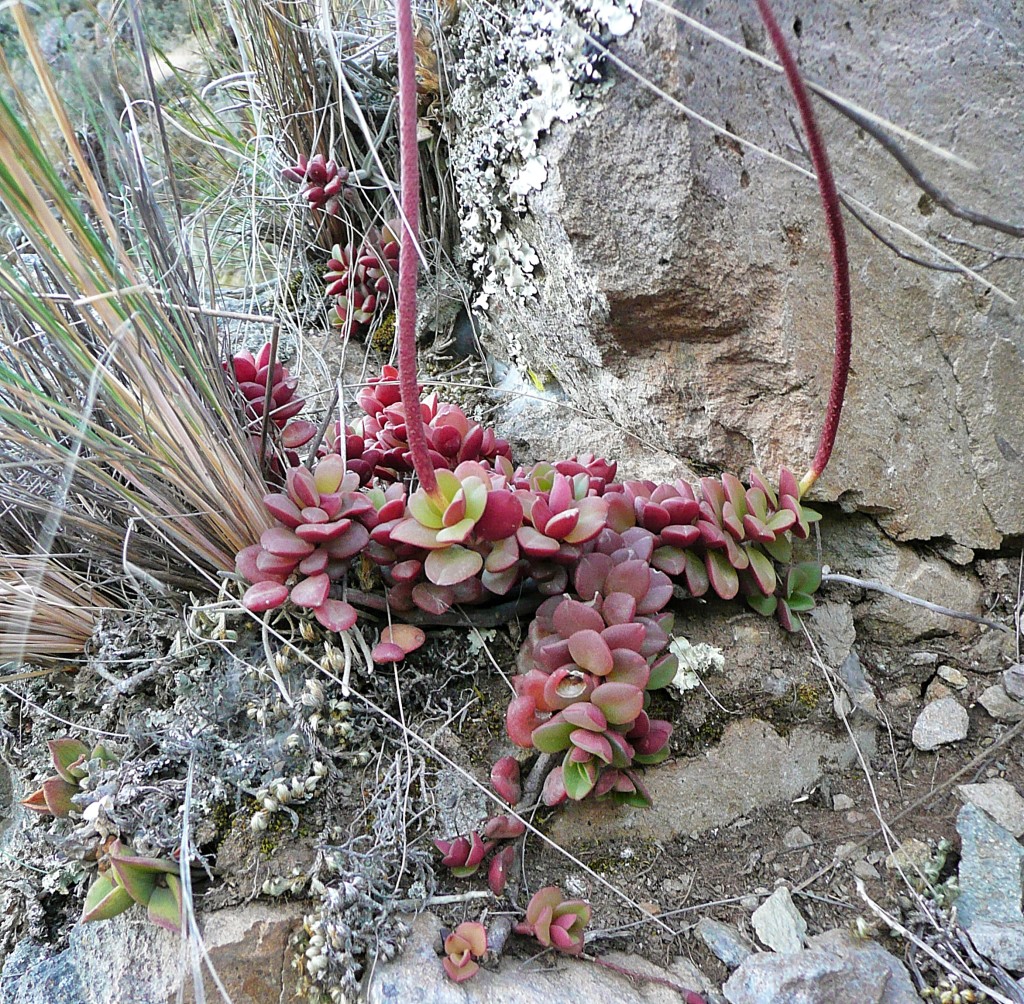
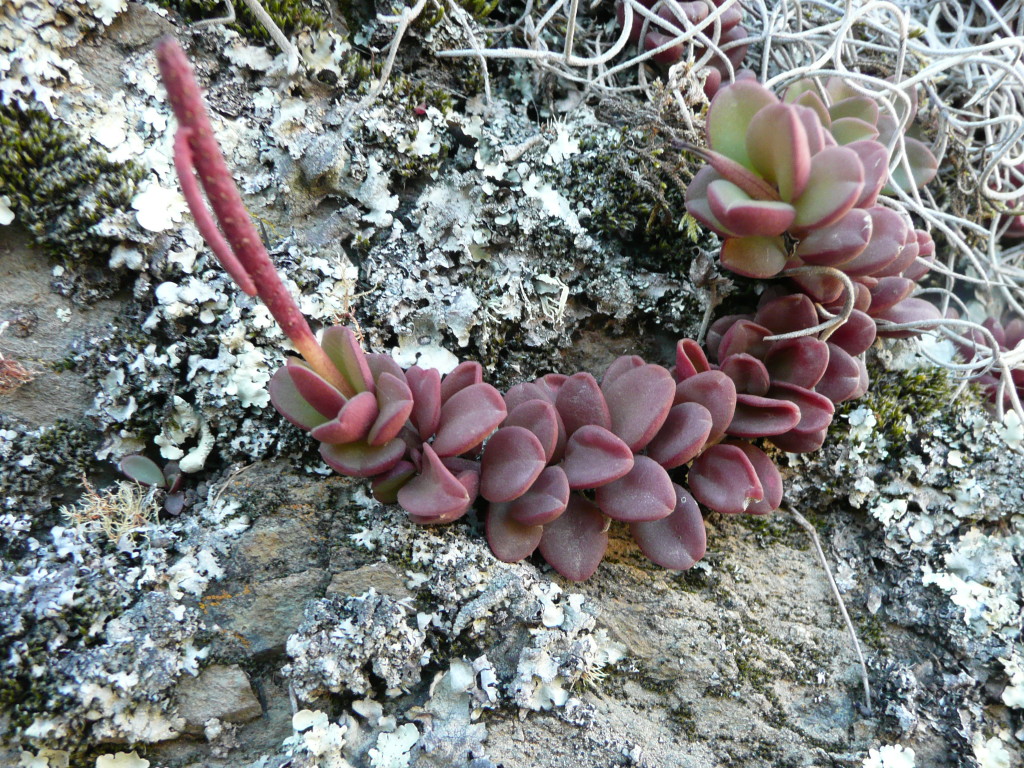
Peperomia inaequalifolia BK09512.5 “Congonita”
Small upright plants to just 3–5″+ high, spreading by rhizomes. Reddish stems and whorls of small pointed succulent leaves, lime to yellow green in color. Has an energizing and refreshing balsam-lemon scent when crushed, a personal favorite. Many medicinal uses like P. galioides; in northern Peru it is smoked or added to food for forgetting emotional pain and strengthening the heart. Our accession from remnant high Andean forest in the Cordillera Blanca; growing amongst boulders and Polylepis weberbaueri trees along with Peperomia hartwegiana, Matucana sp. Tillandsia sp., Puya sp., Pernettya prostrata, Gaultheria brachybotrus, and Berberis sp., Ancash Dept., Peru, 13,000′. Will regrow from rhizomes after frost — the more well mulched, the colder the freezes the plant will survive and regenerate from. These are the biggest cuttings we’ve offered of this diminutive beauty. Z9a or below
4 ~ 5-6″+ unrooted, branched cuttings $27.50 each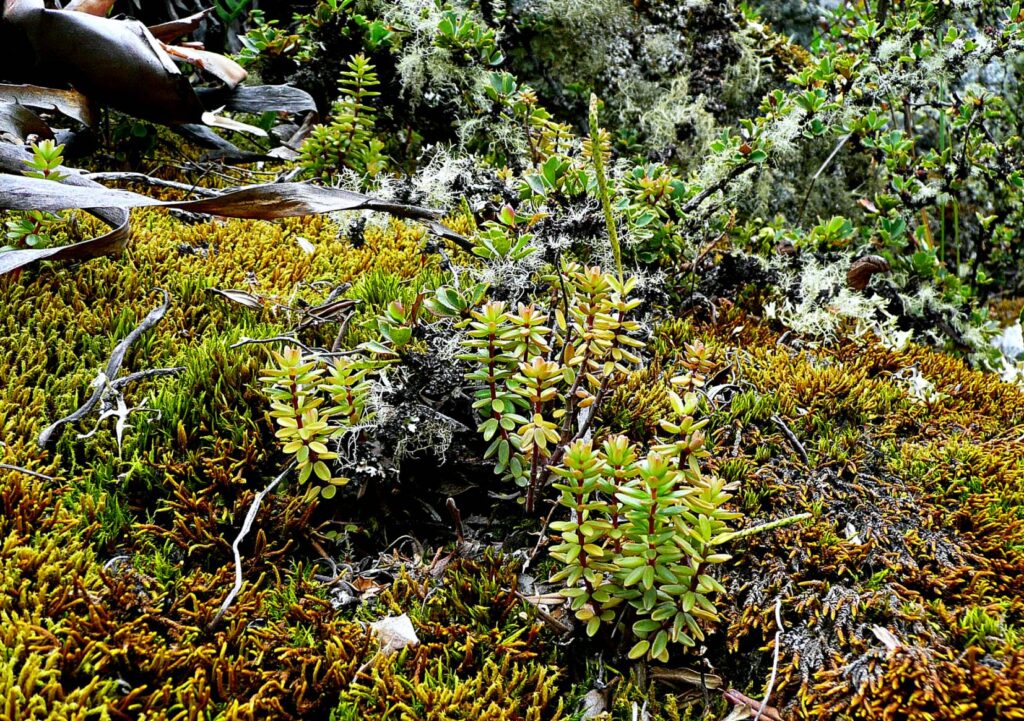
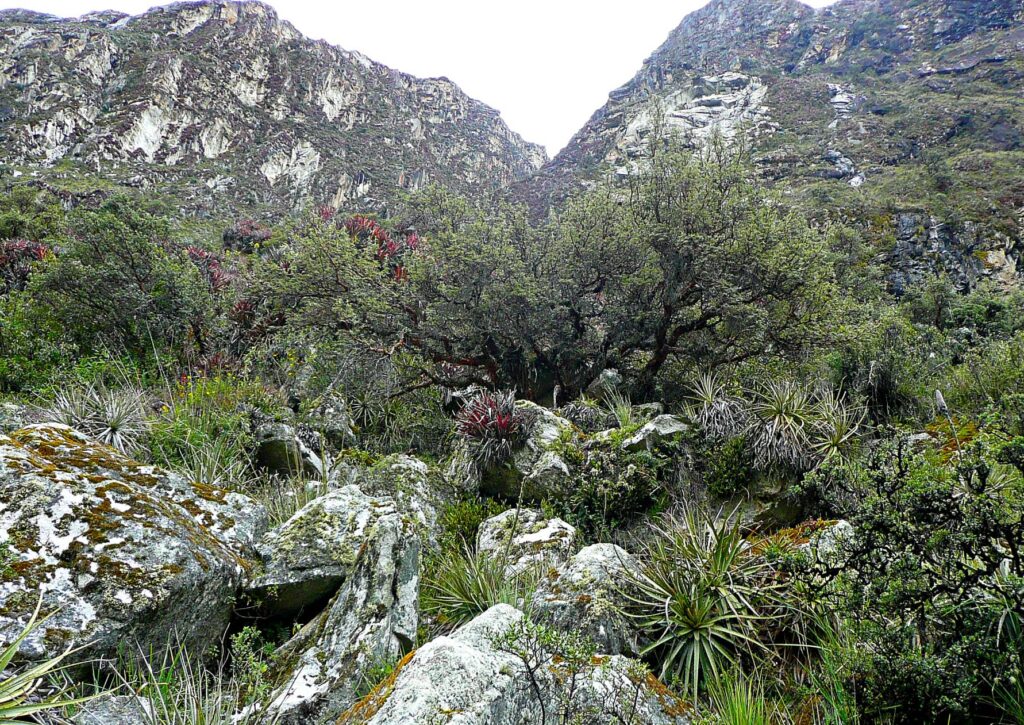
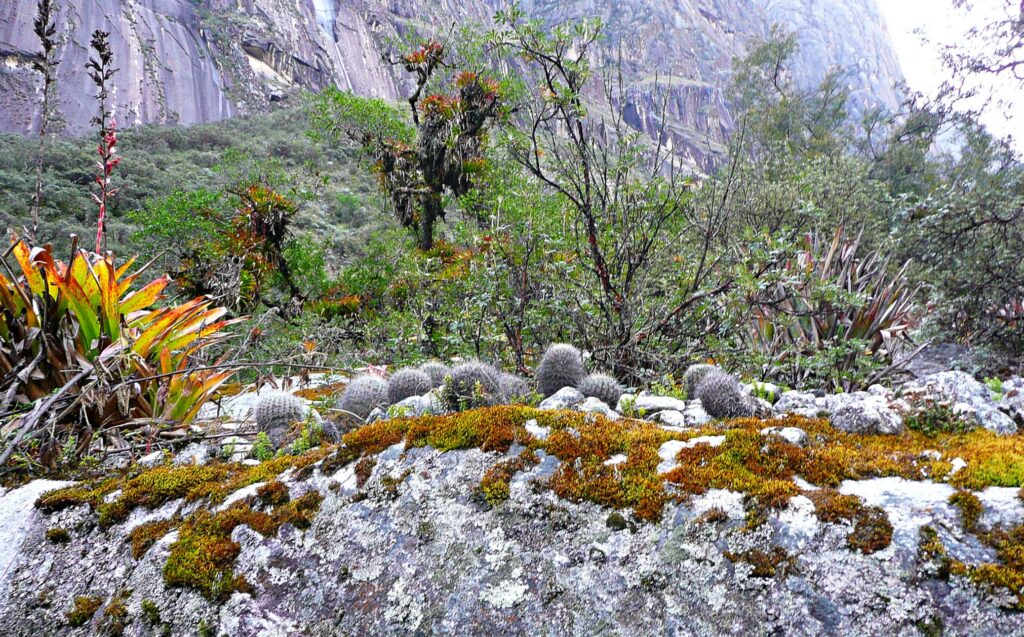
Peperomia samainiae GP2336
Beautiful creeping succulent 2–4” tall. Small rosettes of gem-like reddish to green leaves with a green windowed upper surface. Yellowish flower spikes. A newly described species from Huanuco and Junin Dept., Peru, up to 11,000’+. We’ve only offered this beauty once before. Z9a/b
[ 2 ] → 1 ~ 2-3″+ cutting $22.50 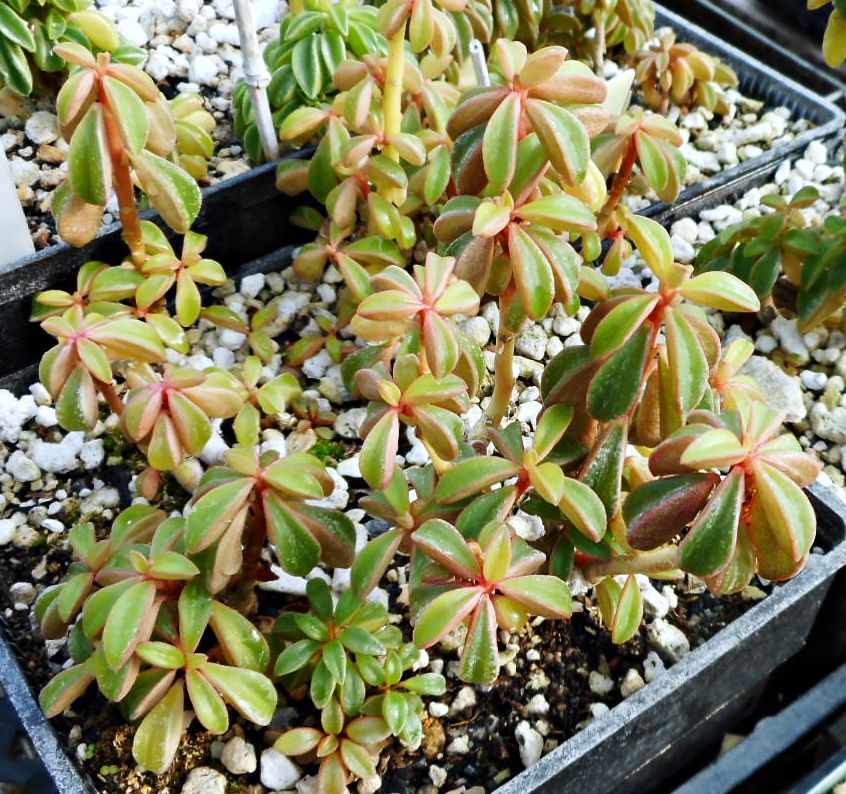
Pilea serpyllacea BK10425.1 “Kaka uvas uvas”
Urticaceae. 2–6″+ succulent with densely packed miniature round leaves that turn bright red in sunlight. The backs of the leaves are like a clear window. Grows on exposed rocks throughout the highlands of Cusco. Often seen as a nurse or companion plant to young Trichocereus cacti. Surely one of the most unique plants in the nettle family! Used as a tea for urinary and kidney health, the small leaves are eaten by children in the Andes as “tiny grapes” — our daughters even love to snack on them! Seed collected from plants growing on bare rocks, Cusco Dept, Peru, 9,300′. Easy to grow in a sunny window, or as a companion at the base of your columnar cacti, regular succulent care. First time offering ‘large’ plants. Z9b
[ 6 ] → 1 ~ 3-4″+ multibranched plant 3 years old $18.50 SOLD
[ 4 ] → 1 ~ 6-7″+ multibranched plant 3+ years old $22.50
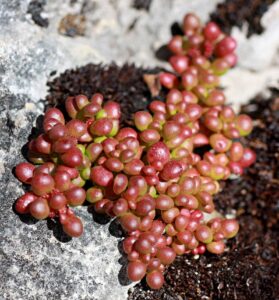
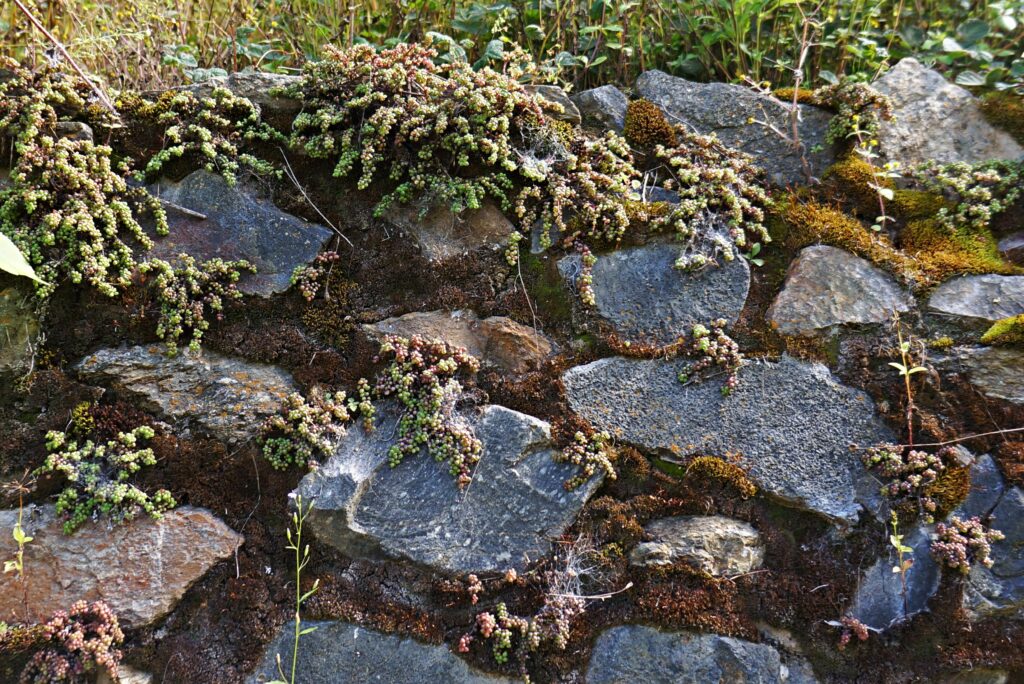 Pilea in habitat, Peru
Pilea in habitat, Peru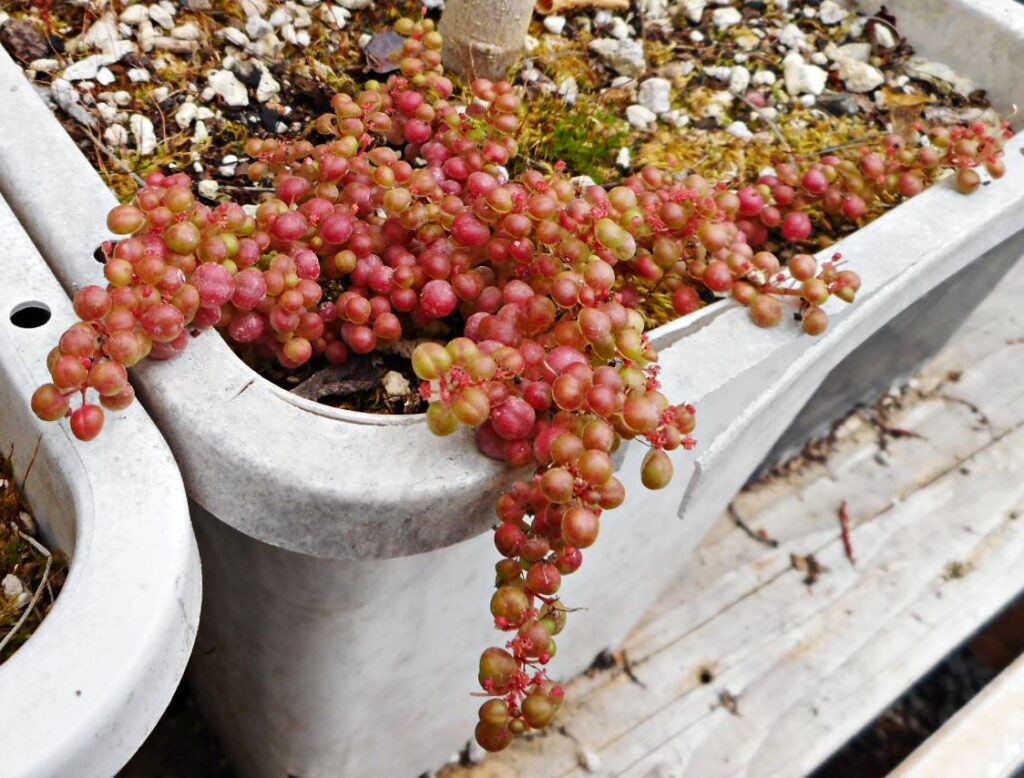 Pilea growing as a pot companion
Pilea growing as a pot companion
Bromeliaceae. Xerophytic pineapple relatives from Central and South America with swirled rosettes of silver to green, slender, toothed leaves. The 150+ species vary in size from small plants to tree like giants. The stunning flower stalks often bear blossoms of unusual colors: metallic greens, blues and yellows. Puya are pollinated by hummingbirds and other nectar drinkers, which are drawn en-masse to the blossoms. Spectacled bears (Tremarctos ornatus) are known to particularly relish the heart of the plants. Rather than choosing dwarfism as most plants do at high altitudes, Puya erupt to giant sizes, the largest and loftiest species, P. raimondii, reaching nearly 40′ tall at elevations of 15,000′! Forests of this strange sentinel of the heavens were once widespread, but its realm is now reduced by man to small scattered populations in the remote high Andes of Peru and Bolivia. Puya species are used for their leaf fibers, wound healing qualities and magical purposes. Around Cusco, Peru the flowers stalks are burned to make “llipta” for coca chewing. Easy to grow and great landscape plants, can be grown as a living fence. Extremely drought hardy, many species are tolerant of cold and high rainfall and make excellent companion plants to Trichocereus cacti.
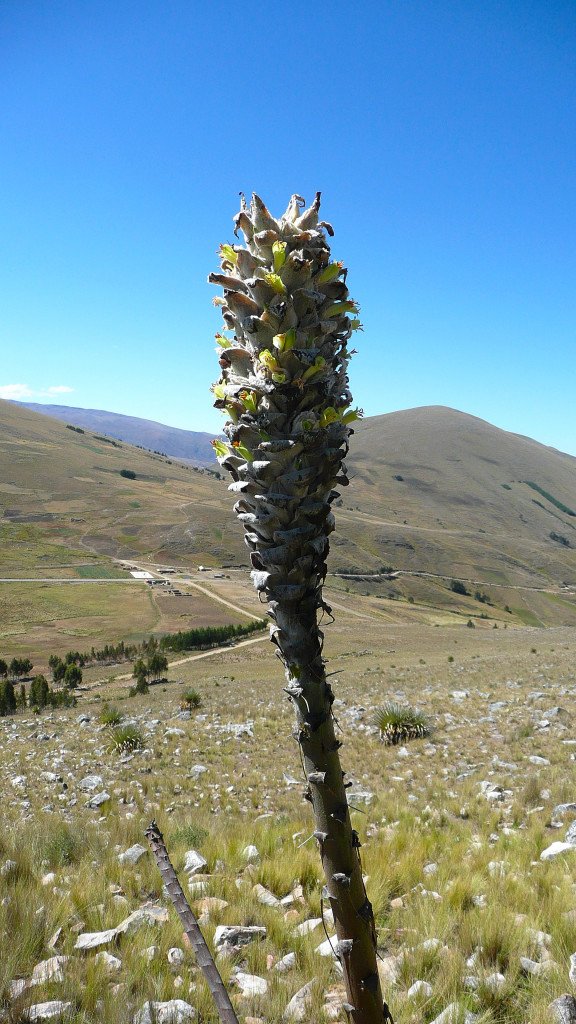 Puya herzogii flower stalk, Cochabamba, Bolivia
Puya herzogii flower stalk, Cochabamba, Bolivia
Puya dyckioides “Chaguar”
2–3′ rosettes of thin, arching, lightly serrated leaves. Extremely showy bipinnate inflorescence 2–3’+ long with bright pinkish bracts and metallic aquamarine blossoms. Native to southern Bolivia and northern Argentina, between 4300–11,000’+. One of the more friendly and attractive species. Grows quickly when potted up or out. Z8a/b
[ 7 ] → 4 ~ 3-4″+ plants 3+ years old $12.50 each or 2 for $22 or 4 for $36.50
Puya aff. humilis BK10509.18
Mounds to 6–8′ across, 3–4′ high. Individual rosettes to about 2′ wide with slender, serrated, grey leaves. Inflorescence 10–16″ tall with reddish to pink bracts, Dozens of incredible dark blue-black flowers with bright orange pollen. Looks like P. humilis, yet was larger than that species is reported. Growing with Trichocereus totorensis, open north facing rocky slopes between Inkallajta and Monte Puncu, Cochabamba, Bolivia, 10,000′. Our long underpotted plants will grow rapidly once transplanted. Z8a/b
[ 3 ] → 1 ~ 4–5″+ Plant 5+ years old $18.50 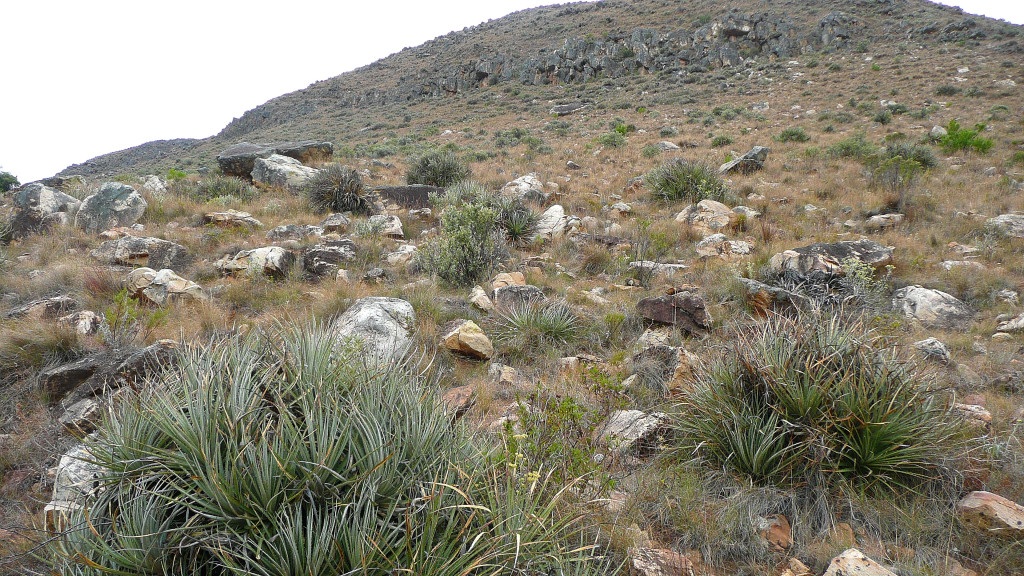
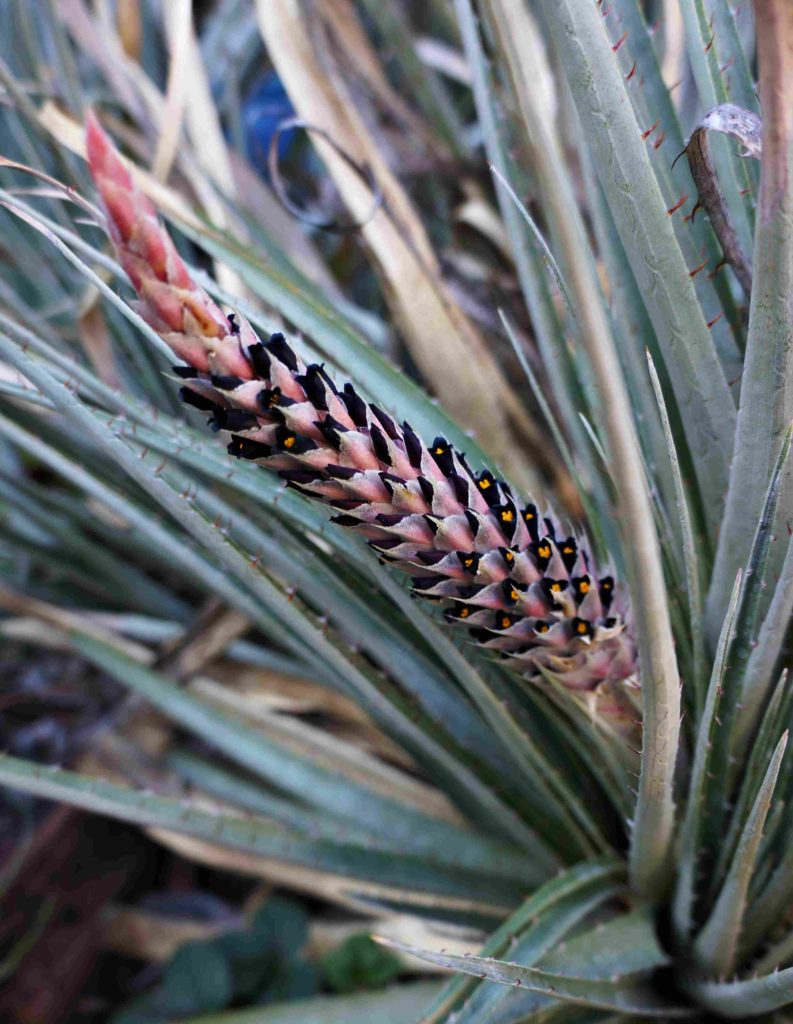
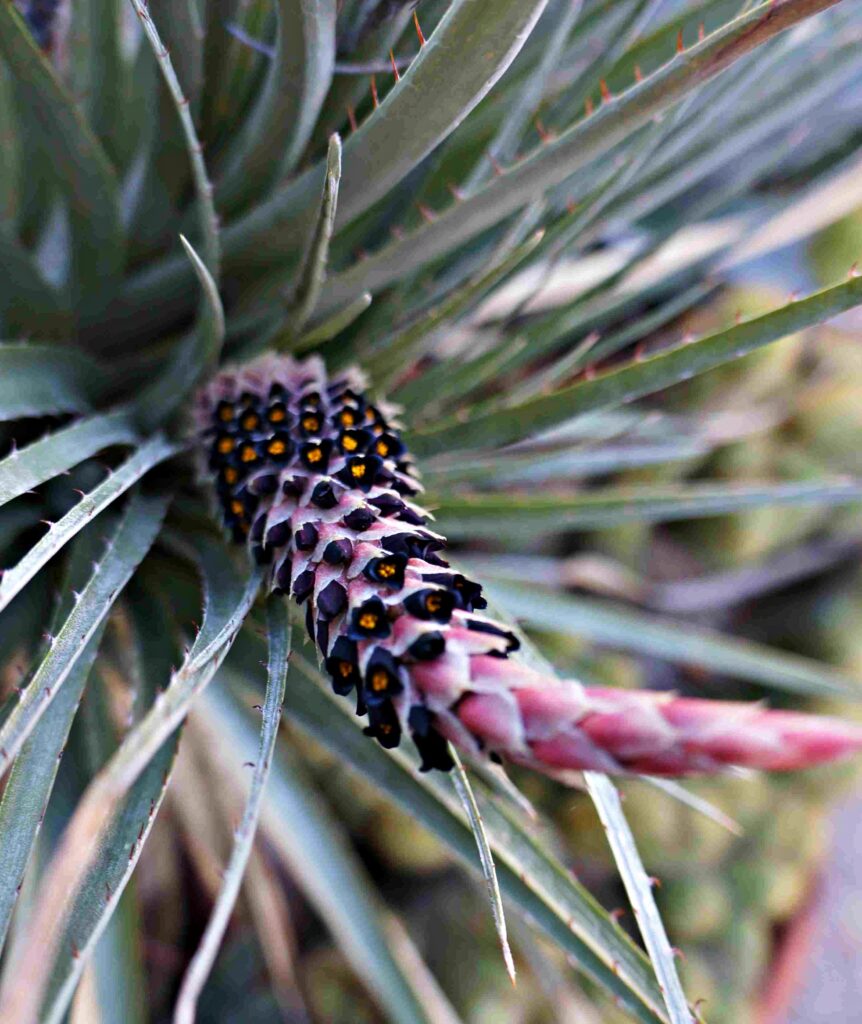
Puya mirabilis BK10506.2
Single rosette of very slender white leaves to 12″+ diameter. Flower stalk to 3′. Should have yellow green iridescent flowers to beguile hummingbirds. Found growing with Trichocereus aff. pachanoi BK10508.1, Cleistocacus buchtienii, and Carica quercifolia at the base of Cerro San Pedro, Cochabamba, Bolivia. Tadeo Haenke wrote in 1795 that Puya was used to treat syphilis here. An easy to grow and rewarding species. Grows quickly when potted up or out. Z9a/b?
[ 4 ] → 3 ~ 4″+ Plants 4+ years old $12.50 each or 2 for $22
Puya raimondii ‘Ancash’ “Cuncush” “Titanca” “Machukawara”
The giant queen of bromeliads, forms single or occasionally branched trunks with rosettes of slender serrated leaves to 10’+ across. Massive flower stalks like a floral rocket ship with as many as 10,000+ white blooms! Upon flowering these amazing beings have been known to reach nearly 40′ tall. 30 to 80 years to blossom, set seed, then die. Forests of this strange sentinel of the heavens were once widespread, but its realm is now reduced by man to small scattered populations in the remote high Andes of Peru and Bolivia at between 12,000–15,500’+. This seed is from robust populations in the Cordillera Blanca of Ancash, Peru. We have witnessed this spectacular plant in the Cordillera Negra of Peru [photos below] and Cordillera de Vacas of Bolivia. Standing on the windswept rocky ridges where you can nearly scratch the sky, surrounded by a herd of these imposing vegetal beasts, their leaves clacking and sighing with the wind, the views of a mountain magnificence that stretches countless miles…is a timeless and utterly affecting experience. This plant creates a unique ecosystem around its base where we have observed a high diversity of plant species not seen elsewhere. There are reports that the rare spectacled Andean bear eats the young flower stalks. In some regions the inner pulp of the inflorescence is dried and powdered to use as a flavoring and special “chicha” is made from the roasted and fermented pulp. The dead flower stalk is also burned and the ash made into “llipta” for coca leaf chewing. Sections of the dried inflorescence are used as torches during special festivals and as insulation and construction material. The leaves are utilized with ichu grass as roof thatching, the trunks are made into seats. In the Cordillera Negra, an ecosystem given over to dairy cows, we were told that locals have been known to burn the plants because wandering cows sometimes get stuck on the barbed leaves and perish! This exceptional and endangered species has been successfully grown in California, but is still practically unknown in cultivation. Protect from extreme summer heat. Z7?
[ 4 ] → 2 ~ 2–4″ plants 3 years old $24.50 each
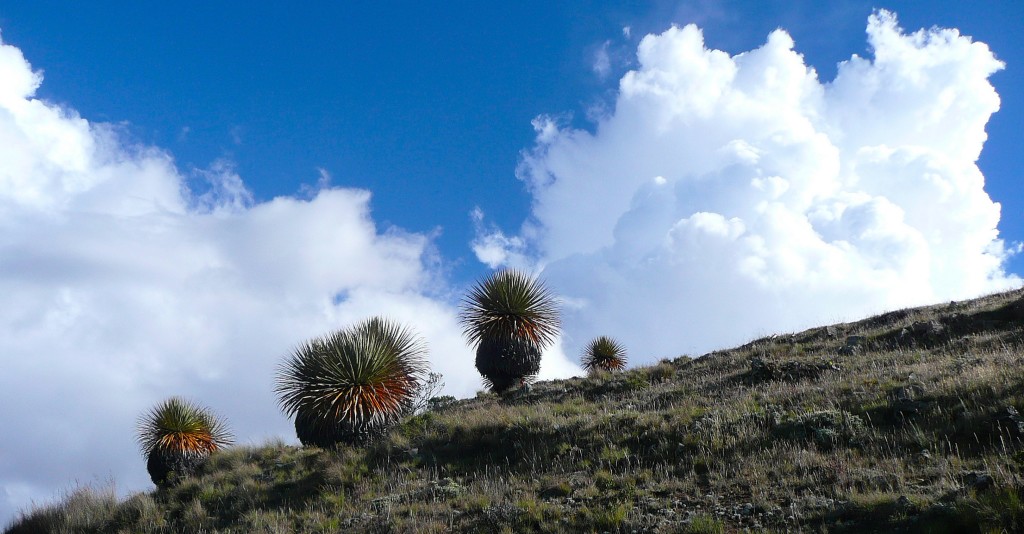
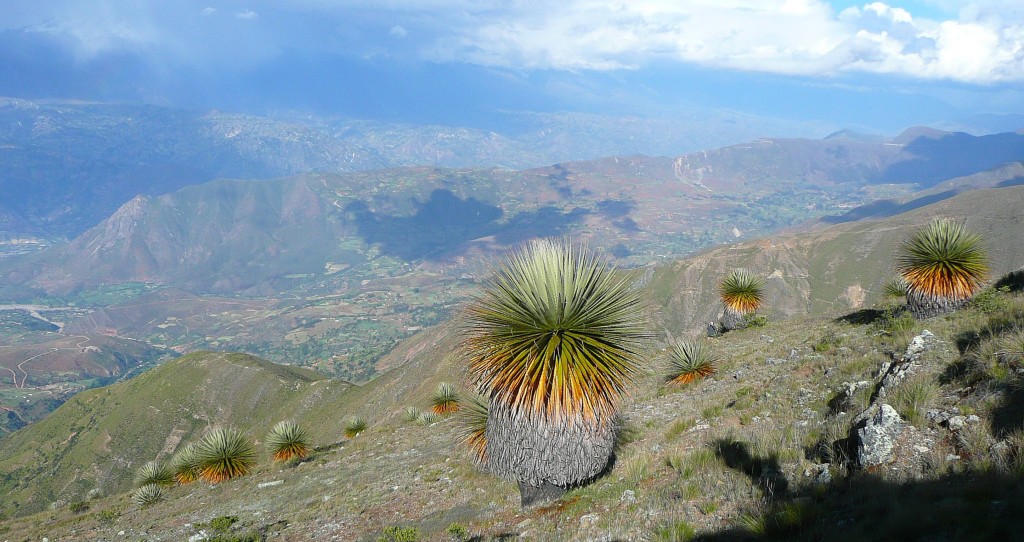 Puya raimondii, Cordillera Negra, Ancash, Peru
Puya raimondii, Cordillera Negra, Ancash, Peru
Rhodiola sp. ex 03 CH165
Crassulaceae. Clusters of rhizomatic, succulent stems to 6”+, bright yellow flowers. Sedum like in habit. Possibly a medicinal adaptogen with psychoactive, cognitive enhancing properties like other species. Collected by H. Hansen in China. One of the easiest Rhodiola to grow, does well in containers and as a garden plant. Herbaceous–dies back to the roots during winter. Z6a?
[ 4 ] → 2 ~ Plants 4–5 years old $14.50 each or 2 for $20
Sceletium tortuosum “Kougoed” “Kanna”
Aizoaceae. Small sprawling shrub with flat, pale green leaves; shiny white flowers. The succulent leaves grow in pairs and eventually die away leaving persistent leaf vein skeletons clothing the lower stems. The San and Khoi people of South Africa have a long history of using the plant as a hunger and thirst suppressant, analgesic, treatment for colic, and most importantly as a highly esteemed inebriant. The traditional manner of preparation is as follows: The whole plant is crushed between rocks, then placed in a bag and put in the sun to sweat. After a week of “fermenting” the “Kougoed” is removed from the bag and spread out to dry completely. Sceletium is known to contain potentially harmful amounts of oxalic acids which the preparation process is thought to reduce. The prepared dried material is chewed, smoked or occasionally taken as a tea or snuff. The effects are reported as quite pleasant and relaxing, decreasing anxiety, stress and tension. No severe adverse effects have been reported, even from chronic use of the plant. In fact, indigenous healers are known to use “Kougoed” to successfully treat alcoholism. Pharmacological research has shown Sceletium to be highly complex chemically, with as many as 9 alkaloids that are found to fluctuate seasonally. Modern science is looking at the anxiolytic and antidepressant properties of Sceletium alkaloids as well as their potential anti-cancer activity. Sceletium is now being marketed as a highly effective and safe natural supplement to elevate and regulate mood. Plant gatherers have observed that wild populations of S. tortuosum are becoming increasingly scarce, likely due to over collection. Protection through cultivation is encouraged. Regular succulent culture, hardy to Z9a if kept dry. A couple larger rooted specimens.
[ 4 ] → 1 ~ 8-10″ plants $32.50 SOLD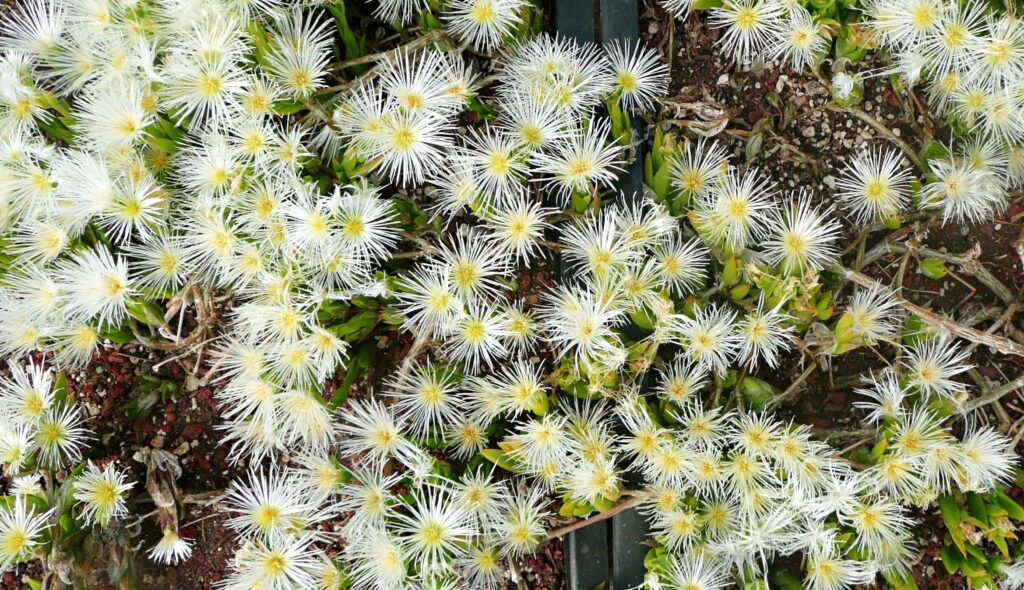
Sedum andinum GP1642
Crassulaceae. Tufts of tiny succulent stems 1–3″ tall. Spirally arranged, spherical, chubby, green leaves clothe the stems, turning reddish-brown in full sun. Small terminal flowers, red with white stripes. This is the neotype: Pino’s collection from rocky slopes near the town of Chicla, Huarochiri Prov., Lima Dept., Peru, 12,300′. A delightful miniature relatively new to cultivation. We offer a couple multi-stemmed specimen clusters. A nice companion to plant at the base of your Trichocereus. Z8b/9?
[ 2 ] → 1 ~ 2″ clustering plant $15.50 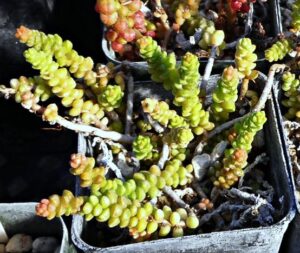
Sedum dendroideum ‘Colossus’ Bauml & Kimnach354
This arborescent clone is the largest Sedum we know of. Upright branching stems to 10’+! Deep-green succulent leaves with red margins. Clusters of vivid yellow flowers. This giant was discovered by our friends Jim Bauml and Myron Kimnach back in 1981, Cerro de la Yerba, San Luis Atolotitlan, Puebla, Mexico. Easy and rewarding to grow, a bit slow for us but should grow more quickly in warmer climates. Cuttings root very easily. Z9b/10a
[ 4 ] → 2 ~ 5-6″ cuttings $15.50 each
Sinningia striata
Gesneriaceae. Perennial tuber/caudex with deciduous stems to 12″. Beautiful dark green fuzzy leaves with purple-red undersides. Clusters of gorgeous pale pink to cream colored tubular flowers with red striations. Rocky habitat, Pedra Branca, Minas Gerais, Brazil. Strong light for best growth and flowering. Easy as a houseplant. Plants currently winter dormant. Z9b at least.
[ 4 ] → 2 ~ Plant 4+ years old $16.50 each
Sinningia aff. werdermanii?
Forms a large caudex/tuber. Lime-green annual leaves covered in a downy fuzz. Tubular flowers, color not yet seen. Seed from Peru. True S. werdermannii is native to Brazil and does not form a caudex, so we’ve been waiting for our plants to flower to get a clear I.D. Makes a great houseplant and choice for caudiciform collectors. Plants currently winter dormant. Z9?
[ 4 ] → 3 ~ Plants 4+ years old $12.50 each
Stephania rotunda “Biralgano”
Menispermaceae. Large hemispherical gray caudex to several feet across! Deciduous twining vines with very attractive rounded peltate leaves. Small flowers followed by red berries. Native to thickets and cloud forests from the Indian Himalayas to Southeast Asia, up to 8000′. Alkaloid rich, the plant is used throughout its range to enhance memory and promote deep sleep, for sprains, stomach ache, liver health, fevers, etc. In Nepal the caudex is fed to sick cattle. Recent studies show antioxidant, anticancer and antimalarial activity. Should tolerate some frost if well mulched. Nearly unknown in cultivation. Rooted vines form caudexes. The last specimen we have to offer with fat rounded caudex. Grows well as a houseplant. Z9b?
[ 3 ] → 1 ~ Plant with 1.5″+ caudex $24.50 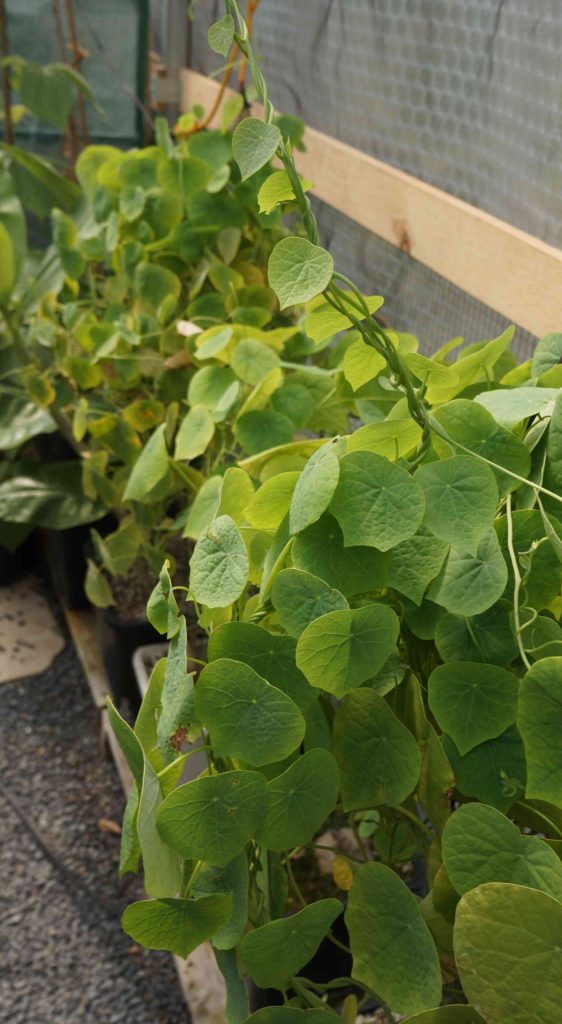
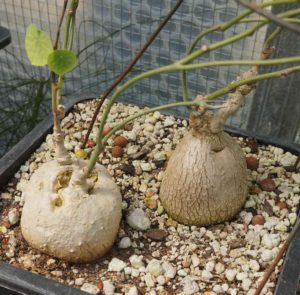
Mother plants
Yucca angustissima RMRP2943-JC “Narrow Leaf Dwarf Yucca”
Agavaceae. Dwarf species to 16–30″+ tall. Rounded heads of very slender leaves 1–2′ long with fibrous white margins. 3–4’+ inflorescense with egg shaped cream colored blooms with purplish sepals, pollinated by moths. Southwestern USA. The young fruits were baked and eaten by several tribes. Flowers also have good edibility and the young shoots can be peeled and cooked like asparagus. The Coyotero Apache used the plant for insect and snake bites. The leaf fibers were made into cordage, mats, etc. Leaves were woven into fireplace hoods by the Hopi. The roots make a good soap and were used in marriage ceremonies by the Oraibi. A very drought and cold hardy plant. A few long underpotted specimens available. Z5a
[ 4 ] → 2 ~ Plants 5+ years old $14.50 each or 2 for $25
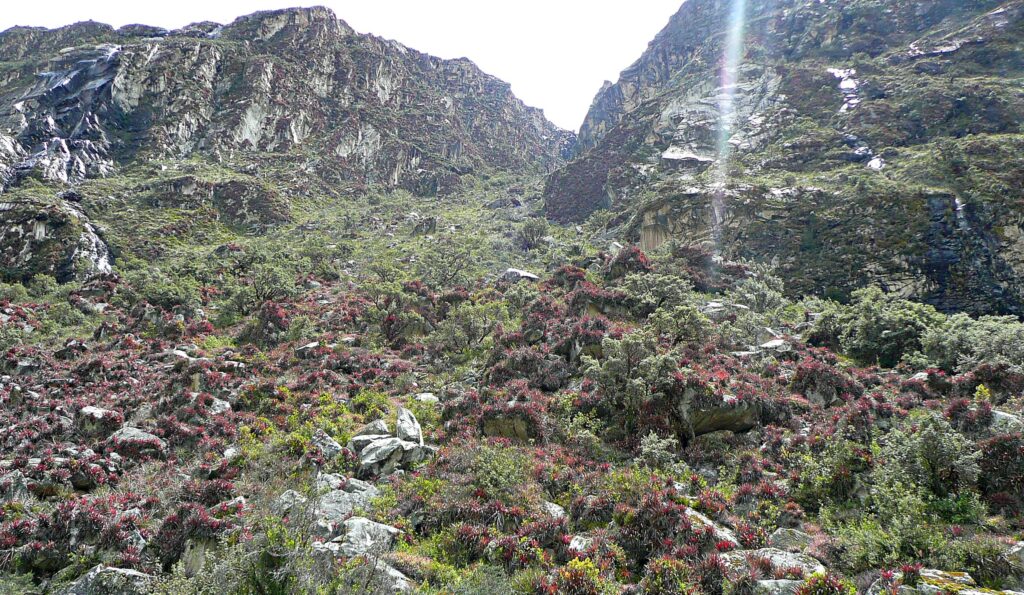 Bromeliads & Polylepis, Lagunas de Llanganuco, Cordillera Blanca, Ancash, Peru
Bromeliads & Polylepis, Lagunas de Llanganuco, Cordillera Blanca, Ancash, Peru
Andean Ethnobotanicals
Anthopterus schultzeae HBG90758
Ericaceae. Semi-epiphytic shrub with branches 3–10′ long. Narrow, densely arranged, elliptic leaves. New growth is reddish-bronze. Racemose inflorescence with 5–12+ small, lantern-like flowers, pale yellow-green with a pink blush, aging to red. Burgundy to black edible berries similar to a bilberry. A superb blueberry relative from the moist forests of Ecuador and north Peru between 2600–7500′. Grow like a blueberry — moist, well draining acidic soil. Roots easy from cuttings. Z9b?
[ 4 ] → 1 ~ 4-6″ unrooted cutting $24.50 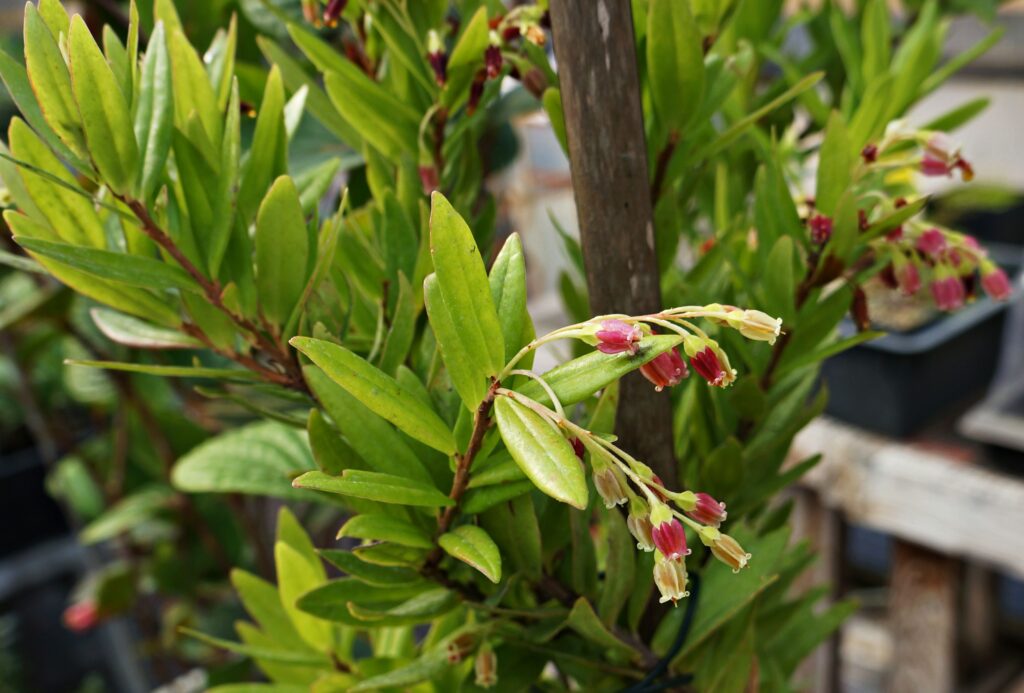
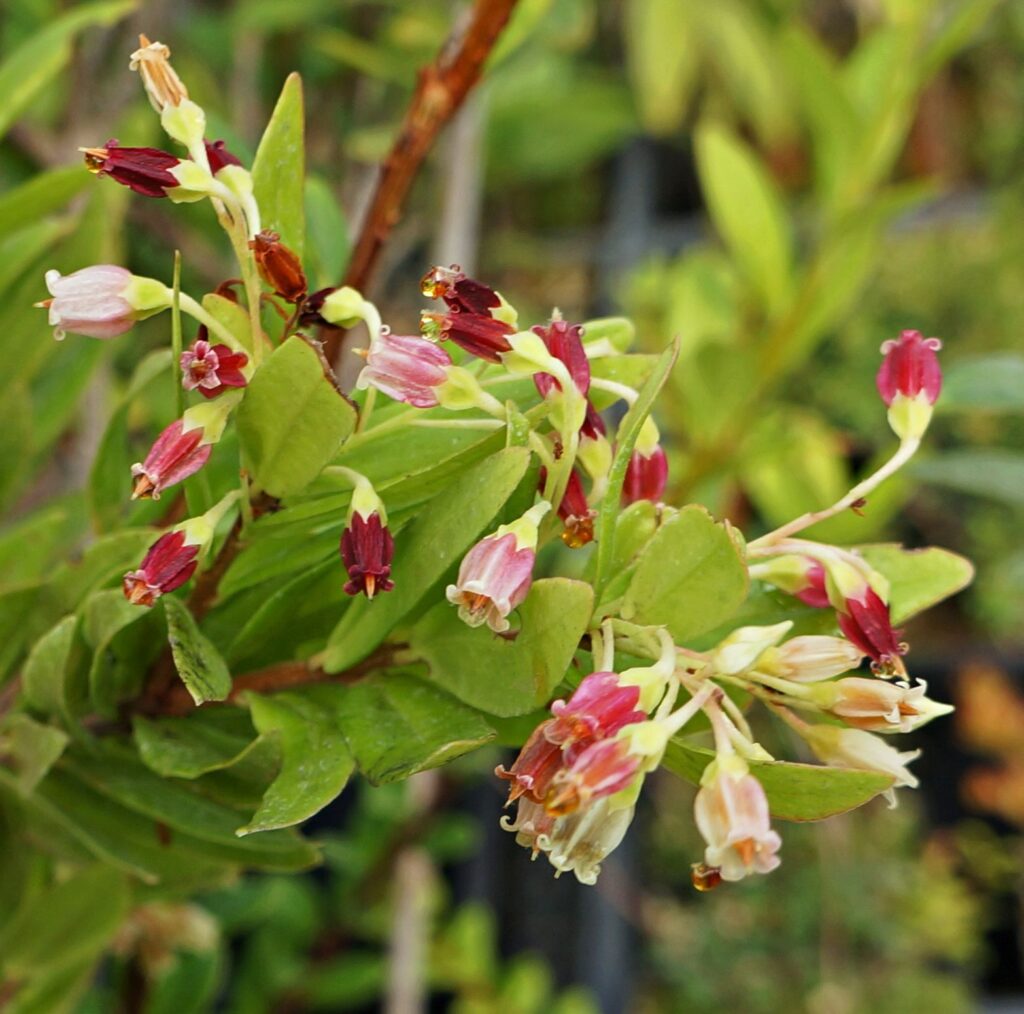
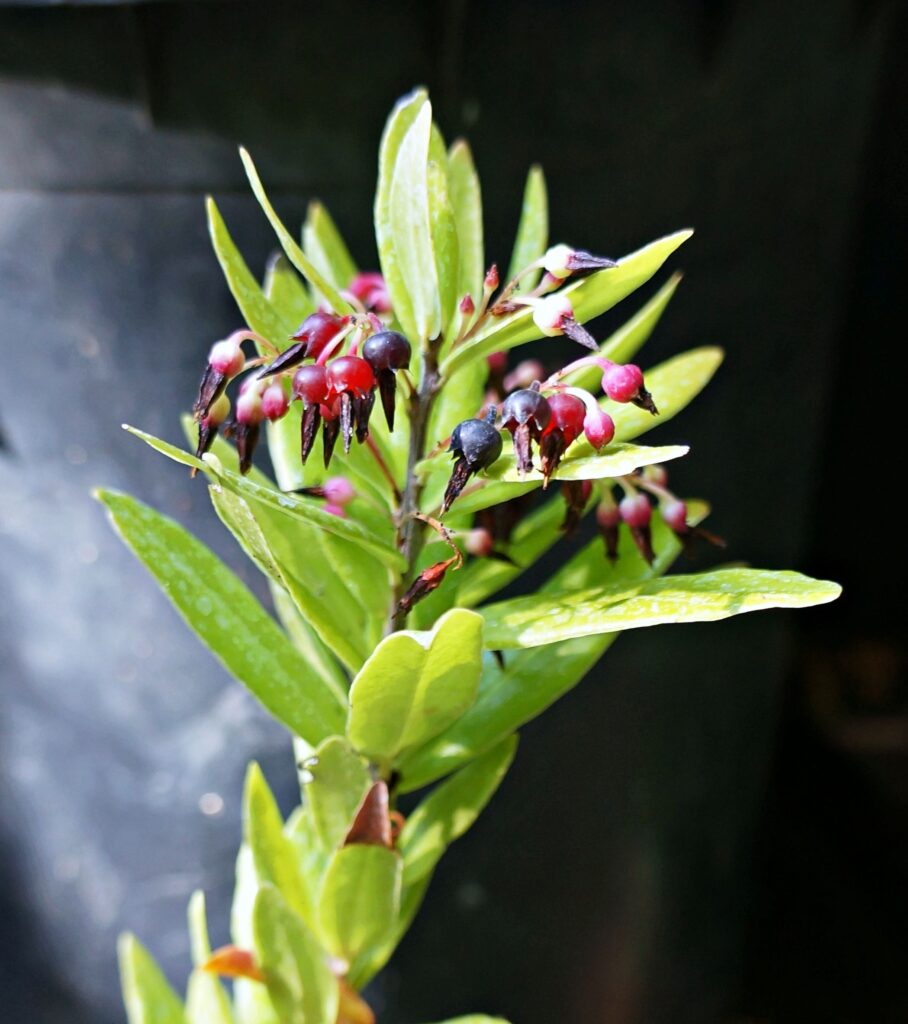
Aristotelia chilensis “Macqui Berry”
Elaeocarpaceae. Dioecious shrub to 15′+. Lanceolate leaves, small white flowers, dark purple-black seedy fruits with a taste similar to tart blueberries. A pioneer plant found mostly in cleared forests and lower mountain hillsides of Chile. The edible fruit are used for brewing wine and chicha, the leaves for sore throats, wound healing, intestinal tumors, and as an analgesic. Recent studies show that the berries have a very high antioxidant value and they are now being promoted as a superfood in the US from “pristine Patagonia”. We put the berries in the blender with a little water, strain the seeds and use the deep purple juice. Easy to grow, prefers rich soil. A good food forest plant, fast growing. Part shade to sun. Unsexed, large, branching specimens ready for outplanting! Z8a
2 ~ 24–28″+ plants 3-4 years old $38.50** each
2 ~ 30–36″+ plants 4+ years old $44.50** each SOLD
2 ~ 48–54″+ plants 5-6 years old $62.50** each SOLD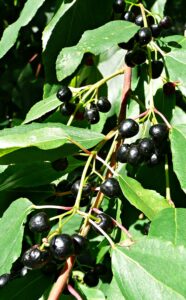
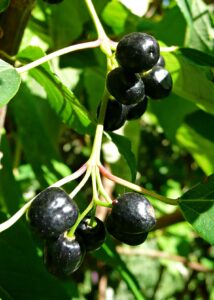
Begonia boliviensis
Begoniaceae. Forms a discoid perennial tuber/caudex to 12″ across. Arching annual stems to 18″+, slender leaves and 2″ tubular orange-red blossoms draw hummingbirds. Native to the Yungas region of the Bolivian Andes. Introduced into cultivation the 1800s, it is parent of many of the modern hybrids. Well draining soil and part shade. A favorite for hanging baskets. Can be grown like a succulent, drought and cold dormant. A gorgeous and rewarding species. We have a couple rarely offered old plants. Currently winter dormant. Z8a if well mulched.2 ~ Plants with 2.5-3″ tuber/caudex 9 years old $36.50* each SOLD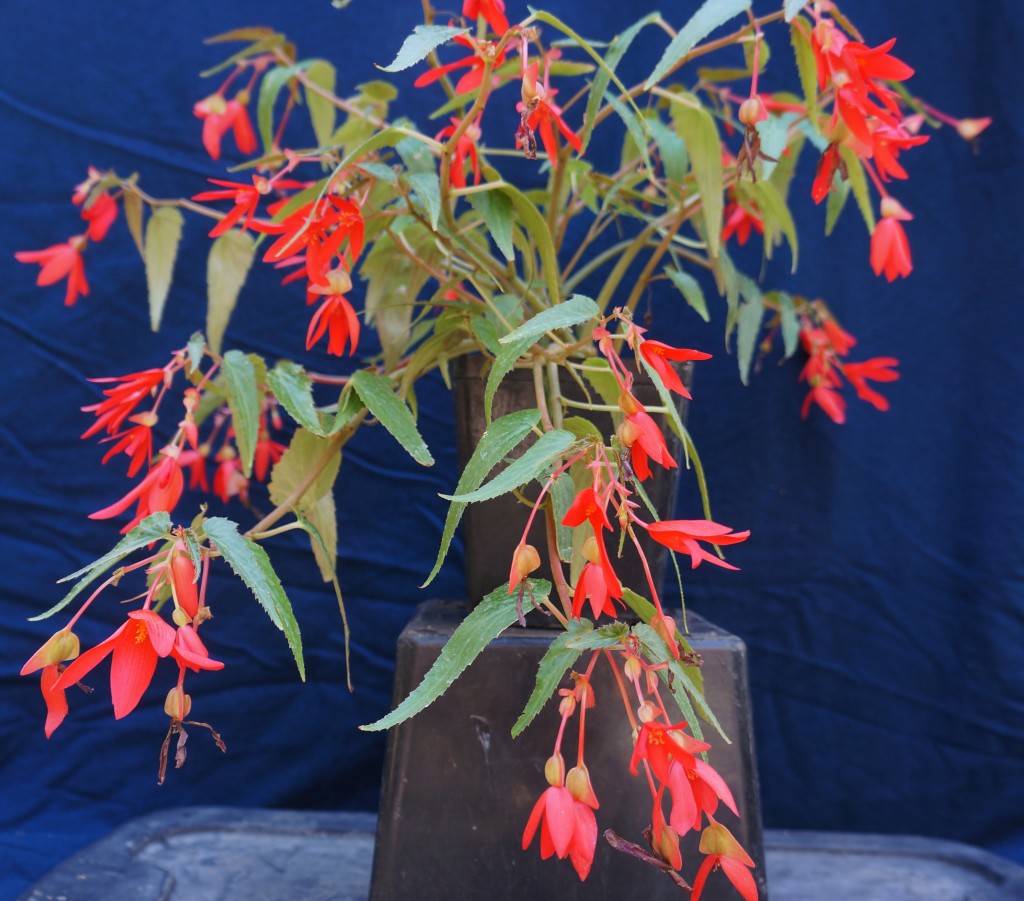
Blechnum aff. appendiculatum BK14512.4
Blechnaceae. Attractive small creeping fern. Rosettes of glossy imparipinnate foliage to 6”+ long, new fronds are an alluring rosy-red. Rocky slopes, shrub understory, near Capuliyoc pass, Cusco Dept., Peru, 9600’. May be drought deciduous. Easily grown, an excellent companion species. Z9?
[ 3 ] → 1 ~ Plant 5+ years old $16.50 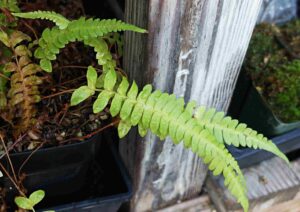
Cavendishia adenophora “Quereme Rosa”
Ericaceae. Evergreen shrub to 6’+. Thick, oblong or obovate leaves to 6″. New growth is pink-red to bronze. Large terminal clusters of up to 25 tubular flowers, pink with dark rose stripes surrounded by pink bracts with rose frills along their margins—unbelievably showy and unabashedly erotic! Large, purple-black, edible berries. Cordillera Occidental cloud forest of Choco and Valle Depts., Columbia, between 2200–6500’+. Considered the most gorgeous Cavendishia species, local legends tell of the alluring power of its beauty. Endangered due to overharvest for “love magic” and for sale in local flower markets. Easy to grow, prefers filtered light and moist, well draining acidic soil. Blooming size specimen of clone D. The largest specimen of this amazing neo-tropical blueberry that we’ve yet to offer! Z9b?
1 ~ 44″+ plant branching at base $185** SOLD
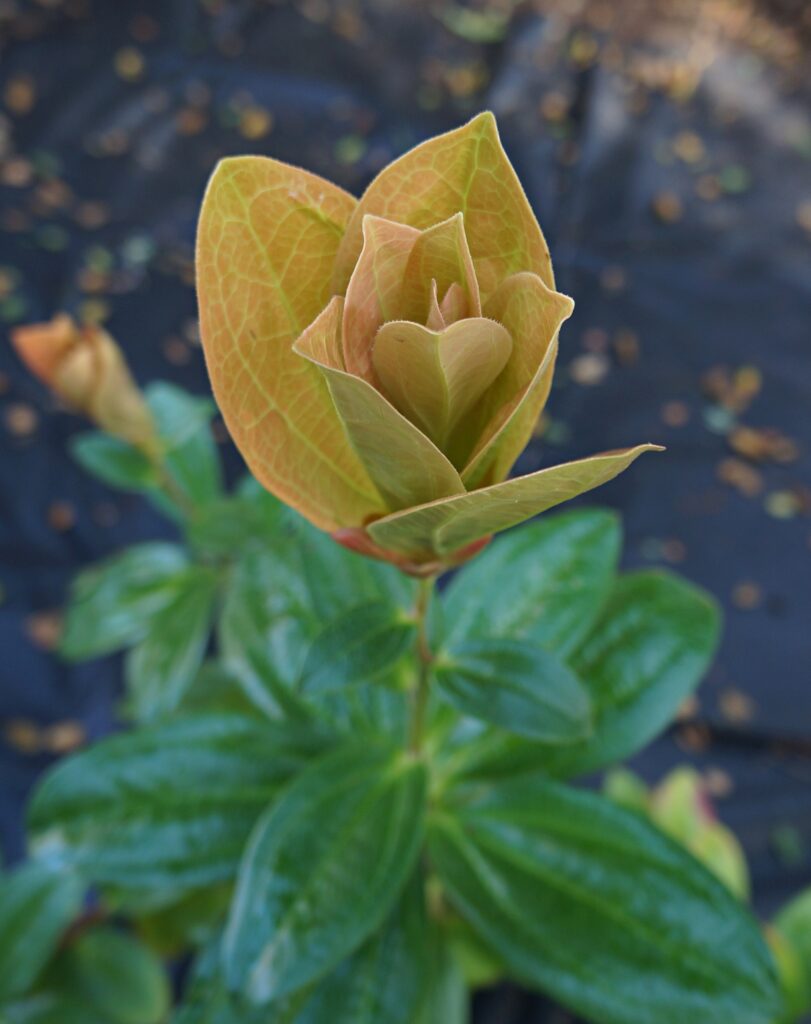
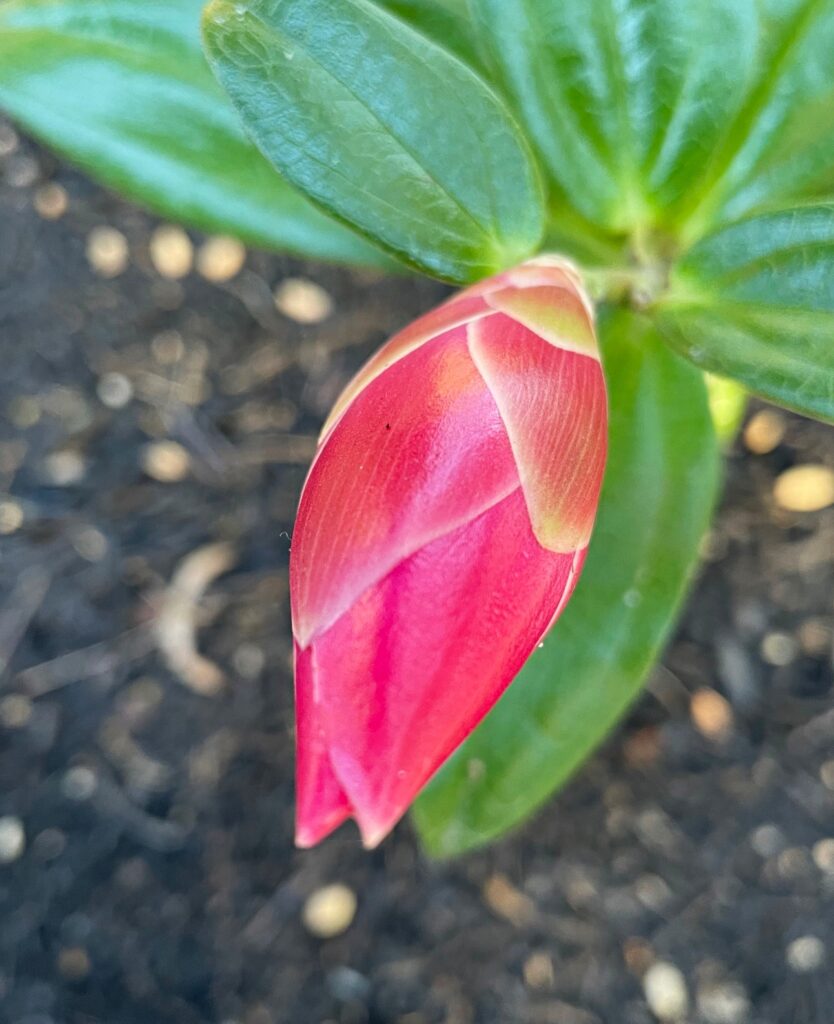
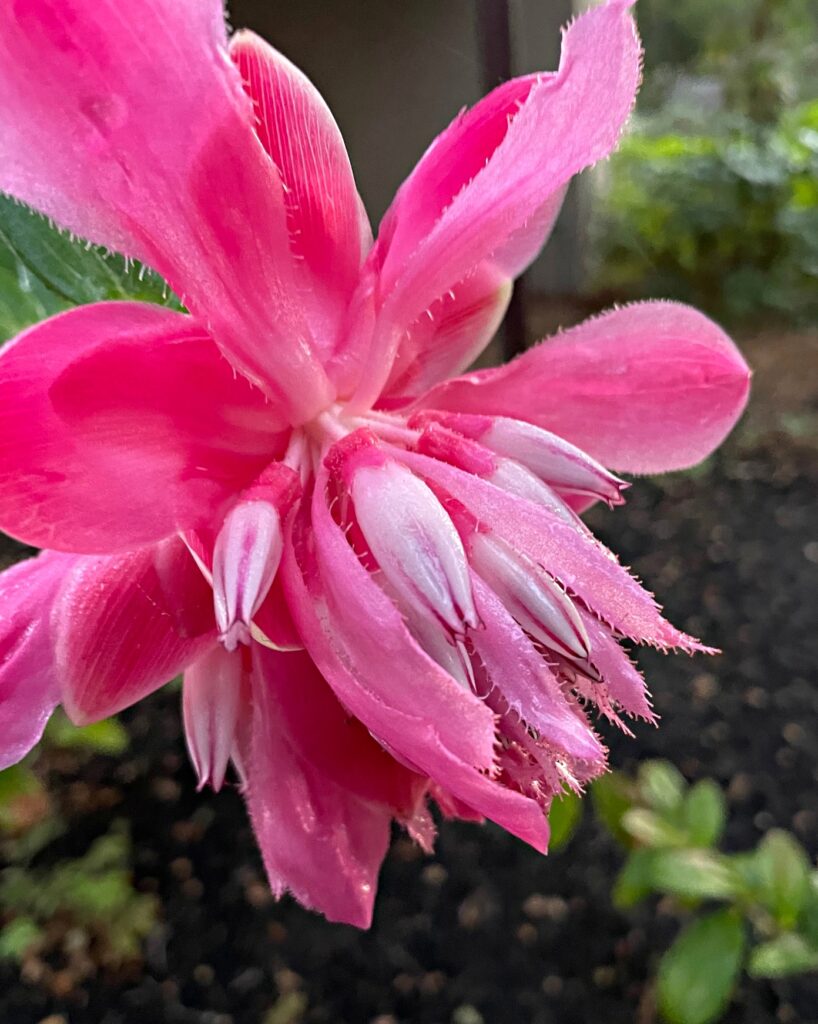
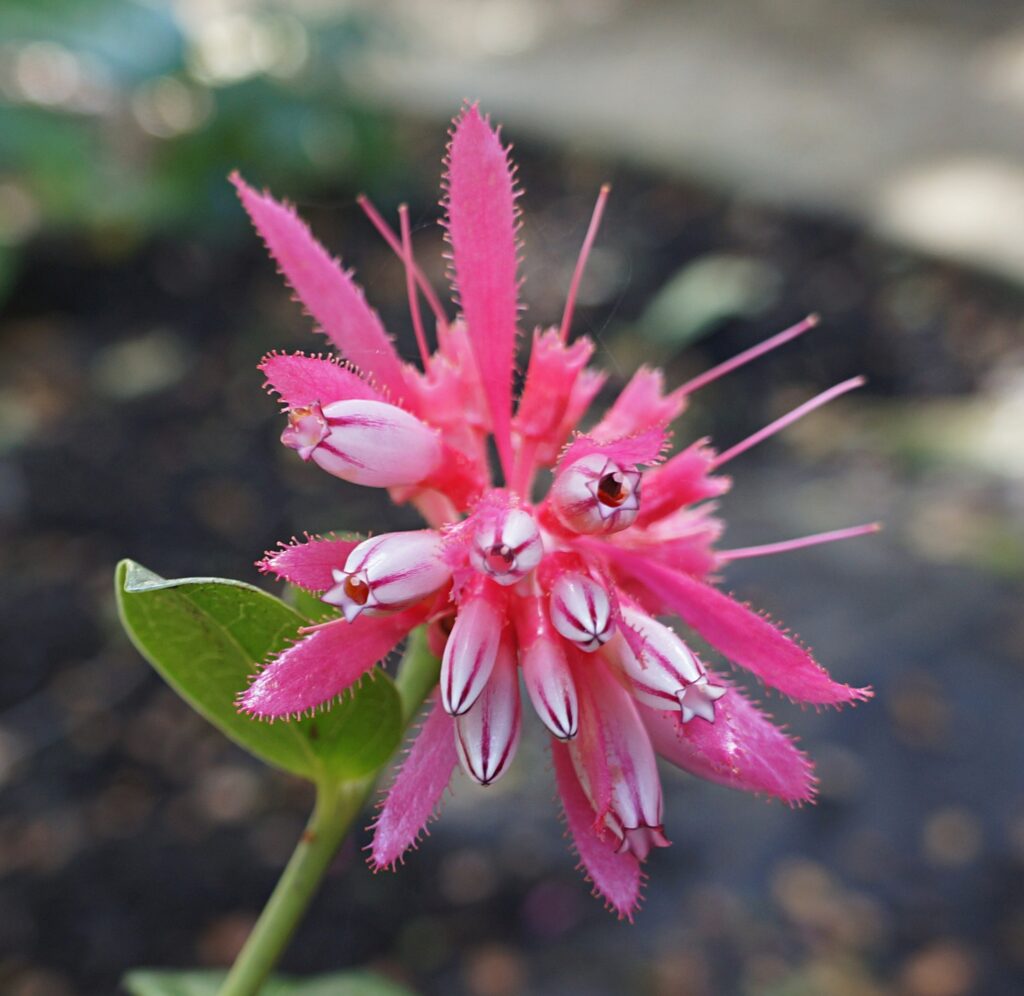
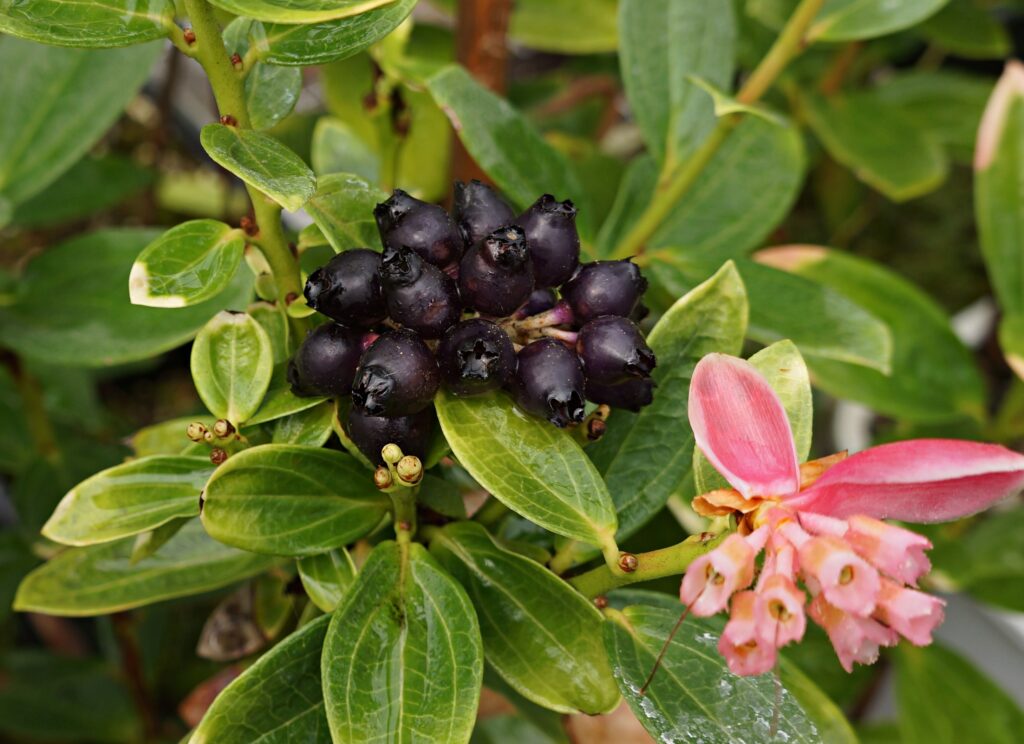
Cavendishia axillaris X ??
Open pollinated neotropical blueberry seedlings, we don’t know if the seed was true or pollinated by any one of our other Cavendishia species. C. axillaris is a shrub to 2–4′ with deeply veined, dark green suborbicular leaves densely arranged along the stems. Unique inflorescences at the leaf axils—clusters of rose-pink bracts and numerous small, bottle shaped, white-pink to yellow-white flowers. Rounded, edible, indigo blue berries. A terrestrial to epiphytic denizen of the cloud forests of Costa Rica to northern Columbia up to 9000′. First ever offering of seed grown plants. Z9b?
[ 10 ] → 4 ~ 6-10″+ plants 3+ years old $42.50 each or 2 for $75 or 4 for $114
January Sale! $37.50 each or 2 for $66 or 4 for $99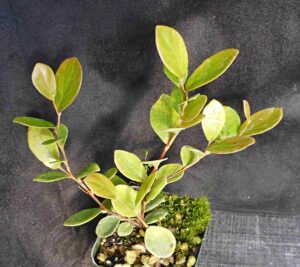
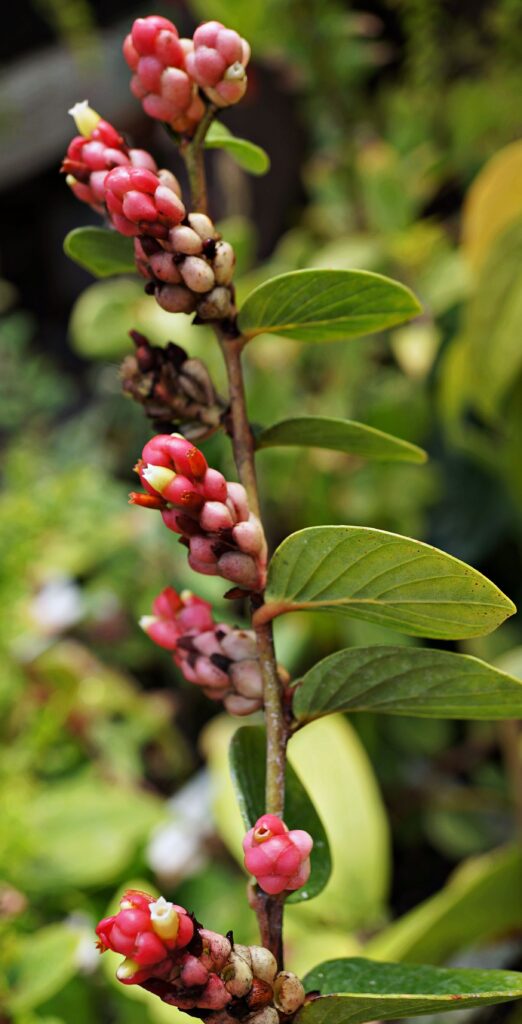
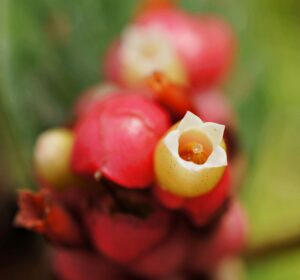
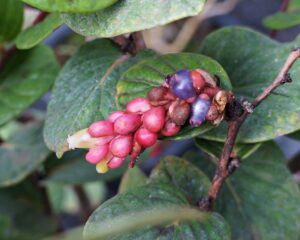
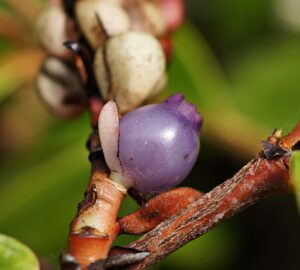 Mother Cavendishia axillaris inflorescence & fruit
Mother Cavendishia axillaris inflorescence & fruit
Cavendishia capitulata HBG92102
Multibranched shrublet 1–3’+ high with a thickened stem base to 6″ diameter. Small obovate leaves, new growth bronze. Flower clusters with reddish bracts and 3–6 tubular purplish flowers with white tips. Round edible berries. Often occurs as an epiphyte, wet tropical forests and cloudforests of Costa Rica, Panama and Columbia up to 9000′. One of the most endearing and diminutive Cavendishia, no less lovely for its size. We offer several large, branched cuttings, ready for rooting in perlite or moss — keep humid and warm. Z9b?
[ 3 ] → 1 ~ 8-12″+ branched, unrooted cutting $38.50 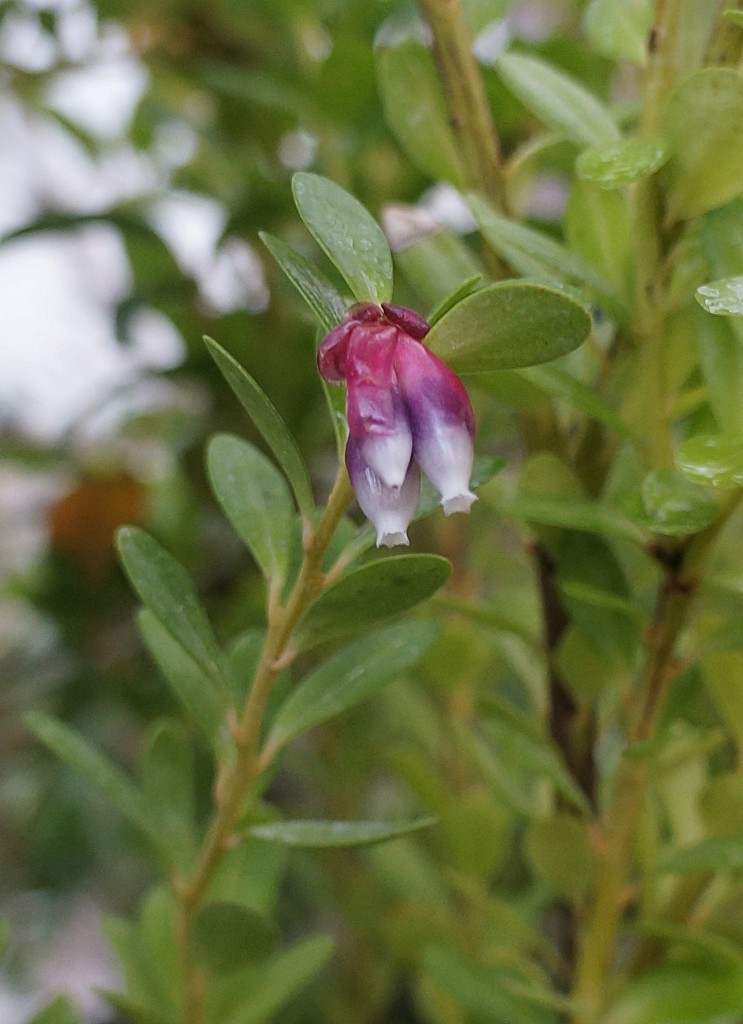
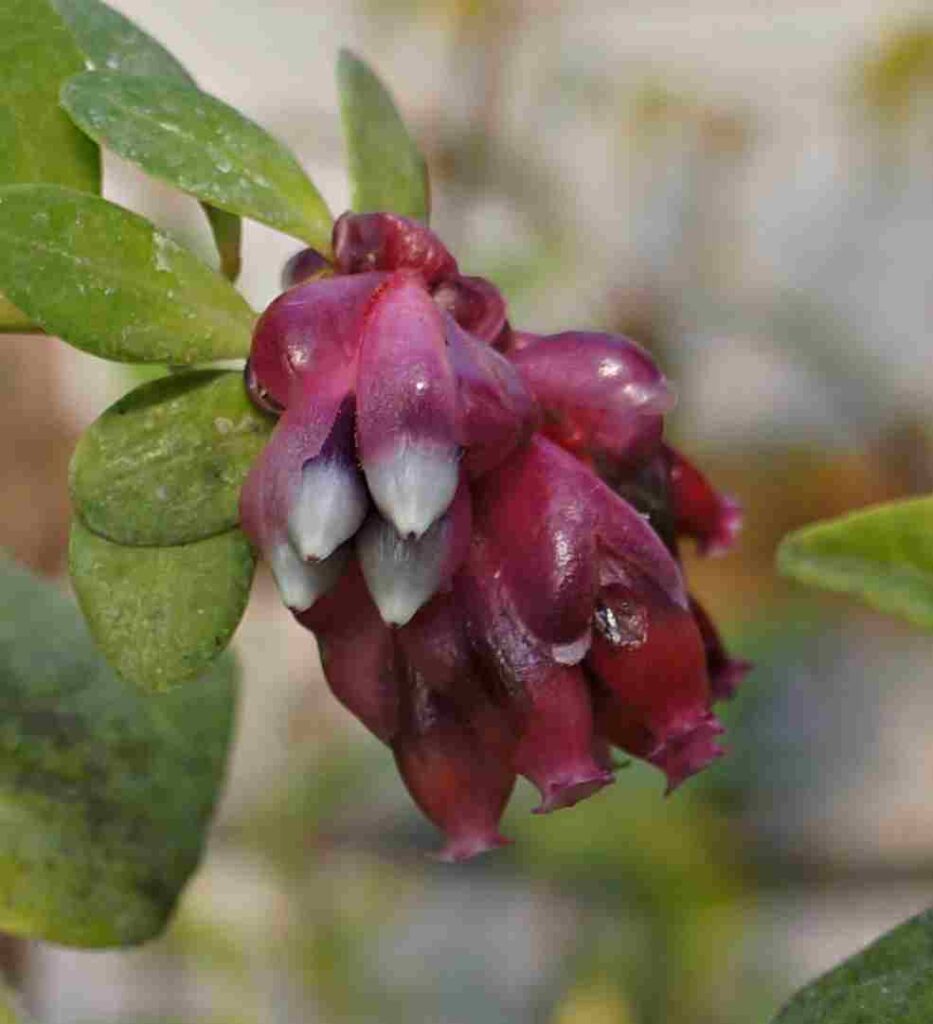
Cavendishia crassifolia HBG92103 “Shash”
Upright evergreen shrub to 12’+. Large waxy leaves. Inflorescence of up to 20+ tubular flowers, rose-red with pale tips, emerging from pinkish bracts. Edible purplish berries. Basically a rare and distinct Central American form of C. bracteata. Easily grown, root cuttings in perlite or moss; keep humid and warm. Only offered a couple times. Z9a/b
[ 2 ] → 1 ~ 4-6″ unrooted cutting $32.50 SOLD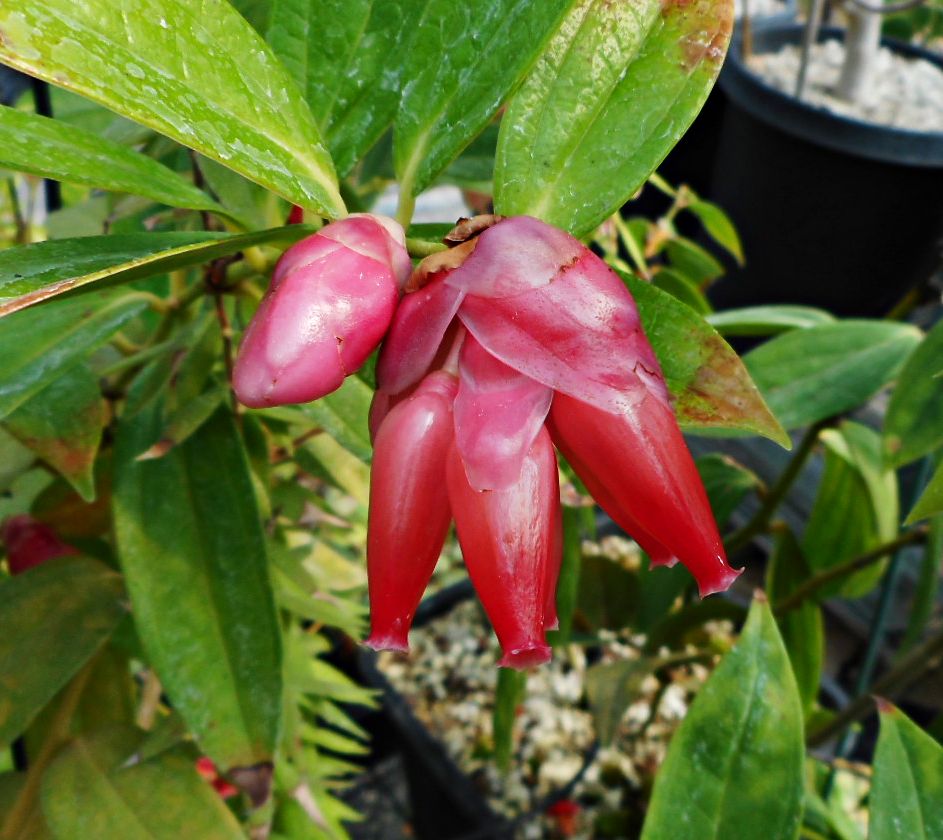
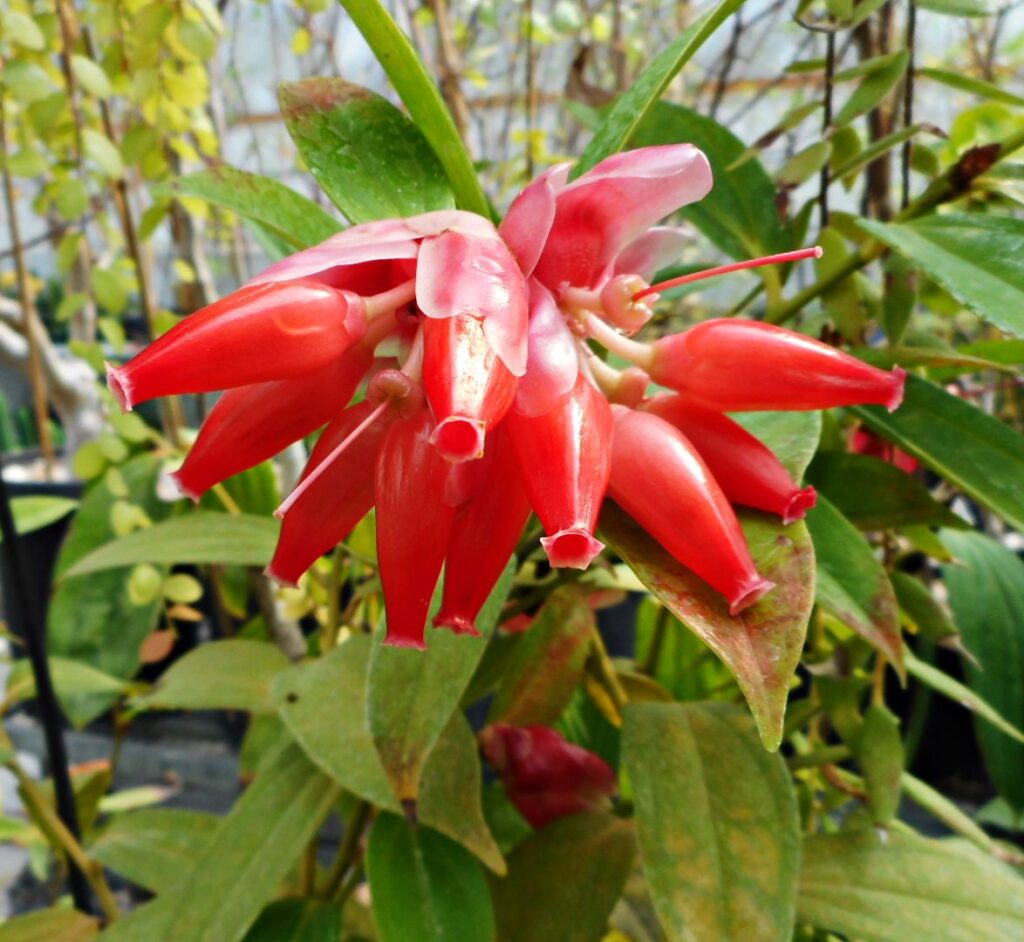
Ceratostema alatum “Joyapa”
Ericaceae. Shrub to 5’+ that may eventually form a caudiciform lignotuber. Glossy elliptic leaves, new growth is bronze to bright red. Clusters of pendulous tubular flowers with reflexed tips, a startling deep crimson color. Reddish edible berries. Another amazing Andean blueberry relative native to the cloud forests of Columbia and Ecuador. A decoction of the plant is drunk for the nerves. Grow like other neotropical blueberries. Roots easily from cuttings. Very rarely offered. Z9a/b
[ 6 ] → 1 ~ 4-6″ unrooted cutting $34.50 SOLD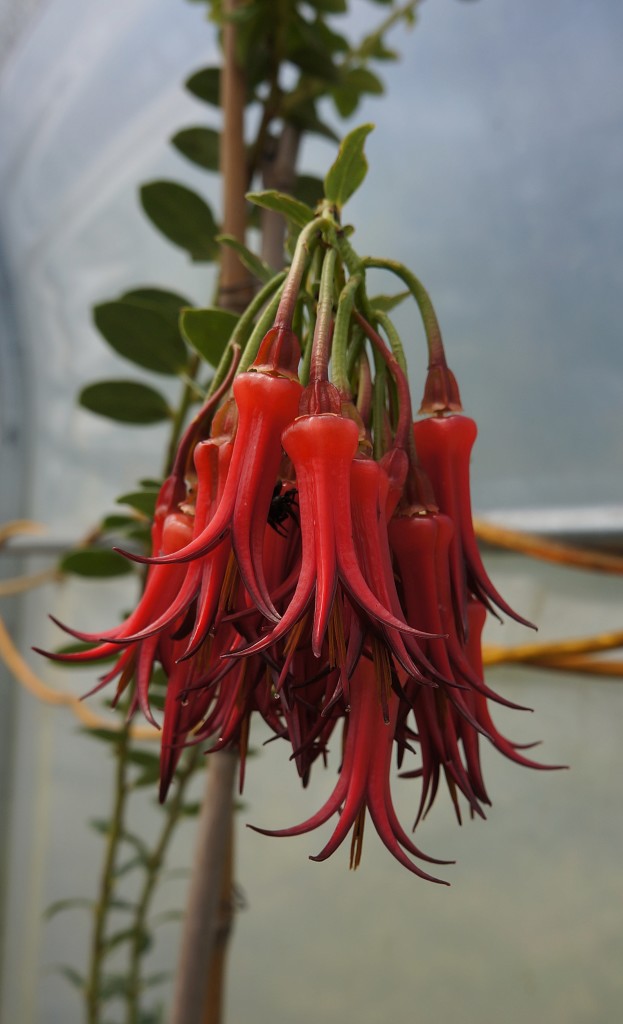
Colletia ulicina “Kunko Rojo” “Wayun”
Rhamnaceae. Very unusual and amazingly cool beneficial shrub to 10′ tall. Nearly leafless branches covered in many small, multibranched, photosynthetic green spines. Tubular red-pink flowers are borne in mass along the branch ends. Endemic to central Chile. Arguably the most interesting and showy species of this South American genus. Can be planted as a living fence that enriches the soil; root bacteria fix nitrogen and fertilize the earth around the plant. Drought and cold hardy. Seed has very erratic germination and we rarely have a chance to offer more than 1-2 seedlings a year. Has become highly valued by collectors, this first time in some years that we’ve offered plants outside of auction. Easy to grow and rewarding. Z8a
[ 5 ] → 1 ~ 4-7″ plant 2+ years old $55 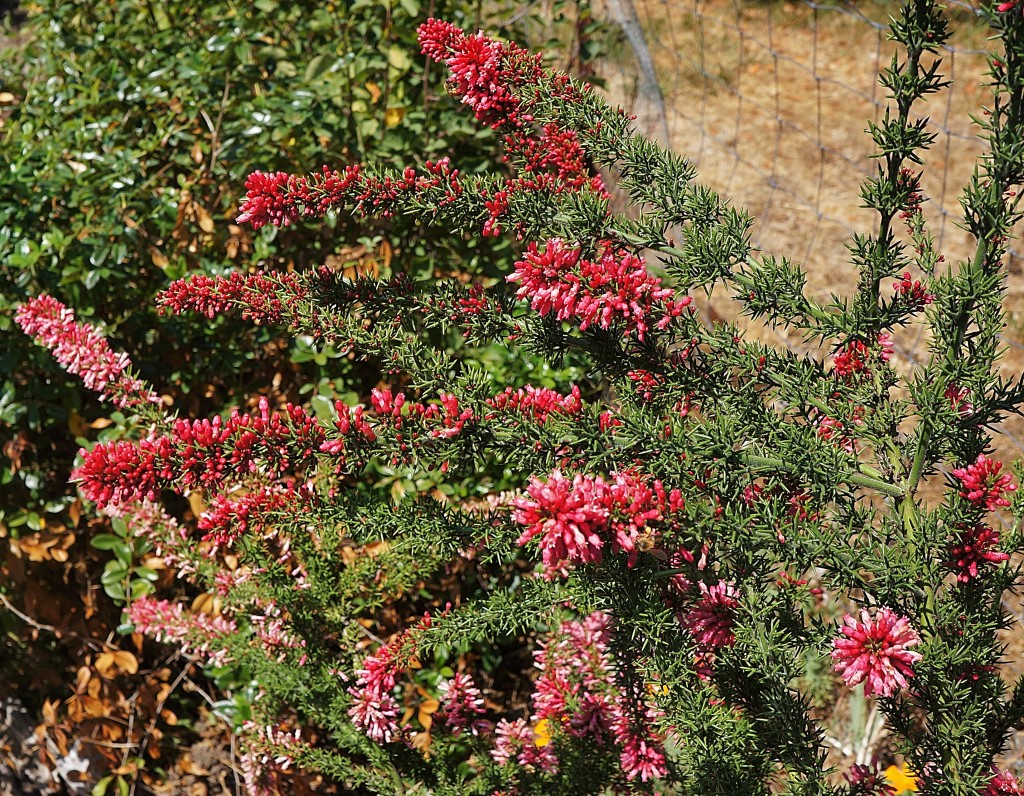
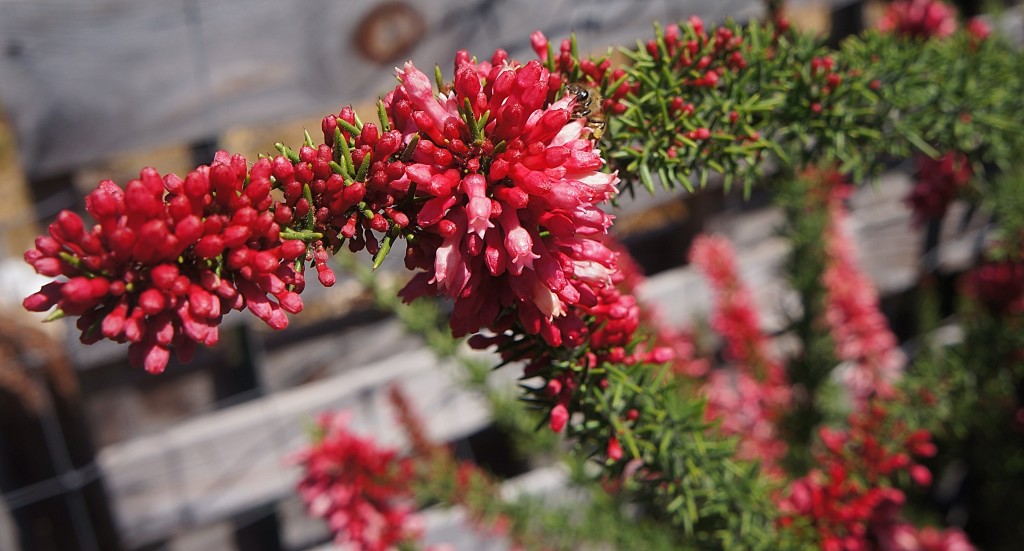
Desfontainia spinosa “Taique” “Borrachero”
Desfontainiaceae. Highly ornamental evergreen shrub. Holly-like leaves, 1″ tubular red flowers with yellow tips, yellow-green fruits. Rare throughout its range from the Columbian Andes south to Chile. Considered a monotypic species with a family all its own, yet our perusal of herbarium specimens in Peru suggest to us that either the plant exhibits extreme morphological plasticity or there’s more than one species. We first encountered this awesome plant in 1996 in Cusco, Peru between the ruins of Sayacmarca and Runkurakay at 12,500′. Used as an ethnomedicinal inebriant, possibly a deliriant entheogen. The chemistry is poorly understood. Easy to grow, in full sun it stays a bush to 6′, in part shade it can reach 15′ or more. Well drained, rich acid soil. Drought tolerant once established, but prefers ample water. We offer branching specimens from Chilean clones. Z8b
[ 3 ] → 1 ~ 9–11″ plant $36.50 SOLD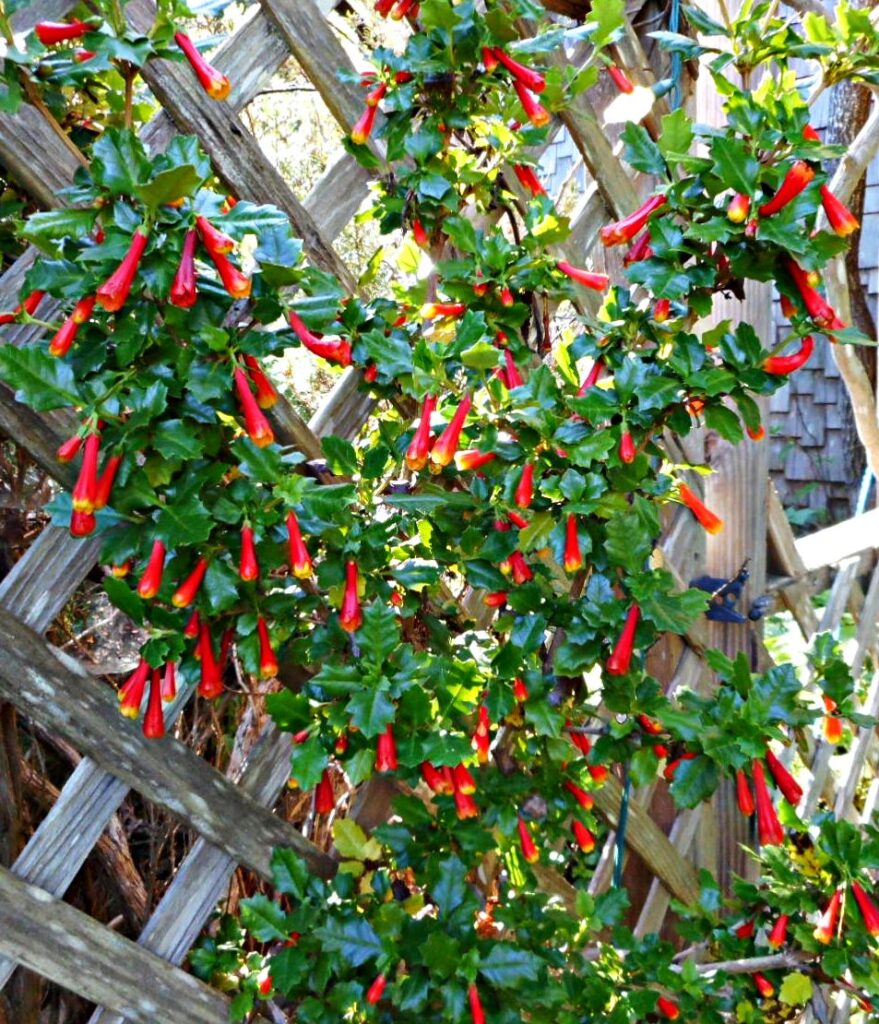
Disterigma rimbachii “Andean Huckleberry”
Ericaceae. One of our favorite plants. Beautiful multibranched shrub to 1–3′. Small, spirally arranged, oval leaves clothe the stems. New growth is deep red. Little, rose-pink tubular flowers borne along the stems. Light indigo-purple berries, sweet and juicy. Blueberry kin endemic to the low mountain forests and cloudforests of Ecuador from 2500–10,700′. Filtered light, well draining, moist, acidic soil. We’ve only distributed rooted cuttings in the past, this is our first offering of seedlings (outside of auctions) of this gorgeous species. Z9b
[ 8 ] → 4 ~ 6-10″ plants 3+ years old $40.50 each or 2 for $70 or 4 for $110
January Sale! $36.50 each or 2 for $64 or 4 for $96
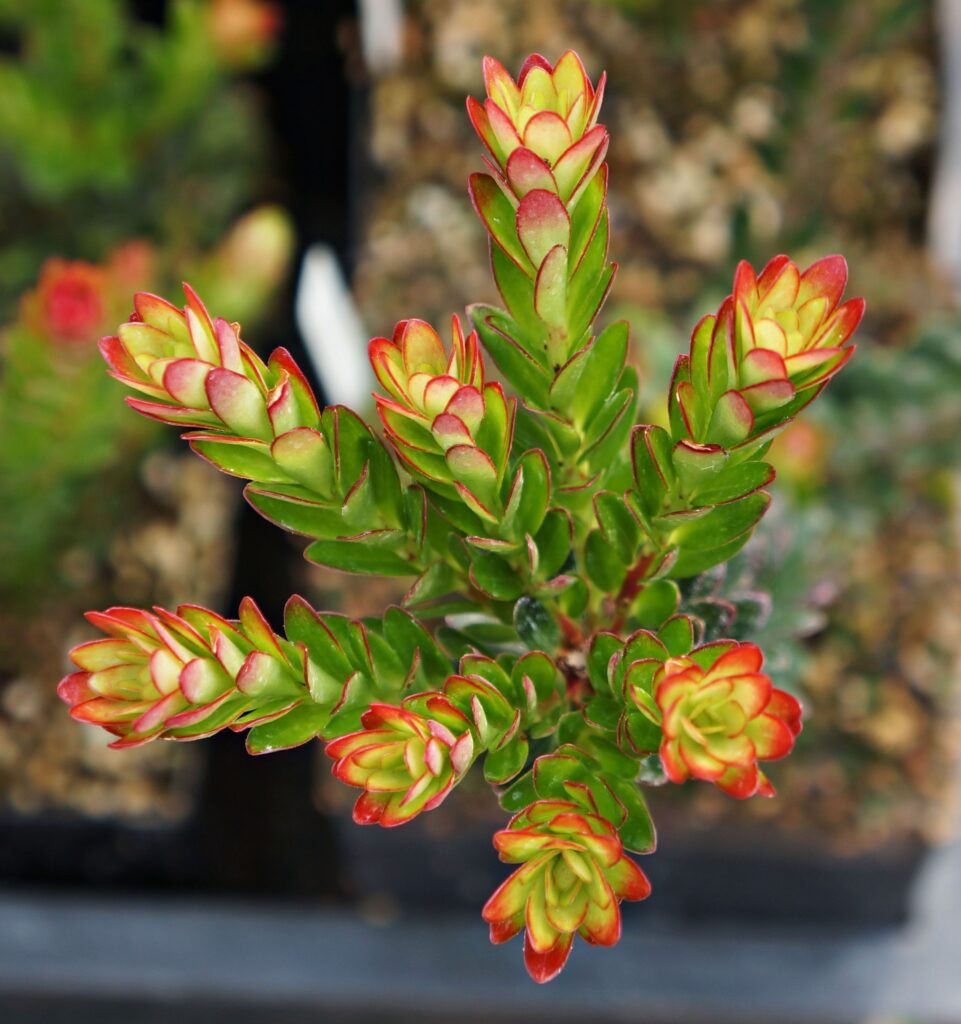
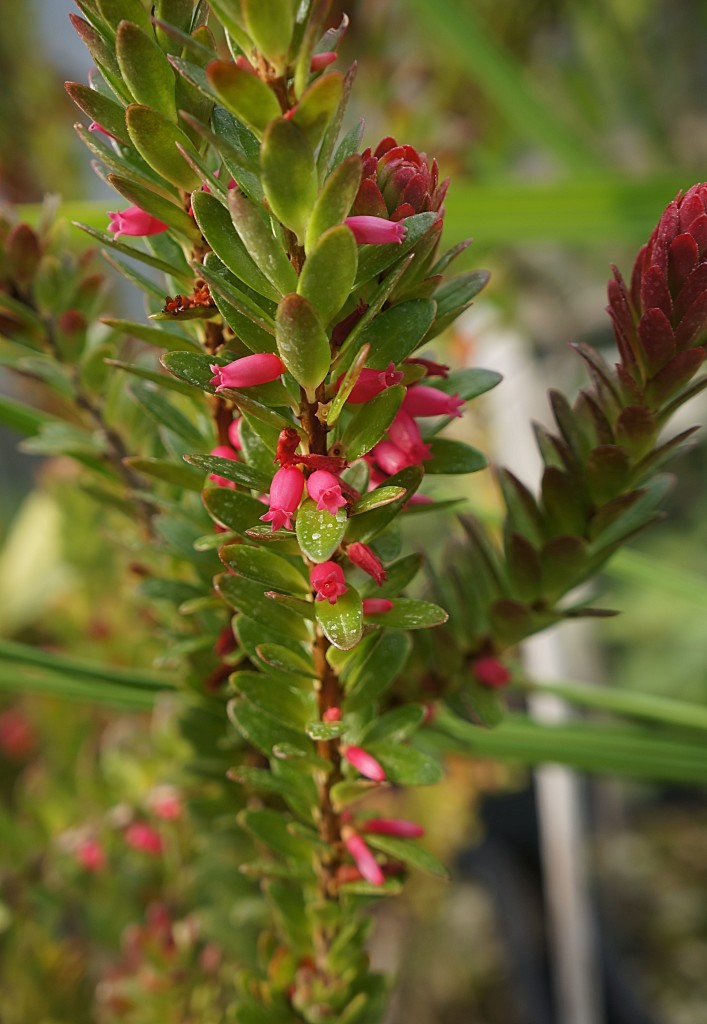
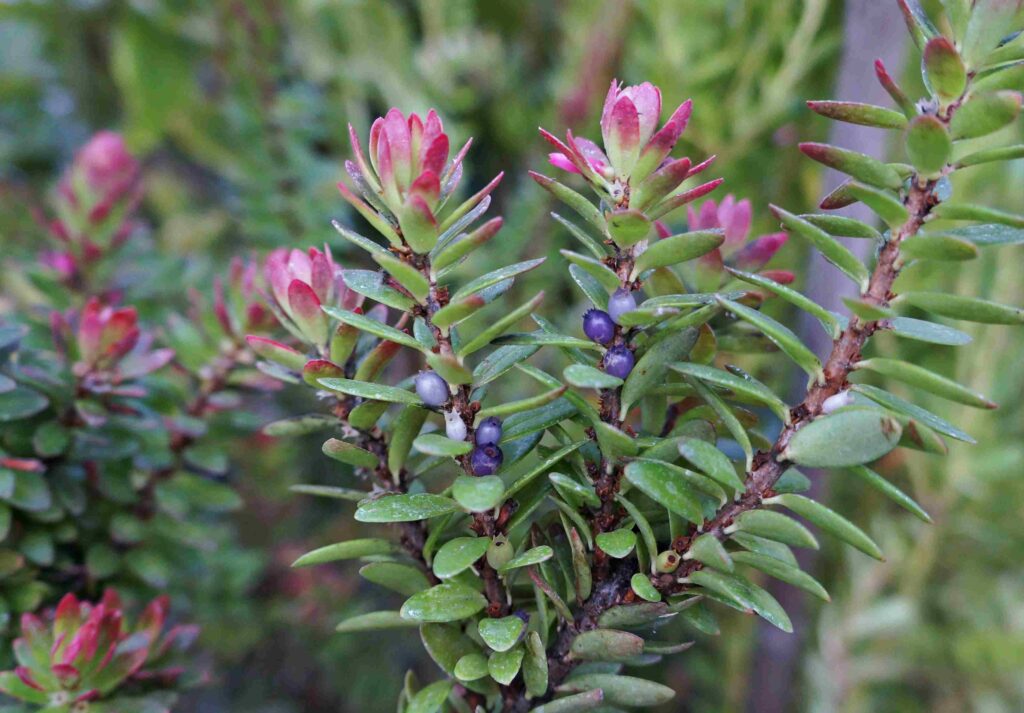
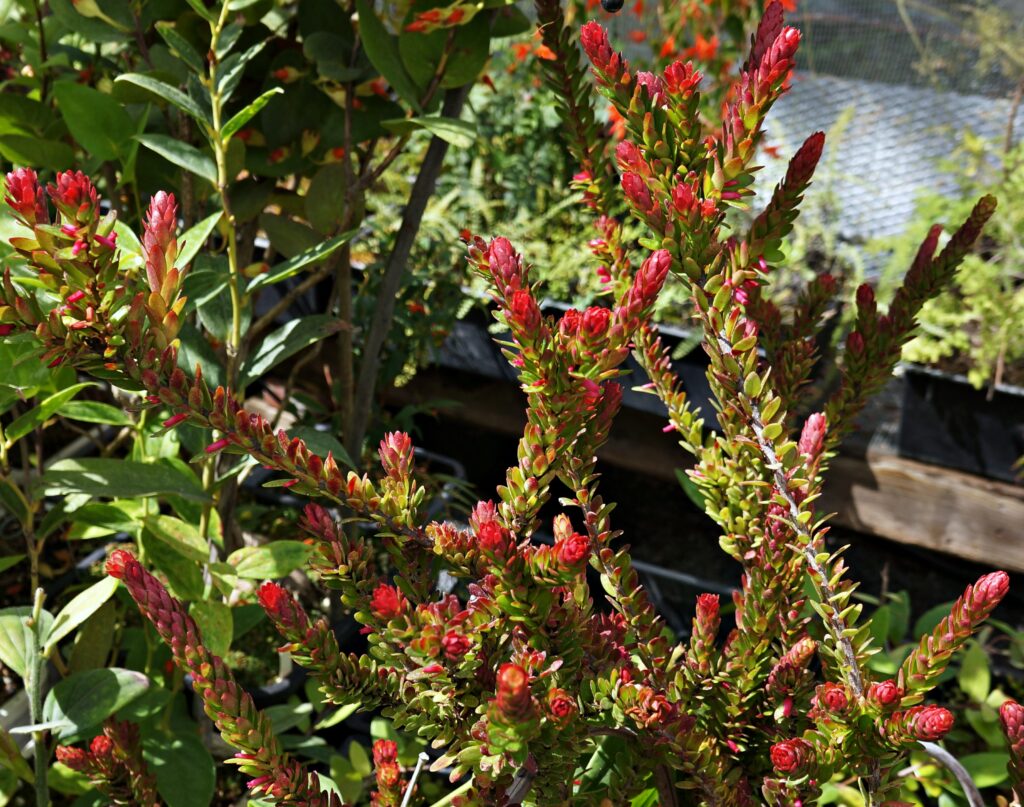 mother plant new growth, blossoms & fruit
mother plant new growth, blossoms & fruit
Escallonia cordobensis BK151018.13
Escalloniaceae. A lovely shrub/small tree 6-15’+. Narrow leaves. Clusters of showy white flowers, very sweetly scented. Los Gigantes, Sierras Grandes, Cordoba, Argentina, 6400′. Very rare Cordoba endemic threatened by cows. Once a key forest species of this unique mountain range with Polylepis australis and Maytenus boaria. The cows are now the key species here and have decimated the forest, even within much of the national preserve. By its scarcity it appears that the cows find this Escallonia a gustatory delight! The only large plants we saw were restricted to nearly inaccessible cliffs which we scaled to collect this seed. Unknown in cultivation until now, conservation propagation is vital. Sun, well draining soil. Bonsais well. Rooted cuts. A couple gorgeous specimens with excellent branch form. Z7b?
[ 3 ] → 2 ~ 36 – 44″+ trees $64.50** each SOLD
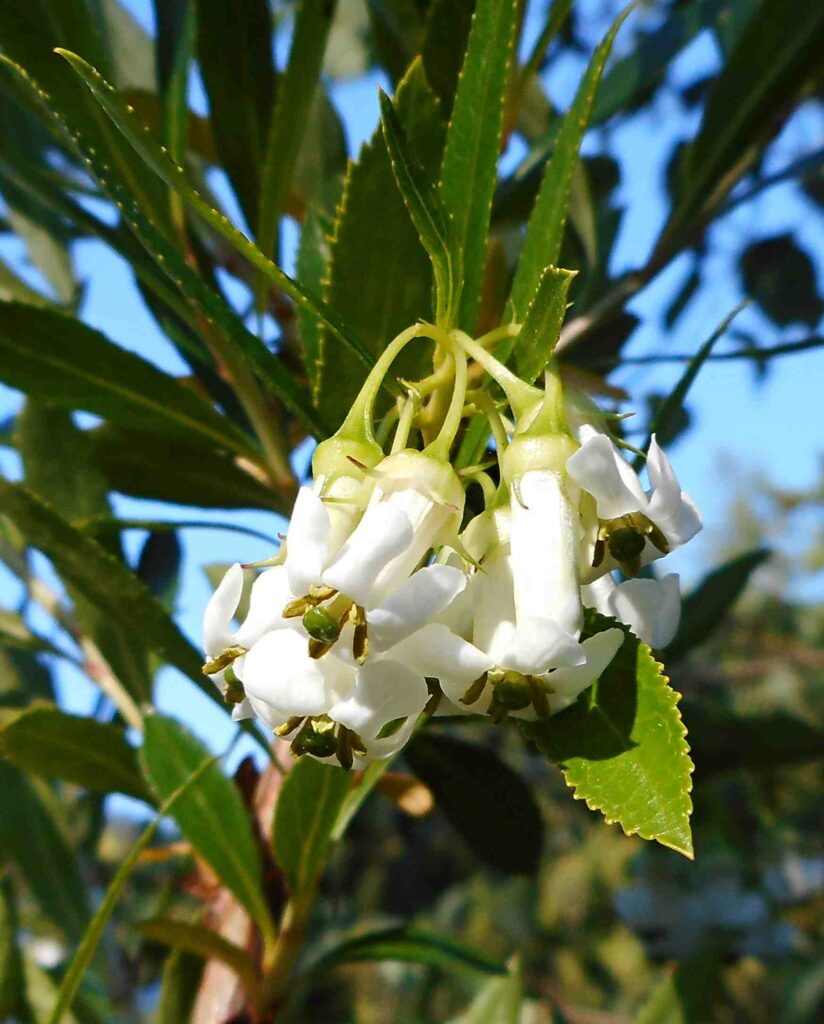
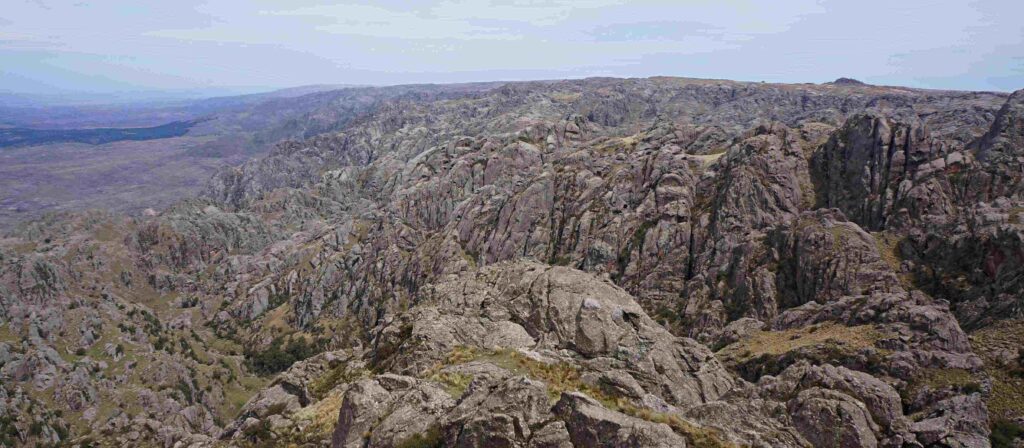 Home of Escallonia cordobensis, Los Gigantes, Sierras Grandes, Cordoba, Argentina
Home of Escallonia cordobensis, Los Gigantes, Sierras Grandes, Cordoba, Argentina
Eustephia sp. BK14512.9
Amaryllidaceae. Clustering bulb with slender green leaves. Upright flower stalk with terminal clusters of nodding tubular flowers; dark red with green tips. Steep slopes and embankments near Capuliyoc Pass, northern Cusco Dept., Peru, 9800′. In northern Peru Eustephia are used for wound healing, arthritis, and to undo witchcraft. Easy to grow, winter dormant for us. A great companion to grow with your Trichocereus. Give it a dry summer to encourage flowering. First introduction of seed grown bulbs. Z8b?
[ 7 ] → 2 ~ Bulbs $17.50 each or 2 for $32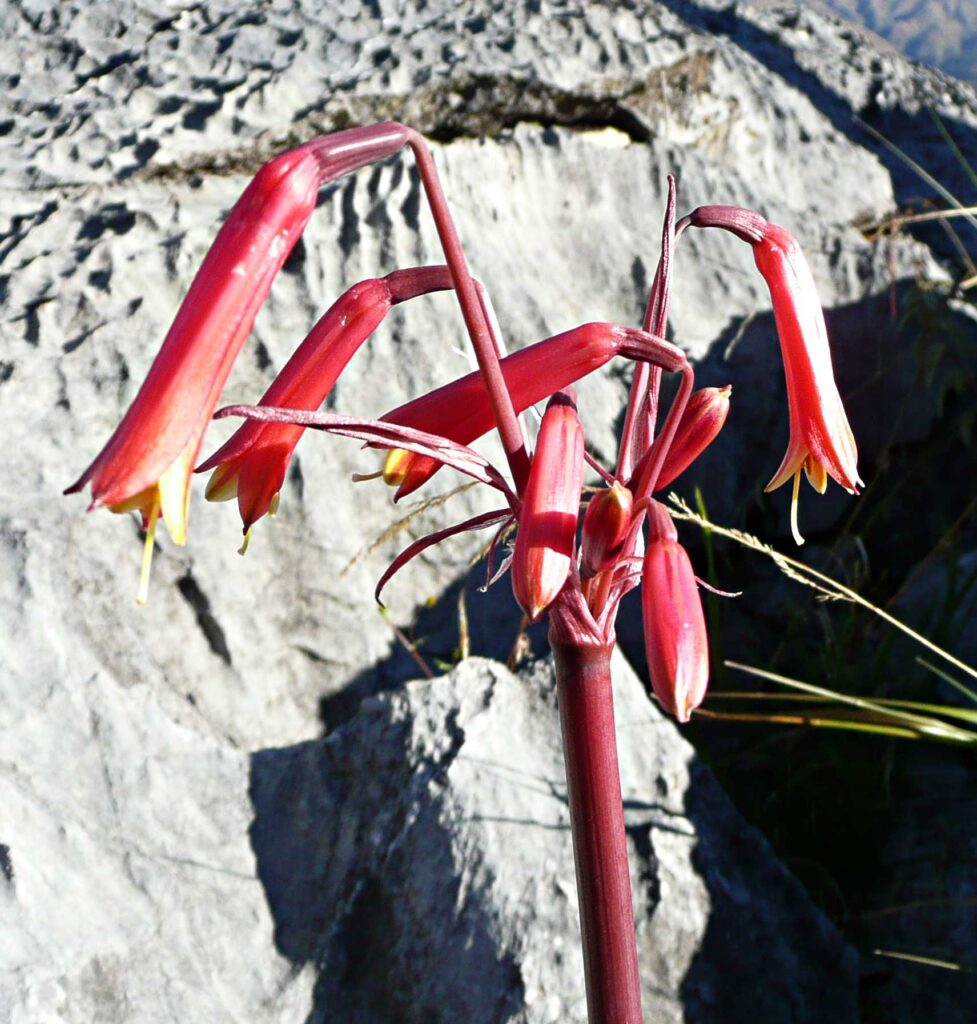
Haloragis masatierrana
Haloragaceae. Attractive shrub with shiny, deep green, serrated leaves, often with rusty highlights. Small reddish flowers at branch ends followed by dry berry-like fruit. Endemic to the forests of Robinson Crusoe Island, Juan Fernandez Archipelago, Chile. After a decade+ of seed selection, our plants are now well adapted to northern CA, tolerating winter frost and summer heat far beyond the first few generations we offered. Makes a truly lovely ornamental! Z8b/9a
[ 6 ] → 4 ~ 8–15″+ plants 3 years old $17.50 each or 2 for $28 or 4 for $44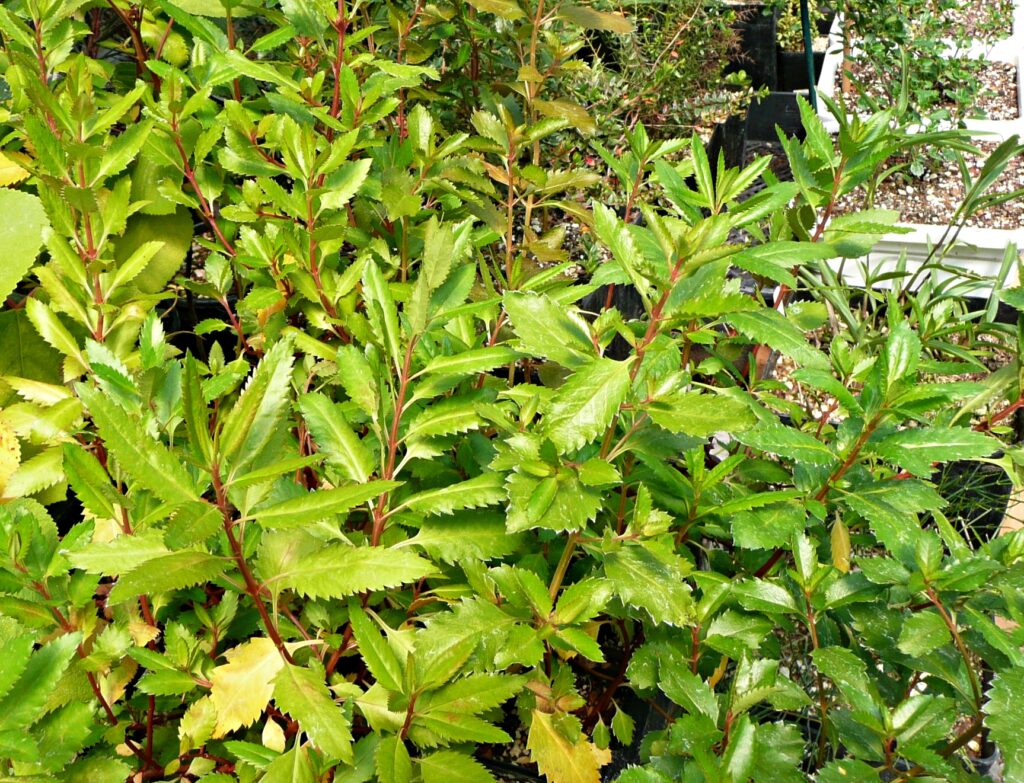
Lapageria rosea “Copihue” “Chilean Bell Flower”
Philesiaceae. Climbing evergreen vine to 20’+. Large 3–4” pendant bell flowers, usually a rich rose color, but occasionally other hues to pure white. The national flower of Chile! Cylindrical fruit, sweet and edible. Endemic to the forests of central Chile. The fruit is sometimes brewed into a chicha by the Mapuche. The finest ornamental edible climber there is. Fairly slow growing but easy if given a semi-shady sheltered spot, acid soil, and ample moisture. Our seedlings should show a variety of flower color. Z8a–b
[ 15 ] → 2 ~ Plants 3+ years old $14.50 each or 2 for $25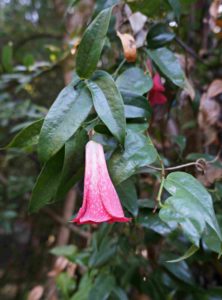
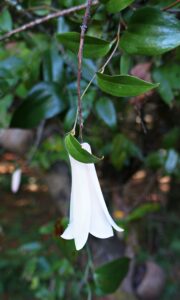
Lessingianthus asteroflorus BK10509.12 “Orqo yurak yurak”
Asteraceae. Erect plant to 4′ with blue-green simple leaves. The stems, leaves and flower buds are covered in a downy white fur. Clusters of bright purple thistle-like flowers attract butterflies. Seed from near Inkallajta, Cochabamba, Bolivia, 10,000′. A very friendly plant with great horticultural appeal. Used to treat respiratory infections. Regrows from the roots in hard frost. We introduced this gorgeous and cuddly plant to cultivation a decade ago. Z8a–b?
[ 5 ] → 2 ~ Plants 2-3 years old $16.50 each 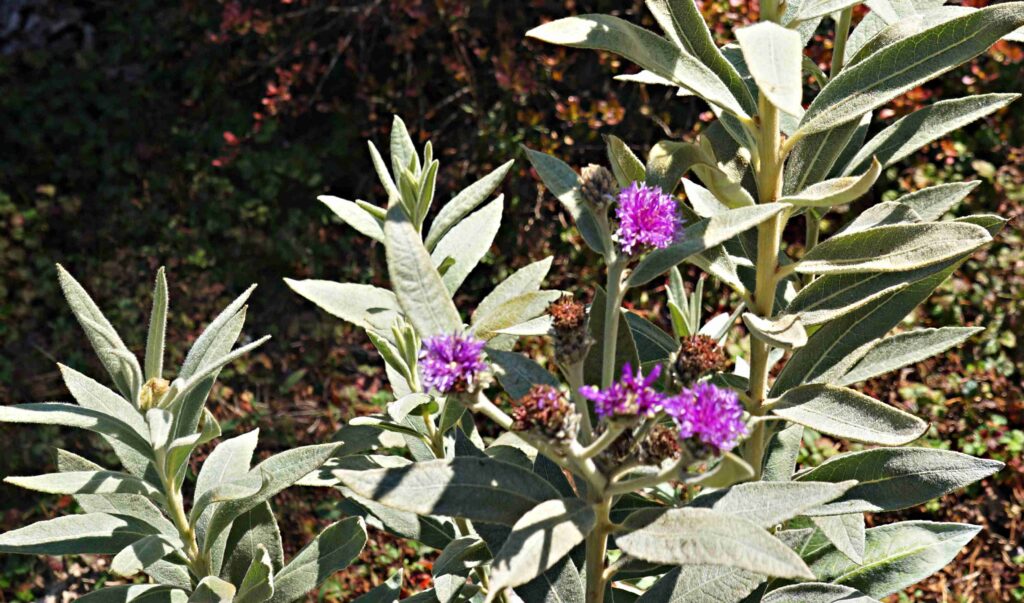
Luma chequen “Chequen” “Arrayan Blanco”
Myrtaceae. Evergreen shrub 6–20’+. Small simple leaves, aromatic if crushed. Scented white flowers and dark purple edible berries. Native to central Chile and adjacent Argentina. The fruit are eaten and fermented into chicha by the Mapuche. A rewarding and easy to grow ornamental edible. Drought tolerant once established. Z8a
[ 6 ] → 1 ~ 6-10″+ plant 3 years old $16.50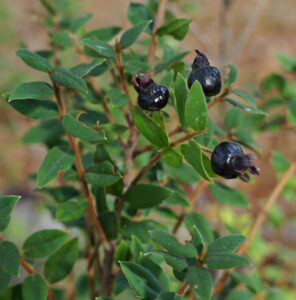
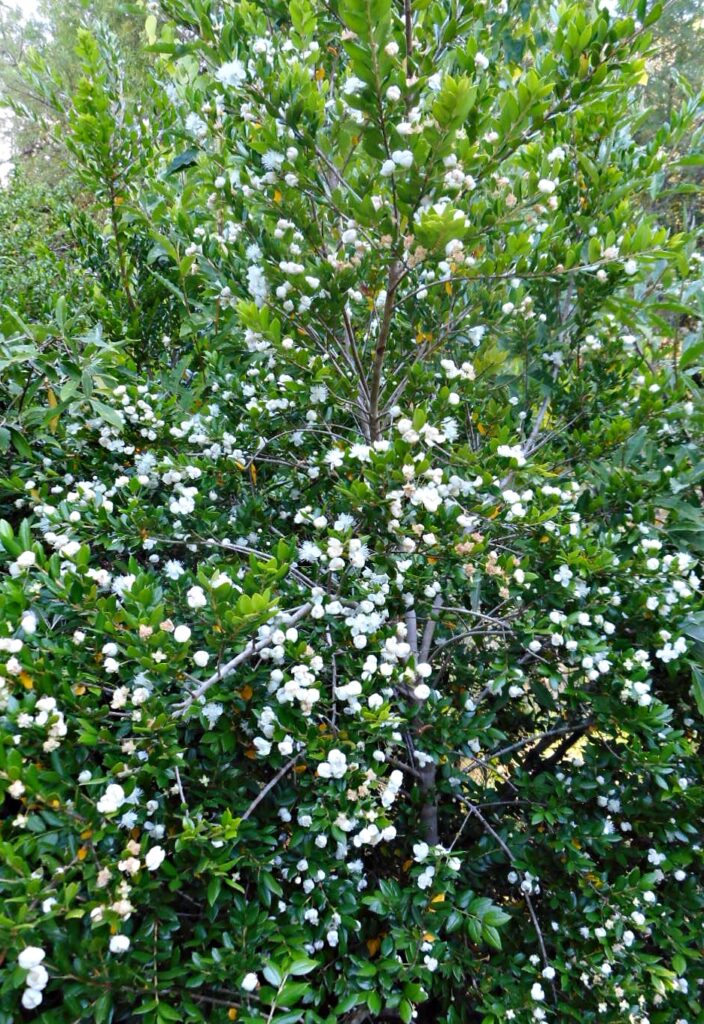
Macleania glabra BLM0532
Ericaceae. Arching stems with elliptic green to bluish leaves. Tubular red/magenta flowers, edible purple-black berries. Forms large woody caudiciform lignotubers up to 3’+ across! Rare semi-epiphyte from the cloudforests of Siberia, Costa Rica. A couple nice rooted specimens and some unrooted cuts available. Roots easily. Z9b
[ 3 ] → 2 ~ 10–12″+ plants $32.50 each SOLD
[ 4 ] → 2 ~ 6-8″+ unrooted cuttings $19.50 each
Macleania insignis X Macleania??
Open pollinated hybrid–seedlings already forming fat little caudexes. New growth deep red. We expect orange to red or pink tubular flowers and purple-black to white edible berries like mom. First offering. Z9b
[ 4 ] → 1 ~ 3-5″+ plant 2-3 years old $19.50 SOLD
Myrteola nummularifolia “Groundcover Guava”
Myrtaceae. Ground hugging evergreen subshrub to 6″ high and 2–3′ across. Red stems and small, dark green, rounded leaves, pleasantly scented if crushed (makes great tea!). Little white flowers and abundant, round to oblong berries, rose to pink blushed with a sweet, aromatic flavor similar to Ugni. Plants in cultivation can probably be traced to Hinkley’s introduction from southern Chiloe. A handsome edible groundcover. Z7b?
[ 5 ] → 1 ~ 4-6″+ plant 3+ years old $18.50 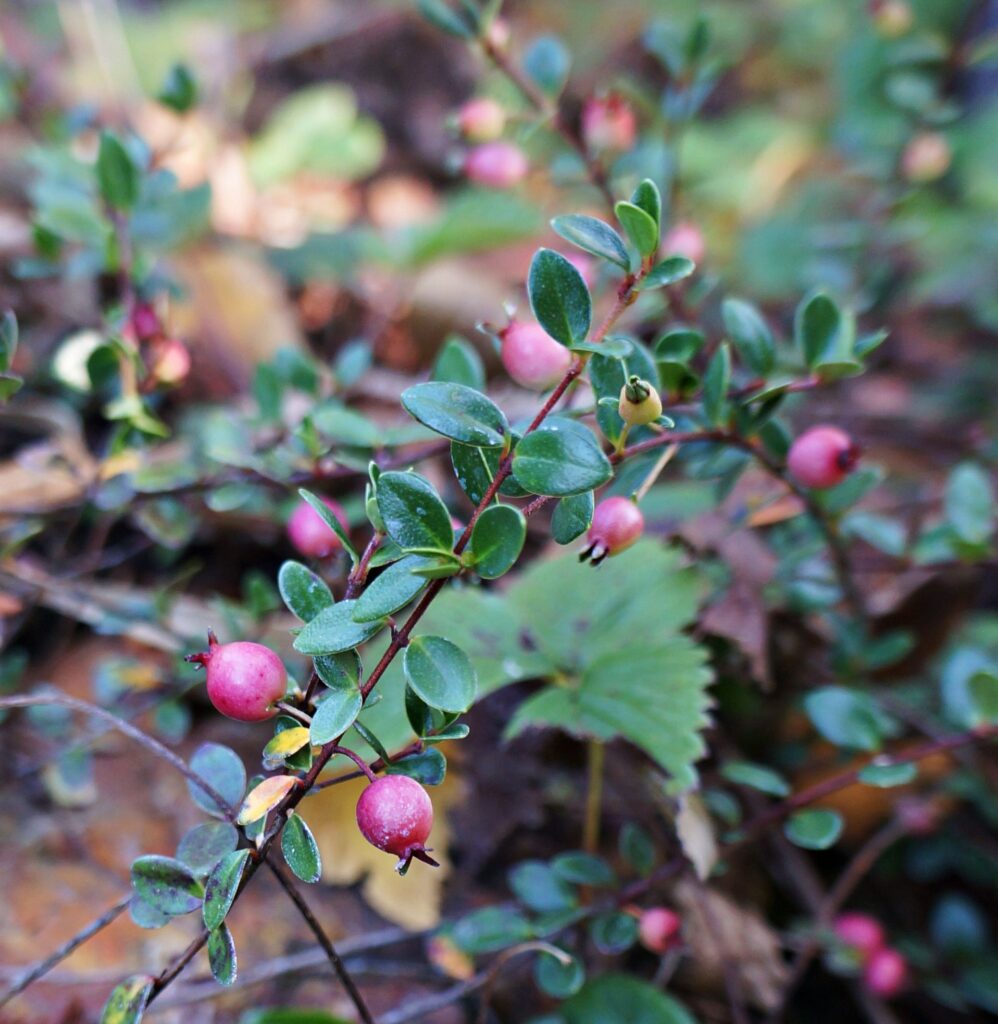
Nicotiana benavidesii BK14516.9 “Apurimac Tobacco”
Solanaceae. Bizarre perennial tobacco species to 5’+. Thick, upright to arching stems crowned with bright green heart shaped cordate leaves. Spires of pale yellow-green tubular flowers to 1.5″ long. Young plants can develop a distinct pachycaul stem. We collected the seed from Eriotheca dry forest on steep rocky slopes overlooking the Apurimac, near 7600′, Cusco Dept., Peru. Should tolerate hot, dry conditions well. No frost. Exceedingly rare, probably the easiest tobacco to grow alongside cacti & succulents. Z10a?
[ 4 ] → 1 ~ 7-8″ plant 2+ years old $16.50
[ 3 ] → 2 ~ 11-14″ plants 3 years old $22.50* each January Sale! $19 each or 2 for $32.50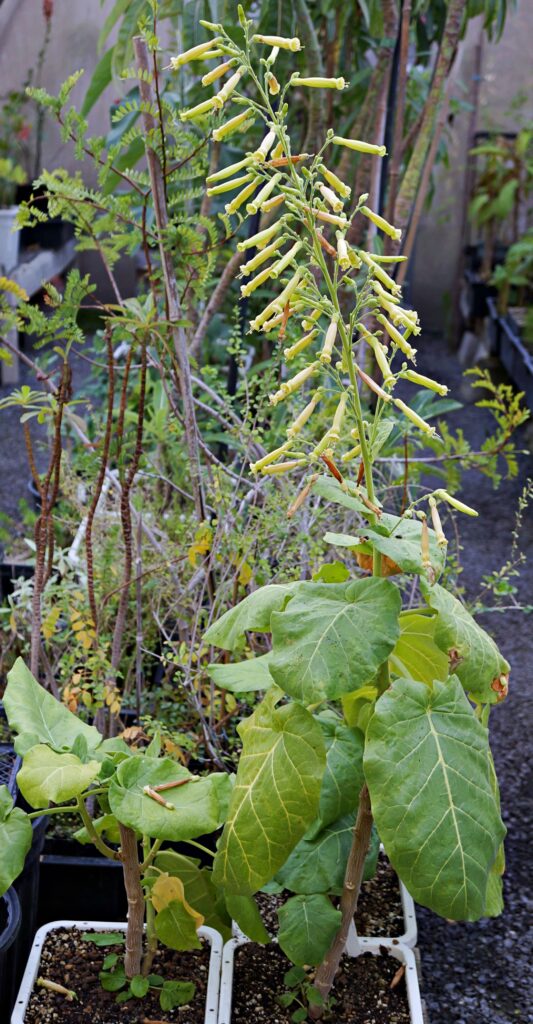
Nicotiana cordifolia “Juan Fernandez Tobacco”
Nearly extinct, unusual perennial tobacco species 3–6’+ tall. Thick, almost pachycaul stems topped with blue/gray/green leathery cordate leaves coated with whitish hairs. 1.5″ long dark purple-violet tubular flowers with some green-yellow streaks. A critically endangered endemic of Alejandro Selkirk Island, Juan Fernandez Archipelago, Chilé. Populations reported to be restricted to a few rocky cliffs. Beautiful and easy to grow, fairly dry-tolerant. Save the seed and pass it on. Z9b?
[ 6 ] → 2 ~ 5-7″ plants 1-2 years old $16.50 each or 2 for $27.50 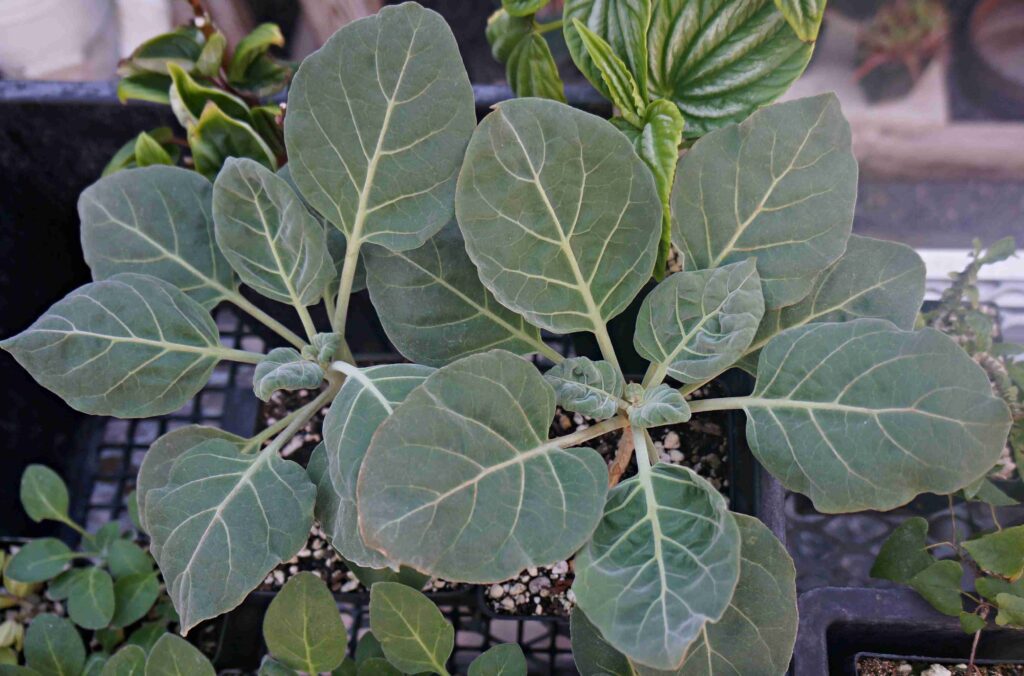
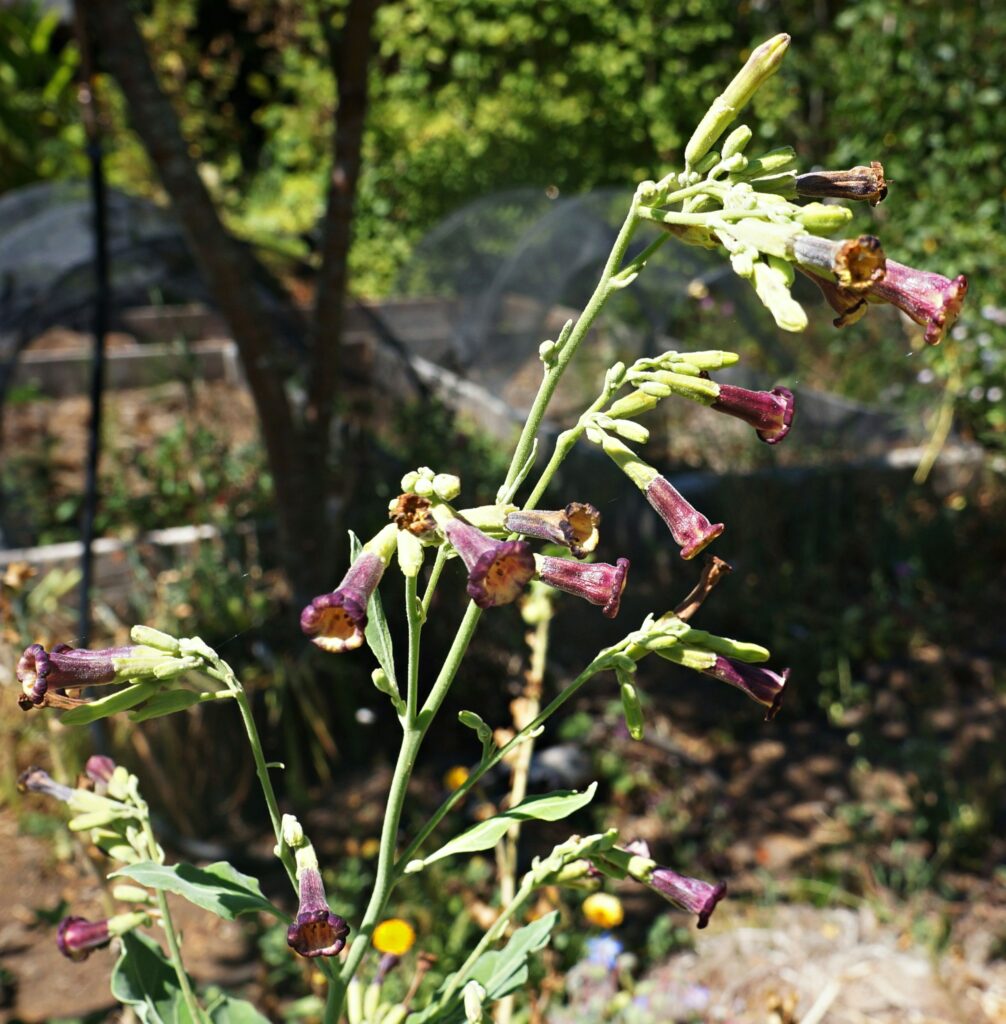
Passiflora umbilicata BK10511.13 “Locoste”
Passifloraceae. Large tendrilled vine with dark-green, tri-lobed leaves. Astonishing blue-purple and lavender flowers to nearly 6″ across, probably the most beautiful passion flower we’ve seen! 2–3″+ round to cylindrical fruit with edible seeds and pulp. Leaves used medicinally for gastrointestinal disorders. Growing on shrubs on remnant cloud forest just before Kewiña Casa, about 11,500′, Cochabamba, Bolivia. Has grown very well for us and seems perfectly hardy. Seed has slow, erratic germination in 1–6 months. Z8a?
[ 4 ] → 1 ~ Plant 2-3 years old $22.50 SOLD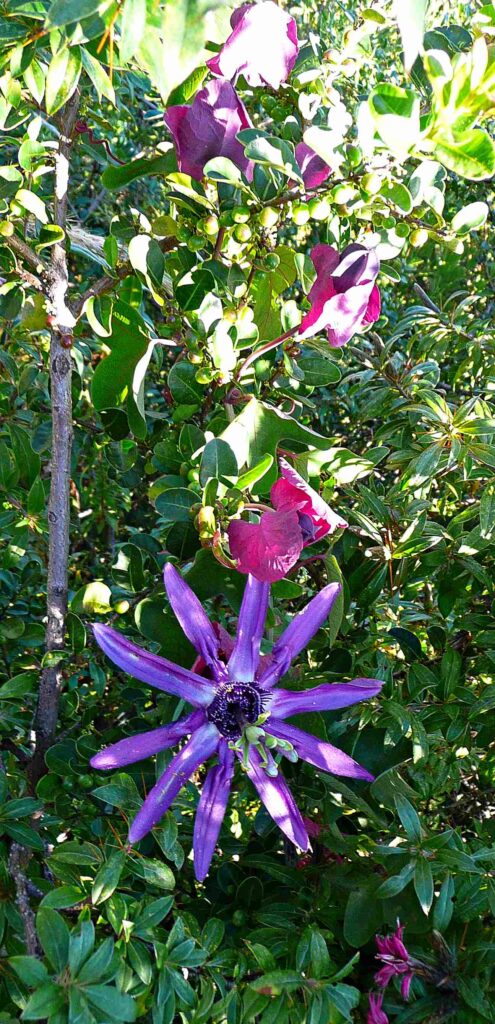
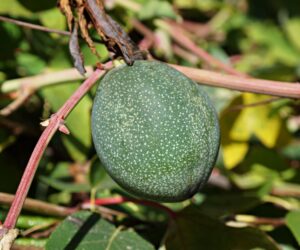
Pernettya sp. TB17 “Macha-macha”
Ericaceae. Very attractive low growing shrub to 12″+ high. Small glossy leaves densely arranged on the stems, deep red new growth. White bell flowers and pink to lavender to deep purple ‘edible’ berries. Tom Baldwin seed collection from the highlands of Papallacta, Ecuador. This blueberry kin has sweet edible berries that should be eaten in moderation since some Andean Pernettya are known to have bizarre effects on memory and perception if consumed in quantity. Acidic soil, sun to part shade. First introduction. Z8a?
[ 6 ] → 1 ~ 6″+ plant 4 years old $18.50 SOLD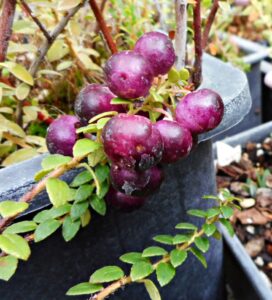
Polylepis australis “Kewina”
Rosaceae. Gorgeous small tree to 15’+ with peeling reddish-gold bark and often gnarled twisted trunks. Pinnate leaves with 5–7 blue-green leaflets. The southernmost species of this Andean genus, occurring all the way into the Cordoba mountains of central Argentina. A keystone species of the high Andean forests which are the most endangered forest ecosystem in the world. This particular species is threatened in habitat by a pathogenic fungus, climate change and lots of cows. These plants originally came from a botanical garden source and look a little different than our accession from Los Gigantes, Cordoba — possibly an intermediate with P. tomentella v. tomentella, whose populations overlap in northern Argentina. Polylepis are quite adaptable to low elevation cultivation and are truly beautiful trees of unrealized horticultural merit. The only offering of this species available this year. Z7/8?
1 ~ 24″ treelet 4 years old $54.50* 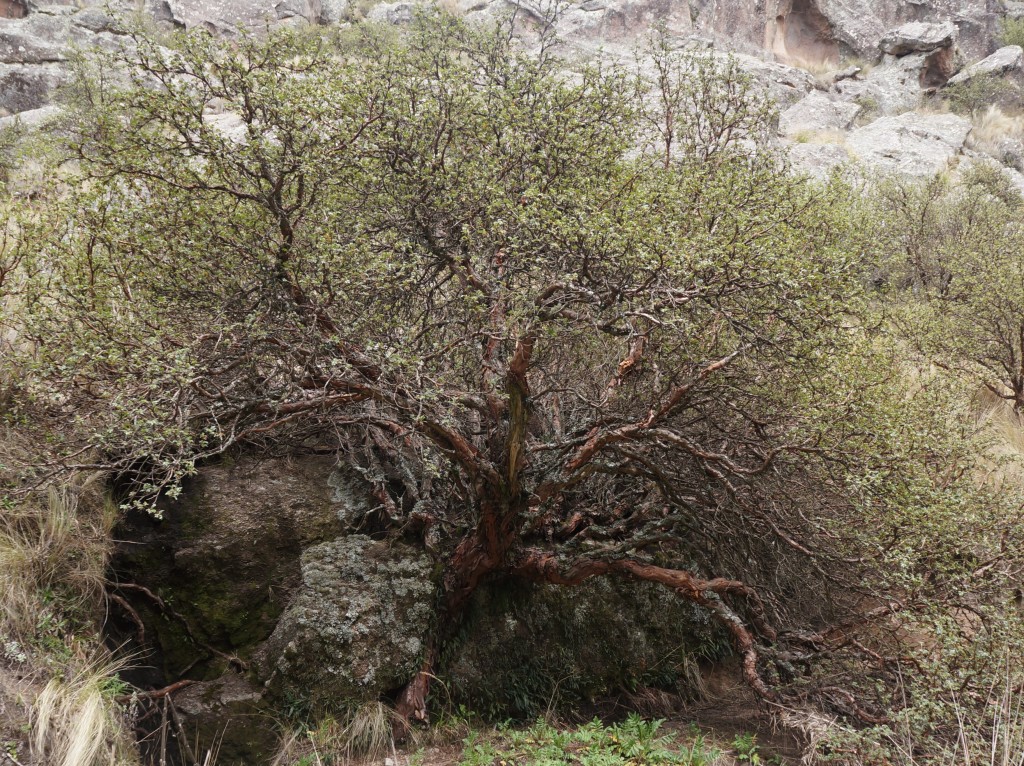
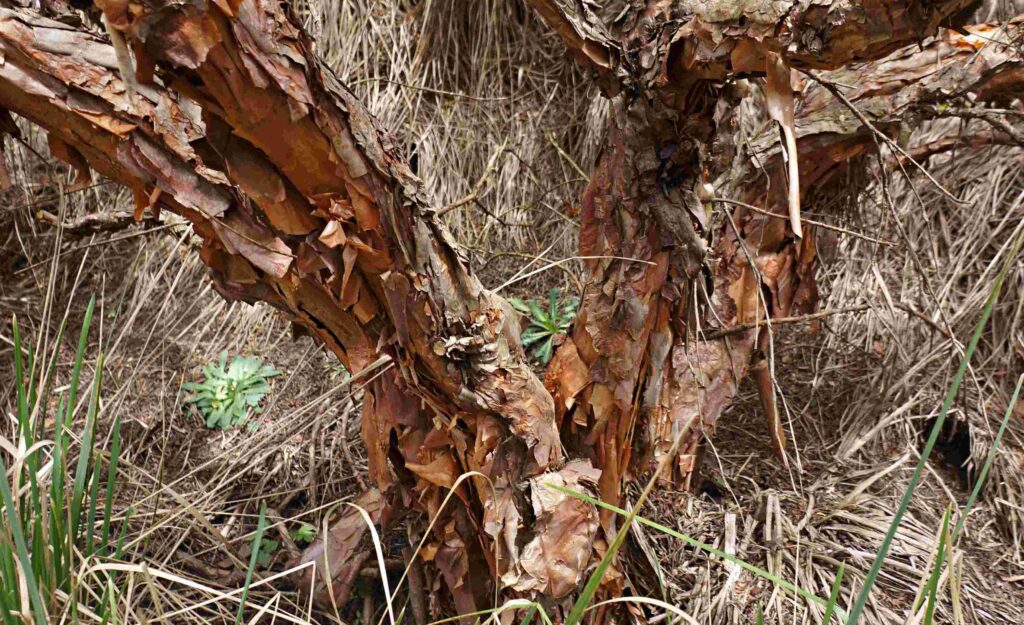
I’ve contributed a short article about Polylepis to the Microcosms project (A longer article is in the works) – https://www.microcosmssacredplants.org/plant/polylepis-spp/
Polylepis lanata BK10511.10 cl. A “Kewiña”
Small contorted trees to 15′. Pinkish-red to bronze peeling bark, small leaflets covered in a white-gray fuzz. An enchanting Cochabamba endemic. A small patch of forest 3 km from Kewina Casa, 11,500′, Bolivia. The presence of Polylepis trees can best be described as magical and this species is no exception. One of the most sacred trees of the Andes. Highly endangered, should be planted far and wide. An Andean genus of 26 species, Polylepis forests once covered over 20% of the Andes up to 17,000’+. These forests were slowly cleared over millennia, massacred over the last 500 years and are now reduced to almost nothing. Polylepis are amongst the most enchanting trees we have ever encountered, their contorted trunks and peeling bark, not to mention their rebellious nature; this is a tree that actually dares to grow above the treeline. Extremely hard wood excellent for construction and firewood, used medicinally for lung issues, bark chewed for oral health. Source of beige, pale pink and green dyes. Polylepis were sacred during Incan times and associated with the ancestors, forests were venerated and protected. Propagation and reforestation is essential for sustainable development in the Andes. A eubiotic species, Polylepis forests are known to harbor the highest biodiversity of any ecosystem in the high Andes. This species has done really well for us in northern California. Here is a rare opportunity to take home a lovely larger specimen — will grow quickly when potted up or planted out. Z7/8?
1 ~ 30″+ branched treelet $88** 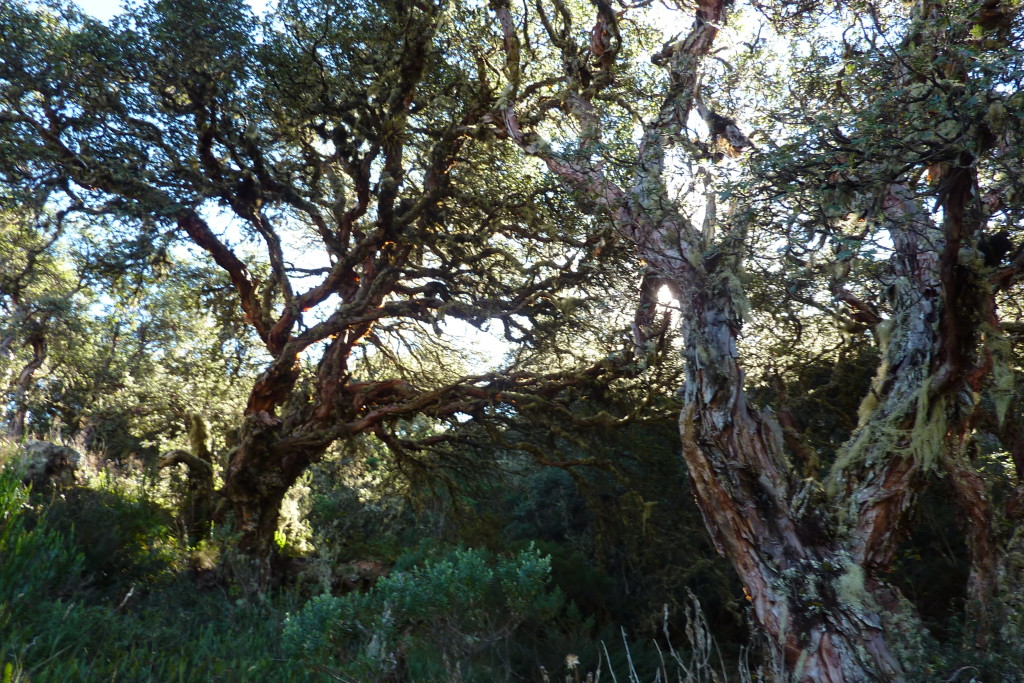
Prumnopitys andina “Lleuque” “Chilean Plum Yew”
Podocarpaceae. Slow growing, attractive evergreen yew-like tree, 40–60’+ tall. Forms 3/4″ dark purple fruits that are sweet, aromatic and tasty. Endemic to the temperate forests of the lower Andean slopes of south central Chile. Considered highly vulnerable due to habitat loss. The fruit has long been esteemed by the Mapuche and is made into chicha and marmalade. The wood is durable and used in construction. Prefers sun part shade and moisture, though our trees have adapted really well to the dry summers here. Slow growing. Unsexed rooted cuttings, each from a different clone. Z8a
[ 4 ] → 2 ~ 9-12″+ treelets $22.50 each or 2 for $36.50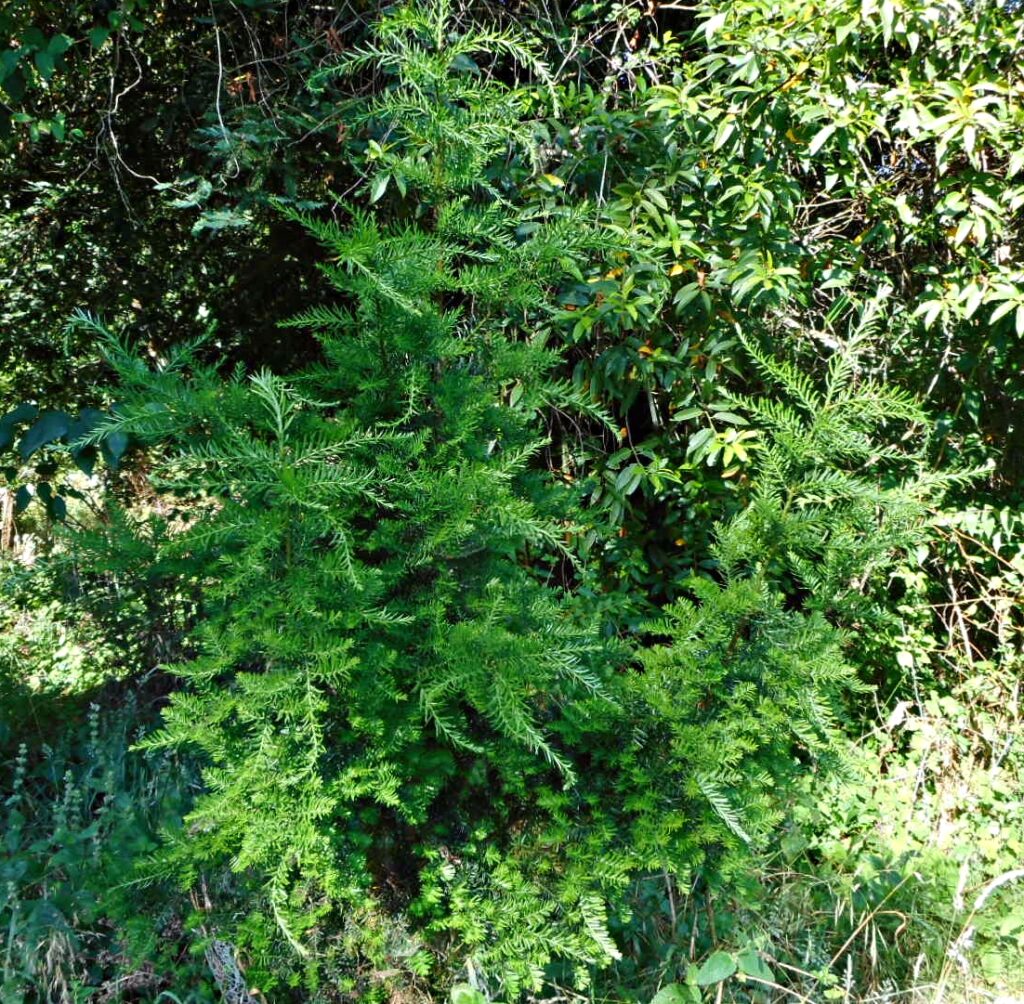
Psammisia ramiflora HBG90799
Ericaceae. Upright floriferous shrub with thick, shiny oblong leaves. New growth bronze to reddish. Axillary clusters of up to 15+ thick cylindrical red to red-orange flowers with white tips. Rounded edible berries, white to pink and eventually dark purple when fully ripe. Cloudforests of Costa Rica, Panama and possibly Columbia, 2000–6000’. Root cuttings in perlite or moss; keep humid and warm. Exceptionally rare in cultivation. Z9b
[ 5 ] → 1 ~ 4-6″ unrooted cutting $38.50 SOLD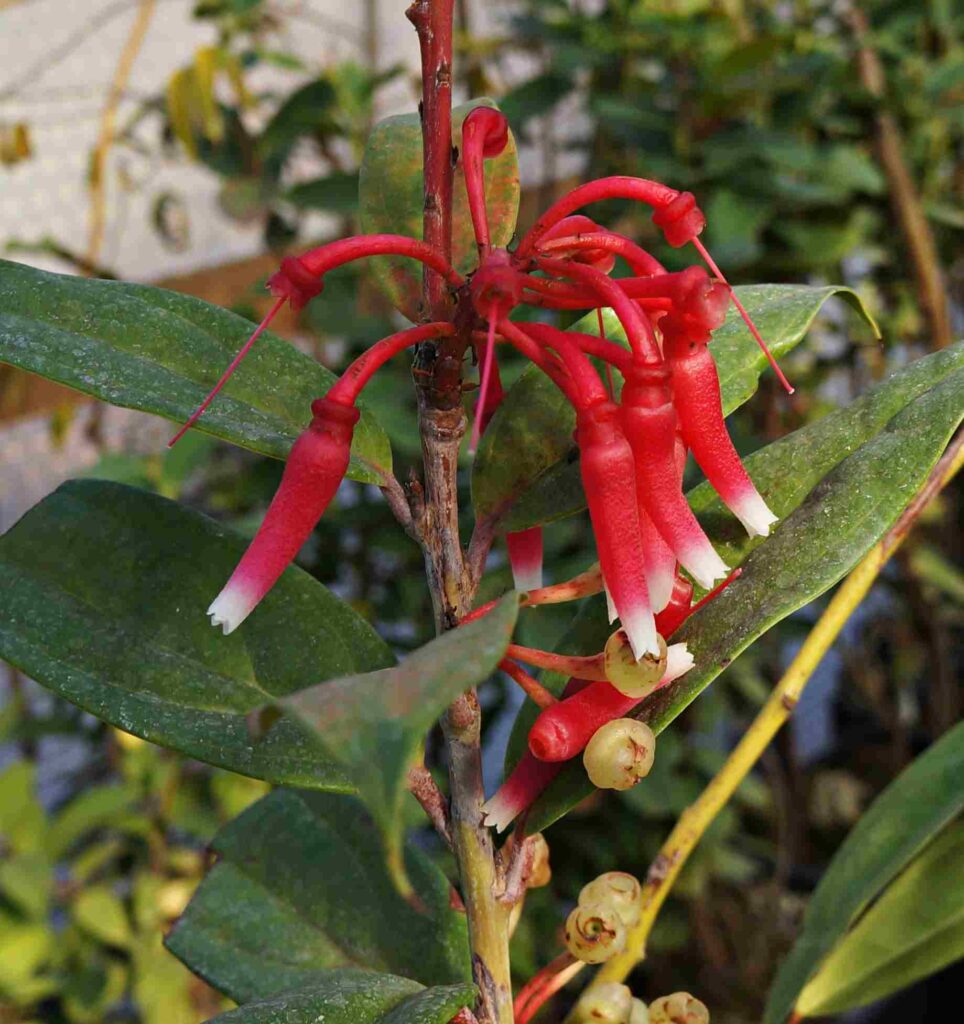
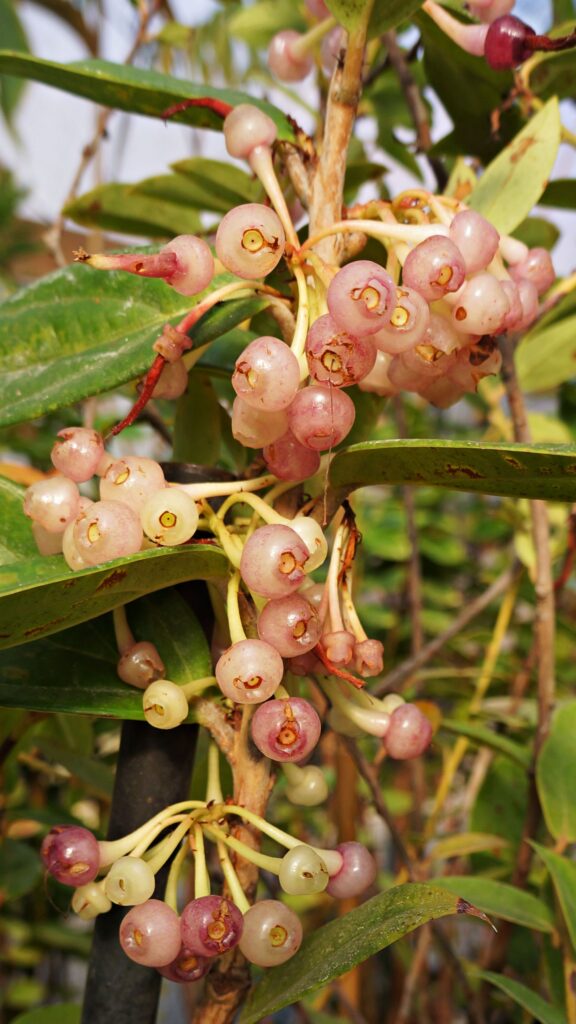
Satyria boliviana HBG90802
Ericaceae. Gorgeous semi-epiphytic shrub with pendent branches 2–6’ long. Lime-green, coriaceaus, lanceolate leaves, lightly pilose. New growth pink-bronze. Inflorescence covered in tiny soft white hairs, bearing dozens of flowers with globose urn-shaped corollas, red with white tips. The edible berries are high in antioxidants. This lovely rare and endangered Bolivian endemic is only known from a few collections, Yungas cloudforest, La Paz and Carrasco, Cochabamba, near 8000’. Grow like other neotropical blueberries. Roots easily from cuttings in perlite or moss — keep humid and warm. Very seldom offered. Z9a/b?
[ 5 ] → 1 ~ 4-6″ unrooted cutting $36.50 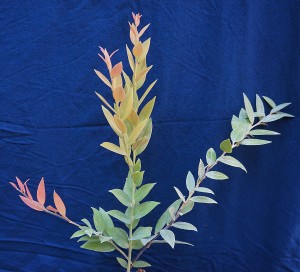
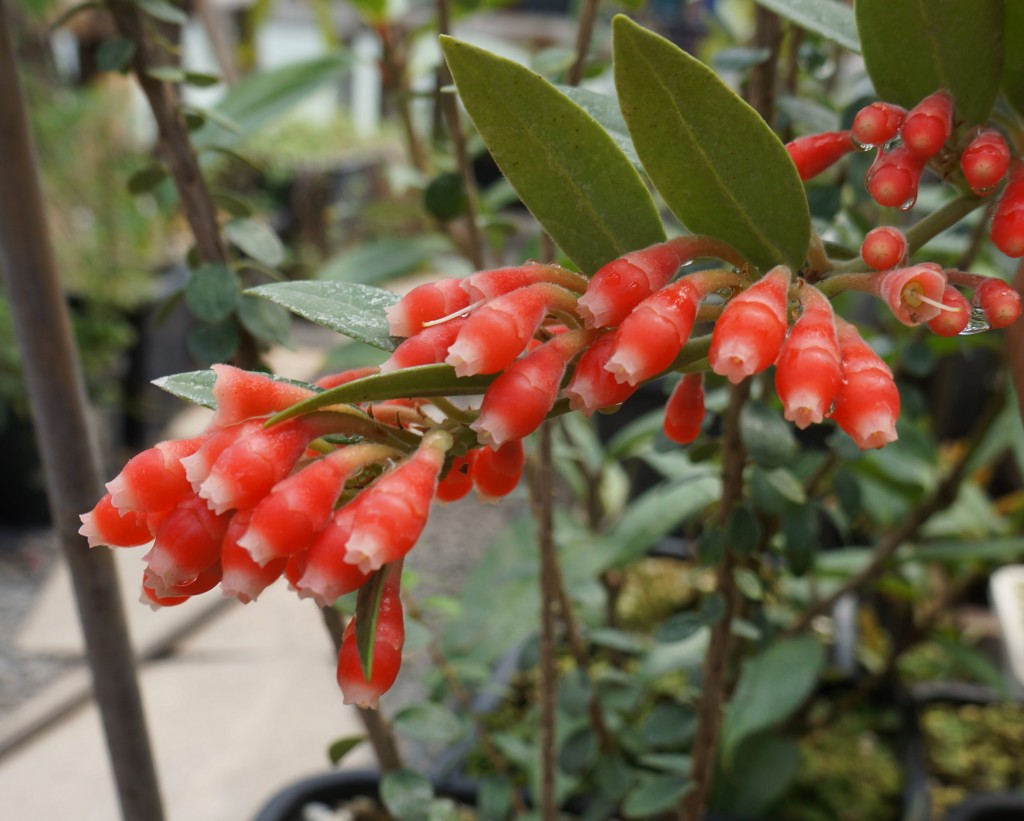
Senna sp. BK151018.12
Fabaceae. Handsome, upright to rounded shrub 3–5′. Green to blue-green pinnate leaves, clusters of bright yellow flowers. 2–3″ seed pods. Growing amongst dense stands of Polylepis australis trees, Los Gigantes, Cordoba, Argentina, 7000′. A key soil fertility increasing species of the nearly extinct high Andean forests. This hardy nitrogen fixing shrub will make a useful and lovely addition to any garden or landscape. First offering of plants. Z7?
[ 5 ] → 4 ~ 4-6″ plant 1-2 years old $12.50 each or 2 for $17.50 SOLD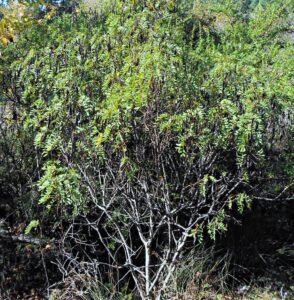
Stenomesson pearcei BK14513.19 “Chiwanway”
Amaryllidaceae. Large clumping bulb with wide fleshy leaves. 12″+ stalks with showy clusters of large, pale yellow flowers with inflated tubular corollas. Cloud forest near Sunchupata, northern Cusco Dept., Peru, 9700′. Sun to part shade and well draining soil, similar to succulent care. Give it a couple months dry to induce flowering. First introduction of bulbs from several seed grown clones. Z8?
[ 4 ] → 2 ~ Plants/bulbs $19.50 each or 2 for $32 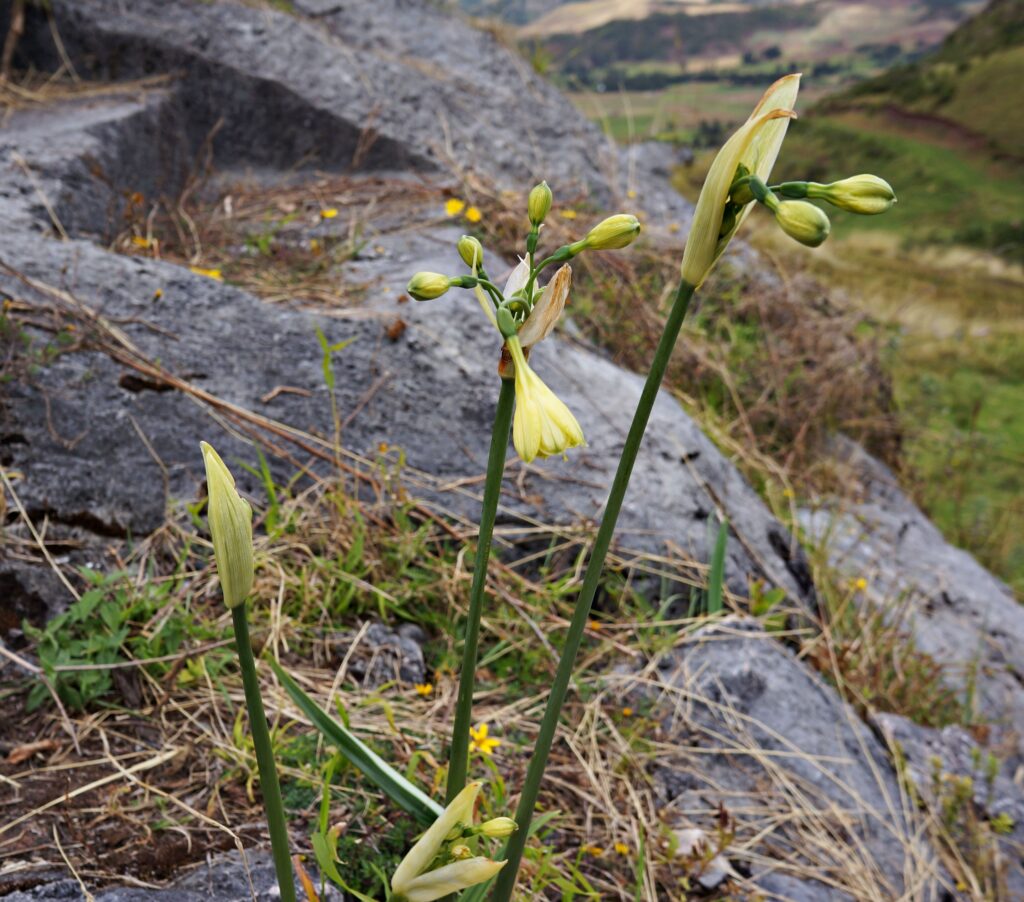
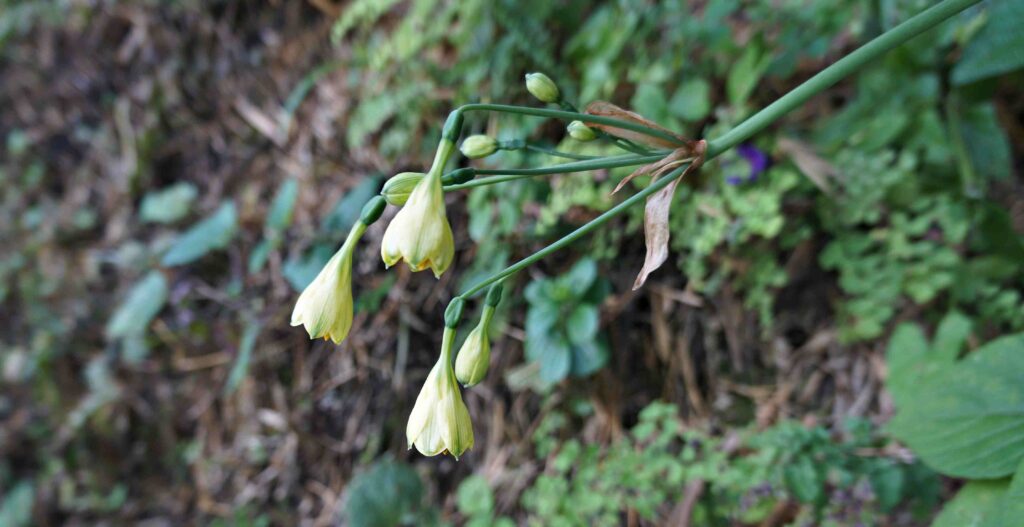
Thevetia peruviana
Apocynaceae. Evergreen tropical shrub with slender leaves and showy fragrant yellow flowers. The entire plant contains highly toxic cardiac glycosides. Sometimes utilized as a teacher plant in Amazonian ‘dietas’, not through ingestion but by simply being in the plants’ presence. The large seed are used in jewelry making. Seed oil has been used as an insecticide and fungicide. Our plants grown from seed from Amazonian Peru. Handle thoughtfully. Tolerant of high temperatures and some drought. Z10a?
[ 5 ] → 2 ~ 9-12″ plants 3 years old $16.50 each or 2 for $25.50
[ 4 ] → 2 ~ 24-28″+ plants 3 years old $22.50* each or 2 for $36.50
Tweedia caerulea (=Oxypetalu caeruleum) “Blue Milkweed”
Asclepiadaceae. Bush to small twining vine to 3-10′. Soft velvety ovate leaves. Axillary clusters of deep sky blue flowers with darker turquoise centers. 4″ seed pods. A great nectar and host plant for butterflies and their larvae, known to attract Monarchs. Native to southern Brazil, Uruguay, possibly Argentina. Tolerant of full sun and some drought but prefers regular water. Resprouts from roots after a hard frost. Z7b
[ 6 ] → 2 ~ 8-14″+ plants 3 years old $12.50 each or 2 for $19.50 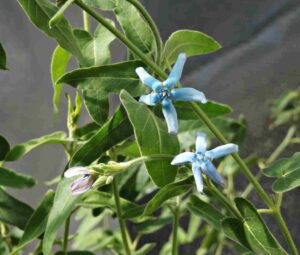
____
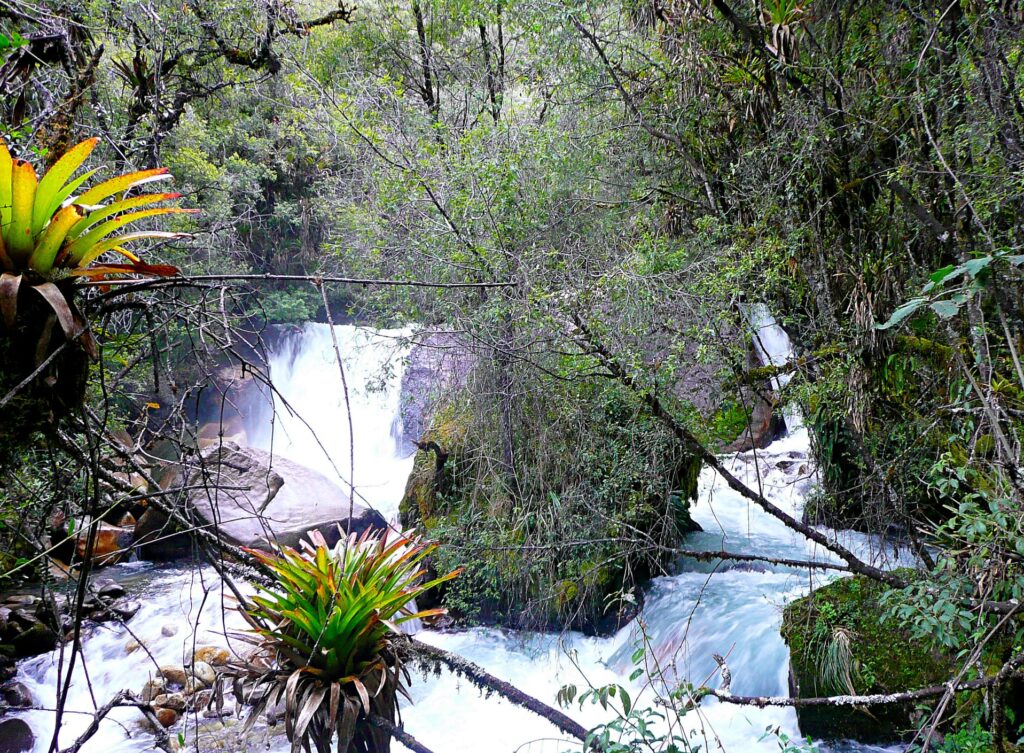 Polylepis weberbaueri forest, Lagunas de Llanganuco, Cordillera Blanca, Ancash, Peru
Polylepis weberbaueri forest, Lagunas de Llanganuco, Cordillera Blanca, Ancash, Peru
Andean Tuber Crops – Jewels of the Earth
In addition to potatoes, there is a shocking rainbow diversity of brightly colored tubers cultivated in the Andes where they have been a staple of rural communities for millennia. These so-called “lost crops of the Incas” have been largely ignored by the rest of the world. Such “jewels of the earth” deserve to be widely grown. An alarming loss of heirloom cultivars has been observed in recent decades as land is given over to modern crops, such as carrots, that are associated with affluent culture. Climate change is further exacerbating such loss. This makes preservation through integrating these enchanting and delicious tubers into our gardens all the more timely. Most are easily cultivated and can be prepared any way you cook potatoes — baked, steamed, boiled, fried, etc. Studies have shown all of these plants to be nutritious and high in antioxidants.
Please note: Over the last 20 years, we’ve been honored to introduce many dozens of varieties of Andean tubers into US cultivation, yet the last few years our Andean tuber plants have been badly effected by erratic and extreme weather (most acutely sudden summer heat spikes), and our stock further decimated when the local voles and wood-rats developed a taste for them. We completely lost about a quarter of our Ulluco varieties, more than half our Mashua (including all wild subspecies), and dozens of Oca varieties. Last winter we also lost nearly all of our mother ‘Achacana potato-cactus’ (Neowerdermannia vorwerkii), and all but a single small plant of ‘Arracacha’ (Arracacia xanthorrhiza)… We’ve been working to replenish our stock, but this has been slow as a number of varietals had been reduced to a solitary tuber. Barring further catastrophe, we should have more to offer late 2024. If you’ve previously gotten tubers from us you do not see listed below, and still have them growing — please let us know which varieties and we’d be happy to trade for any we may have entirely lost.
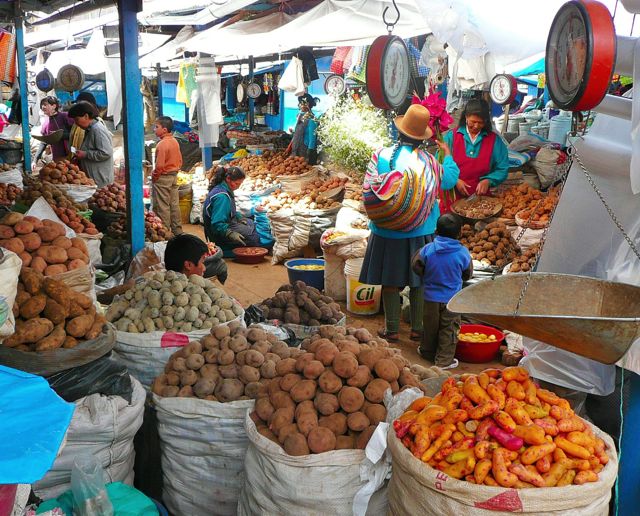 Tuber market, Cusco, Peru
Tuber market, Cusco, Peru
For tuber growing information, see the bottom of our Cultivation Page
** Note: Most of our tubers are currently only available annually during the winter months. **
Bomarea aff. ovata BK14513.17 “Sullu sullu”
Alstroemeriaceae or Liliaceae. Ornamental twining vine with annual stems to 8’+; perennial clusters of round edible tubers, 1-3″+ diameter. Green ovate leaves to 3″, lightly fuzzy undersides. Umbels of 5-12+ showy, funnel shaped flowers to 1″ long, outer tepals rose to pink with a green tip. Inner tepals 1/4″ longer than outer, base yellow, tip green with a few dark spots, inner side heavily flecked with black striations. red-pink midstripe. Ovary and pollen green. A little known and still mostly ignored ‘lost’ Incan crop, once cultivated for the tasty edible tubers and young asparagus-like shoots. Seed from plants growing in cloudforest near an Incan site, Sunchupata, Cusco Dept. Peru, 9700′. The Andes boasts 80+ species of these fantastic climbing lilies, in addition to edible tubers some species are used to treat venereal disease, infertility, kidney pain and hemorraging. Easily grown, well draining soil, sun to part shade with something to climb on. Drought tolerant. The vines/stems die back and go dormant during cold or dry spells. Z8 or below if well mulched. Currently winter dormant.
[ 5 ] → 1 ~ Plant/bulb 5+ years old $22.50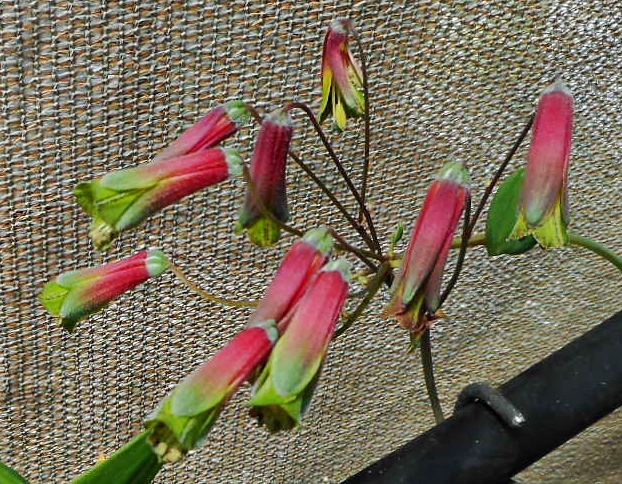
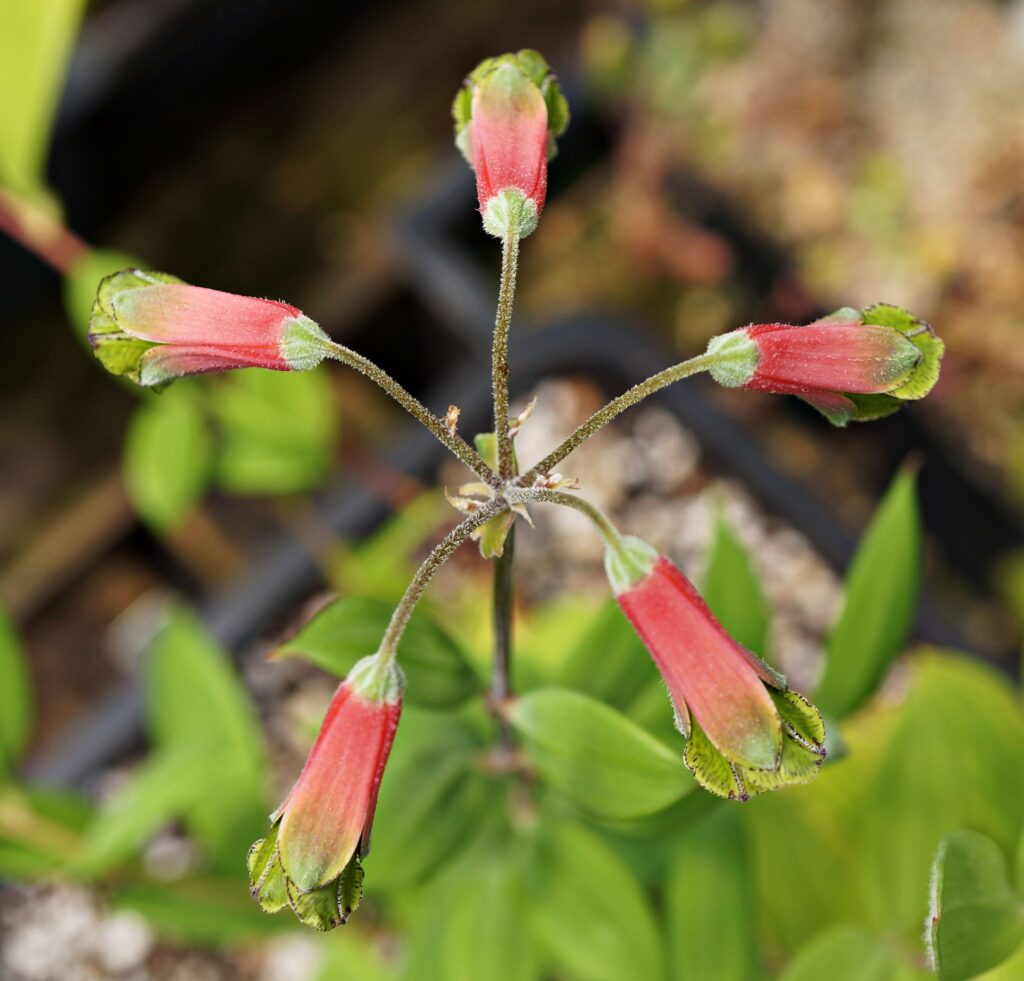
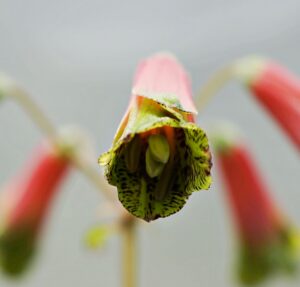
Canna edulis ‘Rojo’ “Achira”
Cannaceae. Ginger-like perennial monocot to 6’. Large attractive foliage, this strain has bronze and purple streaked leaves, dark reddish-brown seed pods and deep red lily-like flowers. Edible rhizomes. A cultivar throughout the mid-Andes. One of the “lost” crops of the Incas. The rhizomes are extremely rich in a large molecule starch and have been eaten since antiquity. Young shoots and immature seeds are also edible raw or cooked. Tolerant of diverse conditions, grows fastest in rich, moist soil. Often planted as a wind break. Z8b if mulched.
[ 2 ] → 1 ~ Rhizome $13.50 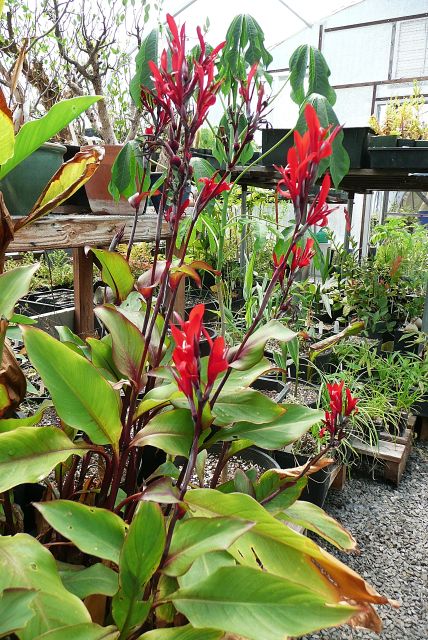
Mirabilis expansa ‘Seedling’ “Mauka” “Miso” “Tazo”
Nyctaginaceae. Herbaceous perennial to 2–3′, simple leaves. White to pink-red small flowers. Branched subterranean stems/tubers, thick, succulent and edible. Seed grown plants that vary from white/yellow to red skinned roots with white to reddish flowers and stems. This is the rarest, least understood of the Andean tubers, known to science since the 1960s. Only known from 3 disparate locations — north of La Paz, Bolivia, near Cajamarca, Peru and the highlands of Pichincha & Cotopaxi, Ecuador. This is most likely the result of the Incan policy of mitma; relocating entire ethnic groups throughout the Andes. Mauka’s tubers are protein rich and high in calcium, phosphorous and potassium. Much still needs to be discovered about the cultural needs of the plant but it has been surprisingly adaptable for us; tolerant of both wet and dry conditions, partial shade to full sun. Easily propagated by root division. Should be hardy to at least Z8 and likely Z7 if well mulched.
(You may request plants with white ‘Blanca’, or red ‘Roja’ roots.)
[ 5 ] → 1 ~ Plant/root division 3-4+ years old $29.50 SOLD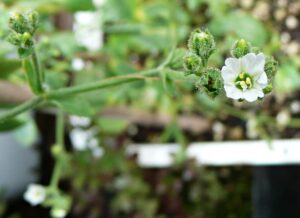
Oxalis tuberosa “Oca”
Oxalidaceae. Round to cylindrical tubers 1–6” long. With hundreds of known cultivars in an alluring spectrum of colors from yellows to oranges, pinks and reds. Sprawling succulent stems to about 1’ tall with trifoliate clover-like leaves, yellow flowers. One of the easier Andean tubers to grow and second only to the potato in popularity. Cultivated for thousands of years, the tubers have a variety of flavors from crisp and lemony fresh to buttery and sweet when cooked. Still unknown as a food outside of South America with the exception of Mexico where it has been grown for over 200 years and New Zealand where it has been farmed recently. Grow similar to potatoes, the larger tubers develop late in the season after the Autumnal Equinox with cool weather and shortened daylength. Traditionally the tubers are exposed to sun and cold for several days after harvest to increase sweetness. Light exposure also enriches the vivid colors. Oca also make captivating ornamental plants. Our daughters love to snack on the sour leaves and flowers. If well mulched the tubers are hardy below Z7a.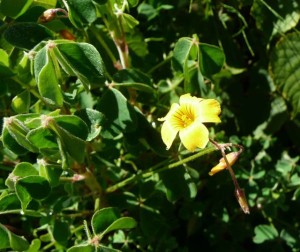
Each Oca tuber packets contain 2-4+ tubers
(Every 3 Oca ordered count as 1 plant for shipping costs.)
Oxalis tuberosa BK08516.8
Fat, round cylindrical tubers, yellowish with a pink blush, turn a deeper pink/maroon with light exposure. Fantastic non-acidic flavor. Our accession from Cusco region, Peru.
[ 3 ] → 1 ~ Tuber packet $15.50 SOLD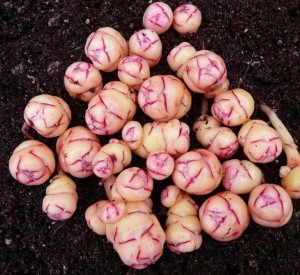
Oxalis tuberosa ‘Black’
Large cylindrical tubers, black eyes, dark red to nearly black skin, occasional pale yellow splotches, very prolific. A great selection from F.V. Keirsbilck. We nearly lost this gorgeous variety a couple years ago to rodents and weather extremes.
[ 3 ] → 1 ~ Tuber packet $15.50 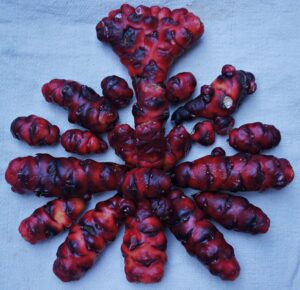
Oxalis tuberosa ‘Crema de Rosa’
Rounded to cylindrical knobby tubers, cream with a pink-red blush when exposed to light. Non-acidic and tasty. A La Paz, Bolivia collection from ethnobotanist Jim Bauml.
[ 2 ] → 1 ~ Tuber packet $15.50 SOLD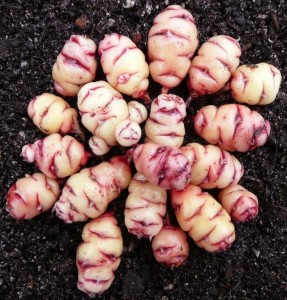
The following three Oca are $14.50 each or $38 for a set of all 3 varieties ⇓
Oxalis tuberosa ‘OE, Durazno’
Rounded, yellow/pale orange tubers, red eyes and pink/red-orange highlights, like a peach. From Oregon Exotics, the original name is lost.
[ 4 ] → 2 ~ Tuber packets $14.50 each 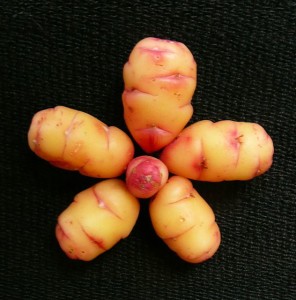
Oxalis tuberosa ‘Polar Bere’
Lumpy, rounded tubers, pure bone white to very pale yellow with light exposure. Mild sweet flavor.
[ 4 ] → 1 ~ Tuber packet $14.50 SOLD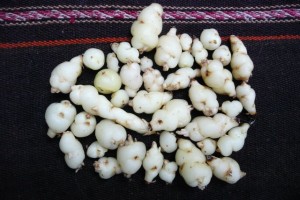
Oxalis tuberosa ‘Sunset’
Medium size orange to salmon-red cylindrical tubers, high yielding. A delightful acidic taste fresh, but cooks up mild.
[ 4 ] → 2 ~ Tuber packets $14.50 each 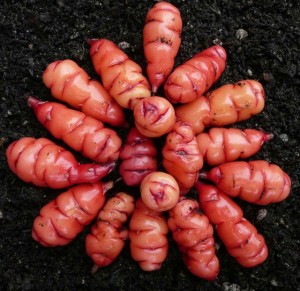
Pachyrhizus ahipa “Ajipa” “Villu” “Andean Jicama” *seed packet*
Fabaceae. Semi-erect stems 1–2’ high with pubescent trifoliate leaves. Violet to white flowers and 3–4” bean pods. Swollen edible root, elongated to spherical, weighing up to 1 kilo. Another ancient domesticate, unknown in the wild. Cultivated in the Yungas, Ceja de Selva and warm interAndean valleys of Bolivia , Peru and northern Argentina, between 5–10,000’. Our seed is from Tarija, southern Bolivia. This is the Andean jicama, with sweet crunchy flesh similar to the larger Mexican jicama (Pachyrhizus erosus) many people are familiar with. Hardier, faster growing and more adaptable than Mexican jicama, this is a species that should do well in many gardens. Pest free, nitrogen fixing and daylength neutral. The root is rich in quality starch, minerals and protein. The foliage, pods and seeds contain the pesticide rotenone, moderately toxic to humans. Some plants show low rotenone content in the oil rich seeds, it is conceivable that an edible seed strain could be developed free of the toxin. About 4-6 months to harvest from seed, pinching the flowers back is said to increase root size. Prefers well draining soil and warmth. Sprout like beans. Cultivation of the plant is nearly extinct in Peru and Argentina and has been waning in Bolivia, integrating it into our gardens is an essential strategy for the conservation of this valuable ancient root crop. Z9/10a? (Seed packets are okay to be shipped internationally.)
[ 6 ] → 2 ~ Packets of 5 seed $7.50 each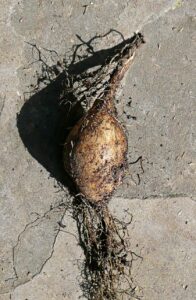
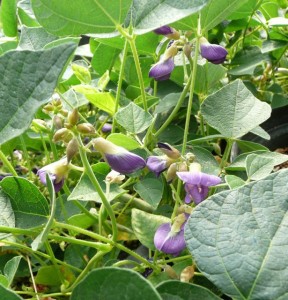
Smallanthus sonchifolius ‘Morado’ “Purple Yacon”
Asteraceae. This may be the variety originally introduced by Oregon Exotics as ‘Purple Puma’. As far as we can determine, this is also what has been distributed as ‘Red Yacon’. The 2-4′ annual stems and fuzzy leaves show some purple streaking. The orange-yellow mini-sunflowers are a little larger than other varieties. The knobby propagative tubers are a bright violet-purple to reddish-purple, the fat, yam- shaped, juicy storage tubers have a pink-purple to brown-purple skin and white flesh that sometimes infuses violet with light exposure. Surely rich in antioxidant anthocyanins. Yacon is a wonderful multi-use plant, traditionally grown throughout the Andes, it has also been introduced to Central America and is popular in New Zealand. The large storage tubers have a delicious juicy sweet taste, somewhat like a cross between jicama and watermelon. In the Andes it is thought of more as a fruit than a vegetable and, to increase their sweetness, the tubers are traditionally laid out to dry a little in the sun for a few days. Our kids love to crunch the tubers dug fresh from earth. The storage tubers are rich in fructooligosaccharides and are considered a prebiotic: that is, they feed the healthy bacteria in the gut–which improves overall health. The young vegetative growth is cooked similar to celery. The leaves are used as a blood-sugar balancing tea for diabetes. A molasses like syrup made from the roots is becoming popular as a beneficial sweetener. Easy to grow in most any garden, prefers sun and a rich soil. We supply propagative tubers for planting. Z7b or 8a if well mulched.
[ 5 ] → 1 ~ Tuber $18.50 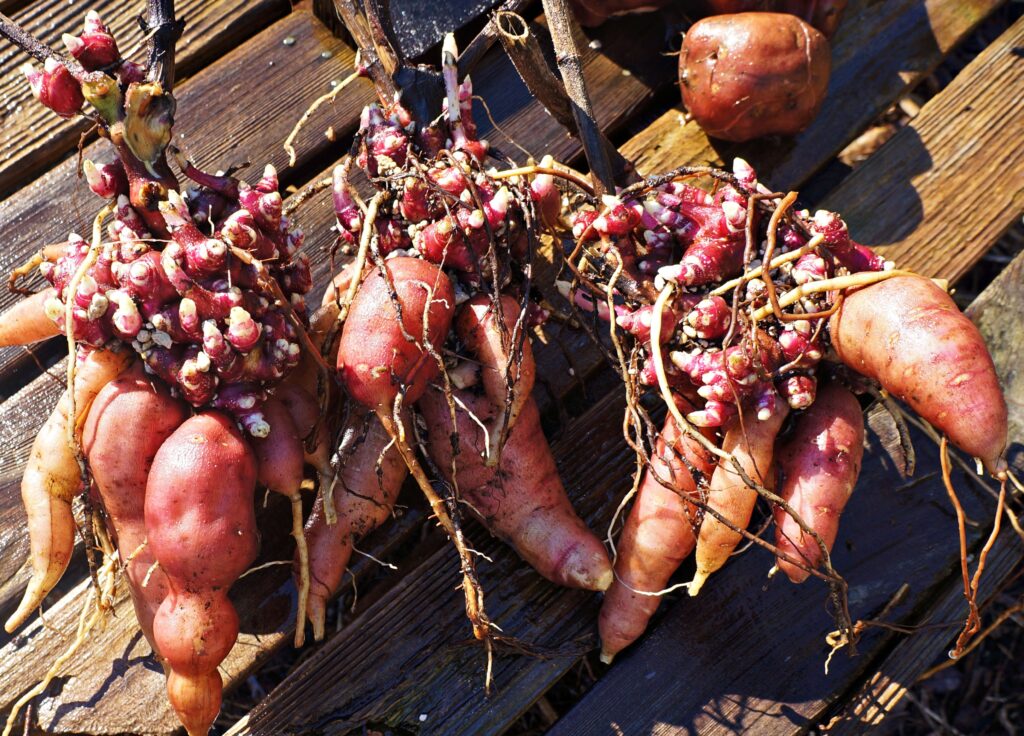
Solanum sp. ‘La Paz’ “Bolivian Potato”
Solanaceae. A ‘true’ potato. Leafy stems to 12”+. Purple flowers. Rounded to elongated grub-like tubers, magenta to dark purple skin, large cream colored eyes. White-yellow flesh. Collected by ethnobotanist Jim Bauml, La Paz, Bolivia. May be Solanum phureja or S. tuberosum ssp. andigena or one of the many ancient hybrids. Does not seem to have a real dormancy except when frost comes. Produces tubers throughout the year. Z6–7a?
[ 4 ] → 1 ~ Tuber $14.50 SOLD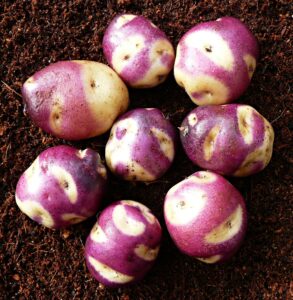
Tropaeolum tuberosum SS15.C “Mashua” “Añu”
A rare and extraordinary seed grown selection from our 2015 breeding efforts with several heirloom cultivars and our accessions of the wild silvestre subspecies. The most exciting of these new seed grown Mashua. Long tubers to 8”+, pale pink to magenta and darker shades of purple. With light exposure, the colors even deepen to purple-black. Very prolific. The most beautiful Mashua tubers we’ve seen! Tubular orange flowers; the annual climbing stems to 8’ and rounded lobed leaves also take on lovely purple hues. Mashua is a high yielding root crop throughout the Andes; close relative to the garden nasturtium. A fantastic addition to any garden, easy to grow, highly ornamental, pest resistant and repellent. The tubers are cooked like potatoes and can have a slight peppery flavor. Shown to reduce testosterone with regular consumption. The leaves and flowers are edible too. We first introduced this unique new varietal about 5 years ago and since then have only offered it a couple times. Z7a when well mulched.
[ 5 ] → 1 ~ Tuber packet $24.50 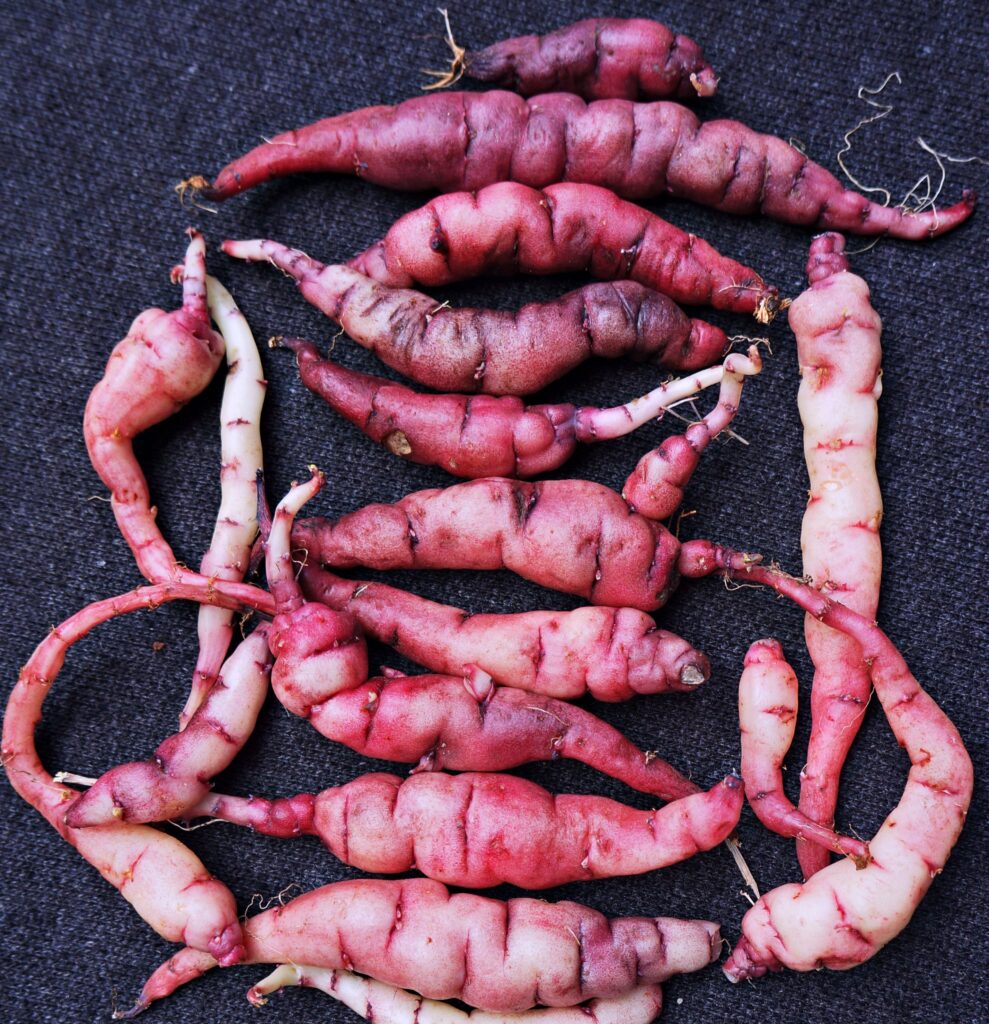
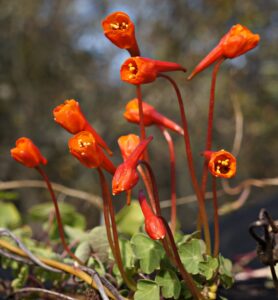
Ullucus tuberosus “Papa Lisa” “Ulluco” “Melloco”
Basellaceae. Hundreds of cultivars with 1–4”+ round to cylindrical tubers, a delightful array of bright colors. Edible spinach-like rounded leaves on short sprawling stems to 12”. One of the most delectable of all the Andean tuber crops, yet practically unknown in the U.S. Crisp and buttery in flavor. Shown to have antiviral properties. Contains triterpenoid saponins which may help with hypoglycemia. Like Oca, the tubers only develop late in the season. Tuber production is best in areas with a slow transition from Summer to Autumn. A little fussy, but have been adaptable to northern California. Hardy below Z7a when well mulched. 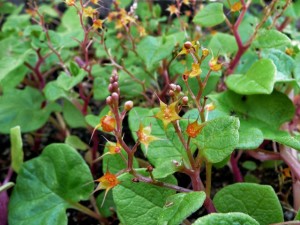
The following Ulluco are $16.50 each or $99 for a set of all 7 varieties
Each tuber packets contain 2-5 small tubers
(Every 3 Ulluco ordered count as 1 plant for shipping costs.)
Ullucus tuberosus BK08607.1
1–2”+ round “pica de pulga” type; yellow to orange with fluorescent red to pink spots and stars. The name means “flea bitten”. From a market in Chulumani, Yungas, Bolivia.
[ 4 ] → 1 ~ Tuber packet $16.50 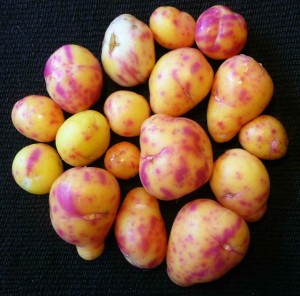
Ullucus tuberosus BK10425.2
1–4”+ grub-like cylindrical yellow tubers with fluorescent pink splotches. Cultivated near Patacancha, Cusco Dept., Peru.
[ 4 ] → 1 ~ Tuber packet $16.50 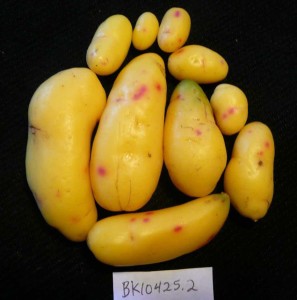
Ullucus tuberosus BK10429.1
1-3″+ pale to bright yellow round to cylindrical tubers with slender pale pink eyes. From Grimalda Quispe, Chinchero, Cusco Dept., Peru.
[ 4 ] → 1 ~ Tuber packet $16.50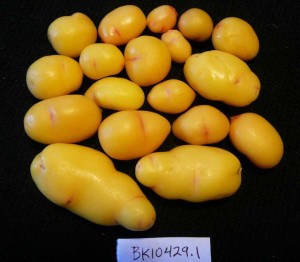
Ullucus tuberosus BK10429.2
1–2”+ Pale to darker yellow lumpy oblong tubers, occasionally with a purplish blotch. From our friend Grimalda Quispe in Chinchero, Cusco Dept., Peru. In addition to eating she says the sliced tubers are used on bug bites, burns and swellings; including swollen lymph.
[ 4 ] → 1 ~ Tuber packet $16.50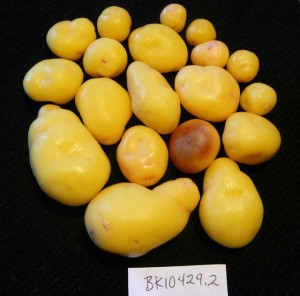
Ullucus tuberosus BK151014.10
Bright lime-green round tubers to 1-3″. Our accession from a market in Jujuy, northern Argentina; we were told they are farmed near the Bolivian border.
[ 4 ] → 1 ~ Tuber packet $16.50 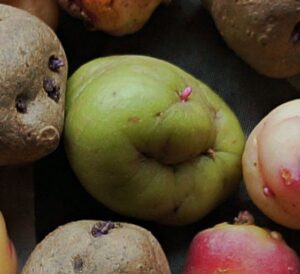
Ullucus tuberosus ‘Chugua Roja’
Rounded rose-pink tubers to 1-2″+. A prolific grower from Boyaca, Columbia. Seems a bit more adaptable to warm conditions than some varietals.
[ 6 ] → 2 ~ Tuber packets $16.50 each 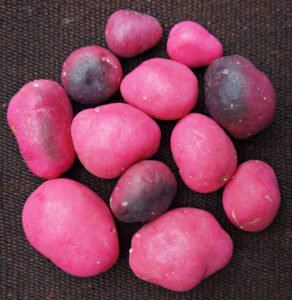
Ullucus tuberosus ‘Illimani’
Chunky tubers, bright yellow with occasional pink speckles, 1-3″+. Cultivated on the high altitude slopes of Apu Illimani, La Paz, Bolivia.
[ 4 ] → 1 ~ Tuber packet $16.50 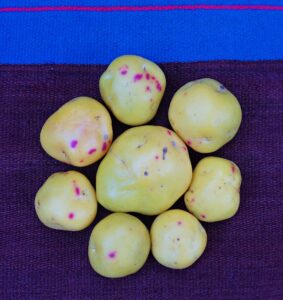
Ullucus tuberosus ssp. aborigineus “Ulluco Silvestre” “Wild Ulluco”
Trailing vine to 2–10’+ with heart-like edible leaves. 1/2–2”+ round or oblong tubers, varying from white to pink or lavender, turning almost purple-brown with light exposure. This is considered the wild form or ancestor of the cultivated Ulluco. In our experience the tubers are just as edible as the cultivars and only slightly smaller. The leaves are delicious like spinach. Cultivated Ulluco very rarely sets seed and this wild subspecies, which seeds more readily, could be used in breeding programs. It has been speculated that it was used in breeding new varietals by the Incas. Grow as you would other Ulluco, but give more room for the vine. A good source for edible greens, the leaves are larger and more abundant than the cultivars. In our initial trials one pea sized tuber produced nearly 4 oz of tubers in a season. Our original introductions, otherwise unknown in cultivation. Z6 to 7 if mulched.
Also see – https://www.microcosmssacredplants.org/plant/ullucus-tuberosus-aborigineus/
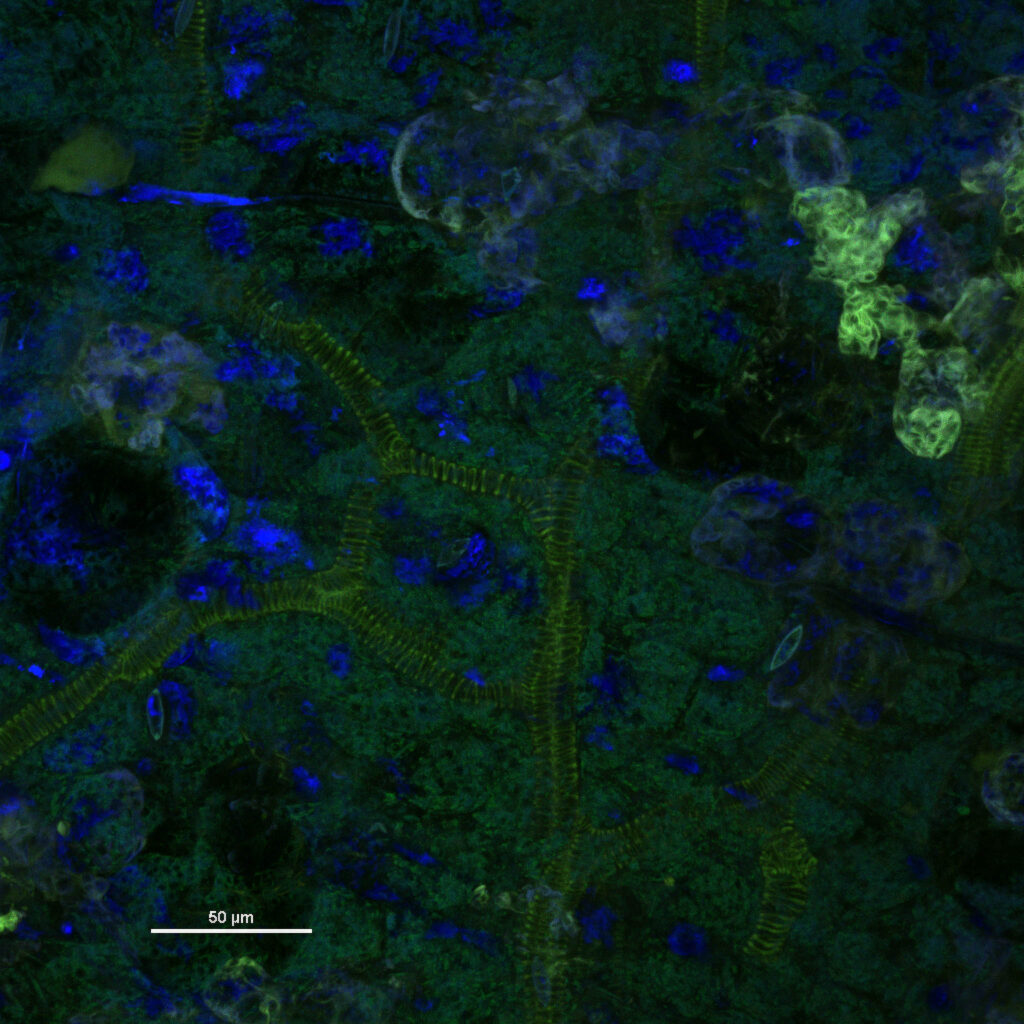 Ullucus tuberosus spp. aborigineus scanned at St. Lawrence University’s Microscopy & Imagery Center, from Microcosms: A Homage to Sacred Plants of the Americas, used with the permission of Jill Pflugheber & Steven F. White, © 2023.
Ullucus tuberosus spp. aborigineus scanned at St. Lawrence University’s Microscopy & Imagery Center, from Microcosms: A Homage to Sacred Plants of the Americas, used with the permission of Jill Pflugheber & Steven F. White, © 2023.
The following Wild Ulluco are $15.50 each
Each tuber packets contain 3-6+ small tubers
(Every 3 Ulluco ordered count as 1 plant for shipping costs.)
Ullucus tuberosus spp. aborigineus BK10426.5
Trailing vine to 24”+. Chunky lavender tubers to 2”+. Growing in Incan stone terrace walls with Peperomia rotundata. Halfway from Pumamarca to Munaypata, Cusco, Peru, 10,500’. This accession was made at one of the most heavily terraced mountainsides we’ve seen in all of the Andes — with over a thousand stone terraces it must have been a site of intensive agriculture.
[ 4 ] → 1 ~ Tuber packet $15.50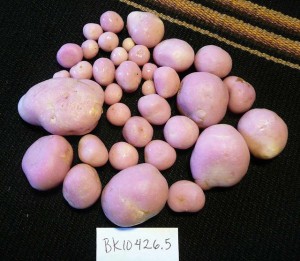
Ullucus tuberosus spp. aborigineus BK10426.6
Sprawling vine to 36”+. Odd shaped lavender-pink tubers to 2.5”. Growing amongst dilapidated Incan walls above Munaypata, Cusco Dept., Peru, 10,400’.
[ 4 ] → 2 ~ Tuber packets $15.50 each 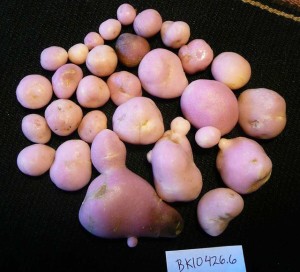
Ullucus tuberosus spp. aborigineus BK10427.5
Vine to 24”+, small pale pink tubers. Growing amongst boulders with Bomarea and Fuchsia apetala, above Patacancha village, Cusco Dept., Peru, 13,000’. Should be extra hardy.
[ 4 ] → 1 ~ Tuber packet $15.50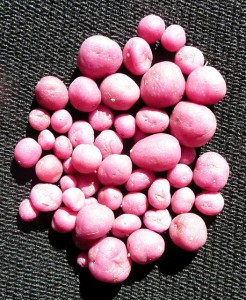
Ullucus tuberosus spp. aborigineus BK10509.6
Long dangling vines to 20 feet or more, hanging on rocky cliffs next to a waterfall, Inkallajta, Cochabamba, Bolivia, 10,000’. Pale to dark lavender tubers, round to oblong. These were the longest vines we’ve seen from the wild ulluco. Reported to be utilized in the region for gastrointestinal problems. This varietal may be more adaptable to warmer conditions than the others.
[ 4 ] → 1 ~ Tuber packet $15.50 SOLD
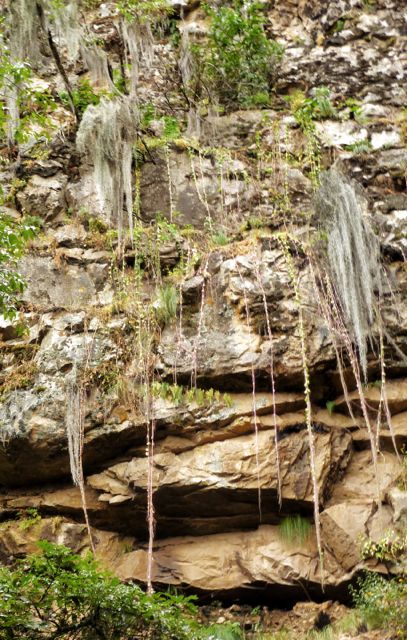 Hanging wild ulluco vines, Inkallajta, Cochabamba, Bolivia
Hanging wild ulluco vines, Inkallajta, Cochabamba, Bolivia
Edibles, Medicinals, etc.
Abies pindrow CC6800 “Himalayan Fir”
Pinaceae. Tall, slender, pyramidal evergreen to 200′ in some specimens. Long, spirally arranged, dark green needles. New shoots chartreuse to yellowish. Cylindrical purple cones. Chadwell seed collection, forests of Himachel Pradesh, 8000′. Soft light wood used for building. Prefers high humidity/rainfall. If grown in a container it makes the perfect Solstice tree. We have treelets that have been kept small in tiny pots for years that are very eager for transplanting! Z8a
[ 9 ] → 6 ~ 6–10″+ treelets 9+ years old $14.50 each or 3 for $33 or 6 for $55
Acer campbelli CC6648 “Phirphire” “Nepalese Maple”
Aceraceae. An elegant maple tree to 15–40′. Green bark, 5–7 lobed deep-green leaves, new foliage is a bronzy red, which autumn turns yellow to bright red. White pink flowers. Chadwell seed collection from Nepal. Traditionally coppiced for fodder. Lovely landscape tree, sun to part shade. These have remained bonsaid in small pots but will grow to full size when planted out. Z7a
[ 4 ] → 2 ~ 8–12″+ treelets 6+ years old $14.50 each or 2 for $25.50
Agapetes manii “India Huckleberry”
Ericaceae. Shrub to 2’+ with small densely arranged leaves. Forms caudiciform lignotubers wherever the stems touch the ground. White tubular flowers and pale purple berries with a sweet gelatinous flesh. A semi-epiphytic species from the mid elevation cloud forests of western China and northeastern India. Reported to have liver protective properties. Prefers part shade, well draining acidic soil. Exceedingly rare in cultivation. Cuttings root easily. Z8b?
[ 3 ] → 1 ~ 4-6″ unrooted cutting $22.50 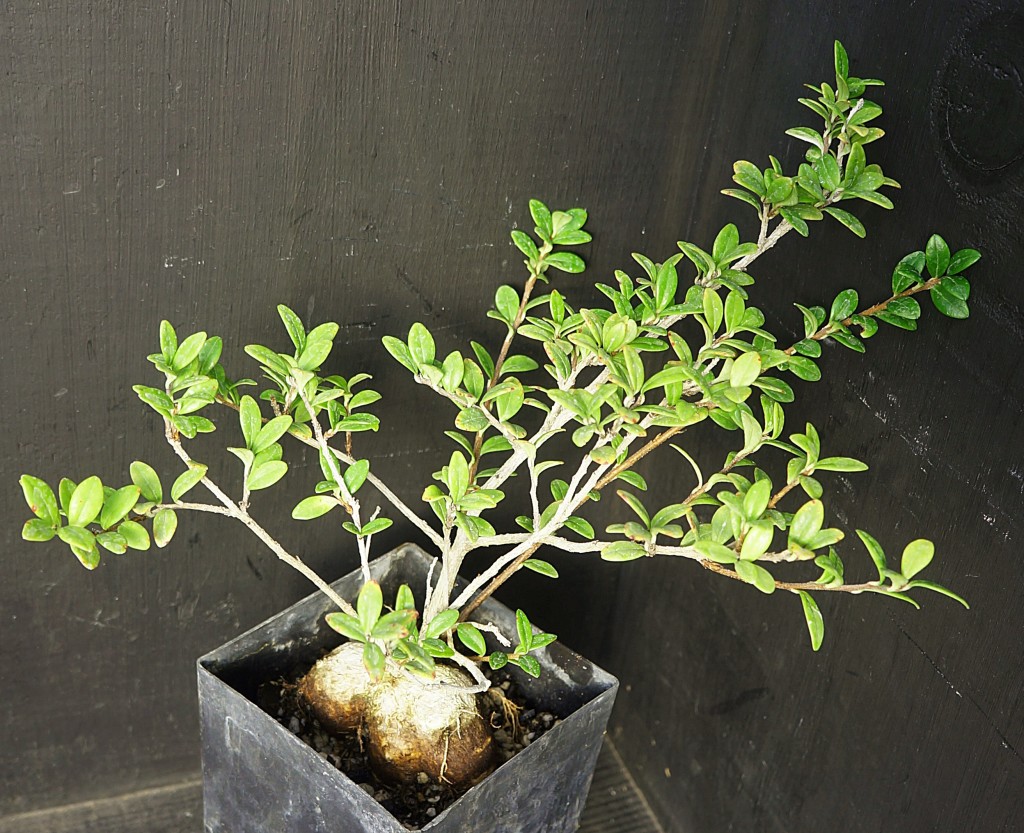
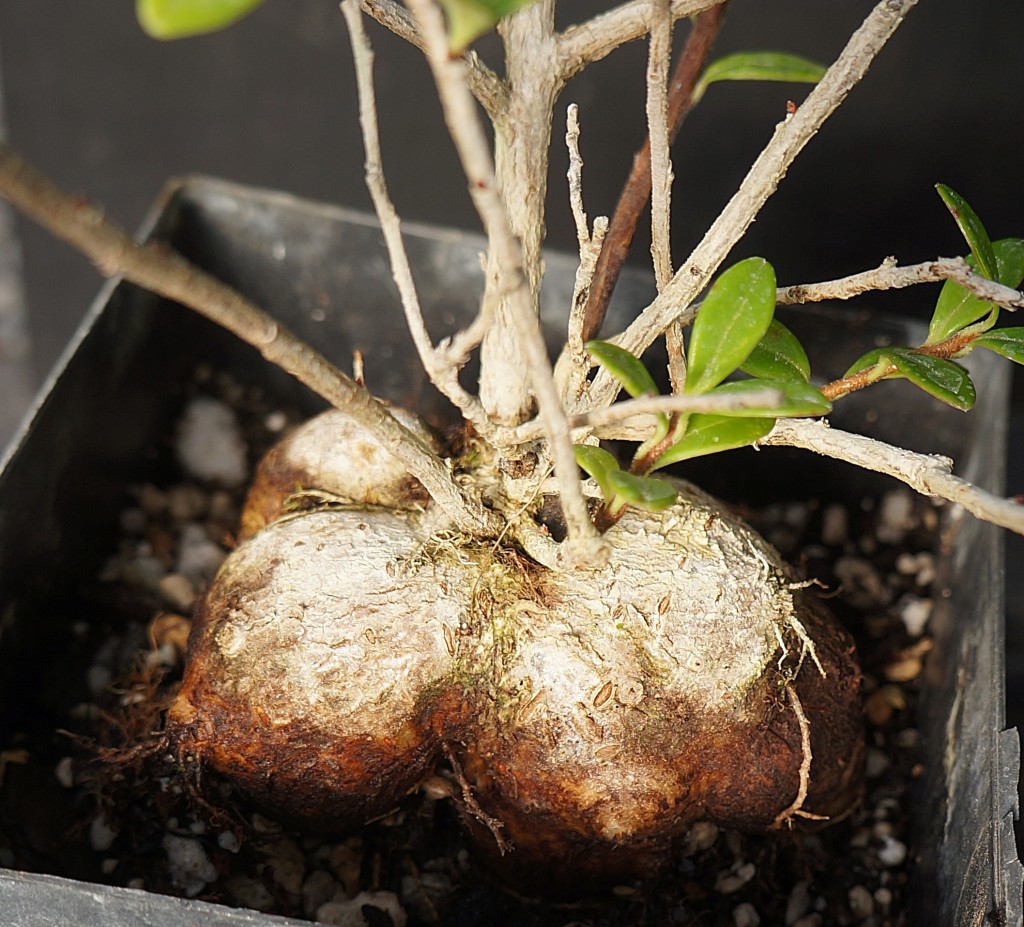
Example of a mother plant and caudex
Agapetes meiniana (=Paphia meiniana) “Misty Bells”
Semi-epiphytic shrub 3–6’+. Thick, glossy lanceolate leaves. New growth has an attractive pinkish tinge. Relatively large, red tubular flowers and edible purple berries. Rare blueberry kin native to the high altitudes of North Queensland, Australia. Grow like other Agapetes. A seldom offered beauty. Z9a/b
[ 3 ] → 1 ~ 4-6″ unrooted cutting $24.50 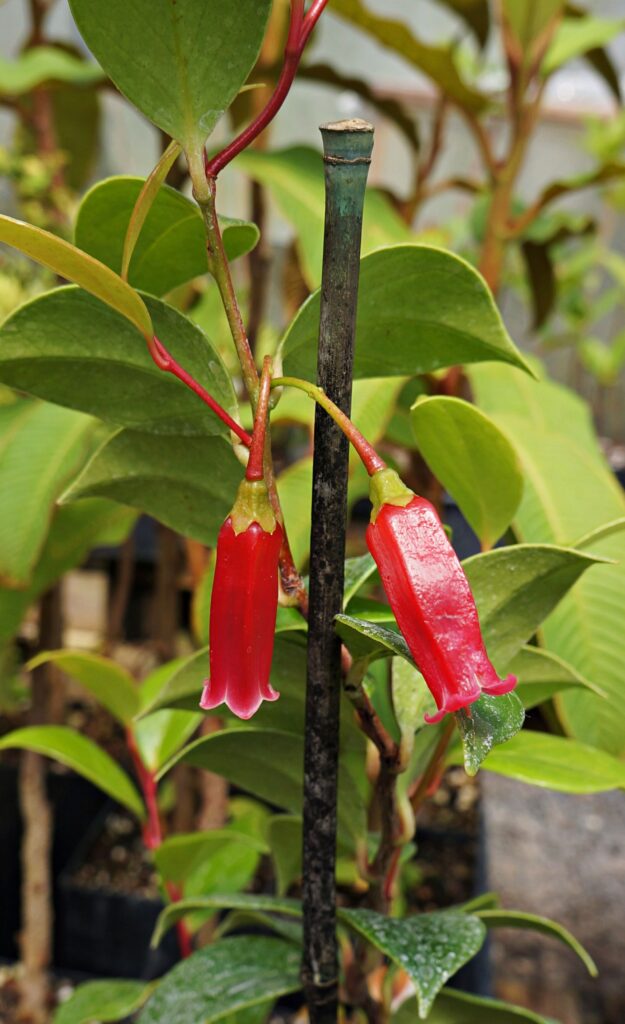
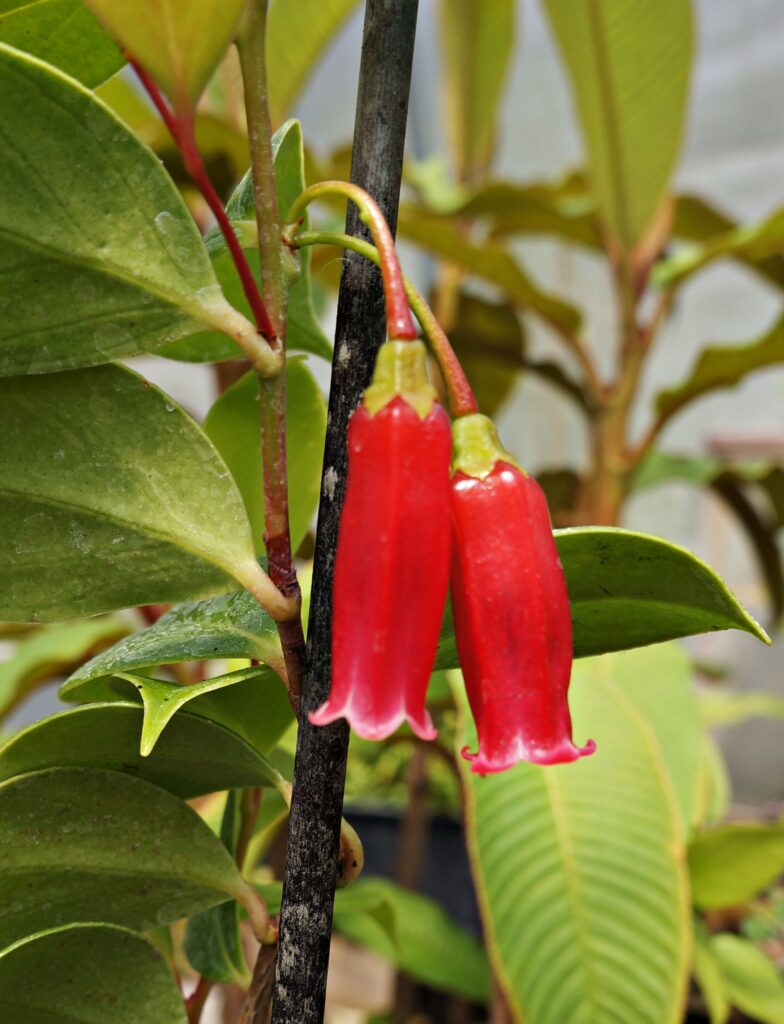
Agapetes oblonga “Yunnan Huckleberry”
Rare larger species 3–10′ tall. Fuzzy stems, oblong-lanceolate leaves. New growth is lustful pink-red. Develops a large woody caudex to 20″+. Very floriferous with tubular carmine-red flowers borne along the stems. Sweet edible berries, translucent white-pink with tiny hairs. Epiphytic in the evergreen forests of Yunnan, China up to 9000′. Cuttings root easily. We have several clones — we will send cuts from multiple clones when 2 or more are ordered. Z8b/9a?
[ 5 ] → 2 ~ 4-6″ unrooted cuttings $19.50 each or 2 for $35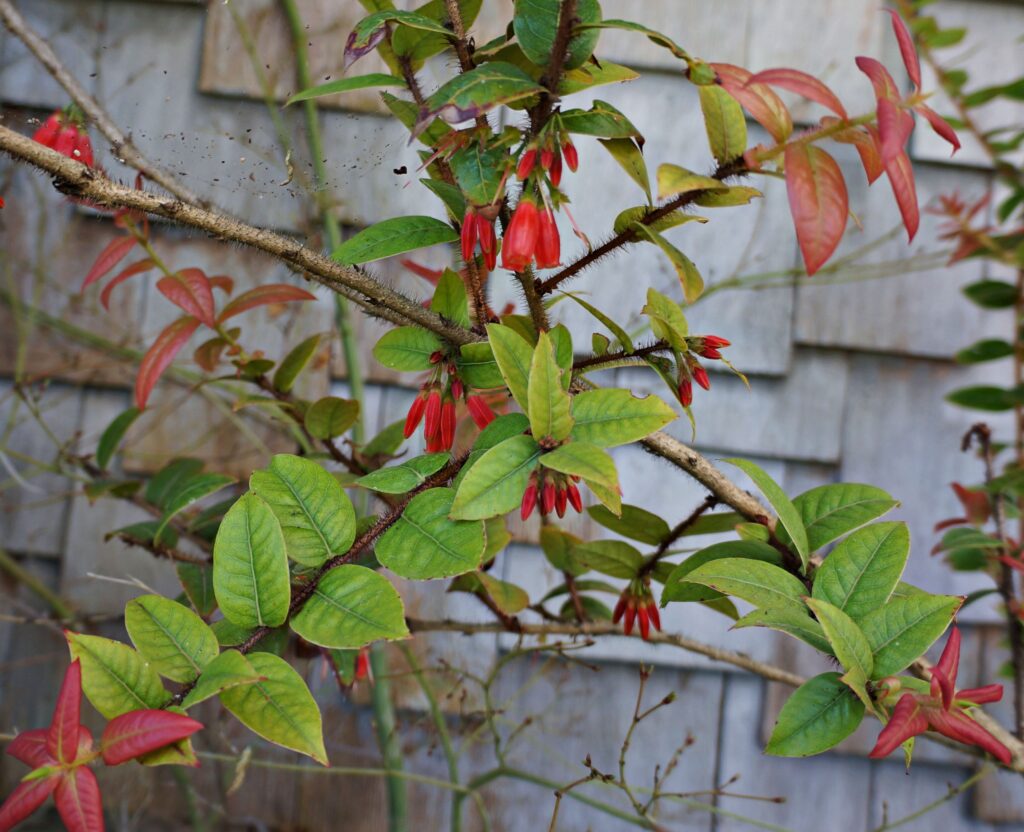
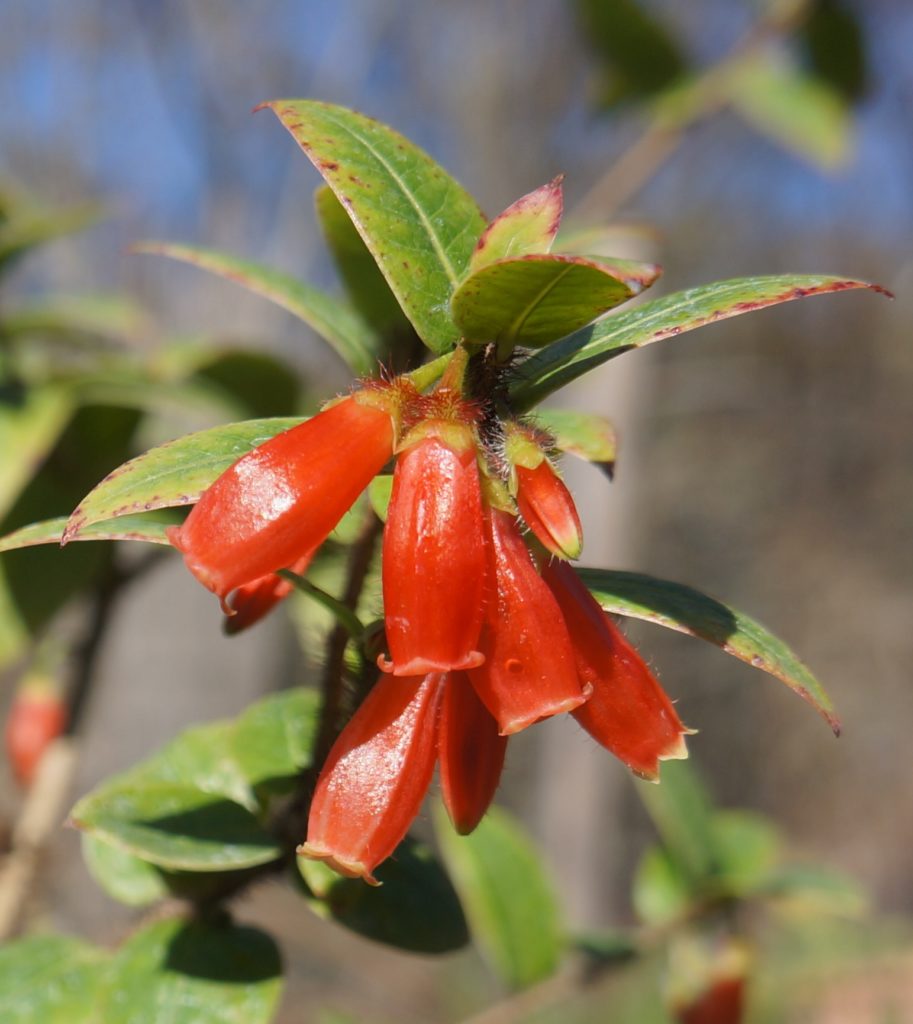
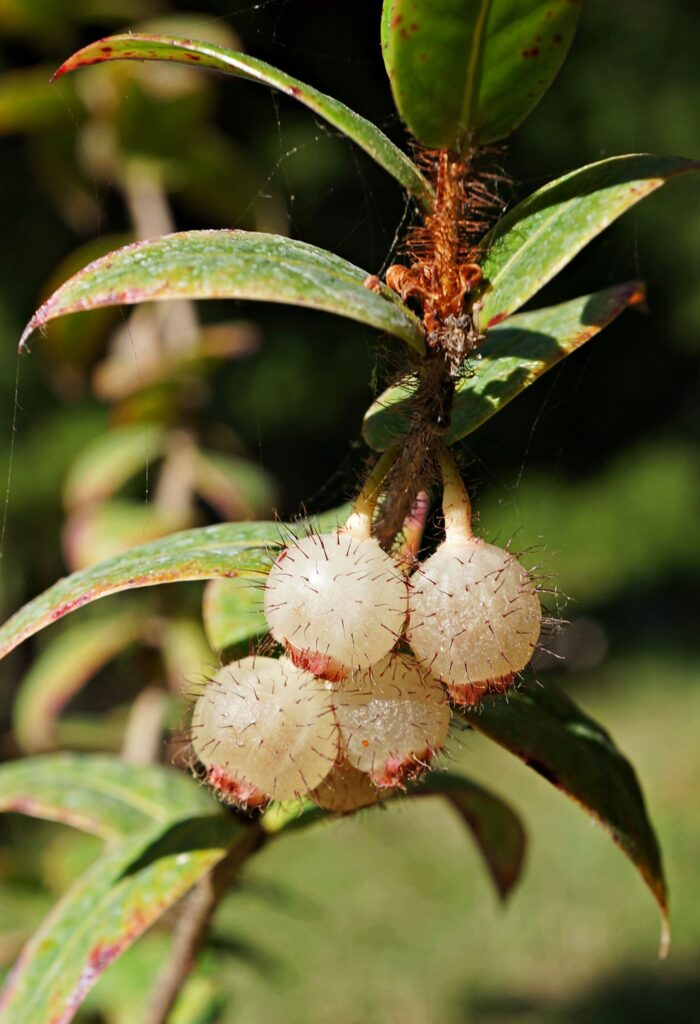
Agapetes sp. ‘Ludgvan’s’ X Agapetes ?? “Himalayan Huckleberry Hybrid”
‘Ludgvan’s Cross’ is a hybrid of A. serpens and A. rugosa, it makes a large woody caudex, has arching branches, pale pink lantern flowers with deep rose chevron markings, and grape-size, tasty white & purple fruit. This favorite was open pollinated by our local hummingbirds, the father was either A. oblonga, A. smithiana or back crossed with A. serpens. The progeny looks much like the mother so far and has yet to bloom for us. Only previously offered once before. We have a couple plants that have long been dwarfed in small pots and would greatly appreciate a new home and room to grow! Z8b
[ 2 ] → 1 ~ 4–8″ plant 5+ years old $22.50 SOLD
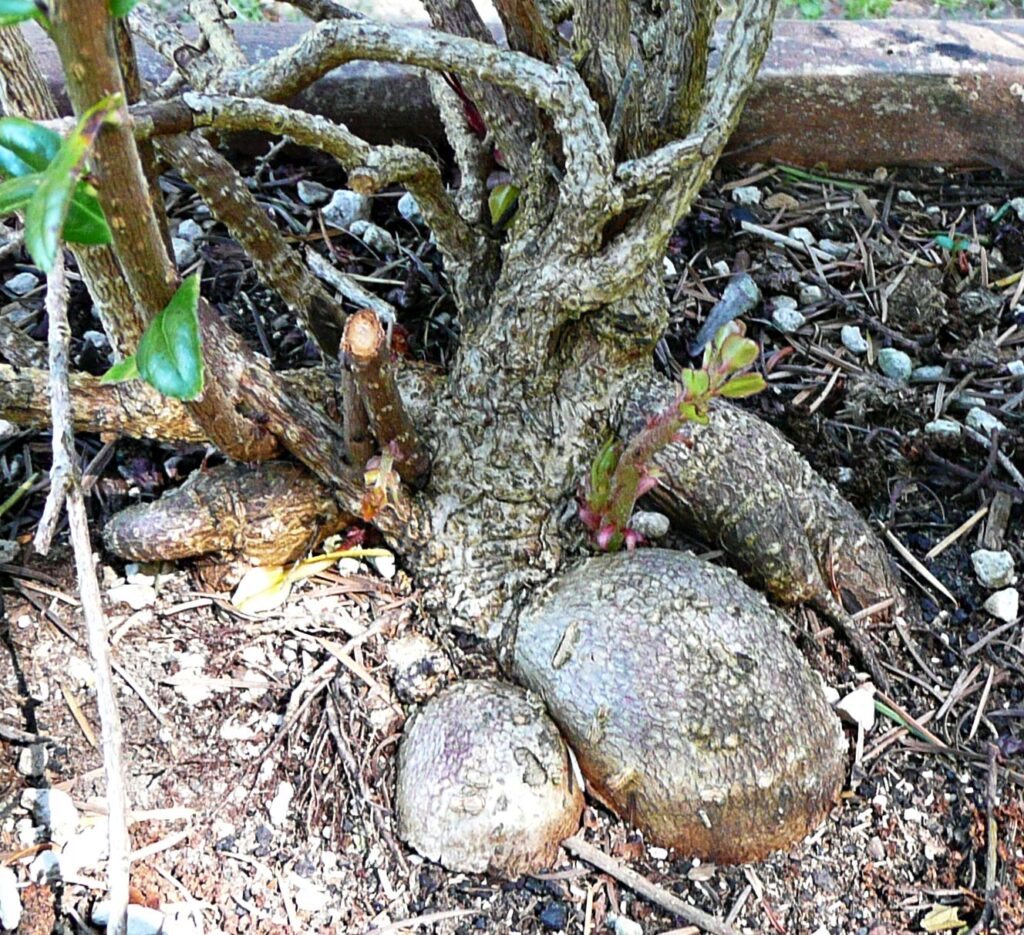
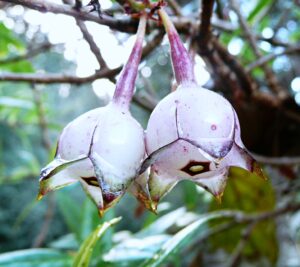 Caudex and fruit of mother plant
Caudex and fruit of mother plant
Arracacia brandegeei BK101106.2 “Chuchupate” “Cape Arracacha”
Apiaceae. Herbaceous perennial to 4’+. Big pinnate leaves, green to purplish in color. Large airy umbels of small white flowers grow up then hang above the plant. Huge thick roots. Cape Mountains, southern Baja, near 5000′. The roots are used for diabetes, rheumatism, stomach and kidney ailments. Relative of the delicious “Arracacha” root that is farmed in the Andes, the edibility of this species is unexplored. Prefers part shade and moisture but can tolerate some seasonal dryness. The last few plants we have left. Z9a?
[ 4 ] → 2 ~ Plants 8+ years old $24.50 each 2 for $44.50
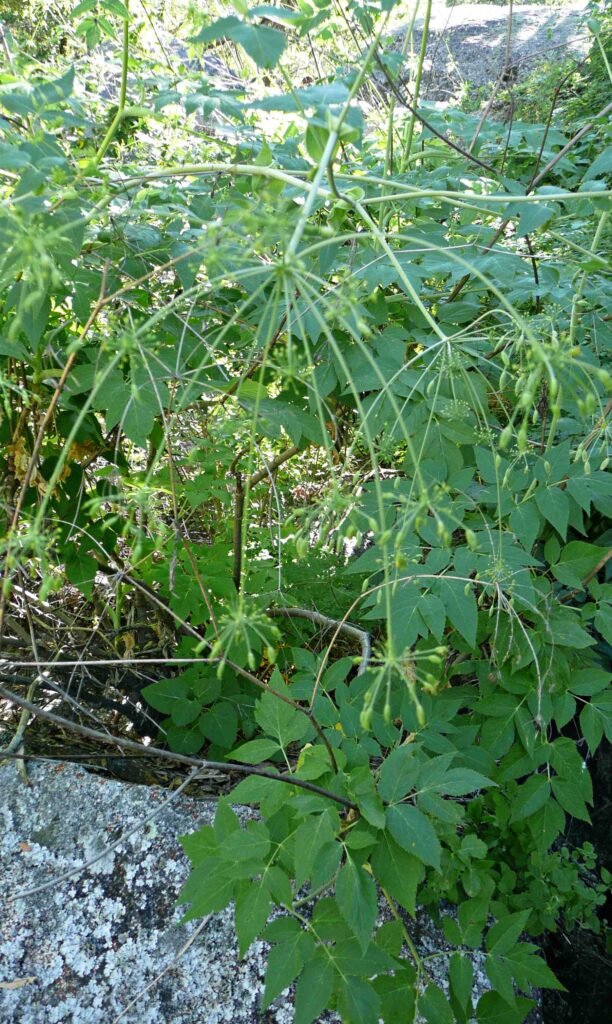 Plant in habitat, Cape Mtns, Baja
Plant in habitat, Cape Mtns, Baja
Austromyrtus dulcis “Midyim Berry”
Myrtaceae. Perfect addition to the edible landscape: a low growing evergreen groundcover to shrub, 1–6′ high. Small lanceolate leaves, dark glossy-green with silky undersides. New growth is burgundy to bronze. A profusion of small white flowers followed by white, mauve-speckled, edible berries. Native to eastern coastal Australia inland to the rainforest ecotones. The berries are a delicious traditional bushfood with a melt in your mouth, sweet-tart, aromatic flavor similar to Ugni. Easy to grow, plants in bright sunny positions remain a low growing groundcover, partial shade encourages height. Tolerates some frost once established. Z9a
[ 5 ] → 1 ~ 6–10″+ plant 3 years old $18.50 SOLD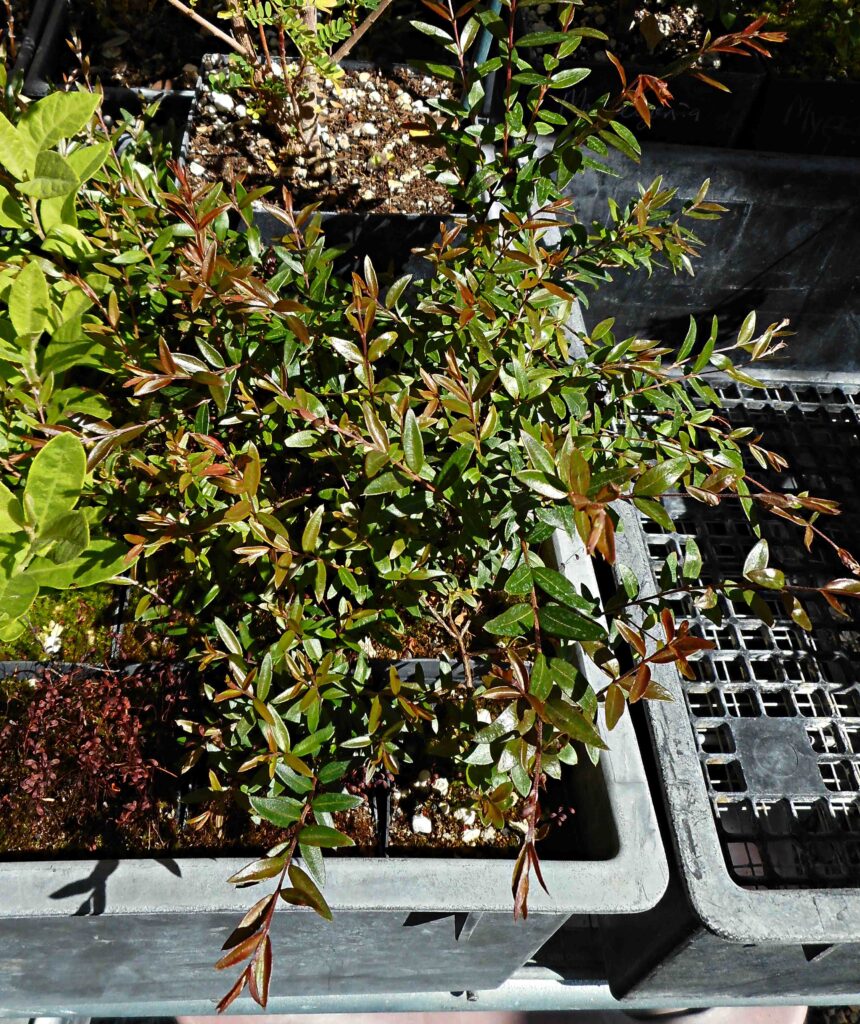
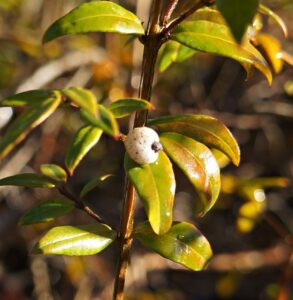
Begonia grandis “Hardy Begonia”
Begoniaceae. Herbaceous tuber forming species makes clumps to 2′ with very attractive cordate leaves with red veins and pendant clusters of pink flowers. Native to the forests of east Asia. The roots are used for blood circulation and as a painkiller. Light to heavy shade, rich moist soil. Naturalizes well and makes a stunning display when blooming. The tubers are hardy to Z6a/b
[ 12 ] → 9 ~ Plant 3+ years old $8.50 each or 3 for $18.50 or 6 for $29.50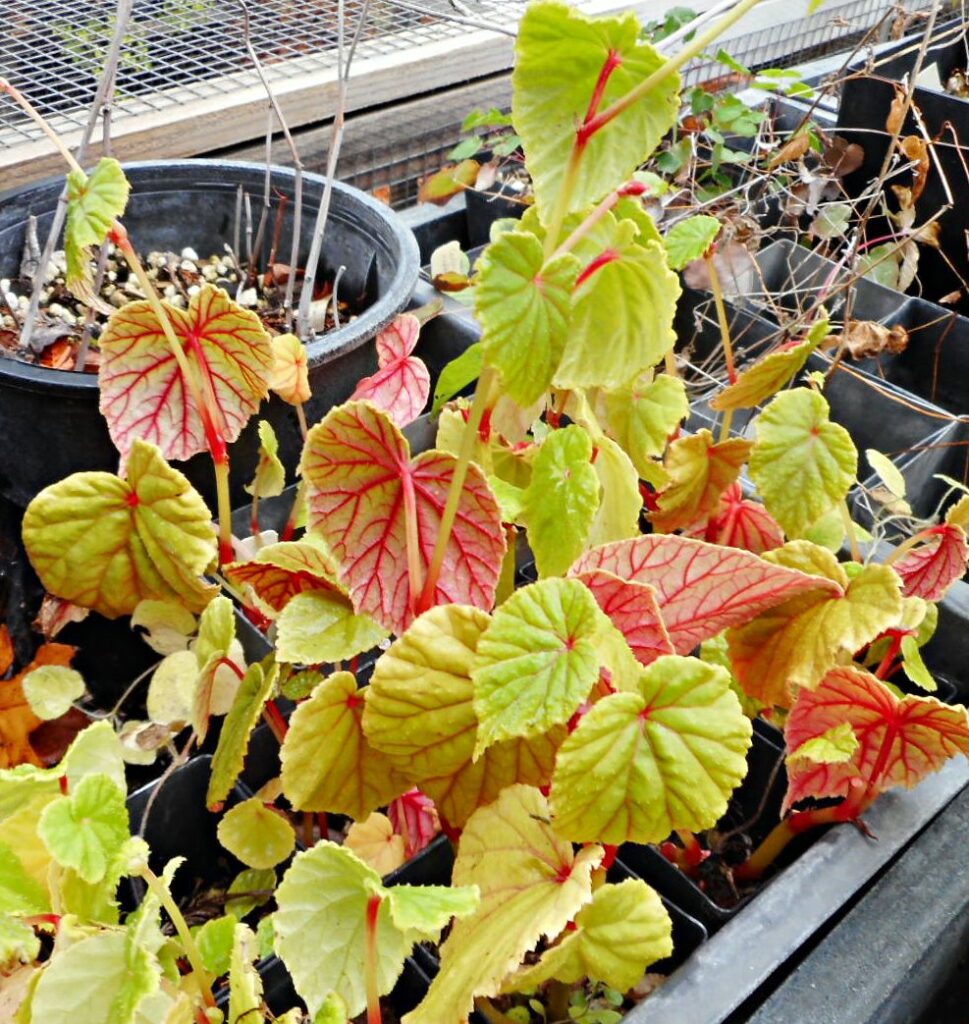
Betula utilis CC5763 “Bhojapatra” “Himalayan Birch”
Betulaceae. A gorgeous medium sized birch tree 20–35′ tall. Exceptional white, gold and copper peeling bark. The leaves turn a rich yellow and defoliate in Autumn. From seed collected by Chadwell at 12,500′ Langtang, Nepal, just south of the Tibetan border. An important tree, the bark is used for wound healing and as a carminative. In India the resin is reportedly contraceptive. Widely used for construction, the tree is now considered endangered in some regions due to deforestation. Easy to grow, does well in most soils. These long underpotted specimens will grow quickly with fresh soil. Z7a
[ 4 ] → 2 ~ 36″+ treelets 11+ years old $36.50** each 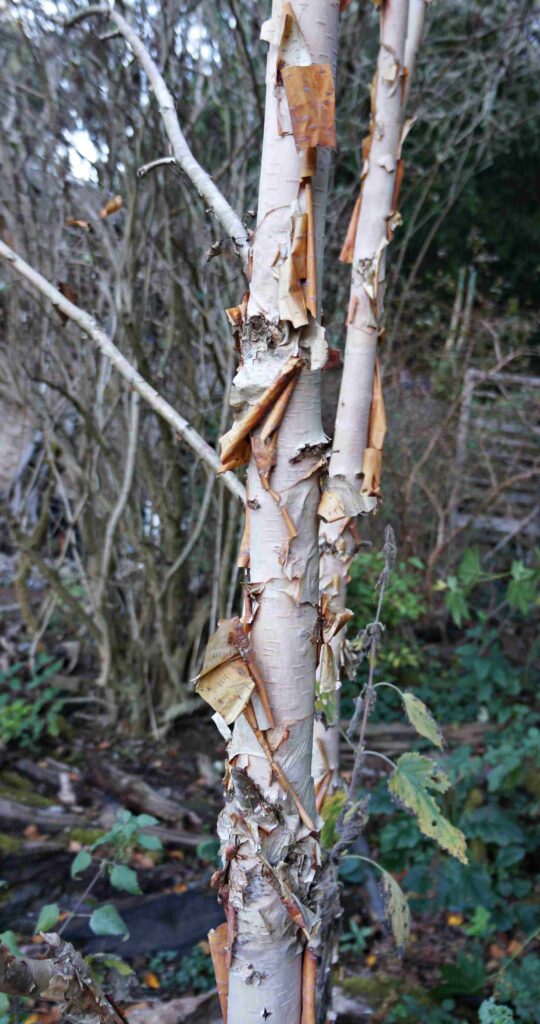
Camellia sinensis v. assamica “Black or Green Tea” “English Breakfast Tea”
Theaceae. Evergreen tea shrub similar to the Chinese variety, but with larger leaves and reaching heights of 50′ if untrimmed. White flowers with yellow stamens. Native to and grown near sea level in Assam, India, the largest tea growing region in the world. Though some of the harvest is dried as a green tea, most is fermented into a rich, malty black tea, the very substance that fueled the British empire. In addition to caffeine the leaves contain a host of beneficial phytonutrients that have been shown to fortify the immune system against all manner of maladies. This variety is better adapted to hot and humid climates. Prefers acidic soil; part shade to sun. Long underpotted specimens ready for planting out. Grow and harvest your own tea! Z8a/b
[ 4 ] → 1 ~ 6–10″+ plant 7+ years old $34.50
Casuarina torulosa (= Allocasuarina torulosa) “Forest She-Oak”
Casuarinaceae. Bizarre tree to 50′, often smaller. Brown corky fissured bark and sprays of very fine, descending, needle-like leaves that take on a beautiful coppery-purple color. Yellow orange flowers, small warty cones that remind us of toads. Native to Australia. A uniquely gorgeous and useful plant that deserves wider cultivation. Nitrogen fixing and good for building soils. Excellent windbreak. Low maintenance, grows quickly even in poor soils. Makes an interesting bonsai as well. Z9a
[ 3 ] → 1 ~ 24–28″ treelet 9+ years old $44.50** 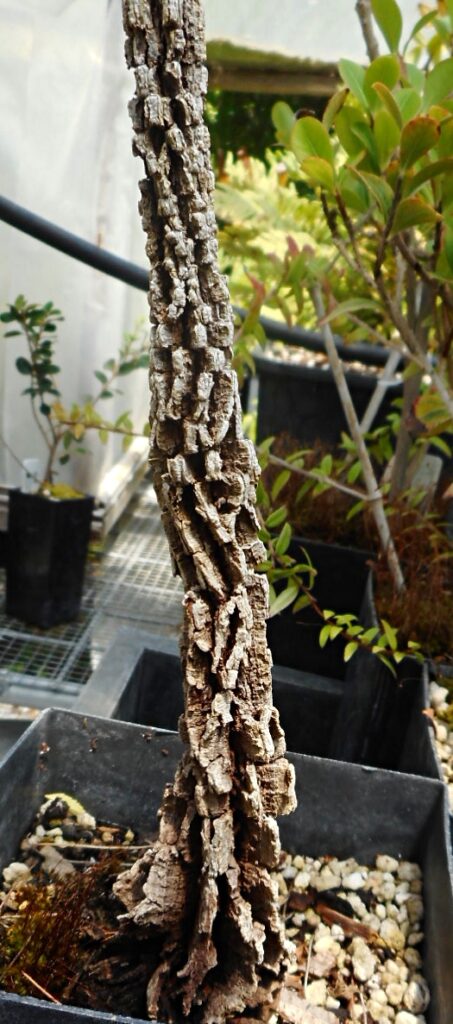
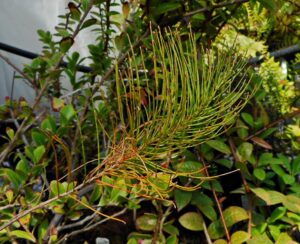
Codonopsis convolvulacea “Ludu Dorje”
Campanulaceae. Rounded perennial tubers with annual twining vines to 8′, narrow leaves. 1.5″ star-shaped flowers, a pure vibrant blue color. Native to the forests and mountains of eastern Burma and southwestern China. Has a strong, musky smell similar to Cannabis. The gorgeous flowers are used for skin conditions and the edible, white tuberous roots as a tonic. It is claimed that to those with “spiritual vision” the plant emits a visible glow at dusk! It is rumored to be the “Supreme Herb”. A special decoction made from all parts of the plant is taken by yogis to cure all disease and obtain magical powers, walk on water and fly!! It is also said to be an ingredient in the sacramental “Rainbow Light Pills”, which are known to liberate one from rebirth in the lower realms. Note: these statements have not been fully evaluated by the FDA! Well worth growing for the flowers alone, prefers part shade for the roots, a friend to climb on and rich, well draining soil — easy! Z7a
[ 5 ] → 2 ~ Plants/tubers 3–4 years old $26.50 each or 2 for $45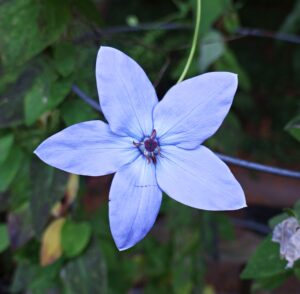
Diospyros californica “Guayparin” “Wild Black Persimmon” “Wild Black Sapote”
Ebenaceae. Evergreen shrub to 20’+ tree with stiff simple leaves and yellow flowers, probably dioecious. Dense wood. Endemic to Baja’s Cape Region. Produces edible 2″ globular fruit, dark chocolate-brown when ripe. We were surprised to learn about this desert dry-forest persimmon tree and delighted when we first tried the deliciously flavored black fruit in 2010, an instant favorite! Easy to grow, tolerates drought and some frost once established. A must for rare fruit growers in dry climates. Unsexed treelets. Z9a?
[ 4 ] → 1 ~ 10-14″ treelet 3+ years old $19.50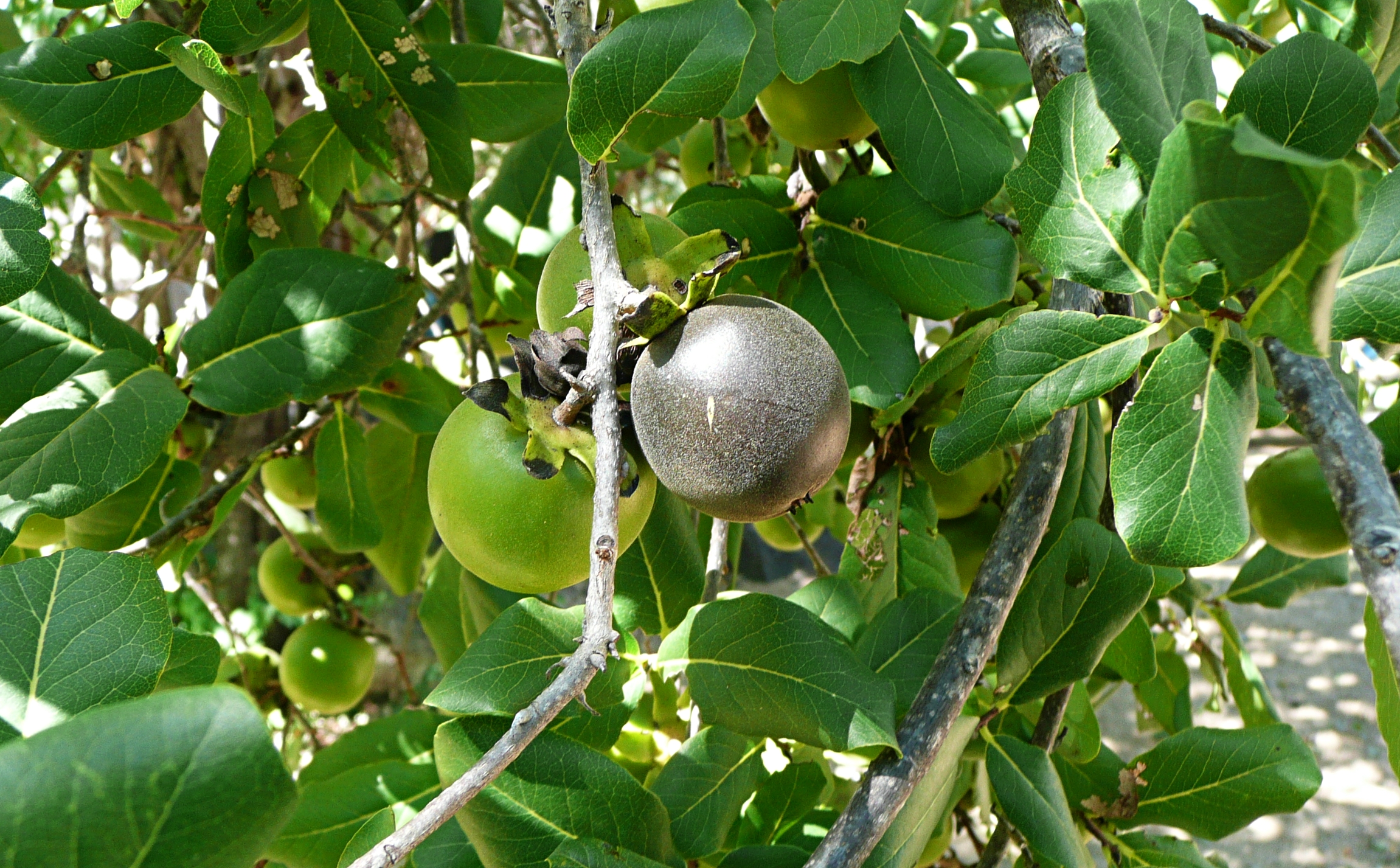
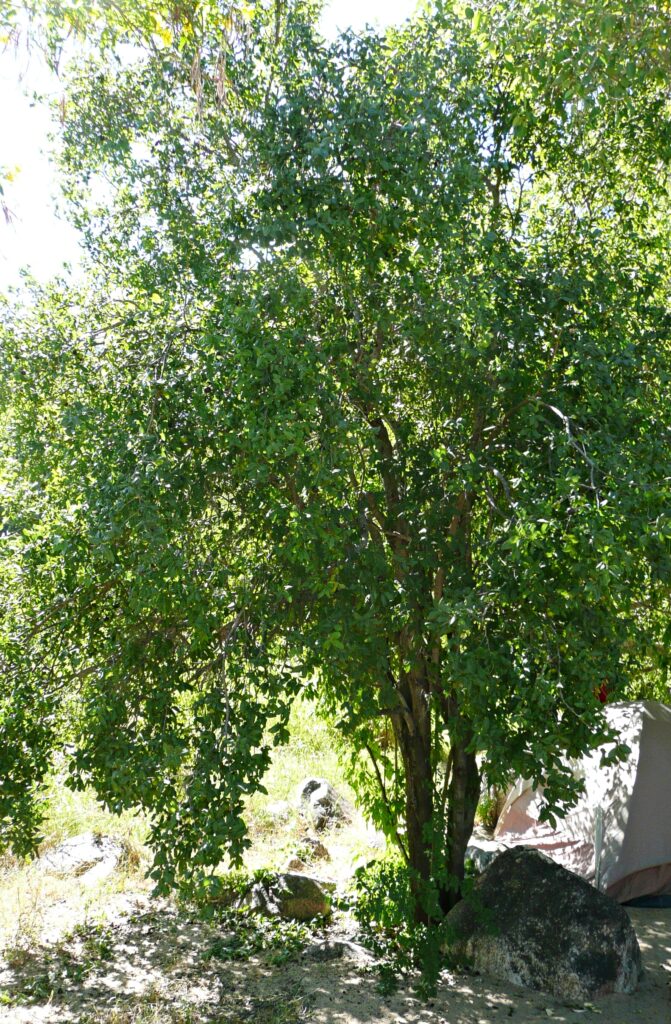
Ilex vomitoria ssp. chiapensis “Yaupon”
Aquifoliaceae. Upright evergreen tree to 25’+. Small white flowers and purple-red berries. This subspecies is a very curious disjunct population from the threatened pine-oak dry forests of Chiapas, Mexico above 5000′. Perhaps brought there for cultivation in ages long past? A bit larger leaves and more erect habit than US populations and seed is easier to germinate, 3–6 months warm. The leaves are a rich source of caffeine and were esteemed by numerous tribes in North America, making an excellent tea. Prefers bright, filtered light. Z8b?
[ 4 ] → 1 ~ 6-10″ plant 4+ years old $22.50
Lonicera quinquelocularis “Himalayan Honeysuckle Tree”
Caprifoliaceae. Attractive deciduous shrub or small tree, 6–15’+ tall. Soft ovate leaves, clusters of yellow-white tubular flowers and ornamental translucent berries. Chadwell seed collection from the Himalayas. A beautiful and easy to grow plant, prefers loamy soil and sun to part shade. Z5a/b
6 ~ 6–12″+ plants 4+ years old $14.50 each or 3 for $28 SOLD OUT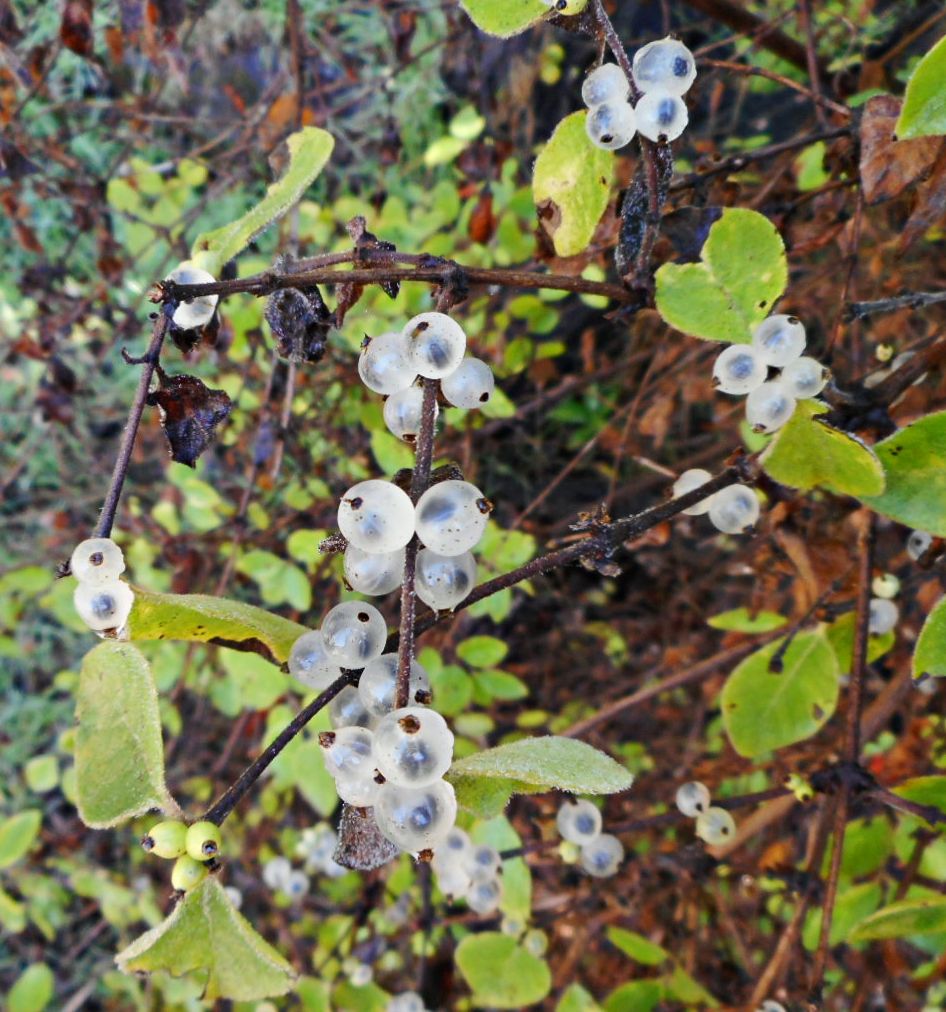
Mahonia gracilipes
Berberidaceae. Evergreen shrub 2–5’+. Large compound leaves with stiff, pointed leaflets, bluish-purple to dark green, powdery white underneath. Summer sprays of small purple and yellow flowers followed by bluish fruit, edible but very tart. Rare species endemic to shady, moist limestone cliffs, Emei Shan, Sichuan, China. Rich in medicinal antibiotic alkaloids like other Mahonia and Berberis. This is a gorgeous plant that has grown very well for many years in our garden. Sun or shade, somewhat drought hardy once established. Long underpotted specimens eager for out-planting! Z7a
[ 4 ] → 2 ~ 6–12″ plants 7–8 years old $18.50 each or 2 for $33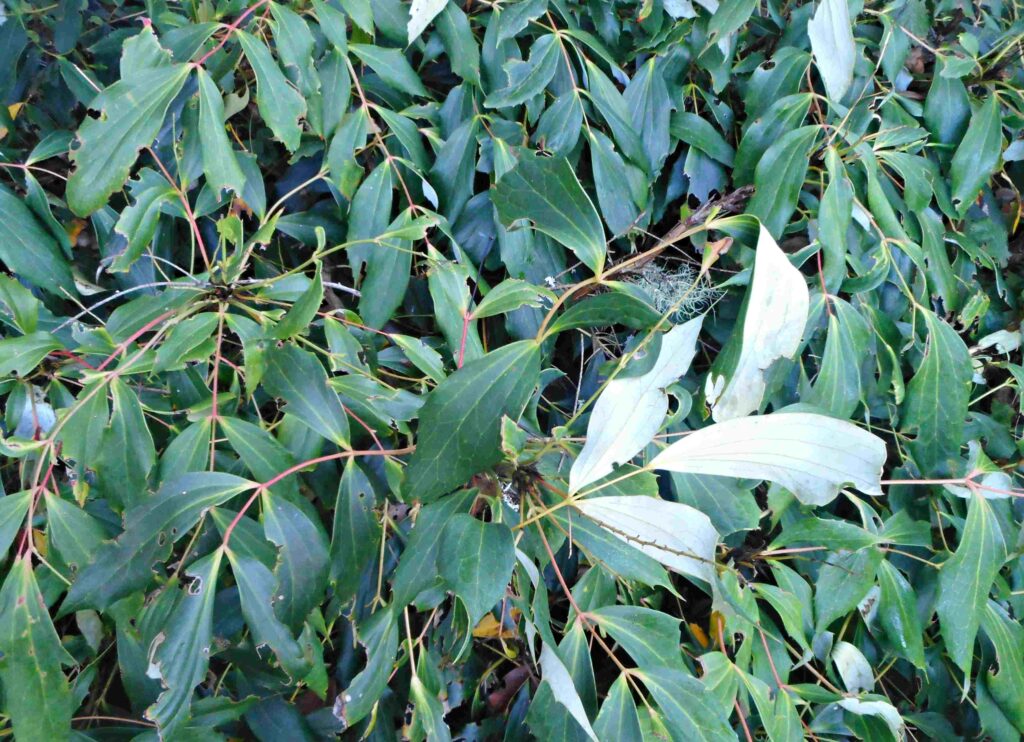
Picea smithiana CC6793 “Junde Salla” “Himalayan Spruce”
Pinaceae. Beautiful conical evergreen tree. Whorled branches with pendulous ends. Spirally arranged needles. Chadwell collection, Uttaranachal, Central Himalaya, 7600′. We have just a few specimens left of this enchanting species that have been kept ‘bonsaid’ in small pots. Z5?
[ 3 ] → 2 ~ 15–20″+ treelets 9+ years old $28.50* each or 2 for $50
Salvia valentina “Gallocresta”
Labiatae. Diminutive species, forms a 4″+ rosette of rugose scalloped leaves. Flower stalk to 6–12″+ bearing pale blue-purple flowers. An endangered sage species endemic to Spain, seed from Sierra de Segura, 5600′. The whole plant has is wonderfully aromatic and is used medicinally. Sun and drought tolerant. Lovely in garden borders. Z7/8a?
[ 3 ] → 2 ~ Plants 2-3 years old $14.50 each or 2 for 24.50
Silene undulata (=Silene capensis) “Xhosa Dream Herb”
Caryophyllaceae. Low growing perennial rosettes of linear leaves. Tubular tobacco-like white flowers borne in mass on branching inflorescenses to 2’+. Native to South Africa. The downy leaves are smoked as a ‘tobacco’ and the Xhosa have made use of the succulent roots to induce “dreaming” and it has become popular in the US among people involved in “dream work”. Very easy to grow, drought tolerant and adaptable to most gardens. A few mature clustering specimens available. Z8b
[ 4 ] → 2 ~ 4″+ plants 3-4 years old $18.50 each or 2 for $33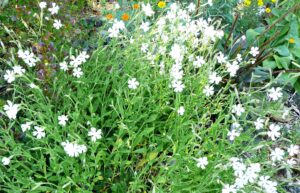
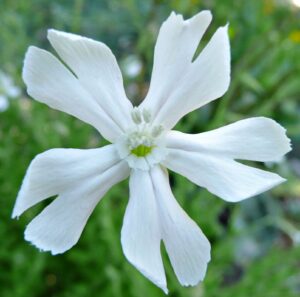
Tiliacora triandra “Bai Yanang” “Jello Plant”
Menispermaceae. Large twining vine with lime-green heart to arrow shaped leaves. Clusters of yellow flowers and round red fruit. May form a tuber/caudex with age. Native to forests of Southeast Asia. In Thailand and Laos a juice from the leaves is used as a thickening agent for making kaeng no mai soup and surong sam “jello”. Rich in antioxidant phytonutrients that studies have shown to have anti-intoxicative, neuroprotective and cognitive enhancing effects, especially in alcoholic rats! Leafy shoots are also a traditional cure for dysentry. Easy to grow, give it plenty of room to climb. Rooted cuttings. Z9b?
[ 4 ] → 2 ~ Plants $15.50 each or 2 for $27.50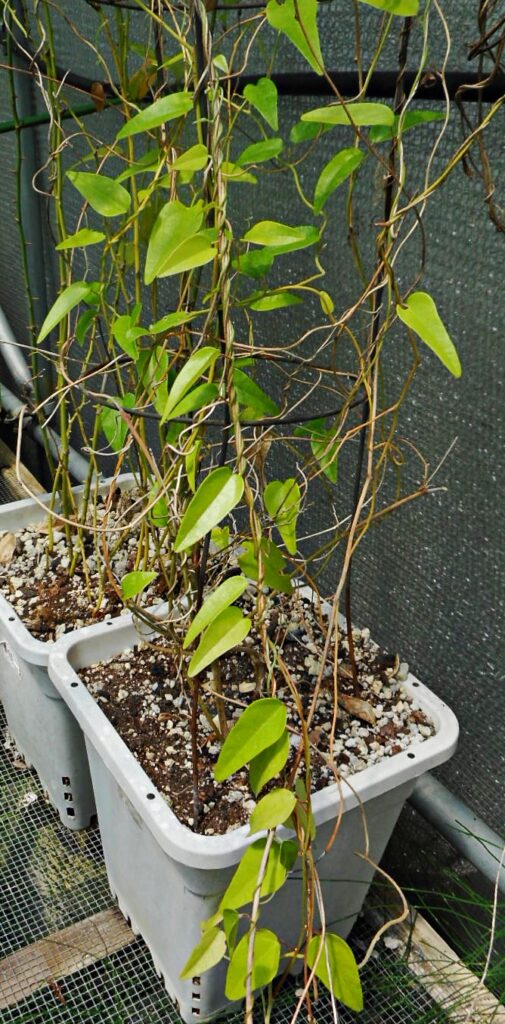
Vaccinium consanguineum “Paramo Huckleberry”
Ericaceae. 4–12′ evergreen shrub with densely packed glossy blue-green leaves 1–2″ long. Masses of white tinged pink bell flowers swell to become 1/3″ red then blue-black berries when ripe. Native to the high elevation cloud forest and paramo in Cartago Province, Costa Rica. If picked early the berries have a disagreeable flavor, but once fully ripe they are quite delicious! Rare and easy to grow. Acidic soil, sun to part shade. These are the last seed grown specimens we have, long underpotted and ready for your garden. Z8b
[ 4 ] → 1 ~ 6–10″+ plants 7+ years old $24.50 SOLD
Vaccinium gaultheriifolium “Himalayan Large-leafed Blueberry”
Evergreen shrub with arching branches, 6–12″ tall. Large elliptical leaves, glaucus-blue to green with white undersides. Clusters of white to pink bell flowers adorn the branch tips followed by clusters of round edible blueberries. Native to the mountain forests of the eastern Himalayas, up to 9000′. An elegant and rarely cultivated blueberry. Dappled sun and well drained rich soil. Long underpotted specimens ready for fresh soil. Z7a
[ 5 ] → 1 ~ 10-16″+ plant 8+ years old $22.50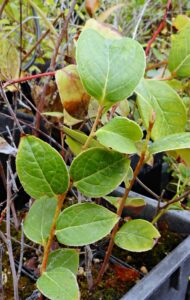
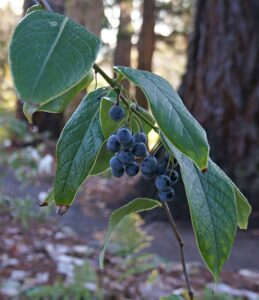
Valeriana jatamansi (= V. wallichii) “Indian Valerian” “Mushkbala”
Valerianaceae. A delightful low growing plant with basal rosettes of soft heart shaped leaves. 12″ flower stalk with small white flowers. Native to the temperate forests of the western Himalayas into the mountains of Afghanistan up to 10,000′. The plant has a sweet aroma and is a source of the legendary Spikenard oil. The rhizomes are rich in valepotriates, reported to be effective for leprosy. It also has sedative actions like other valerian species. Easy, does best in part shade and moist soil. Z7b
[ 6 ] → 4 ~ 2–3″ plants 2–3 years old $12.50 each or 2 for $21 or 4 for $36
Viburnum mullaha CC7127 “Malayo”
Adoxaceae or Caprifoliaceae. Large deciduous shrub to 15’+. Long lanceolate leaves. Rounded umbels of showy white flowers followed by a display of red berries. Chadwell collection, forest of “Little Tibet”, Ladakh, 7600′. A rare and attractive species, the acidic fruit is edible and is eaten as a stimulant, the juice for indigestion. Z8?
[ 4 ] → 2 ~ 12–18″+ plants 7+ years old $15.50 each or 2 for $26.50
Zingiber mioga “Myoga Ginger”
Zingiberaceae. Perennial rhizome with annual leafy stems 2–3′ tall. Orchid-like pale yellow to reddish flowers bloom at soil level. Native to the forests of eastern China, Korea and Japan where the fresh shoots are an esteemed vegetable and flowers buds a delectable addition to soups and eggplant dishes. Contains anticancer constituents. Rich moist soil and part shade. The hardiest of the ginger, especially if well mulched. Rhizome divisions, winter dormant. Z6a
[ 4 ] → 1 ~ Plant/rhizome $19.50
~~~~~~
BOOKS
Support your Independent Bookseller!
See below the listings for book shipping rates ↓
Please email to confirm availability prior to sending payment –
sacredsucculents@hushmail.com or benkamm@monitor.net
GRAFTING GUIDE
By Ben Kamm
Grafting of a slower growing cactus species onto a faster growing stock increases plant growth significantly. It is a viable means of quickly producing mature specimens for seed production and vegetative propagation. This illustrated guide covers all aspects of grafting, from week old seedlings to mature specimens. Includes tricks we have learned over the years that help make this valuable conservation technique accessible and practical. Focuses mainly on Cactaceae but coverage is given to Euphorbiaceae, Apocynaceae and other succulent families.
[ 6 ] → 2 ~ Copies, staple-bound softcover $9.00 (8 oz)
GROWING PLANT MEDICINE: Volume 1
by Richo Cech illustrations by Sena Cech
Brand new book from master plantsman Richo Cech, a much-expanded version of his classic The Medicinal Herb Grower. Draws on the author’s lifetime of cultivating and living with an amazing diversity of medicinal plants. Pretty much everything you need to know about natural organic gardening techniques, from seed to harvest, for a great majority of healing herbs. Newly augmented with bioregional medicinal plant recommendations, garden plans and materia medica. Arranged by plant families, alphabetically by kinship and common name—covers families A through H. Volume 2, which is in production, will cover the rest of the alphabet. This is hands down the best reference for medicinal plant cultivation there is. Delightfully illustrated by Richo’s daughter Sena, full of personal anecdotes and life stories—not only useful, this book is a joy to read!
[ 6 ] → 2 ~ Copies, softcover, 354 pages $29.95 each (2 lbs) 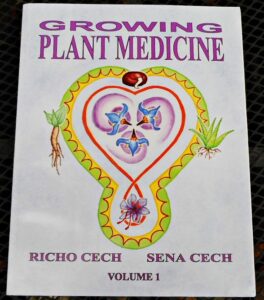
The Health Professional’s Guide to Dietary Supplements
by Shawn M. Talbott and Kerry Hughes
This useful quick-glance reference helps students and health professionals educate themselves and their patients/clients about the scientific evidence for and against more than 120 popular dietary supplements. Supplements are logically grouped into 12 chapters based on their primary desired effect, such as weight loss, joint support, and sports performance enhancement. The authors give each supplement a one-to-five-star rating based on the level of scientific substantiation for each of its major claimed effects. The book highlights crucial safety issues regarding each supplement and sets forth recommended dosages for particular effects. A quick-reference appendix lists all the supplements alphabetically with their star ratings. First edition. We have just one copy left of this helpful volume!
[ 3 ] → 1 ~ Copy, softcover, 444 pages $60 (2 lbs) SALE! $32
The PLEASURE: Animist Encounters with Poison Oak ~Signed Copies!~
by Erik Davis, illustrations by David Y. D’Andrea
Lessons from the Poison Path
A lively and fascinating essay by our good friend Erik Davis, inspired by a hike we took just downstream of Sacred Succulents the first summer of the pandemic. Poison oak is a integral member of California’s ecology, a plant that demands attention and prudence, yet little has be written about this adaptable species and many mysteries still surround the wily nature of Toxicodendron diversilobum. Scratching beneath the surface of science and legend, Erik keenly discerns poison oak’s anthropomorphic qualities, including that of a fierce and mercurial guardian, a tricky teacher, and a vigorous ally to the endangered “wilds”. A must read for all who’ve encountered the plant and it’s troublesome effects—what some perversely describe as the pleasure. With a gorgeous full color cover and interior black & white illustrations, this informative chapbook is a lovely limited collector’s item. Our copies are signed by the author.
[ 12 ] → 4 ~ Copies, Signed Chapbook, 24 pages $20 each (8 oz) 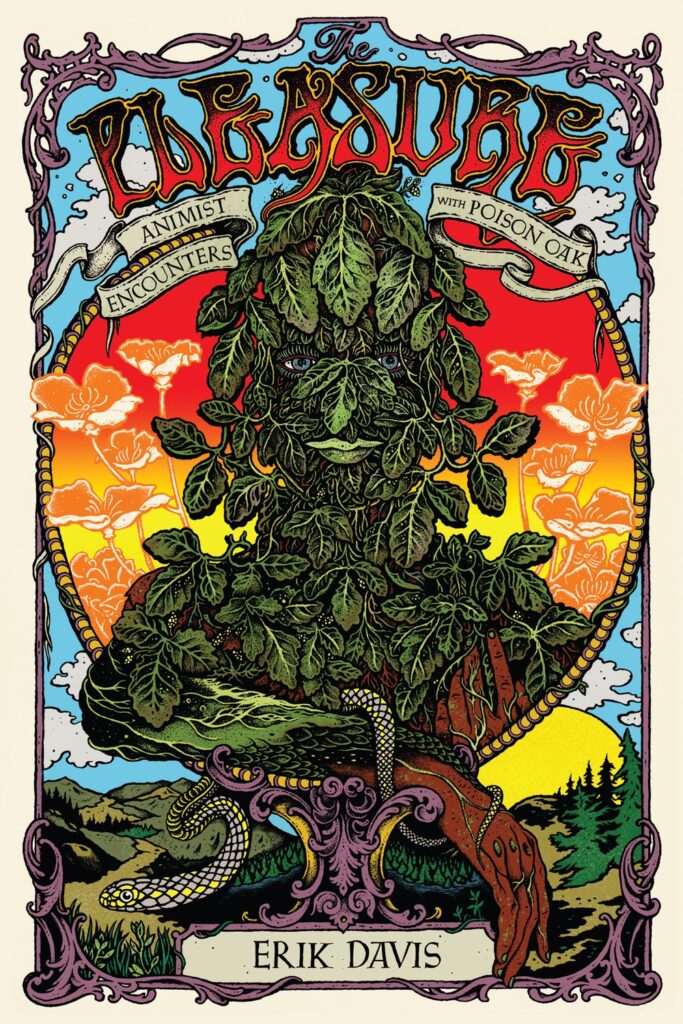
PLANTS USED BY AMAZON SHAMANS IN THE AYAHUASCA DRINK
by Luis Alberto Lopez Vinatea
This hard to find little book covers over 120 plants that are known to be used in the Ayahuasca potions of Peru. Lists the scientific name of each plant, plant family it belongs to, common and indigenous names, geographical distribution, chemical composition, herbariums where voucher specimens are deposited, and its reported effect as an additive to the brew. Introduction and a brief overview of the ayahuasca phenomenon in Spanish. A good reference source.
[ 15 ] → 4 ~ Copies, softcover, 80 pages $14.50 each (8 oz) SALE! $10 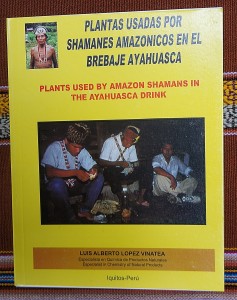
… BOOKS BY JONATHAN OTT …
Natural products chemist, ethnobotanist, scholar, conservationist, linguist and author, Jonathan Ott is one of the world’s foremost authorities on the botany, history, and chemistry of shamanic plants. Mentored by mycologist R. Gordon Wasson, ethnobotanist Richard Evans Schultes, and chemist Albert Hofmann. Jonathan currently manages a biological preserve in eastern Mexico. We are the US distributor for his books, bulk inquiries are welcome. We are currently working with Jonathan to publish reprints of some of his long out-of-print books and several exciting new titles in the coming years…
THE AGE OF ENTHEOGENS & THE ANGELS DICTIONARY
by Jonathan Ott
A fantastic read, one of Ott’s most accessible books. “A radical re-examination of the history of our western civilization, exploring the brutal suppression of ecstatic, experiential, natural religions from The Age of Entheogens, by the 1600-year-old Pharmacratic Inquisition, leading up to the contemporary Entheogenic Reformation.” Followed by a dictionary-style lexicon of words pertaining to shamanism and entheobotany; made in response to R. Gordon Wasson’s call for “a vocabulary to describe all the modalities of a Divine Inebriant”.
[ 10 ] ⇒ 2 ~ Softcover copies, 160 pages $25 each (1 lb)
[ 10 ] ⇒ 4 ~ Hardcover copies $50 each (1 lb) SALE! $45 
PHARMACOTHEON: Entheogenic Drugs, Their Plant Sources & History
by Jonathan Ott
If you get only one book on the topic of entheogenic plants and compounds, this is it, the most complete reference book, a dense 640 pages covering over 1,000 species with the largest bibliography on the subject ever compiled. Everything you ever wanted to know, and much more. Accurate, definitive, and surprisingly entertaining. Foreword by Albert Hofmann. The 1993 hardcover 1st edition is nearly sold out.
[ 10 ] ⇒ 2 ~ Softcover copies, 640 pages (2nd edition) $50 each (3 lbs)
[ 5 ] ⇒ 1 ~ Hardcover copy (1993, 1st edition) $99 (3 lbs) 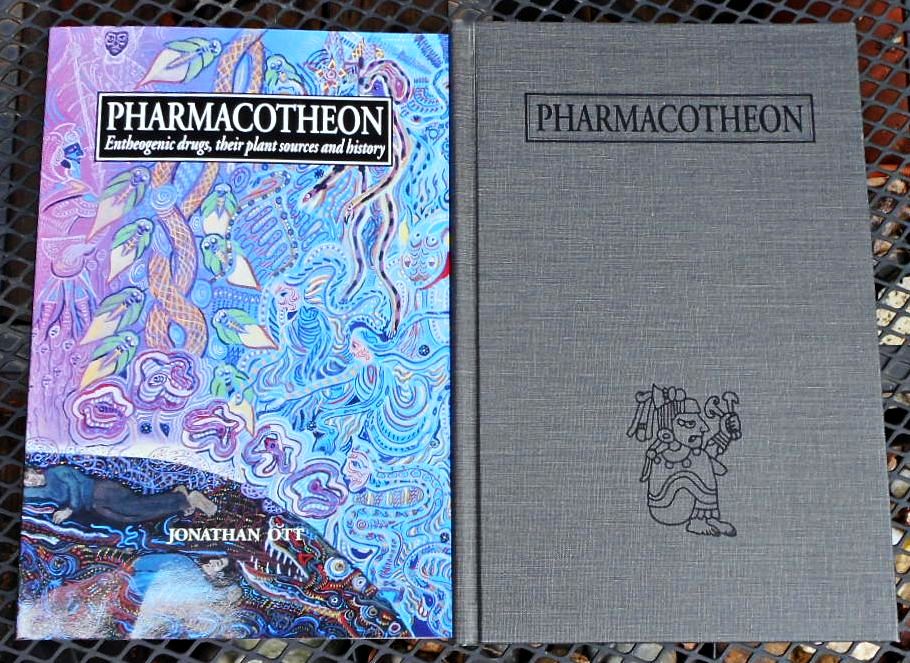
PHARMACOPHILIA or The Natural Paradises
by Jonathan Ott
An irresistible, even poetic book addressing the spirituality, law, pleasure and science of psychoactives. Ott’s essential contribution towards edulcorating and excising ethnopharmacology’s errant epistemes. Ott educes the melodious and beneficent paradigm of pharmacophilia—a completely natural and healthy love of “drugs”. A must read!
[ 10 ] ⇒ 3 ~ Softcover copies, 192 pages $25 each (1 lb) SALE! $22
[ 10 ] ⇒ 5 ~ Hardcover copies $50 each (1 lb) SALE! $45 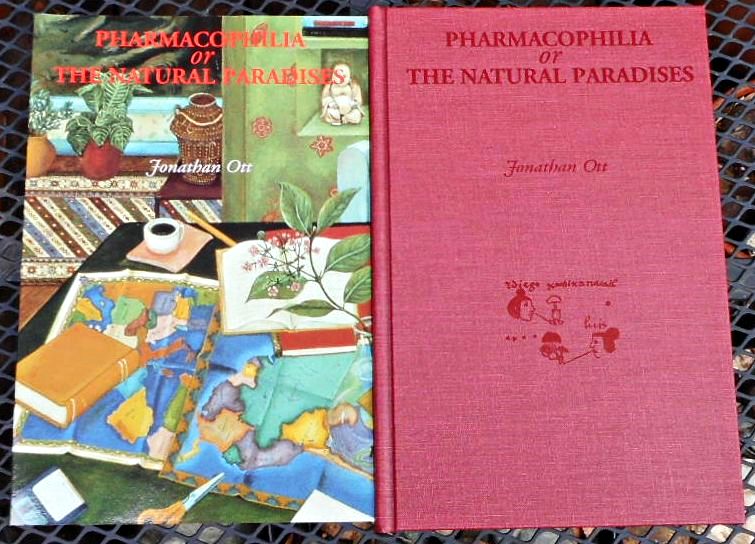
RARE & USED BOOKS
We endeavor to update this section monthly. Many titles offered here come from the library of our late friend – the celebrated ethnobotanist Richard Felger.
Unless noted otherwise, only one copy (or set) is available of each listing.
Please email to confirm availability prior to sending payment –
sacredsucculents@hushmail.com or benkamm@monitor.net
Baja California Plant Field Guide
by Norman Roberts
Excellent field guide which remains our main in-the-field reference when exploring Baja. Generously packed with color photos and illustrations. 324 pages. Used book—heavy wear to cover yet pages are crisp and clean. A good working copy.
1st edition Softcover in good condition $14 (2 lbs)
FLOWERING PLANTS:
The Santa Monica Mountains, Coastal & Chaparral Regions of Southern California
by Nancy Dale
A really fantastic field guide to the plants of SoCal. The book includes: * Plants organized within family groups * 214 color photographs and 51 original botanical drawings accompanying text * Details on 260 species 63 families * Simple explanations of botanical terms * Early California botanical history as it relates to specific plants * The cultural history of specific plants * Maps of the Santa Monica Mountains and suggested wildflower trips * Flowers indexed by color, name, and family * Facts on Indian uses of plants, ancient medicinal practices, cultivation requirements for home gardening, and some recipes. 1986 first edition softcover in very good condition, minor shelf wear. Title page signed by the late, great ethnobotanist R. Felger. 240 pages.
1st edition Softcover in very good condition $25 SOLD
Flora of the Galapagos Islands
by Ira L. Wiggins and Duncan M. Porter
Unparalleled work by the powerhouse botanist Ira Wiggins. A massive, awesome book with numerous breathtaking black & white illustrations and 96 color photos. For those who have interest in South America’s most famous island, Darwin’s living inspiration, this book is a must! Ex-library copy—front interior has standard library stickers and markings and moderate wear from library circulation, the dust jacket has some rubs and is tattered along the top (yet pretty good after 60 years!), otherwise a clean and excellent working/reference copy. 1971 first edition, 1020 pages. Armchair journeys through this fantastic flora are much more affordable and ecologically responsible than actual travel to the island these days!
1st edition Hardcover in good+ condition $120 (5 lbs) 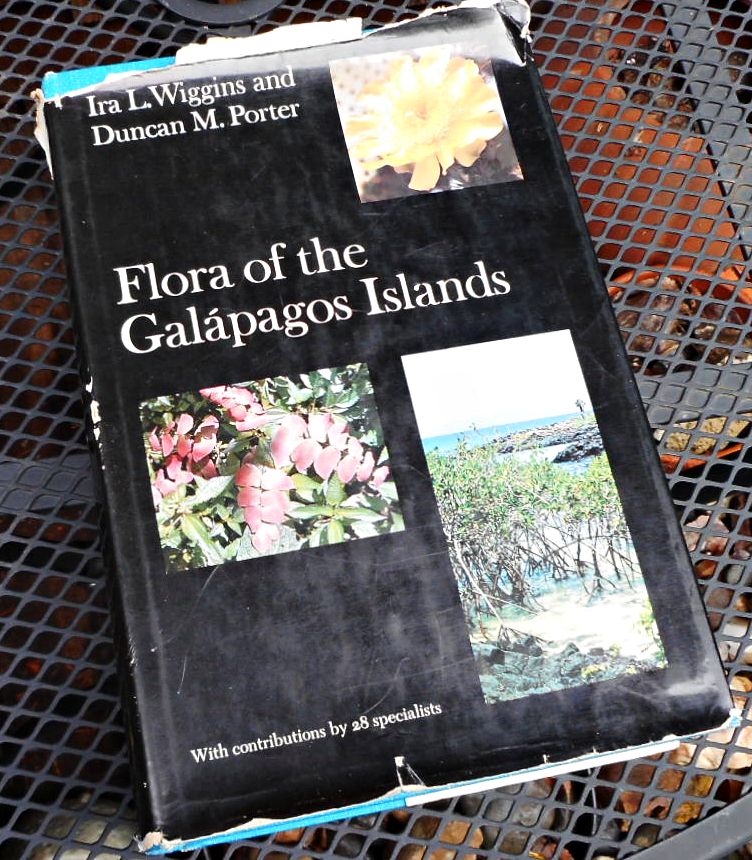
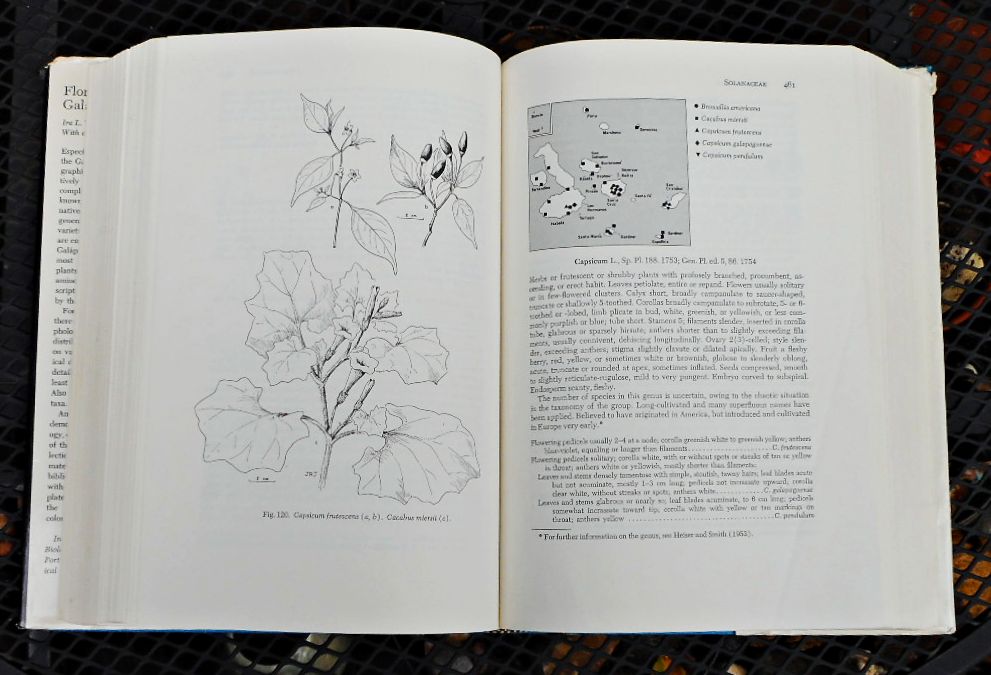
Flora Silvestre de Chile: Zona Austral
by Adriana Hoffmann
Adriana Hoffmann’s wonderful series of botanical books are classic field guides to Chilean flora and difficult to acquire outside Chilé. This volume covers the flora of the temperate southern regions of Chilé. Includes many of the fantastic species we’ve offered over the years and many we’ve only dreamed of growing. The glossy pages are copiously illustrated with gorgeous color paintings; hundreds of thorough descriptions; notes on distribution, ecology, and ethnobotany—in Spanish. This excellent reference volume is long out of print and nearly impossible to find! 1982 first edition softcover in very good condition, 260 pages.
1st edition book Softcover in very good condition $75 (2 lbs) SOLD
The Genus Echinocereus (Kew Magazine Monograph)
by Nigel P. Taylor
A botanical and cultural guide to the hedgehog cactus genus, including a full taxonomic revision with a key to and descriptions of the 44 accepted species. Illustrated with 12 color plates and numerous black & white drawings. 160 pages. 1985 first edition, dust jacket shows some minor wear to the edges, otherwise the book is in very good condition. Interior board signed by the late, great ethnobotanist Richard Felger.
1st edition Hardcover in very good condition $50 (2 lbs) SOLD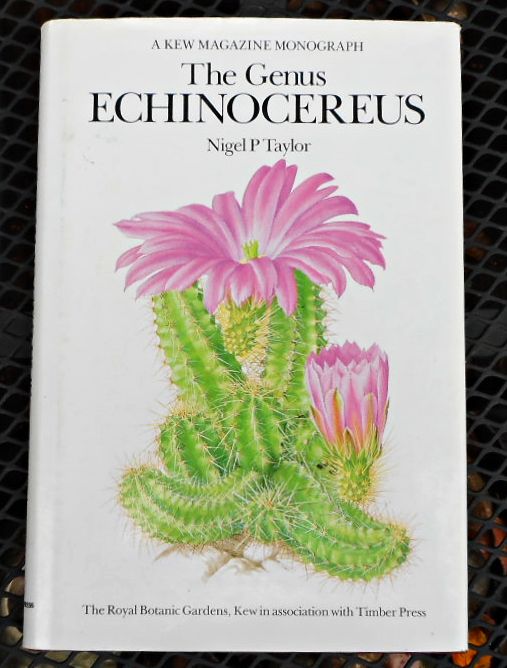
The Genus Encyclia In Mexico
by Robert L Dressler and Glenn E. Pollard
Rare book on the amazing Encylcia orchids of Mexico, a collector’s “must have”. Black and white illustrations and 24 color photos. Revised 1976 second edition with a limited print run of 2000 copies. Softcover in very good condition, minor shelf wear. 151 pages.
2nd limited edition Softcover in very good condition $40 (1 lb) SOLD
THE GENUS FEROCACTUS: Taxonomy and Ecology, Explorations in the USA and Mexico
by George Lindsay
A gorgeous limited edition volume printed in 1996. This colorful work contains a key to the species, distribution and ecology, propagation, new species, and more. Additional contributions by Larry Mitich and Frank Thrombley. Color illustrations by Thor M. Bock, Lucretia Breazeale Hamilton, Dallas Hanna, Sandra Reed, and Gerhard Marx. 187 illustrations (40+ color photographs), 9 maps. Color pictorial cloth, pictorial endpapers. 444 pages. A rare and utterly awesome collector’s item!
1st edition Hardcover in like new condition $195 (2 lbs) 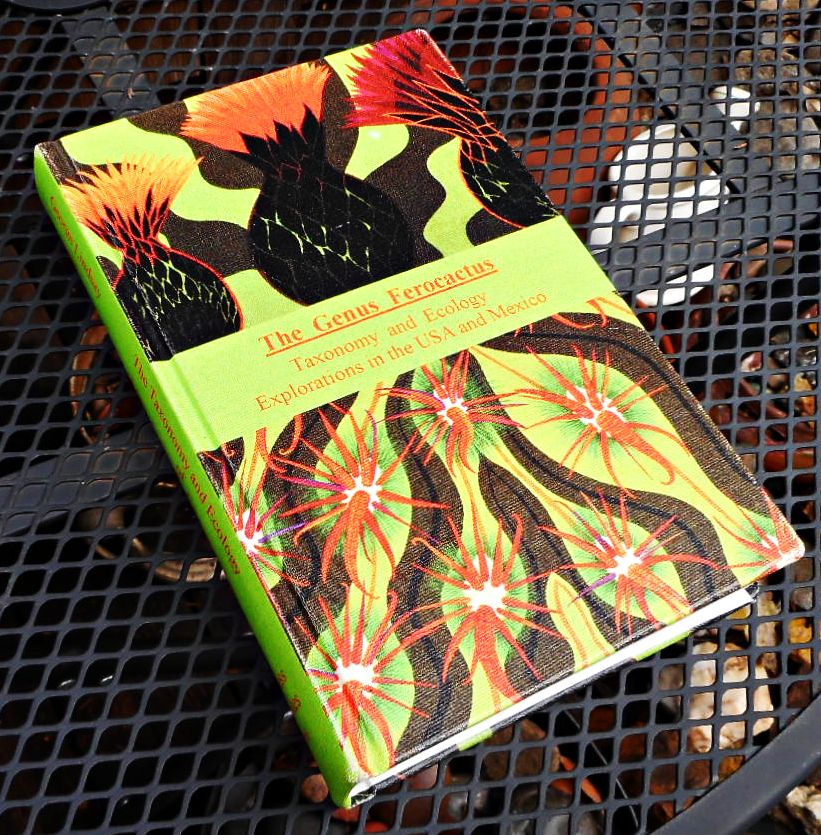
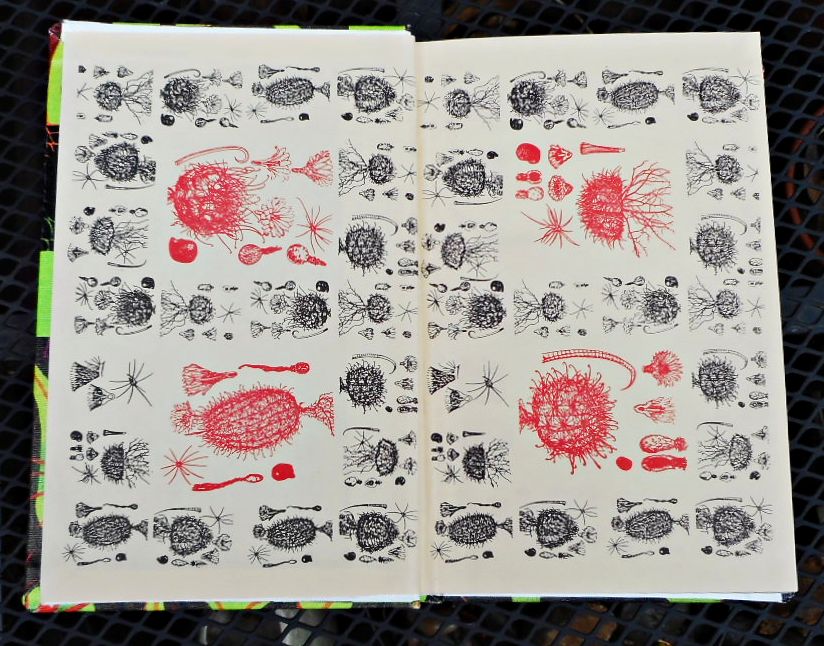
Guia de Arboles de Bolivia
edited by Timothy Killeen, Emilia Garcia, and Stephen Beck
We’ve made extensive use of this excellent and thorough guide to the trees of Bolivia. The keys are in easily referenced Spanish. Gorgeous black & white line drawings and handy maps. 958 pages. A well handled, 1993 first edition hardcover copy in relatively good condition. The book has some mild moisture damage but the pages are clean and readable. The dust jacket is intact but worn with rubs, creases, and some tears. An excellent working copy of this hard to find and long out of print book.
1st edition Hardcover in good condition $60 SOLD
HASELTONIA: Yearbook of the Cactus & Succulent Society of America, Number 1–7 (1993–2000)
+ 1975 Yearbook Cactus & Succulent Society Journal [an early version of Haseltonia]
Each softcover volume is 100–150 glossy pages of fascinating scientific articles [email for article list] with black & white and color photos/illustrations. Excellent and essential reference material for the cactus & succulent afficionado. A little shelf wear, but otherwise in good to very good condition.
Set of all 8 volumes $250 (6 lbs) Sale! $225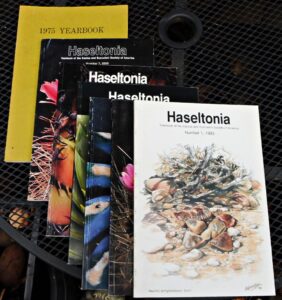
THE ORCHIDS: A Scientific Survey
edited by Carl L Withner
A thorough and extensive work on Orchidaceae. 1959 first edition hardcover, bound in blue cloth with gilt lettering. Numerous black & white illustration. A classic work that is essential for the orchid lover. Shelf wear, but in otherwise very good condition. 662 pages. Interior board signed by the late, great ethnobotanist Richard Felger.
1st edition Hardcover in very good condition $50 (3 lbs)
The Pacatnamu Papers, Volume 1
edited by Christopher B. Donnan & Guillermo A. Cock
This volume presents the results of the first three years (1983-1985) of a five-year excavation at Pacatnamu, north Peru, combining archaeological excavation with physical anthropology, botany, zoology, textile analysis, ethnography, and ethnohistory. Focuses on the period of Lambayeque occupation. A very cool book with copious black & white illustrations and a handful of color photos. Comes with a fold-out map insert. Bilingual in English and Spanish. 192 pages. First edition softcover with some shelf wear and minor dings but overall in very good condition.
1st edition Softcover in very good condition $20 (2 lbs)
PIHKAL: Phenethylamines I Have Known and Loved
by Alexander & Ann Shulgin
A rare collector’s item. We have a few copies of the original deluxe hardcover slipcased edition of this monumental work by the late Dr. Shulgin and his wife Ann. Originally printed as only 300 signed copies, these are unsigned copies of which only a handful exist!
[ 3 ]→ 1 ~ Copy, deluxe slipcased Hardcover edition $115 (3 lbs) 
Plant Hunters in the Andes
by Thomas Harper Goodspeed,
After 8 decades this book remains one of the most enjoyable and informative texts on Andean plant exploration. 1941 first edition hardcover bound in red cloth, very good condition minus dustjacket. Numerous black & white photos, map endpapers, 454 pages.
1st edition Hardcover in very good condition $150 SOLD
The Pollination Biology of North American Orchids: Volumes 1 & 2
by Charles L. Argue
A must have for serious orchid collectors and connoisseurs! Recent studies have revealed remarkable complexity and diversity in orchid-pollinator relationships. These studies comprise a vast literature currently scattered in numerous, often obscure, journals and books. The Pollination Biology of North American Orchids brings together, for the first time, a comprehensive treatment of this information for all native and introduced North American orchids found north of Mexico and Florida. It provides detailed information on genetic compatibility, breeding systems, pollinators, pollination mechanisms, fruiting success, and limiting factors for each species. Distribution, habitat, and floral morphology are also summarized. In addition, detailed line drawings emphasize orchid reproductive organs and their adaptation to known pollinators. Hard to find, nearly new, 2012 first edition 2 volume set — often goes for over $400. Volume 1 is 240 pages, vol. 2 is 211 pages.
2 volume set; 1st edition Hardcovers in like new condition $245 (3 lbs) Sale! $199 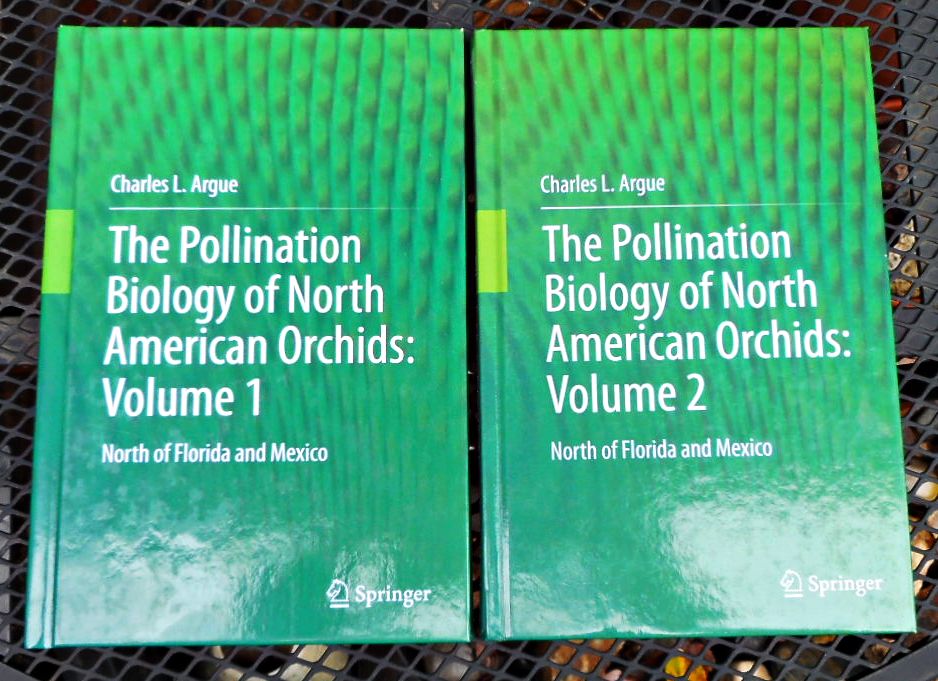
_____
Little, Big
by John Crowley
We’ve assisted the publication of a new archival, art book edition of our friend John Crowley’s beloved novel Little, Big. Winner of the World Fantasy Award when it was first published in 1981, the novel is esteemed by a broad diversity of fans — from Yale literary critic Harold Bloom to ethnobotanist Kat Harrison, from musician Maynard James Keenan to acclaimed storyteller Ursula K. LeGuin, from fantasist Neil Gaiman to counterculture historian Erik Davis and psychedelic philosopher Terence McKenna. For many readers Little, Big is more than a novel, it is an enchantment, an alchemical engine of the imagination. Publishing this unique, collectible edition has been a 20 year saga! The gorgeous hardcover edition is finally available, but with a limited print run it’s expected to sell out soon. A wonderful gift and worthy investment — order a copy while you still can!
The book can be purchased through: https://store.deepvellum.org/products/little-big
Shipping & Handling for Books
To determine shipping costs, add up the number of lbs in parentheses ( ) that is listed after the price.
Priority Mail– add $10 for up to the first lb, $2 for each additional lb.
When ordered to be shipped together with plants – just add $2 for each lb
Books only sent Media Mail – add $5 for up to the first lb, $1 for each additional lb
Please email us for international shipping costs:
sacredsucculents@hushmail.com or benkamm@monitor.net
BOTANICAL PRODUCTS
Note: These are all custom batch, limited offerings,
once sold-out it is unlikely they will be available again!
BALSAM OF PERU Myroxylum toluifera balsamum
Dried balsamy tree resin from Columbia. The common name comes form the 17th century when the resin was sent to Peru for export to Europe. Also known as “Balsam of Tolu”. Trees must be 20 years old before they can be tapped for the resin. It has a rich, earthy, balsam and vanilla-like fragrance. It makes a wondrous incense and enthralling body scent. Traditionally used for skin disease, wound healing, fungal infections, coughs and lung ailments, colds, and rheumatism. It has clearly documented antibacterial, antiseptic and antiparasitical actions. We have a small, limited quantity of dried chunks of the pure tree resin. Final offering of this exceptional resin!
[ 6 ]→ 2 ~ 10 grams Balsam of Peru pieces $10 each
[ 2 ]→ 1 ~ 50 grams Balsam of Peru pieces $42
COPAL BLANCO Bursera sp. “White Copal”
The light colored dried resin of this wildcrafted sap from central Mexico is one of the most highly valued Copals. This “Food of the Gods” can be burned as a delightfully sweet incense, for purification or as a holy offering. Strongly antiseptic. This is the highest quality Copal Blanco, not to be confused with the “White Copal” from Indonesia. Some years back we were able to procure a small supply, which quickly sold out — we set aside a small amount which we offer now. This is the last time we are a likely to ever offer this amazing Copal!
[ 6 ]→ 1 ~ 5 grams Copal Blanco resin $12
GOLD ROOT Heliopsis longipes
Composite endemic to the mountains of central Mexico up to 8,000’. The fleshy lateral roots produce a very intense tingling sensation in the lips and mouth when chewed, much stronger than Echinacea or Spilanthes which have similar properties. Traditionally used for toothache (very effective!) and oral health. Rich in alkamides with impressive analgesic, antiinflammatory, antibacterial, antifungal, insecticidal and immune boosting effects. Demand for its insecticidal activity nearly lead to its extinction during World War 2. The pleasant tingling effect from the chewed root can be transferred to other areas of the body and has been used as topical anesthetic and for interesting erotic purposes. Wildcrafted in Mexico.
[ 10 ]→ 5 ~ Packets of dried roots $5 each (count as a seed packet for shipping)
[ 5 ]→ 2 ~ Large packets [=5 regular packets] $20 each
Limited bulk offer – Normally only available in very tiny amounts, here is your chance to stock up!
[ 4 ]→ 2 ~ 1 oz dried roots $48 each
MUNA ESSENTIAL OIL Minthostachys andina or setosa
One of the signature scents of the Andes comes from this mint relative. This lovely plant is sometimes used as a flavoring in soups and is a popular digestive aid, nervine, cold remedy and antiparasitical. Also reported as an aphrodisiac. The essential oil is best used externally and is said to help with altitude, skin fungus, sore muscles; to repel insects and to “cleanse negativity”. Steam distilled in small batches by a friend in Peru. Very limited stock, when we’re sold out, that’s it!
[ 8 ]→ 2 ~ 1/8 oz bottle $10 each (1 oz for shipping)
[ 6 ]→ 1 ~ 1/2 oz bottle $30 (4 oz for shipping)
[ 4 ]→ 1 ~ 1 oz bottle $50 each (6 oz for shipping)
[ 2 ]→ 1 ~ 2 oz bottle $86 each (1 lb for shipping) SOLD
Natural Products Shipping & Handling:
Up to 8 ounces $6
9 ounces to 1 pound $10
then $2 each additional pound
$2 per pound when ordered with plants.
Under 6 ounces ordered with plants = free product shipping
Please email us for international shipping costs:
sacredsucculents@hushmail.com or benkamm@monitor.net
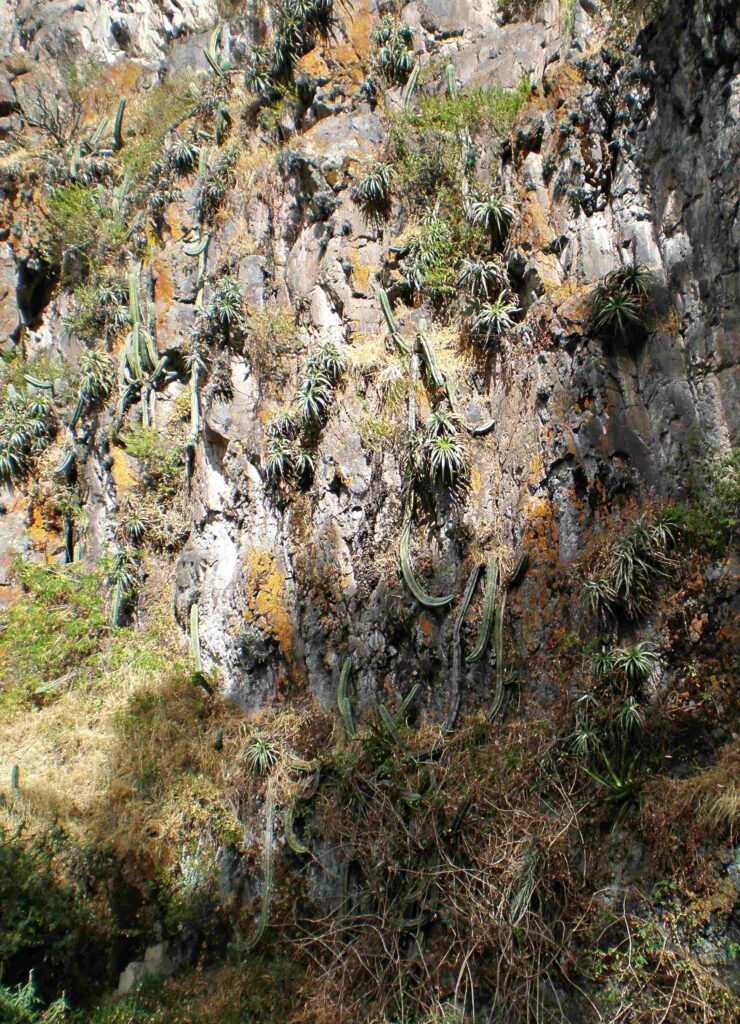 ⇑ Trichocereus peruvianus and Puya, above Matucana, Huarochiri Prov., Lima Dept., Peru
⇑ Trichocereus peruvianus and Puya, above Matucana, Huarochiri Prov., Lima Dept., Peru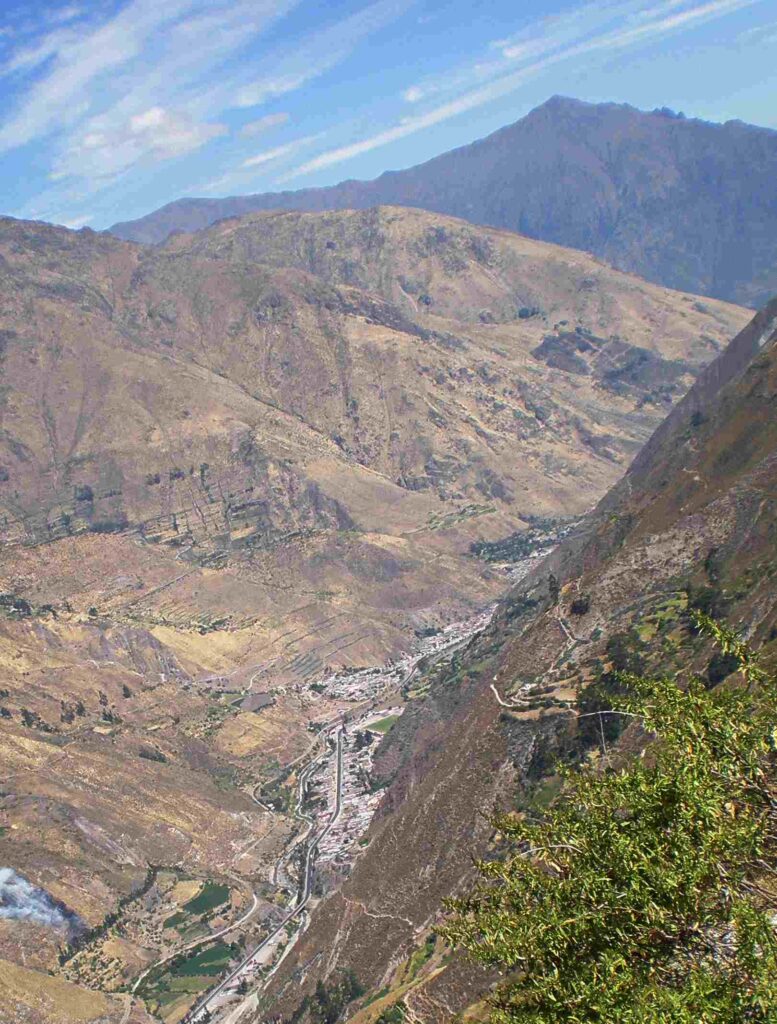 ⇑ Looking down on the town of Matucana, Huarochiri Prov., Lima Dept., Peru
⇑ Looking down on the town of Matucana, Huarochiri Prov., Lima Dept., Peru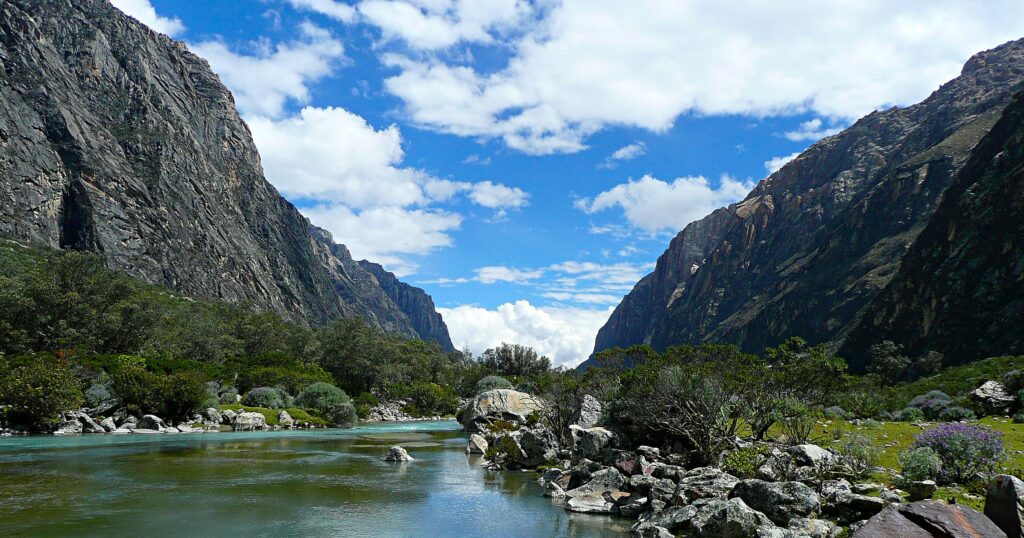 ⇑ Orconcocha & Polylepis weberbaueri forest, Lagunas de Llanganuco, Cordillera Blanca, Ancash, Peru
⇑ Orconcocha & Polylepis weberbaueri forest, Lagunas de Llanganuco, Cordillera Blanca, Ancash, Peru
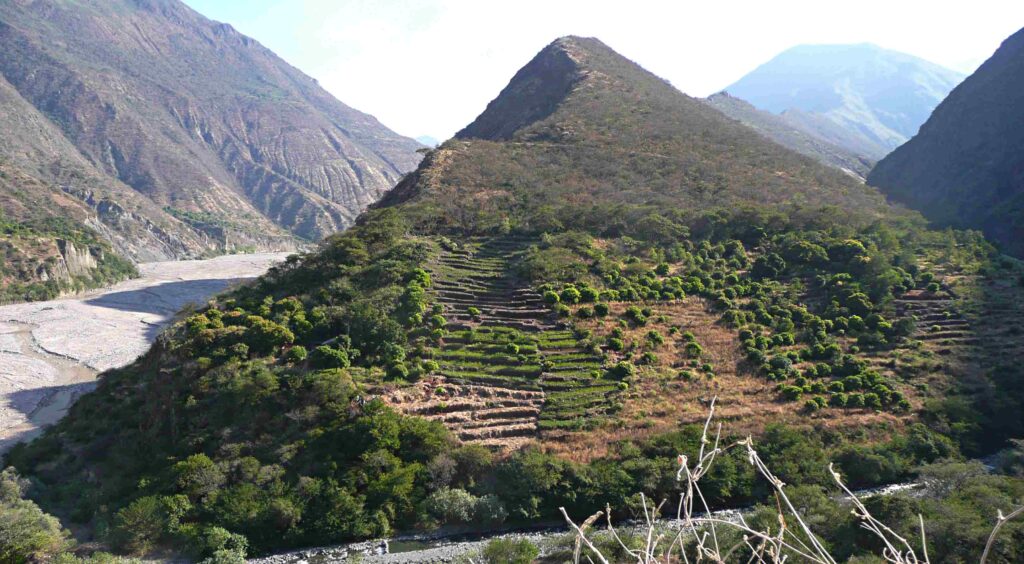 ⇑ Anadenanthera dry-forest and ancient terracing still in use, Pasto Grande, Yungas, Bolivia
⇑ Anadenanthera dry-forest and ancient terracing still in use, Pasto Grande, Yungas, Bolivia
_______
You should check out our compadre Neil Logan’s work with Regenerative Agroforestry Systems: https://www.agroforestry.com/press-release
Our compadre Neil Logan, ethnobotanist and agroforester extraordinare, has helped develop a highly useful free online platform Agroforestry Design Tool™ (see www.AgroforestryX.com ) With roots in the indigenous agricultural systems of Pacific Islands and tropical world, the Agroforestry Design Tool™ helps you to customize an agroforest for a particular site and goals in an easy-to-follow framework. This tool also has untapped potential for use in other biomes and for restoration design, contact Neil to discuss possibilities: farmcenter2015@gmail.com
~~~~
♥ Our deepest gratitude for your support! ♥
♥
Sacred Succulents
P.O. Box 781, Sebastopol, CA 95473 USA
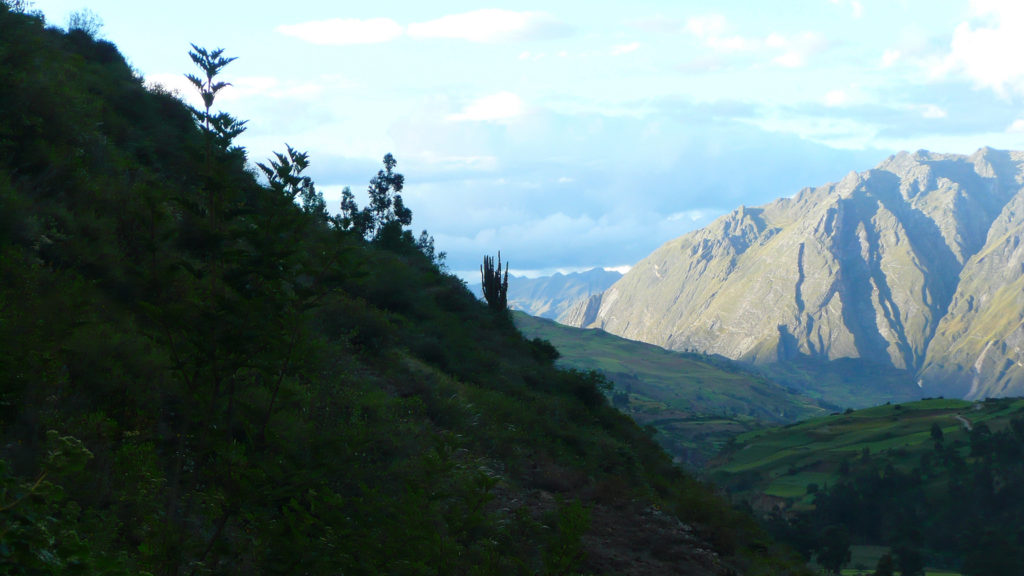 Above Chavin de Huantar, Ancash, Peru
Above Chavin de Huantar, Ancash, Peru
((((((((( Plant seeds. Plant lots of seeds. Plant them without fear. Plant them with love. )))))))))
♣
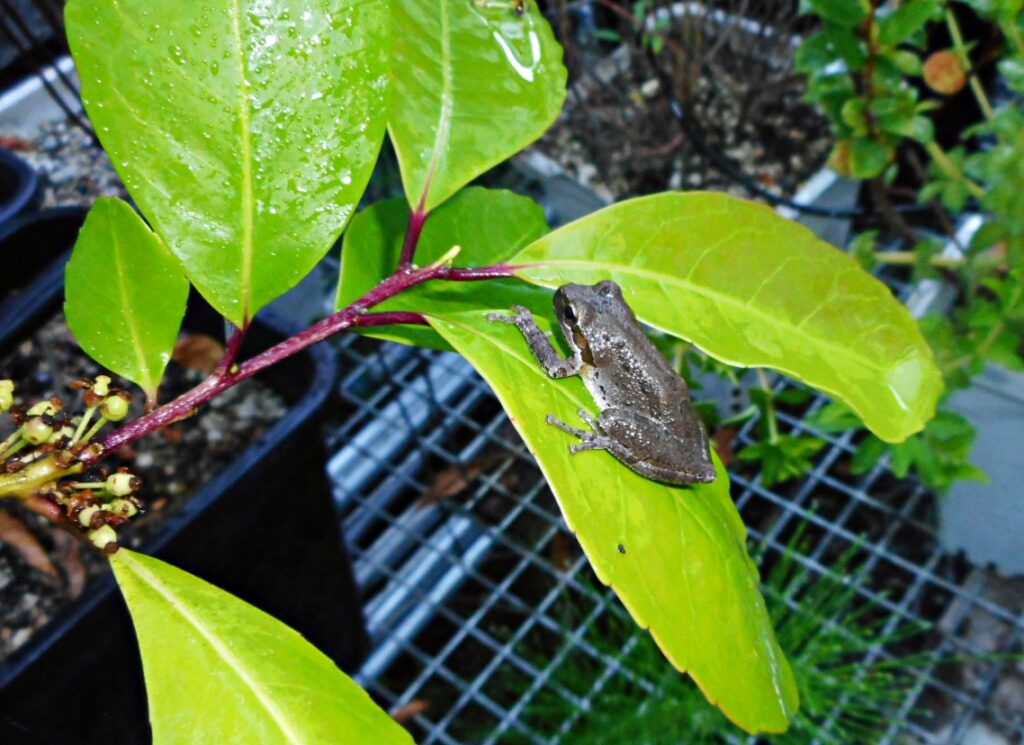
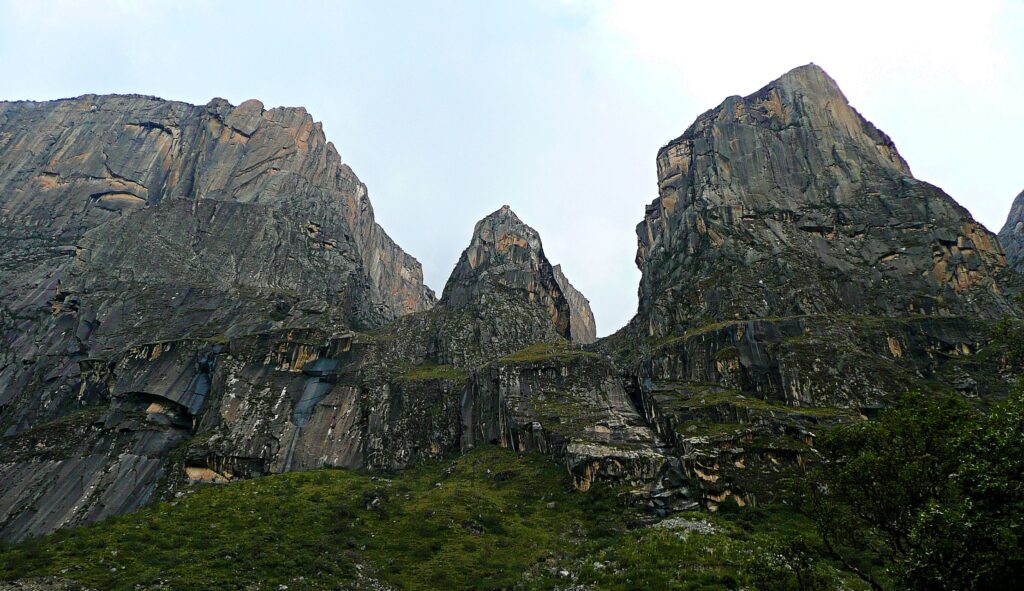
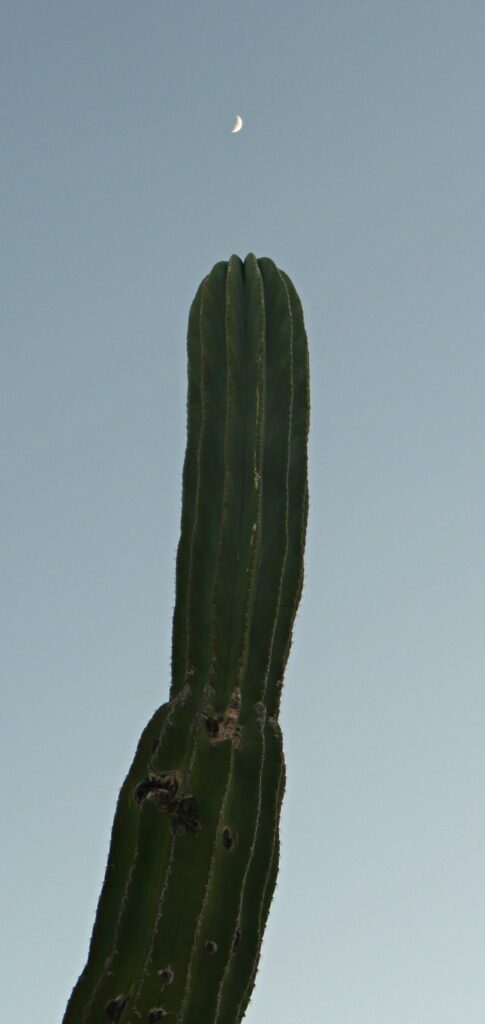
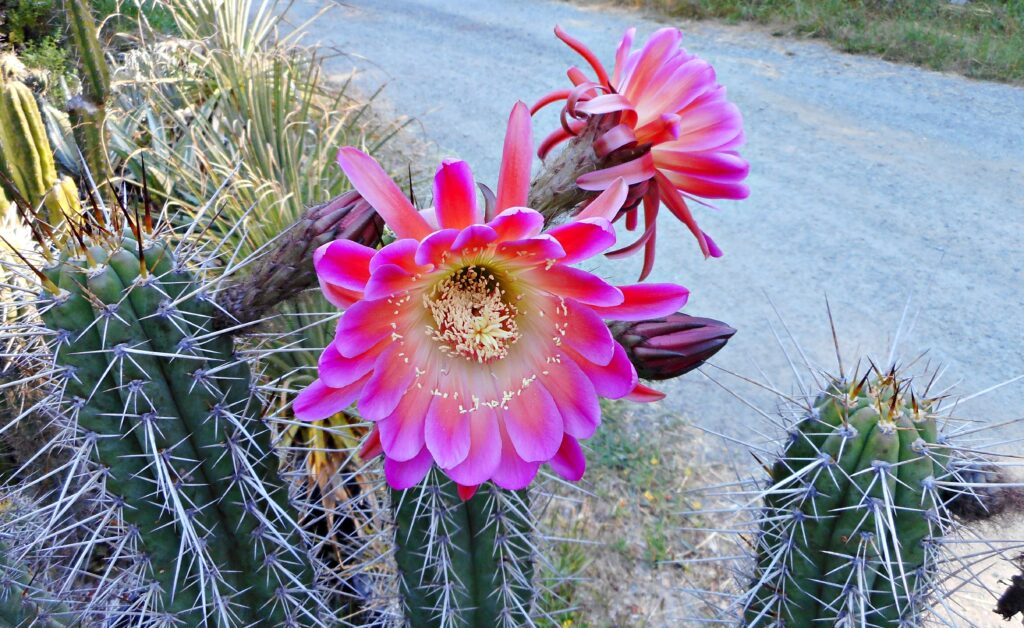
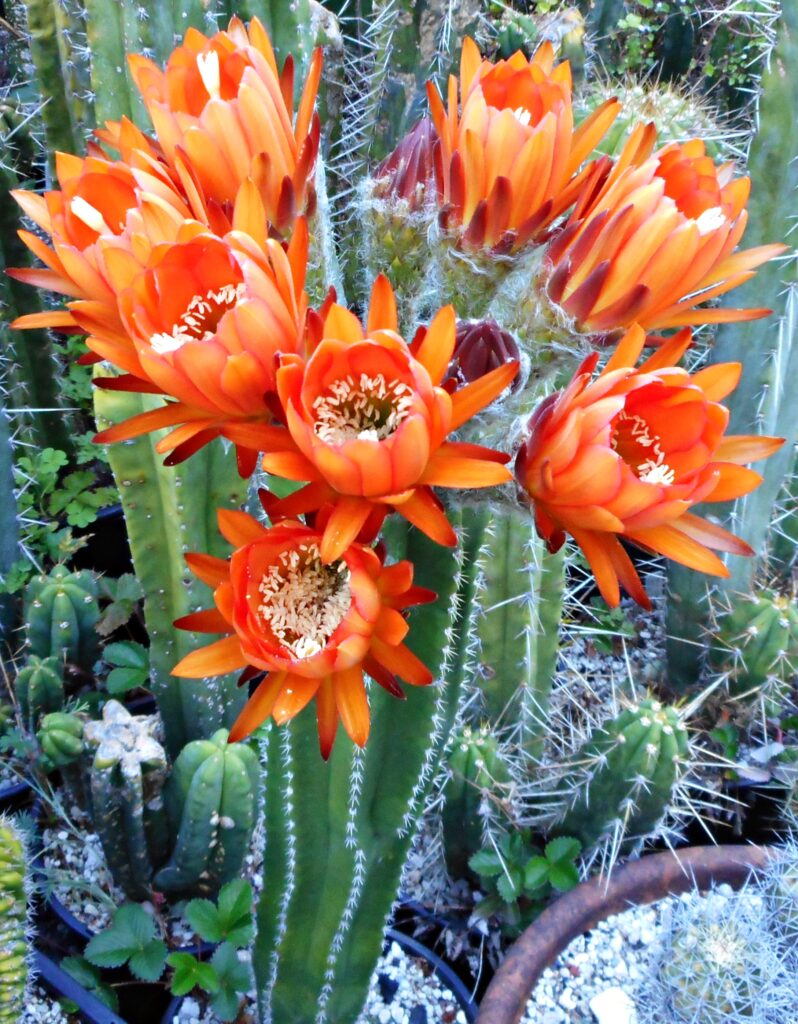
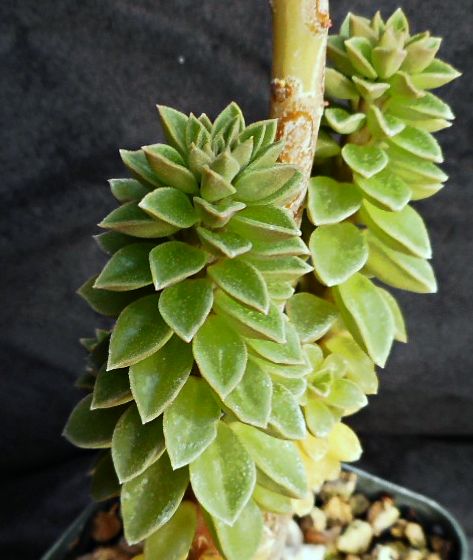
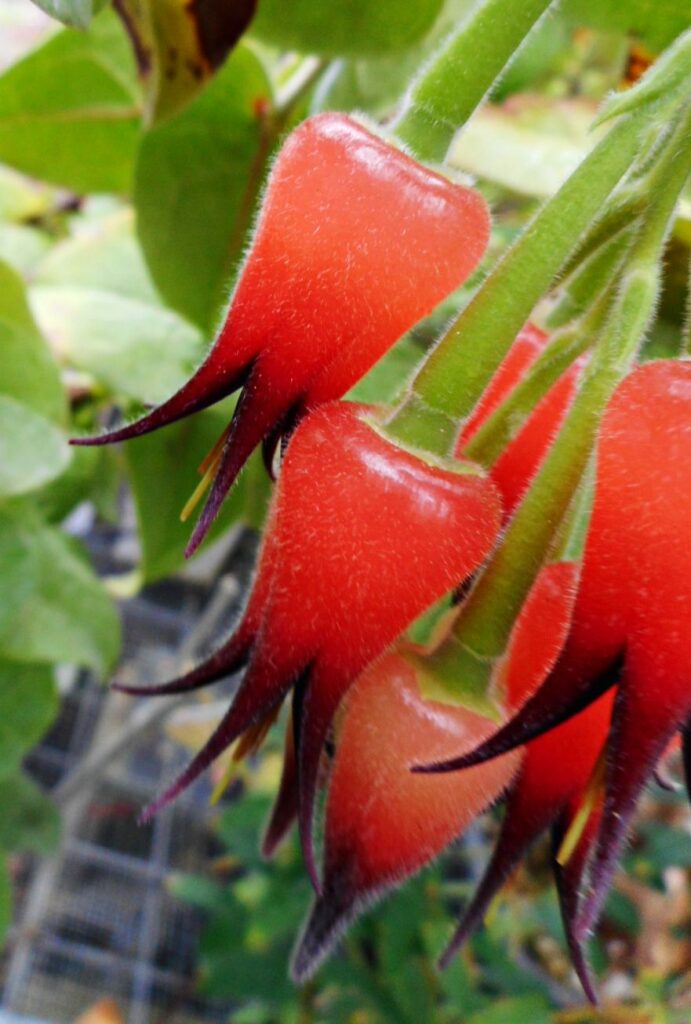
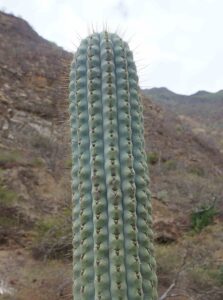
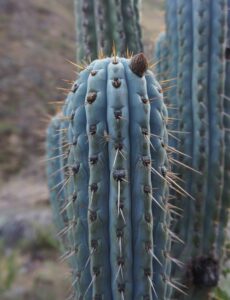
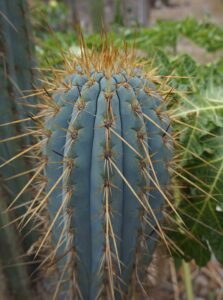 Plants in habitat
Plants in habitat